
Home » Travel Guides » Iran » 15 Best Places to Visit in Iran

15 Best Places to Visit in Iran
Iran might not seem like your usual tourist destination, and it’s certainly true that theocratic juntas, a fervor for all things nuclear, and tales of autocratic shahs from decades gone by don’t make for the most enticing of travel cocktails. But Iran isn’t like most Middle Eastern countries.
Millennia of rising and falling civilizations – the Persians, the Parthians, the Safavids – have all gone before the modern nation, and their glory and richness have done something to instill today’s country with a pride and stability that’s the envy of many neighbors (even if they won’t admit it). Today, that means Iran is hurtling headlong into the future whilst still clinging steadfastly to its dazzling past – it’s a curious dichotomy that really informs the whole place.
You can flit between boho coffee shops and avant-garde art galleries in Tehran, or seek out majestic madrassahs in cities like Esfahan and Yazd. You can carve the pistes at Dizin or trace the footsteps of Xerxes and Darius at Persepolis.
Lets explore the best places to visit in Iran :

Gilded with the riches of more kings and sultans and Muslim caliphs than you can shake a cobalt-blue ceramic pot from a Zagros Mountain village at, the glorious city of Esfahan is unquestionably one of the most beautiful in all of Iran.
Its heart is dominated by the colossal Naqsh-e Jahan Square; a UNESCO World Heritage Site that’s ringed by ceramic-fronted mosques and gorgeous Safavid palaces.
Elsewhere and babbling fountains give way to tree-dotted avenues, legendary madrassahs pop up on the streets, and arabesque souks burst with multi-coloured stacks of spices and tassel-fringed carpets from the east.
In short: Esfahan is the Iran you really have to see.

Eulogized and eulogized over and over again by romantic poets and travelers, and revered as the birthplace of the great Persian wordsmiths Hafez and Sa’di, Shiraz is a city steeped in heritage and culture.
Visitors will be able to spot the great tombs of those writers nestled between the palm-dotted, flower-sprouting gardens of Afif abad and Eram, along with the intricate arabesque interiors of the Nasir al-Mulk Mosque and the 1,000-year-old Qor’an Gate.
Rather surprisingly, the town also lends its name to a popular strain of wine, and, despite the cascading vineyards of the Fars Province long since having dried up, it’s thought that some of the world’s earliest white tipples were produced here nearly seven millennia ago!

One’s thing’s for sure: Tehran certainly isn’t a looker like Shiraz or Esfahan.
Apart from the rugged wall of snow-tipped Alborz Mountains that rise like a phalanx on the northern edge of town, the place is largely dominated by concrete and packed with smog-creating traffic jams aplenty.
However, like it or loathe it, this sprawling metropolis is the epicentre of the country’s politics and economy, and that surely counts for something, right? Well, a lot actually.
Great monuments like the Azadi Tower have been raised here, while the glimmering wonders of the Treasury of the National Jewels and the mummified princes of the National Museum of Iran are just some of the awesome relics to see.
Add to that a clutch of stylish teahouses and coffee shops, frantic bazaars and youthful student energy, and Tehran really isn’t all that bad!

Perched nearly 3,000 meters up in the snowy heights of the Alborz Mountains, where the European Caucuses crash into the Asian ranges, the small hill station of Dizin has firmly established itself as one of Iran’s top winter sports destinations.
With a clutch of good groomed pistes ranging from moderate difficulty to challenging runs, and a selection of cableways and chairlifts that were first installed in the 1960s, the soaring resort is one of the top places to don the skis and salopettes here.
There are also some alpine-style hotels, and awesome views of the cone of massive Mount Damavand in the distance.

The adobe warren of the Yazd old town is like something out of Arabian Nights.
Here and there, turrets gilded in intricate geometric designs loft above the mosque domes; the scents of incense and mint tea twist and turn from the cafes.
Meanwhile, the middle of the city is dominated by mysterious Zoroastrian fire temples and the spiked minarets of the Shia hussainia that is the Amir Chakhmakh complex.
And then there are the souks, where dust devils twirl between the cotton and silk emporiums, and shisha pipes puff in the background.
Yep, it’s precisely the sort of place you’d expect to trace the footsteps of one Marco Polo!
6. Persepolis

Great kings by the name of Cyrus, Darius and Xerxes all set foot between the sun-scorched streets of Persepolis once upon a time, for it was here, amidst the arid erstwhile vineyards of Shiraz and the babbling Pulvar River, that the mighty Persian Empire made its home from the 5th century to the 3rd century BC. Today, only traces of this once feared power in the east remain, with a clutch of looming marble columns and a couple of stele all that’s left to mark the great compound out amongst the rising hills of Rahmet Mountain.
Travelers can immerse themselves in the history, and even see the tomb of the revered king Darius I.

With a history of more than 4,500 years, there’s evidence to show that Tabriz is one of the oldest continuously inhabited cities in the entire world.
That deep past now reveals itself in the layers of architectural majesty the place is known for, at spots like the colossal Blue Mosque of 1465, which comes gutted with shimmering ceramics of a deep cobalt blue.
Another real must see is the sprawling Bazaar of Tabriz, which is known as one of the great trading outposts of the old Silk Road.
Today, the vaulted ceilings and alcoves of this ancient merchant centre still burst with shimmering gold jewellery and blood-red carpets, sweet-smelling Turkic pastries and oodles of spice from the east.

Mashhad is hallowed ground for many Iranians. It houses the revered tomb of the eighth Imam of Shia Islam: Ali al-Ridha (or Imam Reza). It’s a seriously holy place, and is appropriately marked by the colossal Imam Reza shrine, which sprawls over nearly 600,000 square meters in the middle of the city; a glimmering mass of gold-clad minarets that go over 30 meters into the ski and great domes inlayed with precious metal (it’s definitely one of the country’s most breath-taking pieces of architecture).
Away from that must-see and Mashhad also has clean streets and curious sculpture art, not to mention some saffron-infused curries that are sure to set the taste buds a-tingling!

For Iranians, Rasht represents the gateway to the Shomal – a region of verdant hills and high rainfall that’s really unlike anywhere else in the country.
The unique climactic conditions of the high ridges that surround the town are made possible by its enviable location on the edge of the Caspian Sea, which also happens to imbue it was an array of other curious attractions.
We’re talking about the USSR-themed relics relating to the Soviet sympathiser Mirza Kouchak, and the leafy European-style facades of the Shahrdari in the center.
However, it’s trips out to see the gorgeous Golestan National Park, where the misty forests house Persian leopards, that usually come up trumps!

Encompassed by the sweeping deserts of the Iranian south, the old trading outpost of Kerman still clings to the bustling mercantile character it has had since the days when major trading routes between Arabia and India passed this way.
Check out the sprawling bazaar in the heart of the city, where five spice mixes with chilli and coriander powder between the vaulted emporiums.
There are also earthy Turkic hamams to bathe in, and a warren of mud-brick streets to wander.
And once the city’s done and dusted, be sure to strap on the boots and go intrepid into the ochre-hued hills of greater Kerman Province.

Kashan sprouts from the deserts of northern Iran midway between Esfahan and the capital at Tehran.
An oasis town, it’s packed with blooming pockets of date palms and green gardens that are fed with babbling irrigation streams.
The buildings are distinctly adobe and brown though, except – of course – for the elegant mansions of the Tabatabaie Residence, the Ameri House and the domes of Aqabozorg.
These are remnants of the Qajari royals, who came here and raised magnificent residential structures in the 18th and 19th centuries.
There’s also a throbbing bazaar and beautiful views of the mountains on the horizon.

Just 19 kilometres south of Iran’s coast, in the sparkling waters of the Persian Gulf, more than one million people discover the island of Kish each year.
They come to wallow in a place that’s quite unlike its mother country in many ways; a place where huge casinos converge on the palm-dotted gardens of opulent resort hotels.
However, there are two other attractions that ensure a steady stream of visitors on Kish: shopping and beaches.
The first of these comes with the duty-free malls that ring the main town, and the latter comes in the form of sparkling white sands, coral reefs, and awesome SCUBA diving to boot.
13. Hamadan

Forged by the Medes and the Assyrians, the Persians and the Parthians, this once great city might not be the legendary metropolis it was in antiquity, but it still comes steeped in all the culture you’d expect of a place with so many thousands of years of history behind it.
It’s perhaps most famed as the home of the Tomb of Avicenna, which chronicles and honors the life of arguably the most totemic scientific thinker in the Islamic world.
And there are other awesome sights to see too, like the Ali Sadr Cave, which is the largest in-cave lake on the planet, and the inscriptions of the Ganjnameh, made by the ancient Persian kings Darius and Xerxes.

Qom is considered one of Iran’s most holy cities.
It’s packed with soaring minaret spires and the turquoise-hued domes of totemic mosques (don’t miss the uber-handsome Ahlulbayt Mosque). One of the country’s cultural and religious centers, it’s also got some acclaimed madrassahs and draws massive crowds of pilgrims throughout the year.
Most come to wonder at the filigrees and pay their respects at the Shrine of Fatima-al-Massumeh, which is the resting place of the sister of the eighth Imam of Shia Islam.

Ramsar sits neatly sandwiched between the rugged rises of the Alborz Mountains and the lapping waters of the Caspian Sea.
It’s a truly enviable location; one that imbues this town of neo-classical hotel fronts and palm-peppered avenues with a wealth of good beaches and some seriously jaw-dropping panoramas of the hills that rise to form the Caucasian chains of Azerbaijan to the north.
The place has long been one of the top seaside retreats for Iranian luminaries, and continues to draw with its bubbling hot springs and fabled healing waters.
15 Best Places to Visit in Iran:

30 Incredible Things To Do In Iran: Highlights For The First Time Visitor
12 feb 2024 02 oct 2019 | dan & john.
It’s hard to know where to start when we’re asked about our favourite Iran highlights. The history here is older than human memory, the landscapes even more ancient, and the people are among the kindest we’ve ever met.
Iran is liberally scattered with places of outstanding cultural, historical, and architectural heritage that are world-renowned and UNESCO-recognised.
Prepare to be delighted by a people that are generous of heart, incredibly warm and welcoming, curious, and rightly proud of their long and epic story.
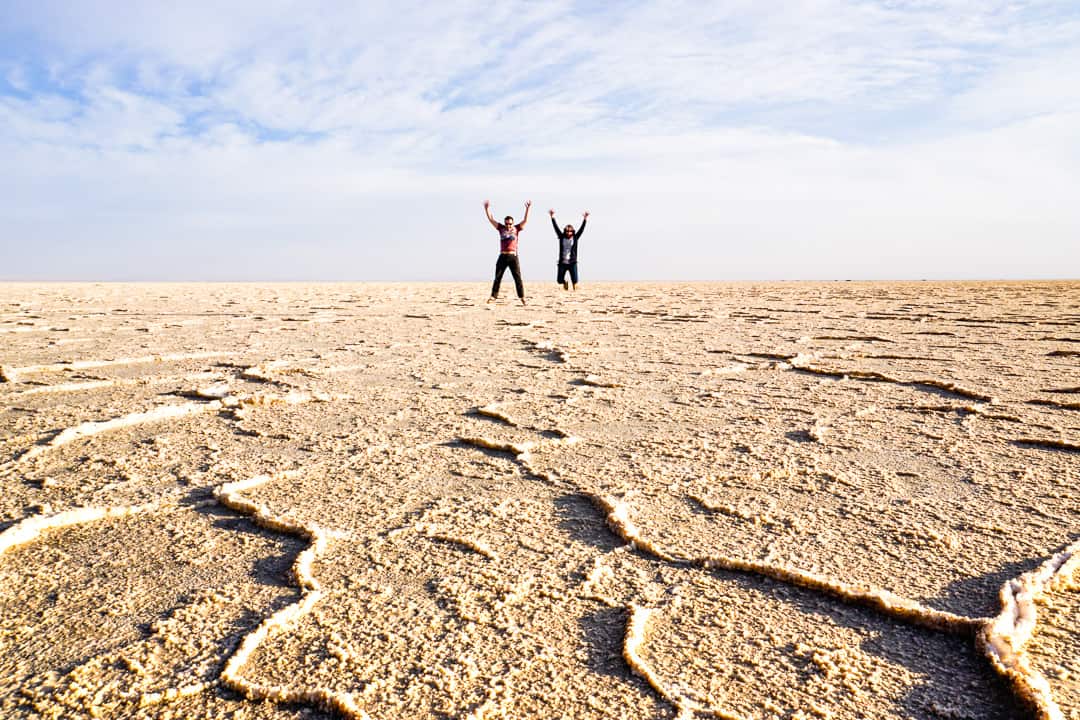
Iran is a country you discover as much through its beautiful architecture and bustling bazaars as you do through its breathtaking landscapes. A place where tea can take a whole afternoon, and where your preconceptions will be continually challenged and rewritten.
It’s a tall order to try and limit the list of things to do in Iran to a single post, but we’ve made a start here with our round up of 30 places from north, south, central, and western Iran that left an indelible mark.
Whether you plan to travel independently as we did, or you’re searching for an Iran tour, we hope you find our line-up of favourite spots a useful starting point for your own journey of discovery in this ancient, unforgettable land.
Highlights of Tehran
Golestan palace: explore a residence fit for kings.
Golestan Palace, former palatial residence of the royal Qajar dynasty, is without doubt one of the top things to do in Tehran. Wandering through one of the capital’s oldest and most iconic precincts is a perfect introduction to Iranian arts and architecture.
Located in central Tehran, this beautiful complex lives up to its UNESCO World Heritage billing. Built and restored over the centuries following the Qajar family’s rise to power in the late 1700s, Golestan serves up richly carved archways, ornate tile work, delicate lattice windows, and Persian art galleries set amidst tranquil gardens.
The complex includes a number of halls and pavilions. For us though, the stand-outs were the opulent Takht-e Marmar marble throne terrace, the dazzling mirror hall (no photos allowed, alas), and simply wandering the peaceful gardens with their vibrant, colourful tiled walls.
The nearest metro station to Golestan Palace is Panzdah Khordad and entry cost us around IRR300,000 each. It does close at certain times of the year. Check opening times and prices at the Golestan Palace website .
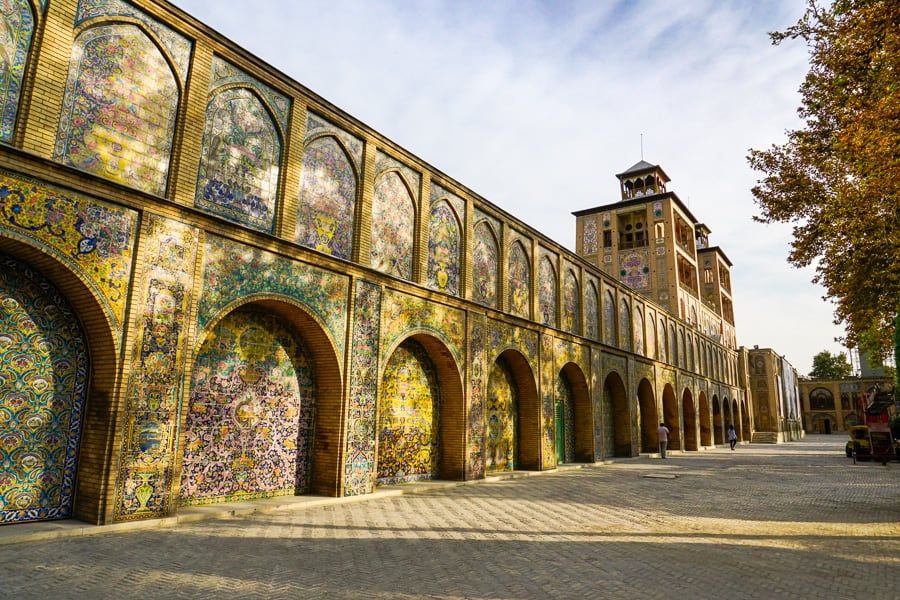
Imamzadeh Saleh Mosque – Mingle with Locals at this Popular Pilgrimage Site
It’s said that photogenic Imamzadeh Saleh is one of Tehran’s most attractive shrines. But it might just also be one of the friendliest.
We arrived here in time to watch the beautiful patterned turquoise tiles that cover the twin minarets and dome sparkling in the late afternoon sun, just as the marbled square in front of the mosque came to life with Tehrani families gathering to pray and meet friends.
With the imposing Alborz mountain range for a backdrop, this site is a real treat for photographers, especially as the sun sets and the mosque lights up. However it’s the friendly ambience of the complex that we’ll remember the most.
If you settle in to take in the surroundings, you’ll soon be a rewarded, as we were, with a trickle, and then a steady flow of lovely locals keen to say hello and find out what has drawn you to this beautiful sanctuary in the city’s north.
We highly recommend visiting Imamzadeh Saleh in the late afternoon and travelled there by metro to Tajrish station. Don’t miss the dazzling mirrored room. Ladies can borrow a chador at the entrance.
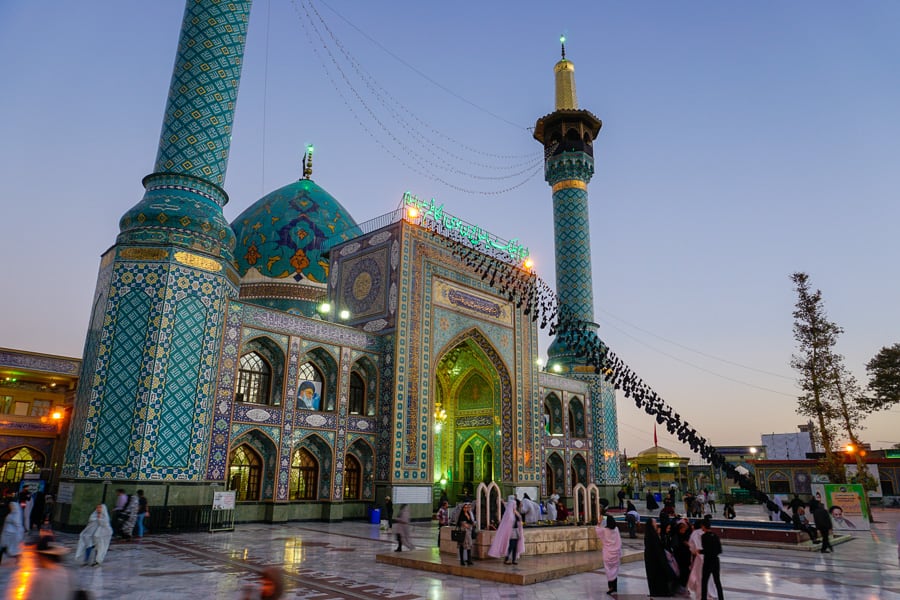
US Den of Espionage: Discover the Intrigue behind the former US Embassy
Anyone interested in US-Iran relations will be intrigued by a visit to the former US Embassy, site of the 1979-80 hostage crisis that lasted more than a year. While a visit might not be for everyone, the building, referred to locally as the US Den of Espionage, provides a window into what is claimed to be the apparatus of US spying activities in Iran.
For some, the free tour of the building might inspire memories of the film Argo. There’s an interesting collection of dated equipment, including encryption machines and shredders, while the colourful collection of murals will leave you in no uncertainty about sentiments surrounding the politics between the US and Iran.
As is often the case in Iran, our tour finished with tea and a chat with our hosts. As we found in many places on our Iran adventure, our discussions ranged broadly across life in Iran and outside, exploring our similarities and our differences.
Darvazeh Dowlat Metro Station is a short walk from the Den. Entry was around IRR200,000 each.
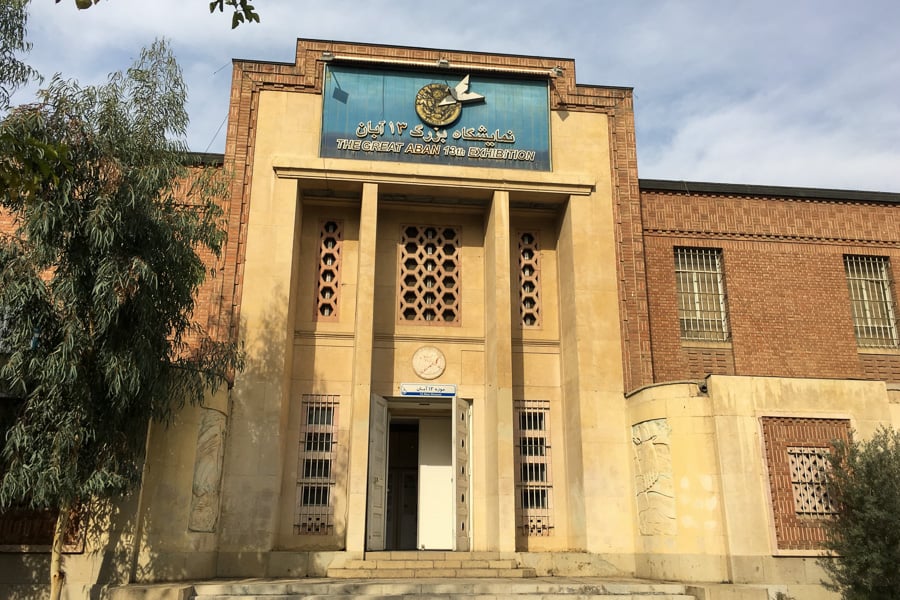
Azadi Tower – Modern Tribute to An Ancient Culture
If you’ve seen pics of Tehran, there’s a fairly strong chance you’ve seen Azadi Tower. It’s one of Iran’s most iconic landmarks, and it goes without saying that you can’t visit Iran without at least one selfie in front of its marble-clad span.
Azadi Tower is a modern ode to Iran’s ancient past: it was created to celebrate the 2,500th anniversary of the first Persian Empire. Impressive from afar, the monument is even more striking up close, with beautiful turquoise tiles decorating the spaces between the marble.
This was our very last stop before leaving Iran, and while we didn’t have a chance to go inside for a peek at the museum underground or to take in the view from the top, it was a perfect finale to our month in this amazing country.
Azadi Tower is quite close to the airport so it makes for an easy first or last stop when you tour Iran. There are a couple of metro stations nearby; Meyran-e Azadi is the closest. It’s free to see the Tower from the square but if you want to go inside, there’s a fee.
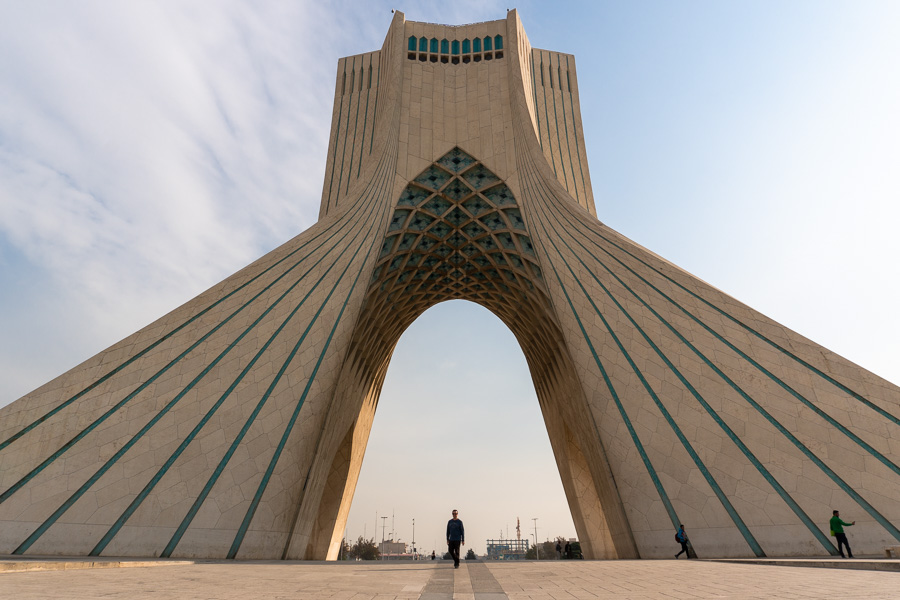
Tabiat Bridge: Perfect for Sunset Views Over Tehran
Nothing shows the contemporary face of Iran quite like Tabiat Bridge. Designed by a local architect Leila Araghian, the 270-metre structure is young, vibrant, and modern, just like many of those that wander its very cool spans.
Taking a sunset stroll along the bridge is a great way to get to know Iran’s capital. You’ll meet plenty of locals, both young and old, and have the opportunity to marvel at city skyline and mountain views, all the while being grateful you’re nowhere near the tangled Tehrani traffic jams below.
We’d highly recommend spending an hour or two here to catch the relaxed cosmopolitan vibe, before wandering back to Shahid Haqqani metro station via pretty Taleghani Park. On the way, be sure to keep an eye out for the prettily illuminated Khorramshahr Mosque, a particularly photogenic site once the sun goes down.
If you’re coming from Shahid Haqqani station, wander across Tabiat Bridge and through the collection of restaurants on the other side for a bite if the timing’s right. There’s a skate park down there too that’s worth a stop and a watch.
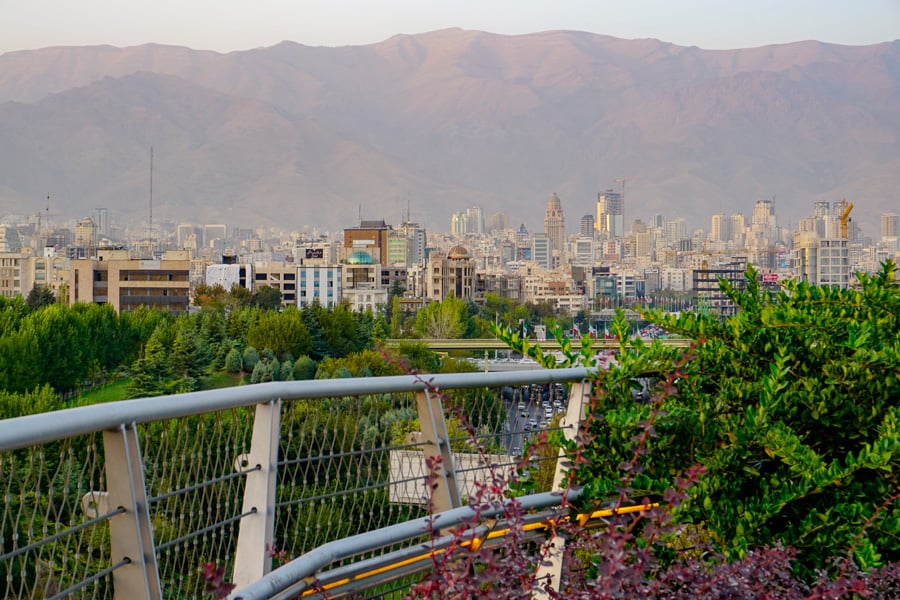
Northern Iran Highlights
Bazaar of tabriz – immerse in the world’s largest covered bazaar.
One of the absolute highlights of Iran, and another of the country’s many UNESCO sites, this thousand-year-old Silk Road bazaar is a joy to get lost in.
And get lost you will. With more than 5,500 shops and around seven kilometres of beautifully vaulted caravanserai, interconnected through a tangle of passageways, the Bazar-e Tabriz is the world’s largest covered marketplace. It’s also one of the oldest.
While it would probably take days to see the whole thing, we made do with wandering the colourful spice markets and taking in exquisite Persian carpets at the dedicated carpet trading section, the ‘mozaffareih’, with its beautiful patterned brick ceilings.
Tabriz Bazaar is in the heart of Tabriz in East Azrbaijan Province. It’s open from early till late every day but Friday.
Bonus Food Highlight: Keep an eye out near the entrance of Tabriz Bazaar for guys cooking up a local street food specialty called Yeralma Yumurta: it’s potato and egg mashed together with salt, pepper and butter and wrapped in lavosh. Sooooo good (and less than a dollar for a filling snack)!
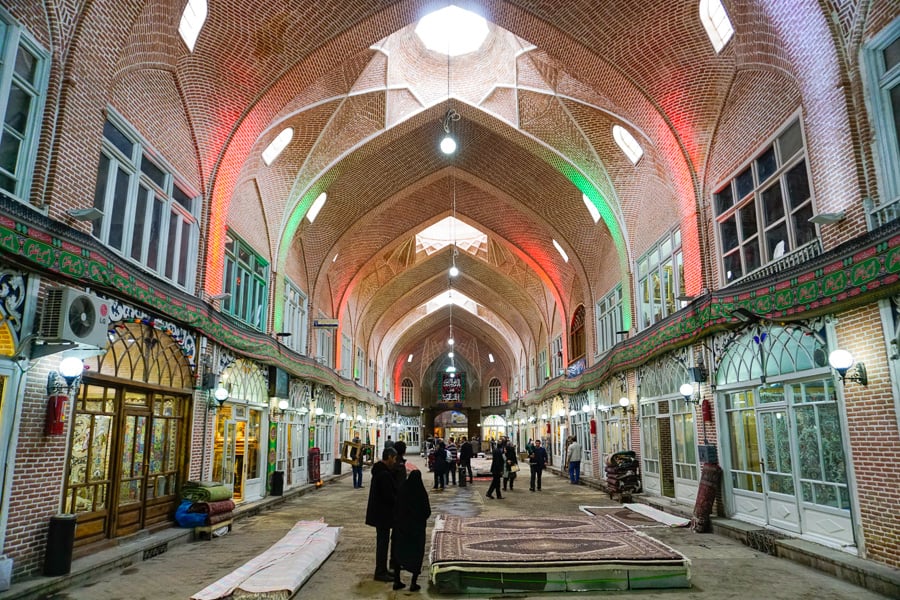
Blue Mosque, Tabriz: Glimpse A Past Splendour
We can only imagine how dazzling the Blue Mosque of Tabriz must have been in its heyday, before an 18th century earthquake devastated the intricate blue majolica tilework that once covered the building inside and out.
While ongoing restoration is in evidence, nature’s best efforts haven’t managed to snuff out the light of this 550-year-old work of art.
The tilework that remains is beautiful, and the peaceful ambience, not to mention the striking symmetry of the portico surrounding the mosque, make this a highlight of visiting Tabriz and a key stop on any Iran itinerary.
The Blue Mosque is also called the Goy Mosque and it’s near the centre of Tabriz, about a 20-minute walk from Tabriz Bazaar. It’s open every day and cost us IRR150,000 each for entry.
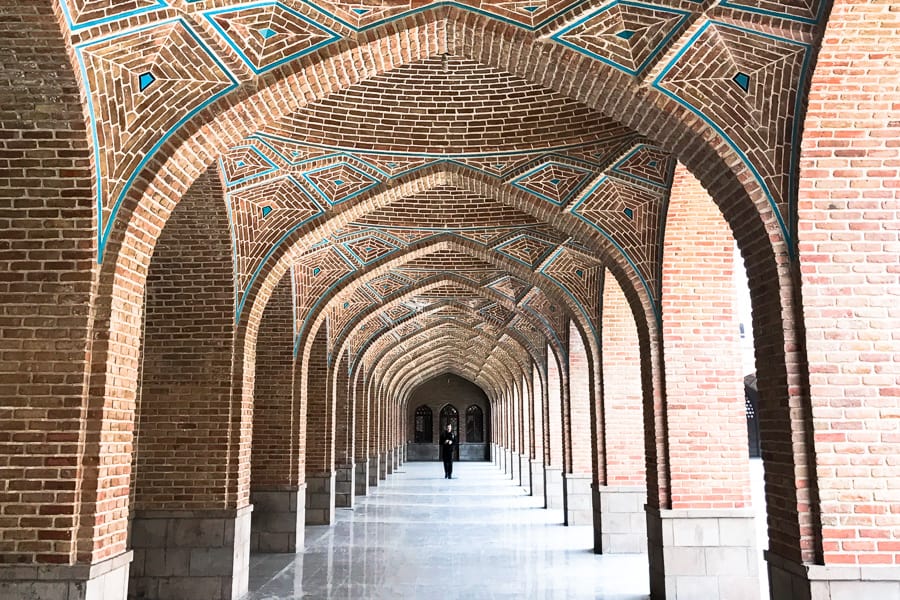
Kandovan – Wander A Village Of Cave Dwellings
If you’re staying in Tabriz for a couple of days, consider making the half-day trip to the quirky troglodyte village of Kandovan.
These strange cone houses in the foothills of Sahand, a sleeping volcano, are eroded remnants of violent eruptions in Sahand’s distant past. If you’ve been to Cappadoccia in Turkey, you’ll be familiar with the idea of chimney houses, but the similarities stop there and the two really can’t be compared.
Kandovan is definitely one of the more offbeat places to see in Iran. It’s intriguing though, and a wander through the streets is an opportunity to marvel at how people have managed to shape an ancient and otherworldly landscape of volcanic rock into a village of cozy homes complete with electricity and plumbing.
Unsurprisingly, Kandovan is a highly popular tourist destination so we made a point of timing our arrival for later in the day. While the tea houses in the new village below were closing for the day, we were able to enjoy a quiet meander without the masses, and were even invited to peek into the charming cave home of one family as we were passing by.
Kandovan is around 60km from Tabriz and took about an hour each way. We organised a taxi there and back through our accommodation, the cost of which included a couple of hours’ waiting time. There was also a car entry fee of IRR40,000 at the village.
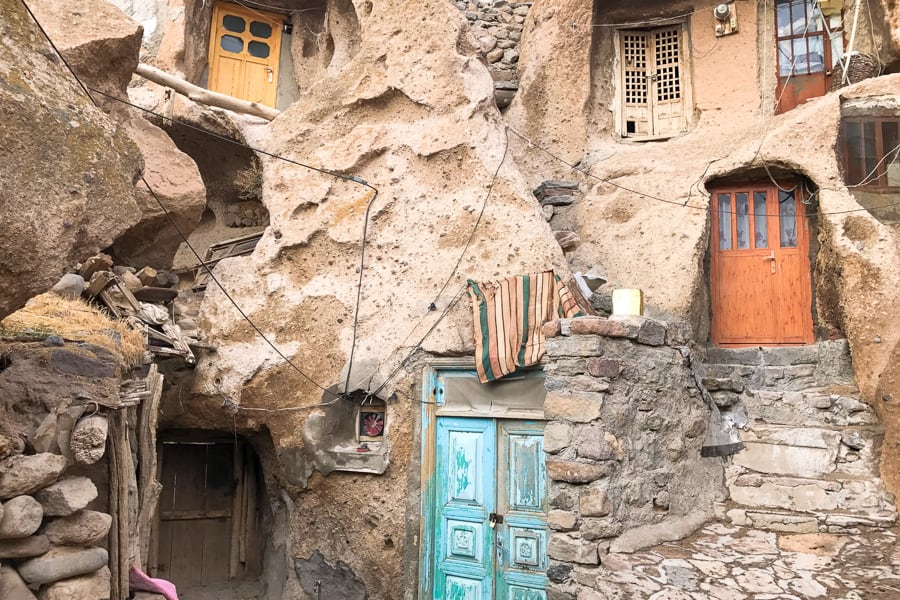
Masuleh: Where Crossing The Street Takes On A Whole New Meaning
Even on a rainswept day on the edge of winter, the village of Masuleh in northwestern Iran is a captivating sight. For over a thousand years this chaotic, multi-layered tangle of clay covered houses has been hugging the misty slopes of the Alborz mountains.
It’s probably the kind of town where you really do need to get along with your neighbours, given that that one person’s roof is their neighbours’ front yard, while also doubling as a thoroughfare through the village.
Blissfully car free, Masuleh is a great place to take in the mountain air, enjoy unique architecture, or to just stop for tea with the friendly locals while taking in the views.
We’ve heard the town can get a little congested during the peak summer months, which is probably why many people recommend staying overnight to hike the surrounding mountains, or to just enjoy the quiet mountain ambience once the tourists leave. Masuleh is definitely on our list of Iran highlights requiring a return visit and a longer stay.
We visited Masuleh as part of a day trip from Rasht, also taking in Rudkhan Castle. We organised a taxi there and back through our accommodation.
Bonus Food Highlight: If you have a chance, stop en route in Fuman and pick up some freshly baked Klucheh, a deliciously warming cookie filled with cinnamon and walnut. It’s found elsewhere in Iran but it’s a specialty here.
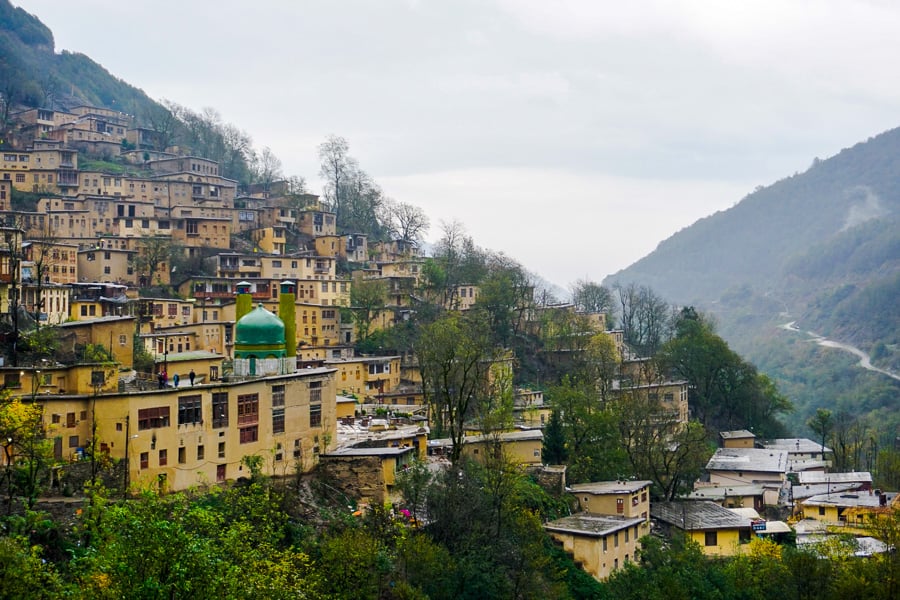
Qal’eh Rudkhan – Fortress In The Sky
Set aside the flat, parched Iranian desert landscapes you envisaged before your visit, because you might just find yourself thinking you’ve sidestepped into Europe as you hike into the chilly, lush green mountainscape surrounding Rudkhan Castle.
Guarding Iran’s Caspian Sea frontier against Arab invaders for more than a millennium, this haunting, well-preserved fortress is set high in the Alborz mountains. It remains an imposing sight today, with 1,500 metres of battlements and more than 40 towers.
On a wet day (and in winter) it’s a slippery hike up and down the mountain (Dan can attest to the fact after sliding right off the path and down a muddy slope), so be sure to wear decent footwear and take some time to enjoy the teahouses on the way.
Rudkhan Castle is about 90 minutes drive from Rasht. Enjoy a whole day exploring the area or combine it with a visit to Masuleh like we did. Entry to the trail was IRR150,000.
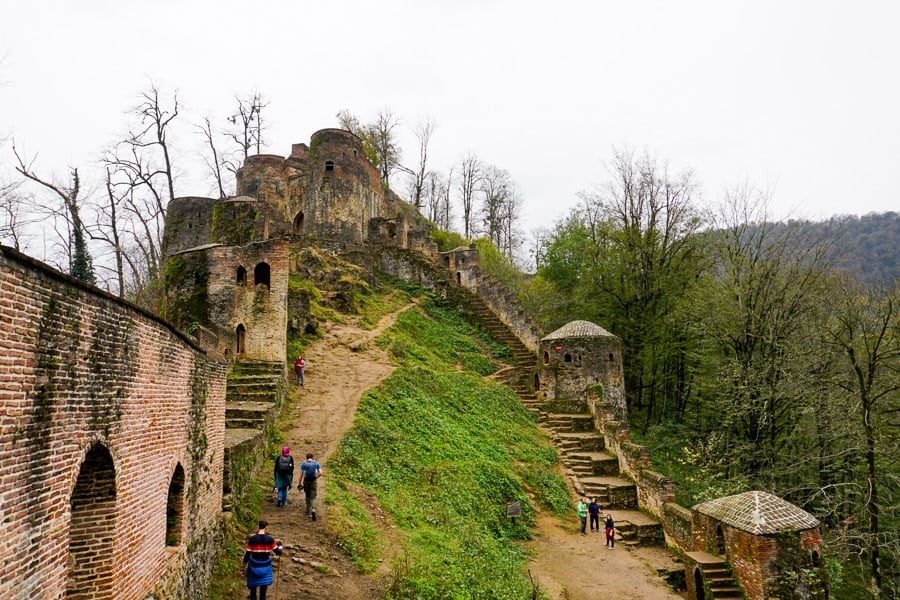
Central Iran Highlights
Naqsh-e jahan square, esfahan – a vast world heritage gathering place.
Nowhere is the majesty of Iran captured better than Esfahan. It’s already said by many to be the most beautiful city in all of Iran, and there are few spots in Esfahan more beautiful than Naqsh-e Jahan Square.
One of the largest public squares in the world (close to 90,000 square metres!), and home to some of the most ornate mosques and palaces in Iran, Naqsh-e Jahan is a focal point for life in Esfahan. It was a place we were repeatedly drawn to during our exploration of the city.
This is the place to embark on grand bazaar explorations, drink tea in magical tea houses (check out the quirky cool Azadegan Tea House off the square), marvel at breathtaking royal and religious architecture (see our separate entries below), and be regaled with the poetry of Hafez and Ferdowsi by enthusiastic young locals keen to share their culture and love of words.
Naqsh-e Jahan is beautiful during the day, but it’s even more stunning at night when the lights come on.
Random fact: The sport of polo originated in Persia some two thousand years ago. Keep an eye out for the marble goalposts marking Naqsh-e Jahan’s own early 17th-century royal polo field.
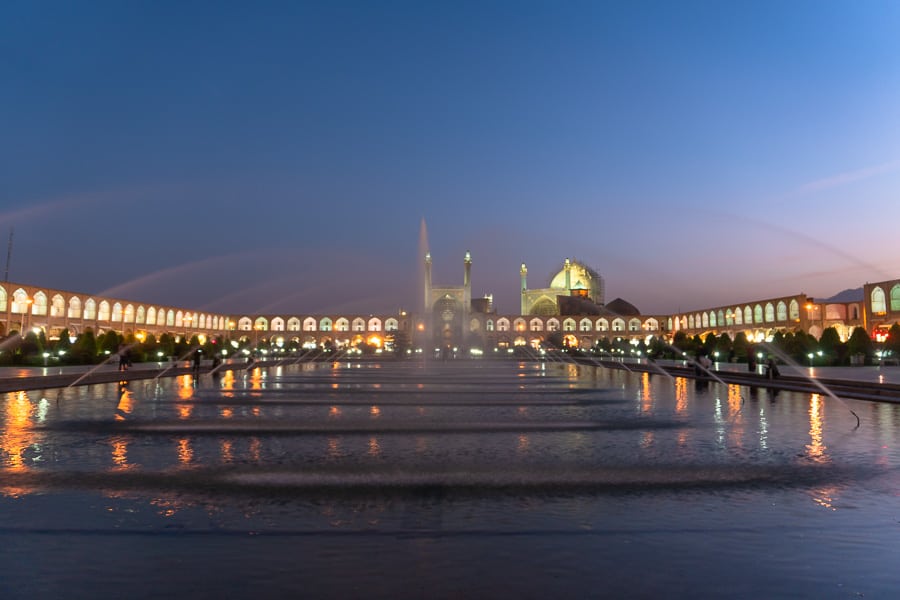
Jameh Mosque, Esfahan – An Ancient, Ever Changing Wonder
Reached via a meander through backstreets and the bustle of the Grand Bazaar, Iran’s oldest (and biggest) congregational mosque is a standout experience in a city packed with highlights.
Work started here in the 9th-century, and today Jameh Mosque is a World Heritage time capsule of architectural styles and dazzling geometric designs spanning more than 1,200 years.
We were captivated by the mosque’s tranquil hypostyle halls, elaborate brickwork (don’t miss the breathtaking Taj al-Molk dome), sublime light, and intricate tile work. This is a highlight of Esfahan and shouldn’t be missed.
Jameh Mosque is about two kilometres’ walk from Naqsh-e Jahan. It’s open every day but closed between 11am-1.15pm, and entry cost us IRR200,000 each.
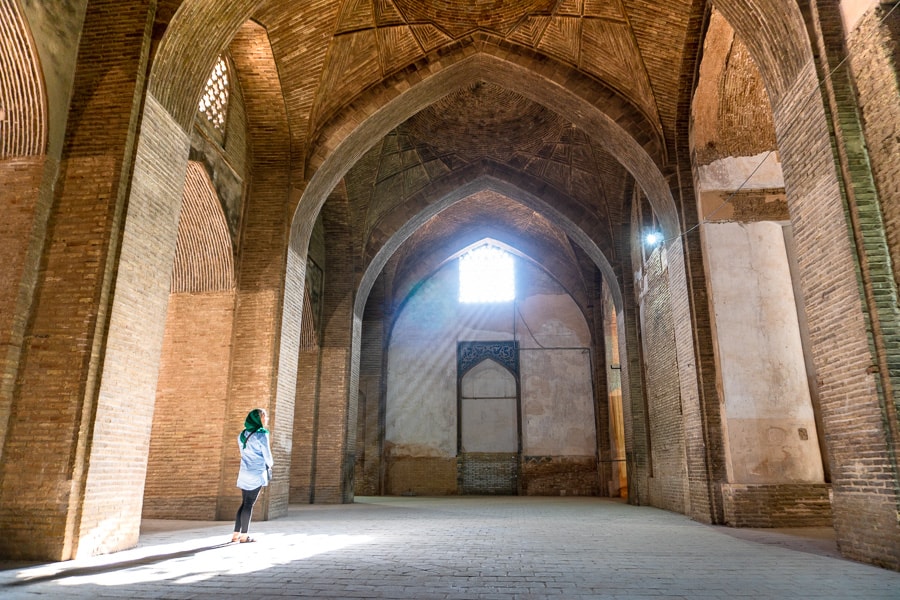
Masjed-e Shah – Architectural Showcase & Peaceful Place Of Learning
Gracefully situated at the southern end of iconic Naqsh-e Jahan Square, Masjed-e Shah – the Shah Mosque – is yet another jewel in Esfahan’s crown and a must on any Iran tour.
Also known as the Royal or Imam mosque, this grand complex of intricate tiled mosaic passageways, niches, and vaulted chambers set around a large central courtyard and pool has been drawing visitors and pilgrims to Esfahan for more than 400 years.
While the 42-metre-high twin minarets and grand dome draw the eye the moment you enter the square, our own visit centred around appreciating the finer details, including the intricately designed entry portal, exquisite mihrab, beautifully crafted calligraphy, and the atmospheric main chamber.
Another real highlight for us was the opportunity to have a broad-ranging chat with a local mullah as part of the “friendly talks” program run by Madrasa Naseriyeh, a theological school located within the Masjed-e Shah complex.
Shah Mosque is open every day but closed between 11.30am-1pm, and Friday mornings. It cost us IRR200,000 each.
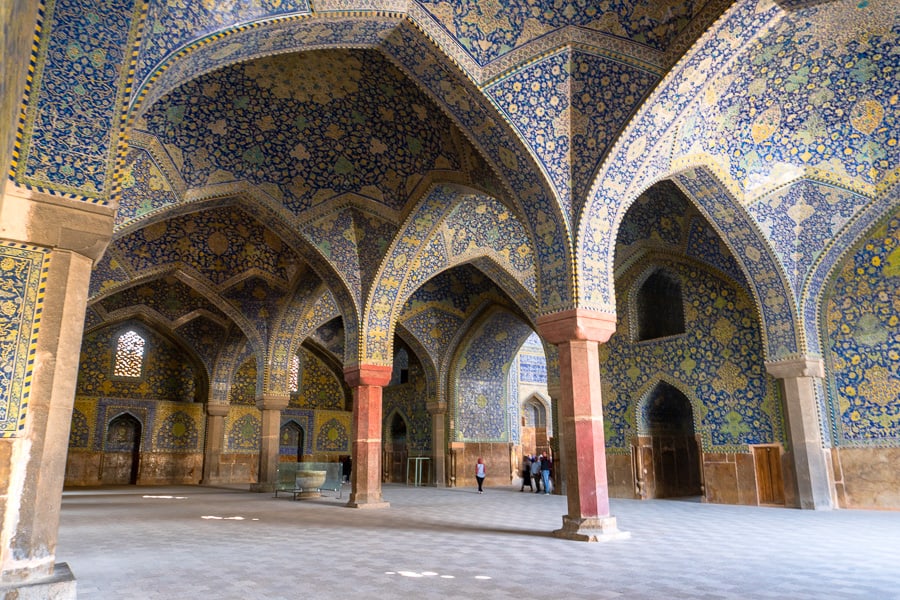
Masjed-e Sheikh Lotfollah – Sanctuary of the Sublime
Yet another structure vying for attention in Naqsh-e Jahan square is the 400-year-old Sheikh Lotfollah Mosque: a masterpiece in miniature, especially when the first and last light of day makes the golden dome glow.
You’ll feel the rising awe the moment you pass into the exquisite portal, entering a striking world of richly designed Safavid-era mosaics, finely carved decorative doorways, and sublime, shifting light.
If you’re anything like us, you’ll struggle to move on from the enchanting angled hallway, but when you eventually do, further reward awaits in the spectacularly tiled dome of the main prayer hall, with its beautiful latticed windows. Catch the light just right, and you’ll see the peacock at the dome’s heart, with its golden sunbeam tail. Photography is allowed, but be careful not to fall foul of the flash and tripod police; they’ll be watching.
Sheikh Lotfollah Mosque is open every day but closed between 12.30-2pm. The entrance fee when we visited was IRR200,000.
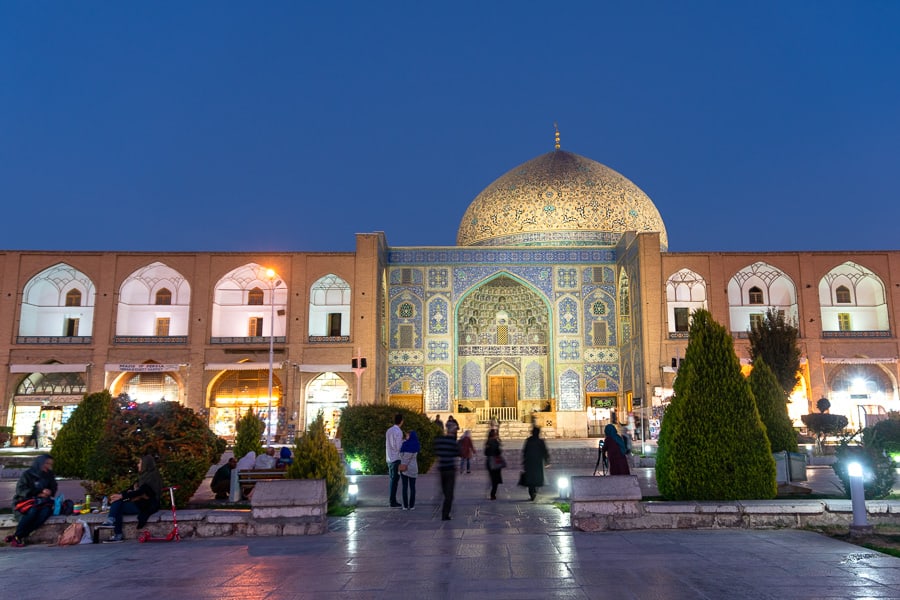
Chehel Sotoun, Esfahan – The Palace of 40 Columns
Built as a pleasure pavilion and reception hall using the Achaemenid-inspired columned porch style, Chehel Sotoun is reached via a terrace that perfectly bridges the Persian love of gardens and interior splendour.
In fact, the ambient grounds here have ensured the pavilion’s inclusion in the country’s collective World Heritage Persian Gardens listing.
While it may be slightly overshadowed by some of Esfahan’s better–known attractions, the palace, with its 20 ribbed wooden pillars rising to meet the beautiful inlay work of the wooden ceiling above, is well worth seeking out. There are vivid frescoes inside and, on the day we visited, a fabulously-bearded musician was plucking tunes among the columns on a traditional Persian tar.
Chehel Sotun means ‘40 pillars’, so if you’re wondering where the other 20 pillars are hiding, be sure to take a stroll around the long pool in front of the pavilion. If the waters are calm, you’ll see the pillars reflected, effectively doubling the number.
The pavilion is a ten-minute stroll west of Naqsh-e Jahan Square. It’s open every day and we paid an entry fee of IRR200,000 each.
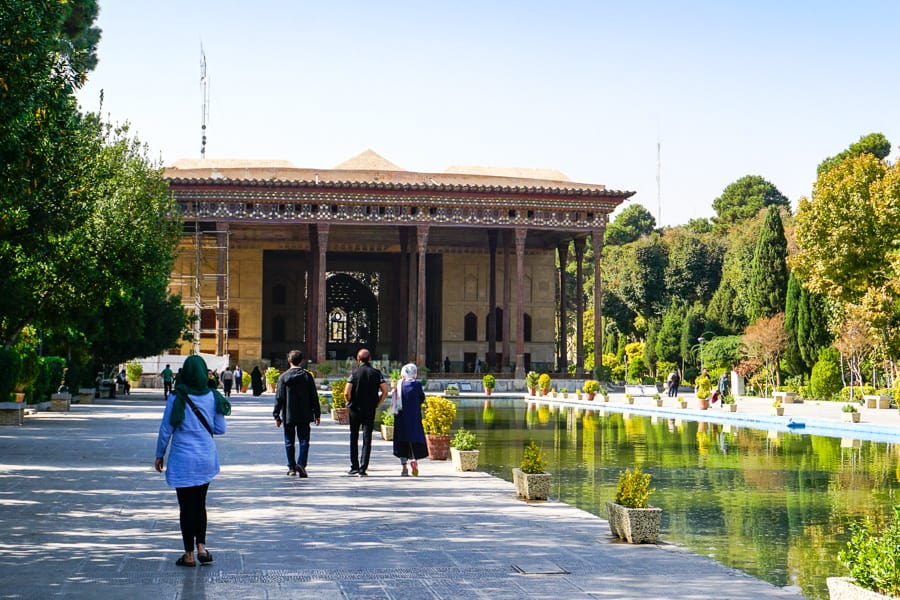
Vank Cathedral – A Gilded, Frescoed Glory
With so many epic sights in Esfahan, it’s easy to understand how some visitors might not find their way to the Armenian quarter of Jolfa in the city’s south-west.
If time permits though, it’s absolutely worth making the stroll from the centre of Esfahan, across the striking Si O Seh Bridge over the Zayandeh River (see our separate entry below), to this pretty corner of the city.
Sixteen historic Armenian churches still stand in the quarter, the most important of which is the 350+ year old Vank Cathedral (the Church of St Joseph of Arimathea).
Approaching the modern-looking building (the outside was restored more recently), we were totally unprepared for what awaited inside. Not for the first time in Esfahan, we were completely mind-blown the moment we stepped through the doors. Every corner of wall and ceiling was covered in vivid, colourful paintings and gilded scenes from the Bible, a striking contrast alongside hand-painted tiles in the Iranian tradition.
The space inside Vank may be small; the impression it leaves is anything but.
Jolfa is also a great spot for people-watching in the evenings, so once you’ve extracted yourself from the churches, be sure to take a seat somewhere and watch the Armenian quarter come to life with young people gathering in the square and cafes to socialise. We also found the charming little Ani Café nearby, with excellent coffee and lovely staff.
Jolfa is around 4.5km from Naqsh-e Jahan Square and it took us around an hour to wander there. Vank Cathedral is open every day. Entry was IRR200,000 and we timed our arrival for late afternoon, and caught a beautiful sunset over the church.
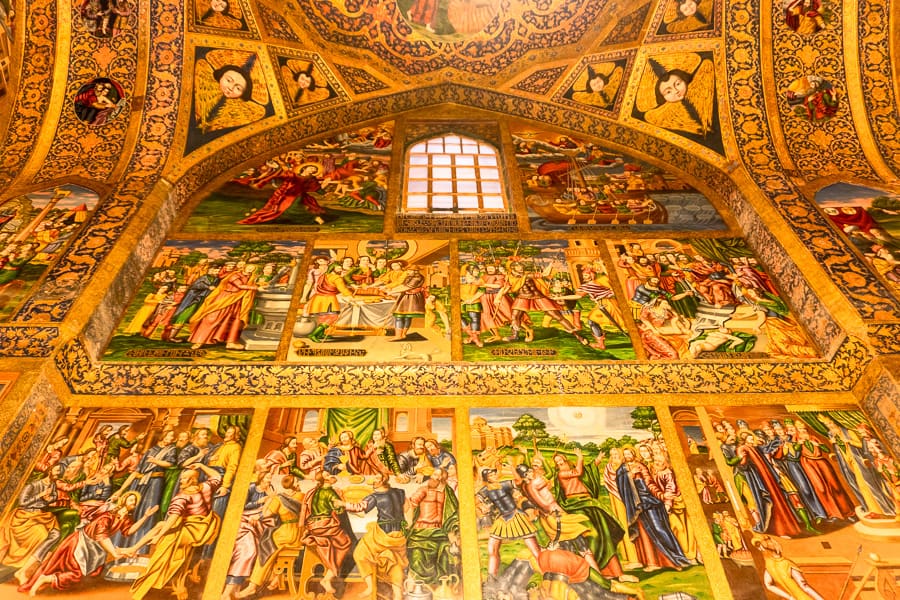
Si O Seh, Esfahan – The Bridge of 33 Arches
Elegant yet sturdy and more than four centuries old, Si O Seh is Esfahan’s picturesque, 33-span bridge. It’s especially photogenic at night, and the perfect place to end a day exploring this ancient city in central Iran.
Stretching almost 300-metres across the Zayandeh River (mostly a dry riverbed, as the water is usually drawn out upstream before reaching Esfahan), the bridge is a magic spot to hang out and people-watch, as local families take in the cooler evening air and groups of teenagers and young adults hang out among the spans. Keep an ear out for people singing under the arches.
We spent more than an hour here, wandering the archways, chatting with friendly locals, and pretty much snapping the bridge from every conceivable angle.
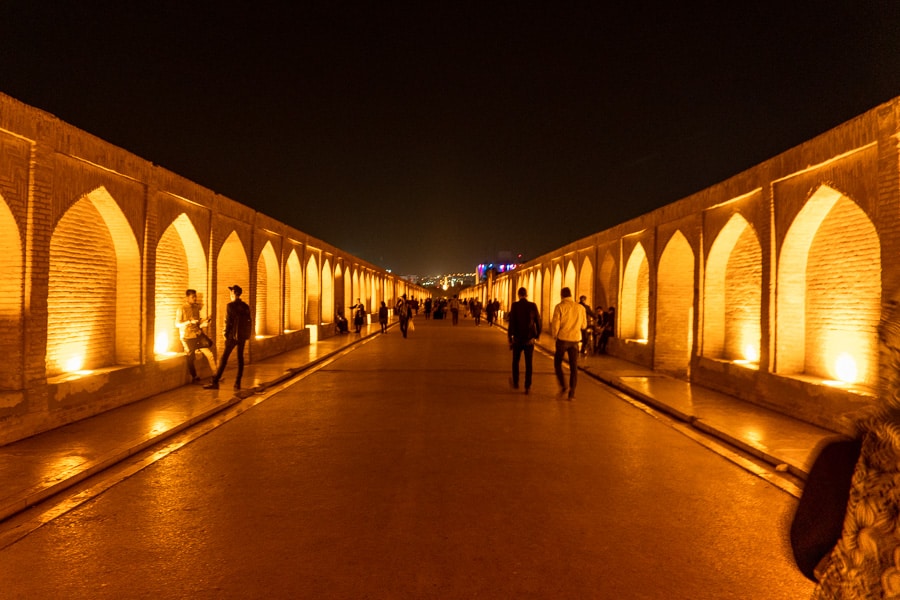
Ghoortan Citadel – Ghost of the Past
It’s no mean feat to move on from Esfahan; there’s just so much to see. If anything can tempt you away though, let it be an adventure in the desert to the south-east, and a trip to the beautiful Iranian interior around Varzaneh.
If you’re taxi’ing to Varzaneh as we did, chances are you’ll have the opportunity to stop and visit the thousand-year-old mud-brick fortress of Ghoortan Citadel. It rises from the flat, dry landscape on the edge of the desert.
This is a haunting, profoundly ambient place. Ghoortan Citadel may be crumbling with age, but a handful of resilient families still live here. We found wandering the silent, ancient maze of mostly abandoned laneways, houses, and thick protective walls and towers to be a truly extraordinary experience.
Ghoortan Citadel is around an hour and a half by taxi from Esfahan. We arranged to include a visit to the citadel with our driver on our ride from Esfahan to Varzaneh.
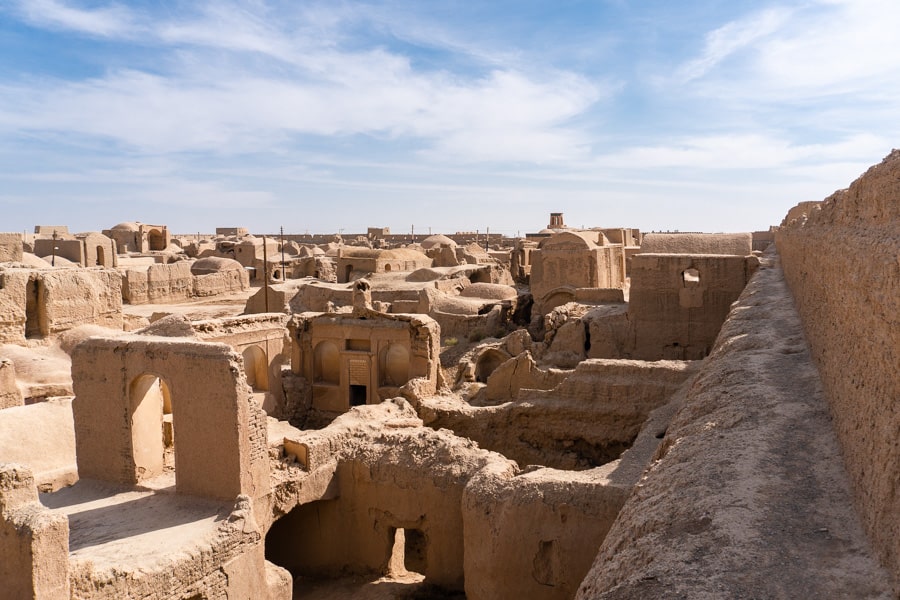
Desert of Varzaneh: Watch Sun Set from the Crest of a Giant Dune
Watching the day wind down atop a mountain of sand, looking out over the sunburnt desert of Varzaneh, is quite literally a high point on many an Iran itinerary, and for good reason!
This is one of the country’s more accessible deserts, and a popular gathering spot for families and young people as the heat of the day ebbs away in the late afternoon.
The dunes, among the highest in Iran, rise up suddenly from the flat, baked plains. Hiking the dunes is tougher than it might look, but once you get to the top you’ll be rewarded with sweeping views as the waves of sand are transformed into a burnt orange sea with the dropping sun.
We stopped at this beautiful spot after a memorable afternoon exploring the ancient, parched landscape of this region, where human history stretches back some 5,000 years. Afterwards, back at the base of the dunes, we snacked on watermelon and sipped tea as twilight fell over the desert. Magic.
We arranged our Iran desert tour through our guesthouse in Varzaneh, as part of a half day exploration of the highlights of the area. Trips vary, however we included in ours a stop at the photogenic Varzaneh salt lake and flats, sunset over the desert, and a spot of stargazing under brilliant, starry skies.
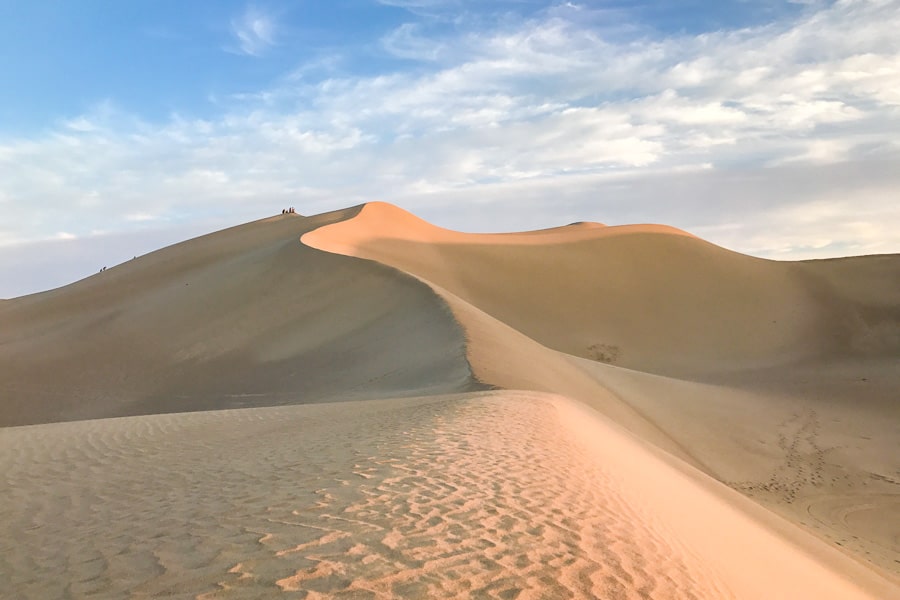
Stay in the desert-edge town of Varzaneh To make the most of a visit to the desert and salt flats, consider staying a couple of nights in the small desert-edge town of Varzaneh. This is a very quiet, low-key town, but the people are warm and welcoming, and a simple stroll here rewards with memorable scenes, like beautiful red roses blooming in dry, cracked garden beds; and ladies crossing the town’s arched bridge at sunset in billowing white chadors. This is the only place in Iran where the white chador is worn. You’ll also see fine examples of the country’s famous pigeon towers here, both restored and crumbling with age. These circular towers were widely used to collect pigeon poo for use as a fertiliser in the parched landscape, before the advent of chemical fertiliser. They’re often beautifully decorated, eye-catching structures.
Yazd: City of Wind Towers
There’s plenty to like about the ancient desert city of Yazd, a destination recognised as World Heritage for its ancient and traditional adobe buildings, and clever underground water systems. For us though, Yazd is a standout for these things and more: it was here that we had the best Dizi in Iran.
Yazd has been welcoming Silk Road travellers for more than 1,500 years, and the sheer depth of history here is palpable as you walk the narrow laneways lined with earthen houses and shops.
This is a city to wander, to soak up the desert atmosphere, to get hopelessly lost in, to shed your city slicker worries, and immerse yourself completely in Persian history, culture and food.
There are plenty of highlights, but standouts include the Amir Chakhmaq Complex, with its beautiful archway symmetry; the Ateshkadeh Zoroastrian Fire Temple (Yazd was once a hub for the oldest monotheistic religion in the world); and the spectacular Jameh Mosque, with its soaring entryway, stunning tilework, and 48-metre-high minarets. We found the mosque’s ancient qanat open when we visited, deep underground down a steep staircase. We spent a while here, chatting with the very friendly locals.
Don’t Miss: Saheb A Zaman Zurkahneh This unique, offbeat Iranian experience was a surprise highlight for us during our Yazd stay. Housed in a 440-year-old water reservoir, the zurkaneh is effectively a gym where men carry out an ancient tradition of exercises in sync using wooden clubs of different sizes. There are strict rules and customs for participants, and the performance plays out to traditional music. If it sounds unusual, it is, but that’s exactly what makes it a must-see. The practice takes place each evening except Friday and entry cost us IRR200,000 each.
The perfect end to a day exploring Yazd is to find a rooftop late in the day (Check out the Art Café), drink some tea, enjoy the skyline dotted with tiled domes and wind catchers (very clever ancient systems that capture wind, cool it and send it around the home below), and generally just marvel at one of the world’s most ancient cities.
Then locate a Dizi house and eat your fill of this singular Iranian dish of lamb, potato and chickpea stew. This is a performance meal, not only in how it’s prepared and presented, but in how it’s eaten. Soooo good. Our fave spot in Yazd for Dizi, and other tasty local food, was Tormeh & Toranj.
Unsurprisingly, and perhaps like many other travellers for thousands of years – we found it very hard to leave this charming, ancient desert oasis.
We arranged through our guesthouse in Varzaneh to travel to Yazd by taxi, a journey of around two-and-a-half hours.
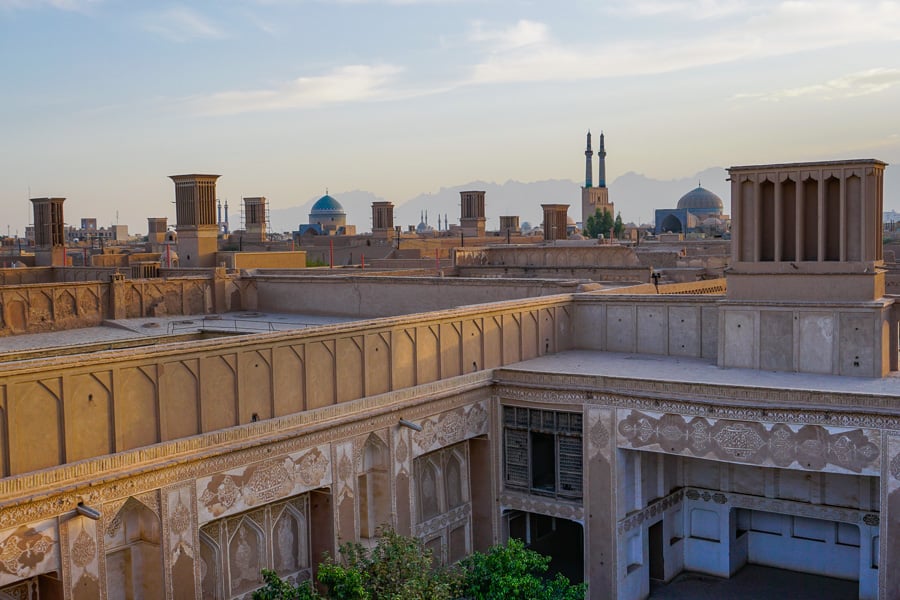
Kharanagh – Ancient Village Abandoned Not Forgotten
80 kilometres from Yazd, overlooking a peaceful scene of farms backed by dry, rugged mountains, is the captivating village of Kharanagh: totally ambient and, for all intents and purposes, totally abandoned.
Believed to have been settled by the Zoroastrians more than a thousand years ago, this intriguing town of winding passageways and mud brick houses is a treat to explore.
While there are plenty of signs the surrounding lands are actively farmed, we came across more animals than people on our exploration of the silent, crumbling town. Still, it wasn’t difficult to imagine a time when families filled the adobe rooms, the call to prayer rang out from the still-standing minaret, and life bustled within the narrow laneways.
As we parked up on a patchy rooftop and looked out over the ruins, we had the distinct feeling that, while ancient Kharanagh is slowly eroding away, it’s story will carry on long after it’s gone.
We visited Kharanagh on a daytrip from Yazd, taking in this site as well as the Zoroastrian Fire Temple at Chak Chak (see our entry below), and hulking Narin Castle in the city of Meybod. Travelling with two others, a taxi and driver for the day cost us around IRR 1.7 million, plus entry fees. Entry to Karanagh was IRR50,000 each.
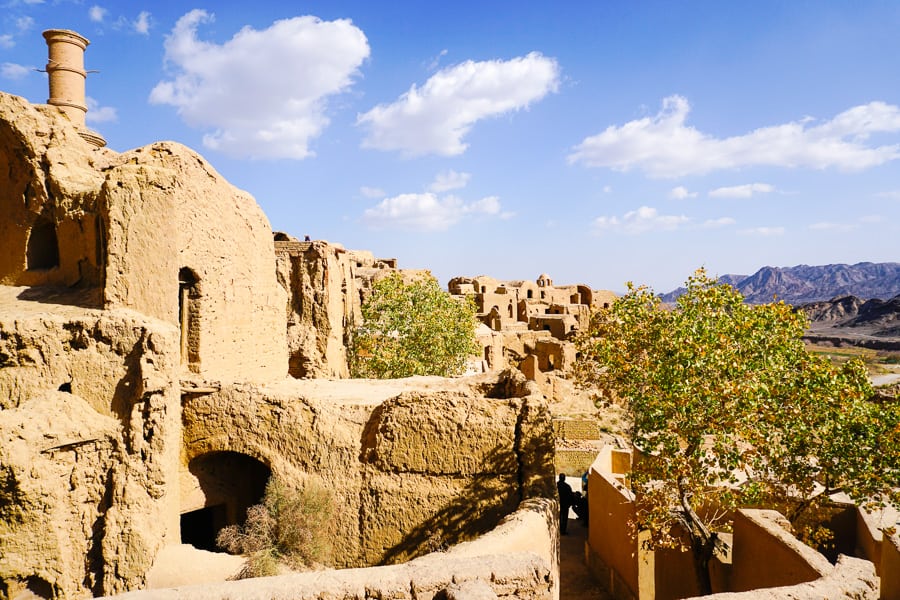
Pir-e-Sabz (Chak Chak) Fire Temple – An Ancient Mountain Shrine
From the moment we started researching our Iran trip, we were intrigued by Zoroastrianism and the mysterious fire temples where this ancient Persian religion was practiced.
Yazd was a centre of Zoroastrianism (it still has a significant population of followers), and Chak Chak, a fire temple halfway up a sheer mountain, is an excellent place to get familiar with the world’s oldest monotheistic religion.
Legends swirl about this ancient place. One says the drops of spring water at Chak Chak are the mountain’s tears for the daughter of a Sassanid ruler, who was trapped here by the invading Arab army in the seventh century. Desperate, the princess prayed for help and the mountain opened up to offer her refuge.
The fire temple is located in a cavern at the top of more than 200 heart-pumping steps. Given its importance as a pilgrimage site, the temple itself is a surprisingly small and understated space centred around an eternal flame, and accessed through impressive bronze doors imprinted with the religion’s founder, Zoroaster.
The levels above and around the temple are rooms set aside for the thousands of pilgrims who make their way to the temple for a Zoroastrian festival in June each year (it’s closed to other visitors during the festival so check ahead if you’re travelling around this time).
For us, the visit was memorable for the simple, peaceful ambience of the fire temple and the rugged beauty of the surrounding landscape. Be sure to allow time to really take in the setting, and enjoy the stunning views from the high terraces.
We visited Chak Chak as part of a day trip from Yazd, also visiting Kharanagh (see our entry above) and the city of Meybod. Entry to Chak Chak was IRR50,000 each.
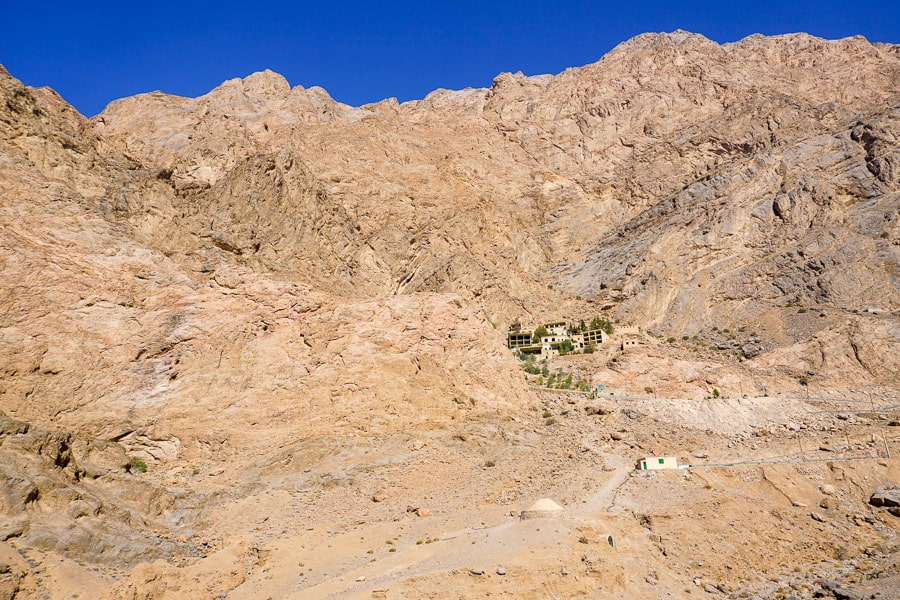
Southern Iran Highlights
Naqsh-e rustam – necropolis of legendary kings.
A journey into Southern Iran takes you deep into Persian history, to the ancient Achaemenid Empire and an age of celebrated Persian kings like Cyrus, Darius and Xerxes.
These are giants of human history, leaders that shaped the ancient world. They are, quite literally, the stuff of song and legend.
You can find this epic history carved into the cliff-face at Naqsh-e Rustam, the necropolis of Persia’s legendary kings Darius the Great, Xerxes the Great, Ataxerxes and Darius II.
We were rendered speechless as we stood facing these powerful and ancient mausoleums for four members of the dynasty that founded the first Persian Empire: their stories chiselled into the stone by real people in the distant past. For history buffs like us, travelling doesn’t get much better than this.
We incorporated our visit to Naqsh-e Rustam into our taxi ride from Yazd to Shiraz. Building it into our journey (which we shared with two others) was more time and cost effective for all of us, and meant we could dedicate more time the following day to exploring the ancient city of Persepolis. Entry to Naqsh-e Rustam was IRR 200,000 each.
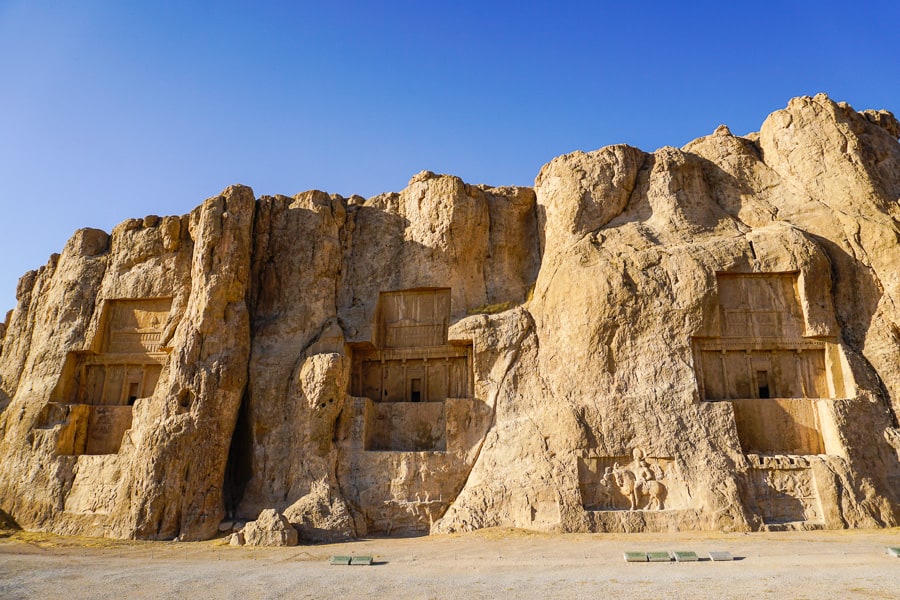
Pasargadae – Monument to the Founder of the Persian Empire
Another of Iran’s impressive World Heritage sites, Pasargadae was once the capital of the Achaemenid Empire and lies on a large archaeological site around 90 minutes’ drive northeast of Shiraz.
If we’re honest, this highlight might be more for history nerds like us, since you need a fair amount of imagination (and energy) to bring the mostly ruined site to life as you wander the complex in the blazing desert sun.
For us, the stately tiered limestone tomb of Cyrus The Great, founder of the First Persian Empire, was the highlight of our visit, and provides a sense of the grandeur befitting the site. Cyrus, the second of his name, ruled from 559-530BC, conquering and expanding to create the world’s largest empire up to that point.
There’s some suggestion his mausoleum was restored in the year 324BC on the orders of Alexander the Great, who found the tomb already ransacked.
The rest of the site is made up of seemingly random ruins and stones which actually form up the floorplans of palaces, gardens and a citadel. There’s also an unusual tall building similar to one at Naqsh-e Rustam, evocatively called Solomon’s Prison. It was once thought to be a fire temple, among other things; no one’s really sure.
While it’s easy to visit Pasargadae and Naqsh-e Rustam along with Persepolis on a day trip from Shiraz, we decided to build in stops at Pasargadae and Naqsh-e Rustam on our journey from Yazd to Shiraz for the reasons outlined in our entry above. Entry to Pasargadae was IRR200,000 each.
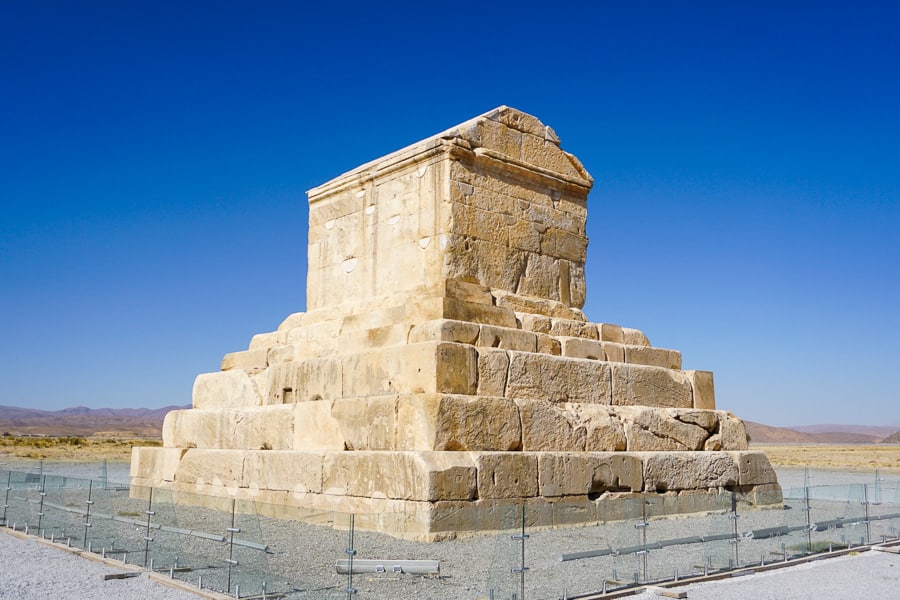
Persepolis – Ancient City of Kings
Almost certainly one of our favourite places to visit in Iran (and one of the longest-standing entries on Dan’s lifetime bucket list of ancient places), the World Heritage site of Persepolis stands as a timeless testament to the powerful past of the Persian Empire, and the deep foundations of Iran’s present.
Started by Darius the Great in the 6th century BC, Persepolis was the ceremonial capital of the Achaemenid Empire. It thrived for nearly 200 years, until Alexander the Great turned up with his army in 330BC. After sampling the luxuries of the palaces, he looted and burnt them down. Not one of his ‘great’ moments.
Two millennia on though, and despite the scattered masonry and ruins, there’s still plenty to see here, starting at Xerxes’ epic Gate of All Nations, surely the inspiration for the Sphinx Gate in ‘The Neverending Story’!
Persepolis is an absorbing complex of columned palaces, halls and cliff-carved tombs. Keep an eye out for the details around the site, like the double-sided bull capitals on the columns (and the ground in places, where they offer serious perspective on their size).
The beautiful wall reliefs on the Apadana Staircase are a showstopper, offering intricate details on the cultures coming to Persepolis from all over the region at the time. They look like they were carved yesterday, thanks to centuries buried in the desert sand.
If you can, don’t miss the opportunity to be at Persepolis for sunset. Watching the sun drop beyond the site, just as it has for more than 2,500 years, was a highlight for us (our banner pic for this post was taken at sunset at the Gate of All Nations).
Definitely go with a guide to get the most out of your tour, and make sure you ask for extra time to wander at leisure, and seek out the exquisite detail that makes this one of the world’s must-see ancient sites.
Persepolis is around 50km northeast of Shiraz. Entry was IRR200,000 each. We organised our excellent guide and driver through Mr Persepolis – email us for more info . For security reasons, backpacks aren’t usually allowed in and there’s a security check at the entrance. To be on the safe side, we’ve heard smaller, single strap shoulder bags are usually ok but check with your guide before going.
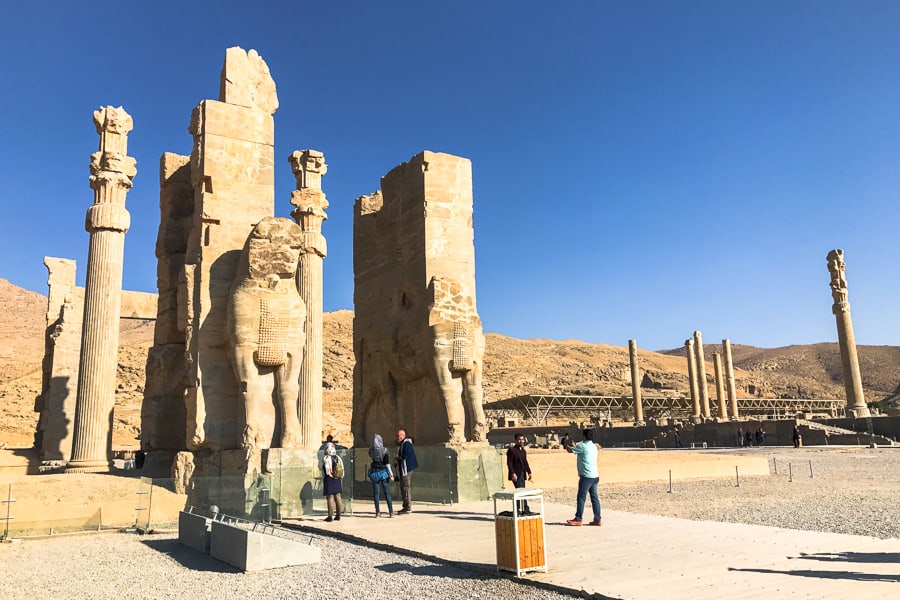
Masjid Nasir ol-Molk – The Exquisite Pink Mosque of Shiraz
Probably one of the most photographed spots in all Iran, a visit to beautiful Nasir ol-Molk is equal parts wonder and exasperation, but should absolutely enjoy ‘must visit’ status on your Iran itinerary.
Every morning the ornately columned prayer hall of Shiraz’s Pink Mosque erupts into a riot of kaleidoscopic colour as the first light of day streams in through its stained glass windows.
Be there for opening and you may be rewarded with a few peaceful moments before the tour groups arrive, at which point photography etiquette disappears completely in a chaotic, oblivious swirl of people, all determined to capture the moment from every possible angle.
That’s the point we decided to find a spot out of the way at the side of the room and just enjoy the morning light dancing across the intricate painted tiles, carved pillars and beautiful hand-woven Persian carpets.
Be sure to wander to the other areas of the mosque too: the painted tilework in the archway opposite the prayer hall is delicate and beautiful.
Nasir ol-Molk is in the heart of Shiraz. Check the time of sunrise when you visit and the opening hours of the mosque. Entry was IRR 200,000 each.
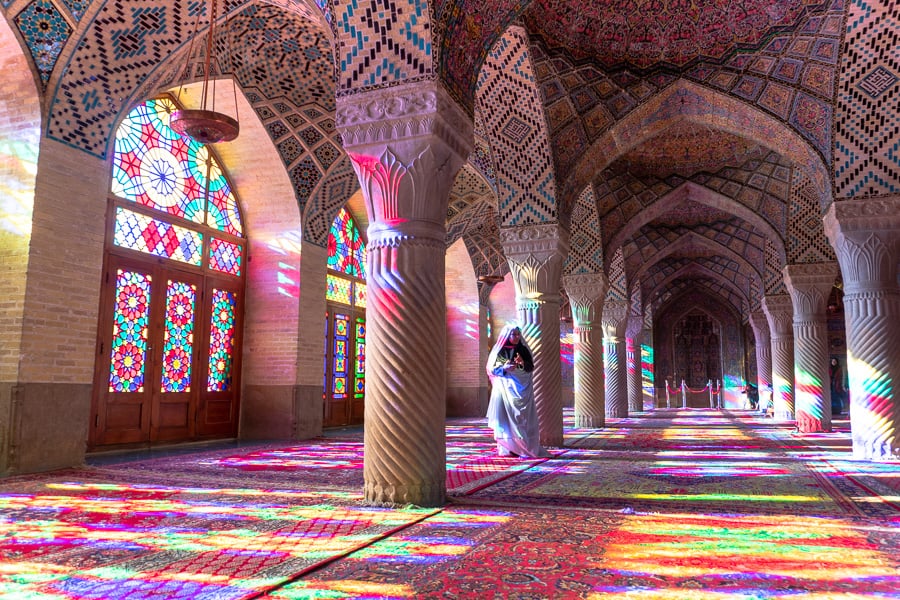
Tomb of Hafez: A Love Letter To Iranian Poetry
Spend any time in Iran and you’ll quickly realise that poetry is a serious business here. It enjoys a central and time-honoured place in Iranian life and cultural identity.
While we may fall back on the snippets of Shakespeare we were forced to learn at school, the Iranians we met happily regaled us with beautiful verses from their favourite poets.
We’ve got fond memories of one young guy quoting us passages of Hafez – perhaps Iran’s most revered poet – in Esfahan’s main square, without any of the self-consciousness that might accompany such an act back home.
Hafez lived in Shiraz in the 14 th century, and if you’re visiting the city, one of the best places to appreciate Iran’s love of poetry is at his resting place, the Tomb of Hafez. Families, couples and friends gather here in the pretty gardens, and you’ll find excerpts of his timeless poetry inscribed on the tomb and around the site.
“Even after all this time, the sun never says to the Earth, ‘you owe me.’ Look what happens with a love like that! It lights up the whole sky.” Hafez
We recommend visiting the tranquil gardens later in the day as the sun drops. Entry was IRR200,000 each.
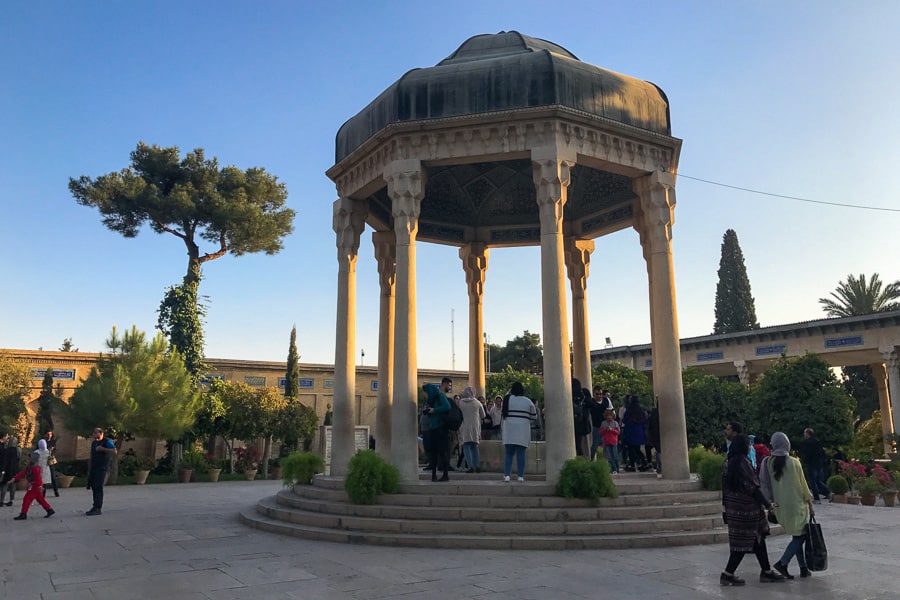
Bishapur and Shapur Cave: Where Empires Collide
If ancient empires get your engines running like they do ours, and if you have a spare day in Shiraz, then consider a day trip to Bishapur, two hours to the northwest of Shiraz. The drive from Shiraz to Bishapur is a delight in itself, passing through dramatic mountain and canyon country.
Bisahpur was the seat of Sassanian King Shapur I, who ruled the Persian Empire from around 240 to 270 AD. He went head to head with the Roman Empire, taking their cities, allegedly killing one Roman Emperor (Gordian III), signing a peace treaty with a second (Philip I), and taking a third prisoner (Valerian), along with his army.
These war stories are detailed in vast carvings along the wall of the Chogan Gorge, near the ancient city, itself built by Roman captives.
We found the detailed reliefs completely absorbing, and a good thing too, as it turned out the city ruins were unexpectedly closed on the day we visited.
Our awesome guide Cyrus instead found a path for us above the hill opposite the city, where we could look down on the ruins while he explained the history of the site. There’s still much to be excavated, but archaeologists have so far uncovered a palace, temple, monumental columns and beautiful mosaics.
From the hill above Bishapur, we made our way to the base of a huge escarpment, and began a sweaty, 90 minute climb to a cave hidden in the rockface above. There, overlooking a spectacular mountain-and-valley vista, the cave hosts a monumental statue of King Shapur I, carved from a single block of limestone.
Time, earthquakes, and poor restoration efforts have stolen some of the statue’s command, but it’s still a sight. Better yet, the vast, dark cave behind delivers outstanding acoustics, a fact we discovered when a single voice rang out from the dark in beautiful plaintive song, courtesy of the small group ahead of us.
We day tripped to Bishapur, Chogan Gorge and Shapur I Cave in the company of a Shiraz guide/driver that was recommended to us by other travellers. Drop us a line if you’d like the details of our guide, Cyrus.
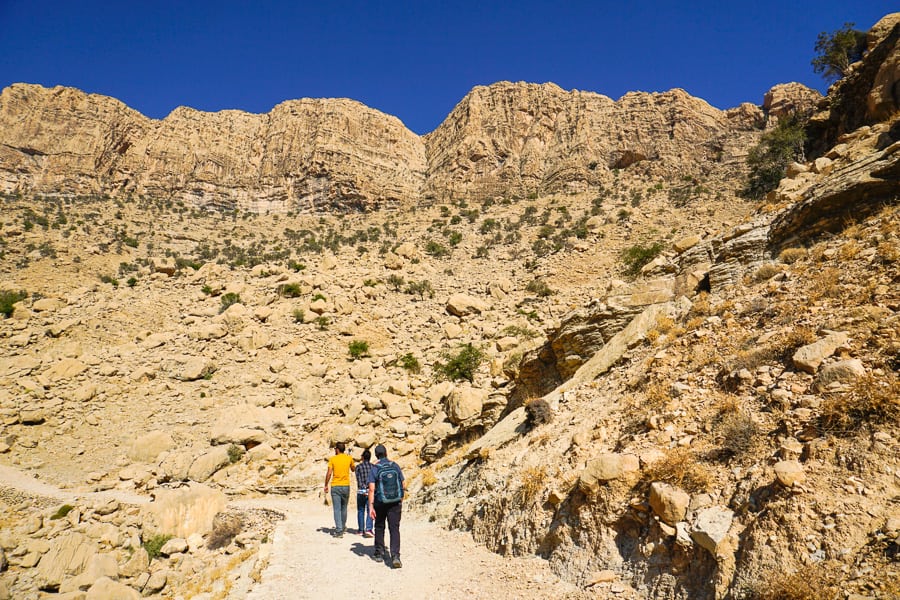
Highlights of Western Iran
Shushtar historical hydraulic system – a marvel of ancient engineering.
The best way to appreciate the sheer scale and engineering smarts of Shushtar’s incredible World Heritage-listed historical hydraulic system is to grab a perch at a clifftop café, order some tea (and a water pipe if you’re into hubbly bubbly), and enjoy the view. It’s especially beautiful after dark when it’s all lit up.
The Sassanian-era structures you see today, said to have been built by the captive Roman emperor Valerian and his enslaved army, have been diverting water from the Karun River for irrigation and water mills since around the 3 rd century. But the people here have been mastering the river and changing the face of this desert landscape to support farming and planting for far longer, since the time of Darius the Great.
In addition to the canals, bridges, mills and cascades you can see at the historical hydraulic complex (which is still operating today), there are sturdy, functioning weirs and dams along the river that showcase the ancient and lasting engineering skill of the Persians.
It’s worth getting down to street level at the hydraulic complex and taking a stroll through the system with the sound of water thundering in your ears while you get up close and personal with the ancient watermills that dot the site.
We travelled to Shushtar by bus from Shiraz, first making our way by overnight bus to the city of Ahvaz, then taking a taxi from the intercity bus station to Istgah Station, where we boarded a local bus to Shushtar. The total cost was around IRR 630,000 each. Entry to the historic hydraulic system was IRR 200,000 each.
Food Highlight: If you’re staying in Shushtar, be sure to hit up Ferouzdizi for a delicious, beautifully presented meal of Iranian specialty, Dizi.
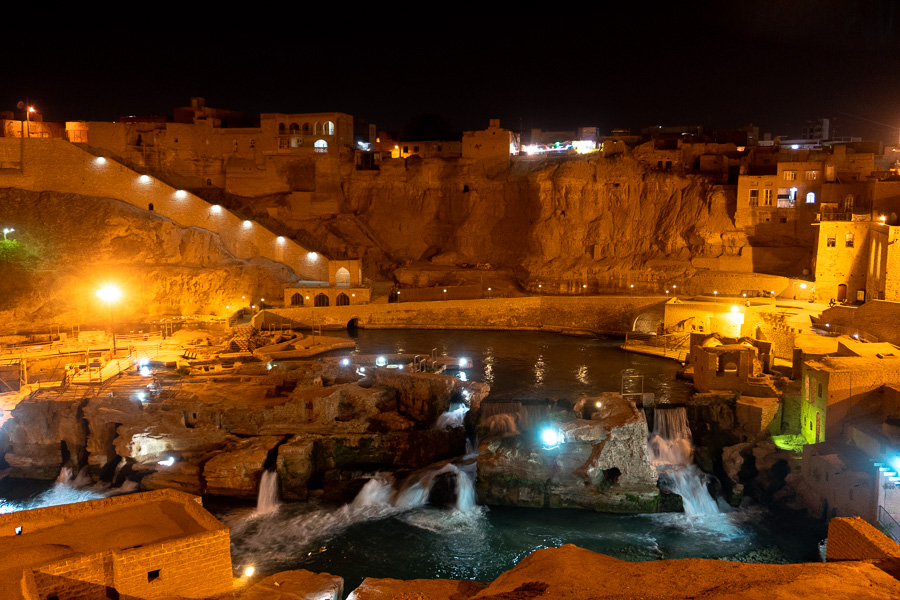
Choqa Zanbil Ziggurat – The Temple Complex Defying Time
To visit Choqa Zanbil Ziggurat is to travel even further back into ancient Iran, to the period before the rise of the Persian Empire. This huge terraced, pyramid-like structure, dates from the time of the ancient Elamites.
Rising out of the desert like a vast, monolithic mirage, Choqa Zanbil Ziggurat has dominated the dusty landscape of Khuzestan province in southwest Iran for more than three millennia.
This ancient complex of tiered walls, squares, rooms and temples, yet another UNESCO gem, stands out from the crowd in a region teeming with World Heritage sites. More than a hundred meters long on each side, and originally five stories high, the well-preserved brick structure is thought to have once been capped with an über sacred Elamite temple.
We visited the ziggurat in the high heat of the mid-afternoon. With hindsight, we’d look to make it a later visit, both to avoid the heat and the glare. Still, Choqa Zanbil’s scale – in both size and history – make it an amazing sight at any time of day. Moreso when you discover the parched landscape in which it sits was once lush and green. Not easy to imagine.
Keep an eye out for the small details, like the line of bricks running around the entire structure covered in ancient cuneiform script. Also look out for the small footprint preserved in the clay by the sundial in the courtyard paving; how it got there is anyone’s guess but, surrounded as it is by enduring brick and pavement, it’s a compelling human link to a very distant past.
Choqa Zanbil Ziggurat is around 45 minutes’ drive from Shushtar. We highly recommend visiting the ziggurat – and other local attractions like the World Heritage ruins of Shush (Susa) – with a guide, to ensure you get the most out of this very ancient corner of Iran. Drop us a line if you’d like the details for our lovely guide, Mehran. Entry to the ziggurat cost us IRR200,000 each.
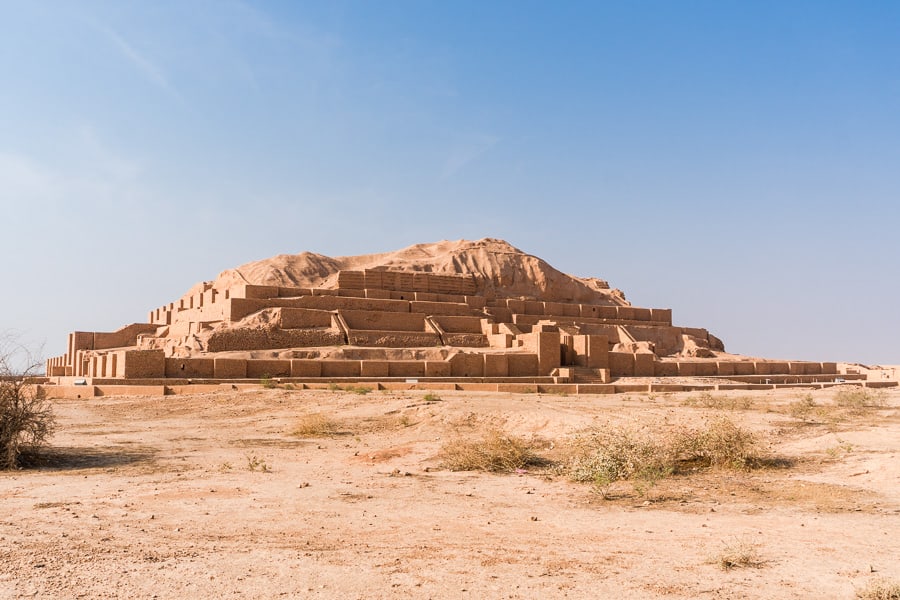
Have you visited Iran? What would you add to this list? We’d love to hear about your personal favourite things to do in Iran below, or ask us any questions you might have!
2 thoughts on “30 Incredible Things To Do In Iran: Highlights For The First Time Visitor”
Hormoz Island, gheshm island,Darak beach, Tehran country side like Fasham &lavasan
Thanks Melika
Great suggestions, wish we’d have had time to get to some of those spots.
Still, it’s always good to have a reason to go back.
All the best. John and Danielle
Leave a comment Cancel reply
Save my name, email, and website in this browser for the next time I comment.
Must-see attractions in Iran
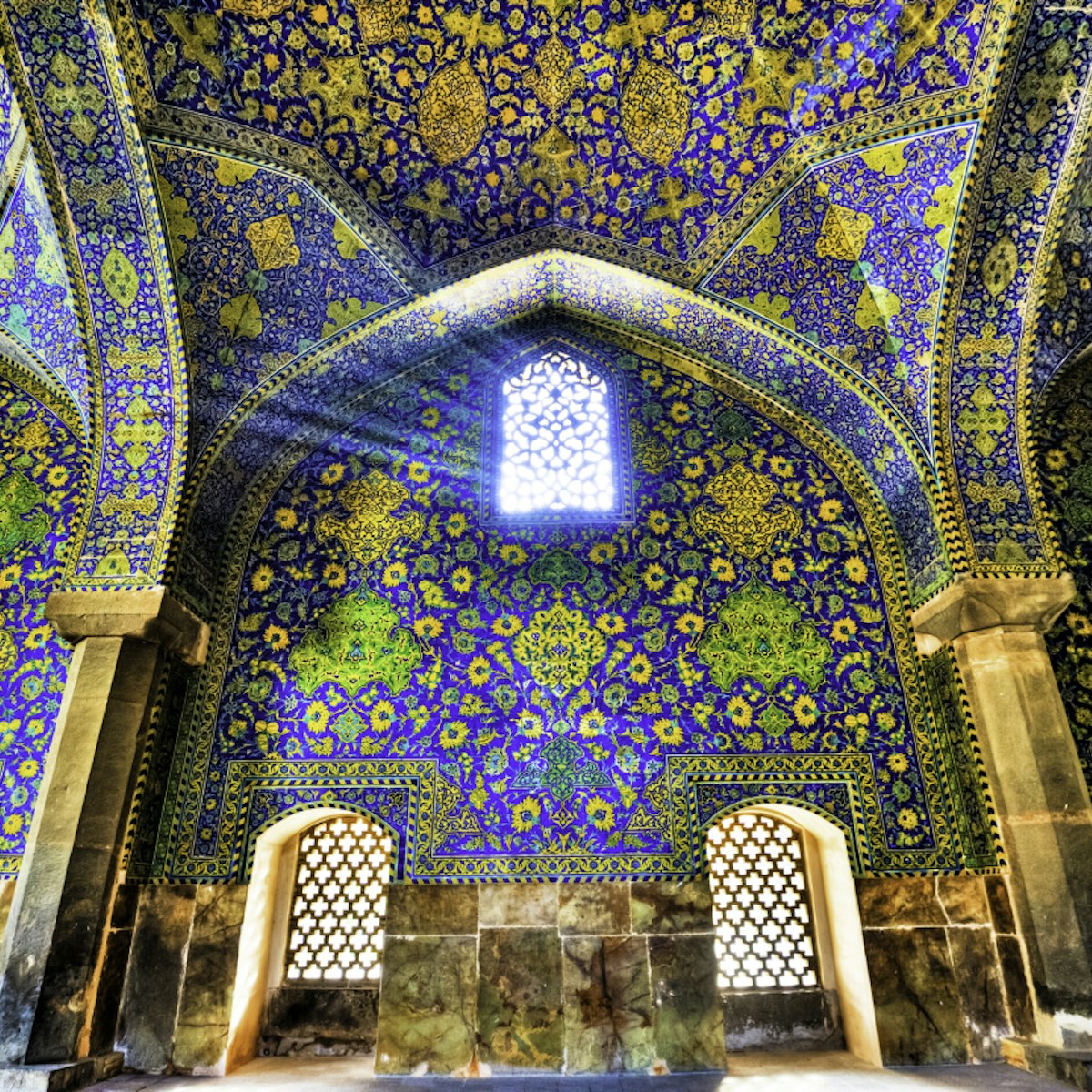
Masjed-e Shah
This elegant mosque, with its iconic blue-tiled mosaics and its perfect proportions, forms a visually stunning monument at the head of Esfahan's main…
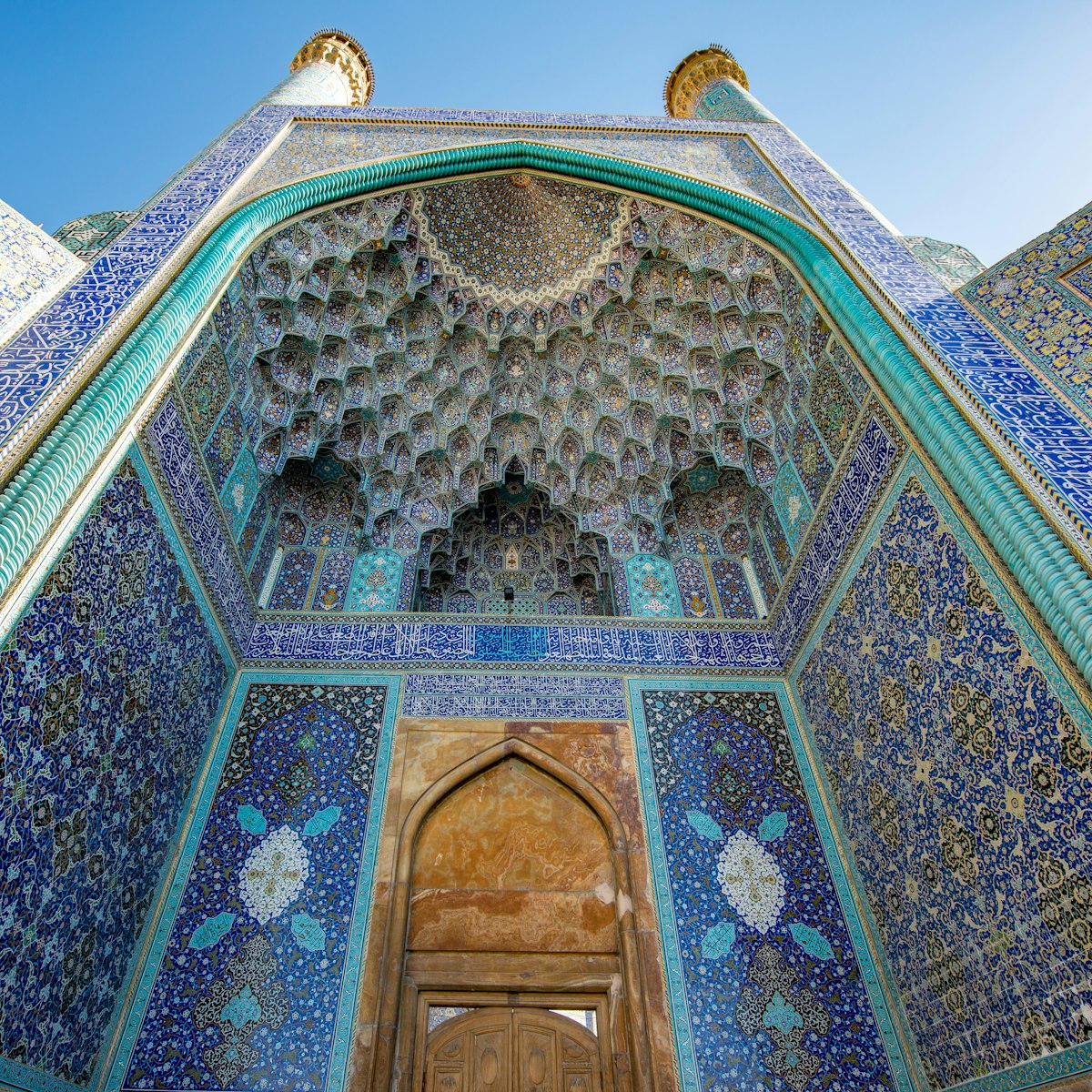
Masjed-e Jameh
The Jameh complex is a veritable museum of Islamic architecture while still functioning as a busy place of worship. Showcasing the best that nine…
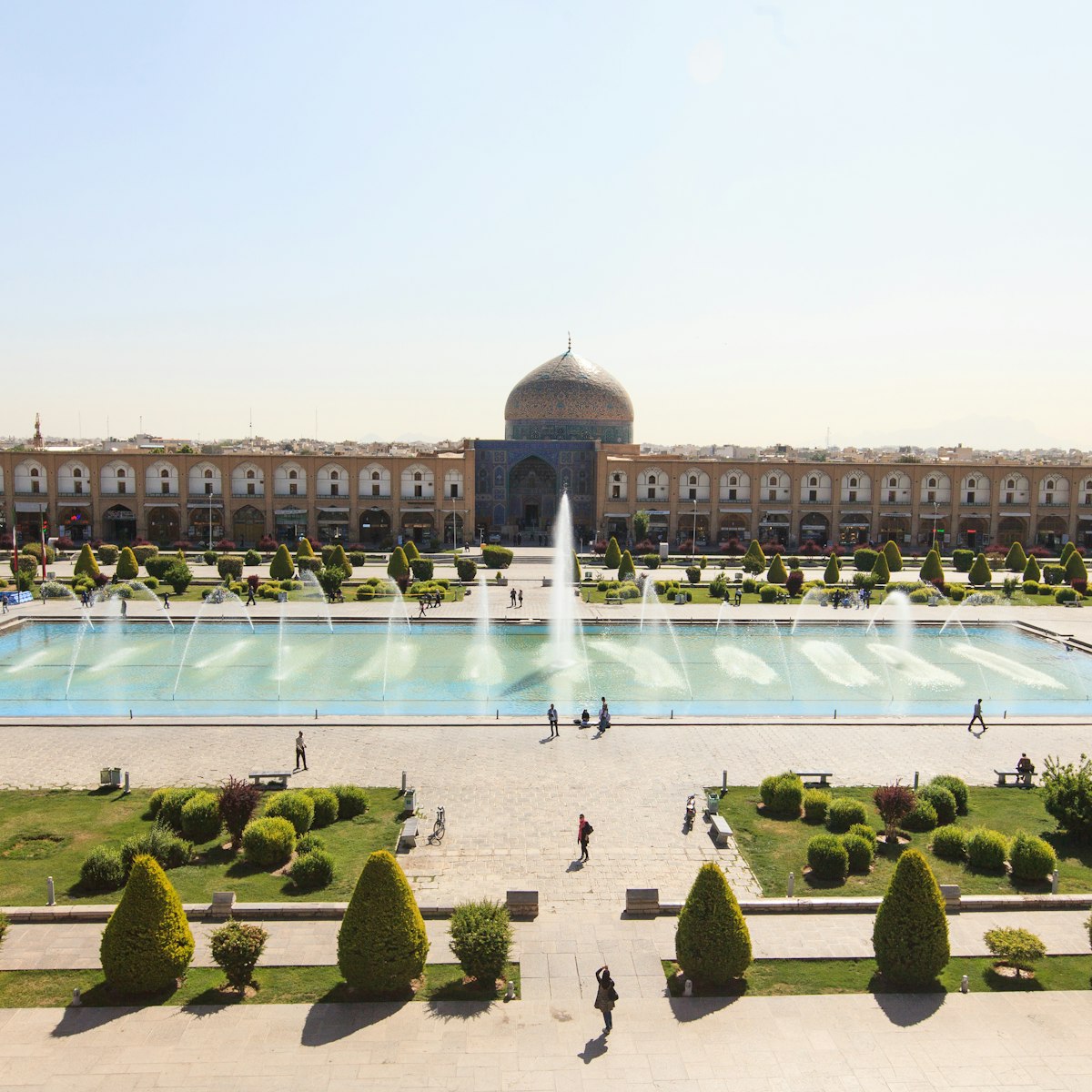
Naqsh-e Jahan (Imam) Square
Hemmed on four sides by architectural gems and embracing the formal fountains and gardens at its centre, this wondrous space is a spectacle in its own…
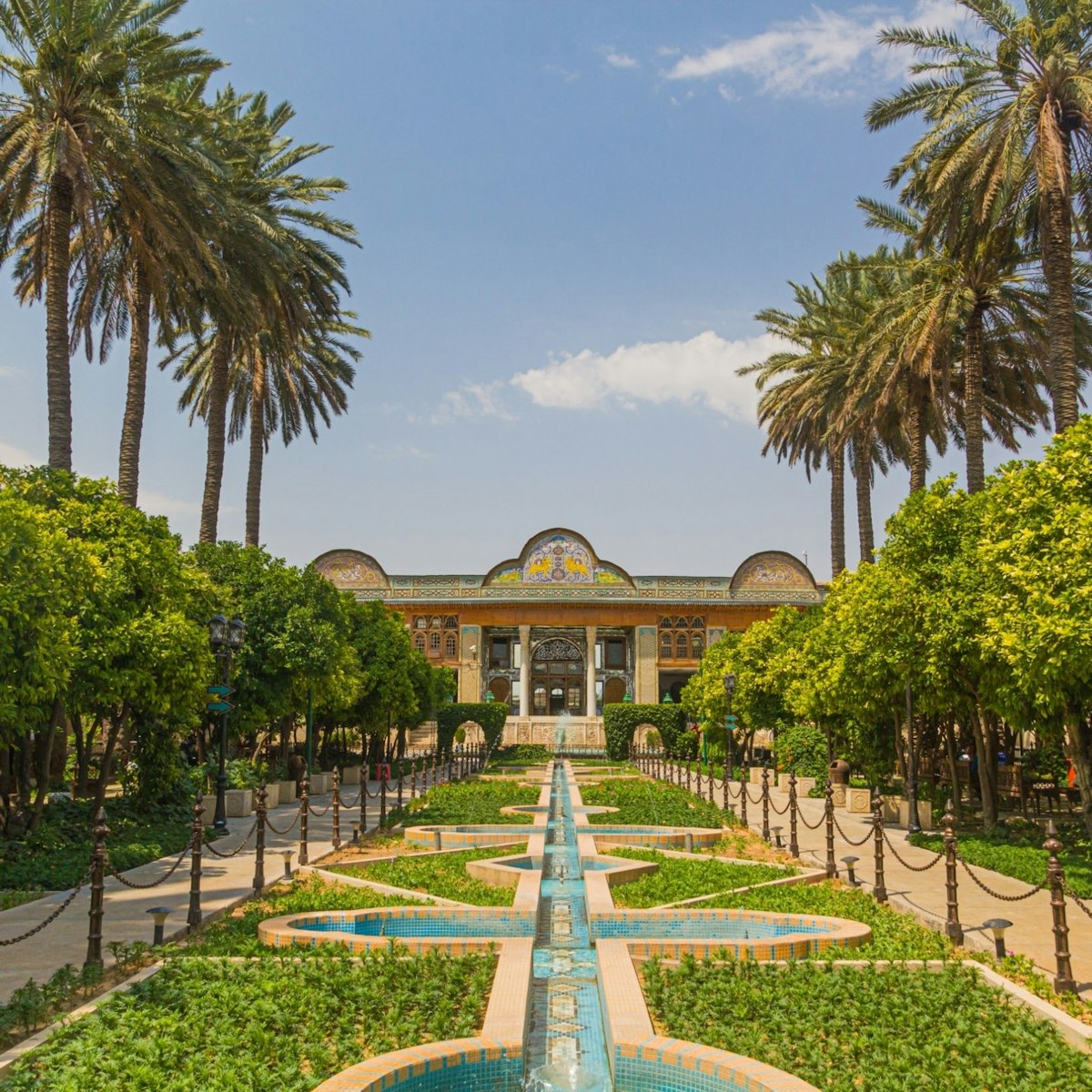
Bagh-e Naranjestan
Named after the bitter oranges that line the central courtyard, this is Shiraz’s smallest but most lovely garden. Enclosing the delightful Naranjestan-e…
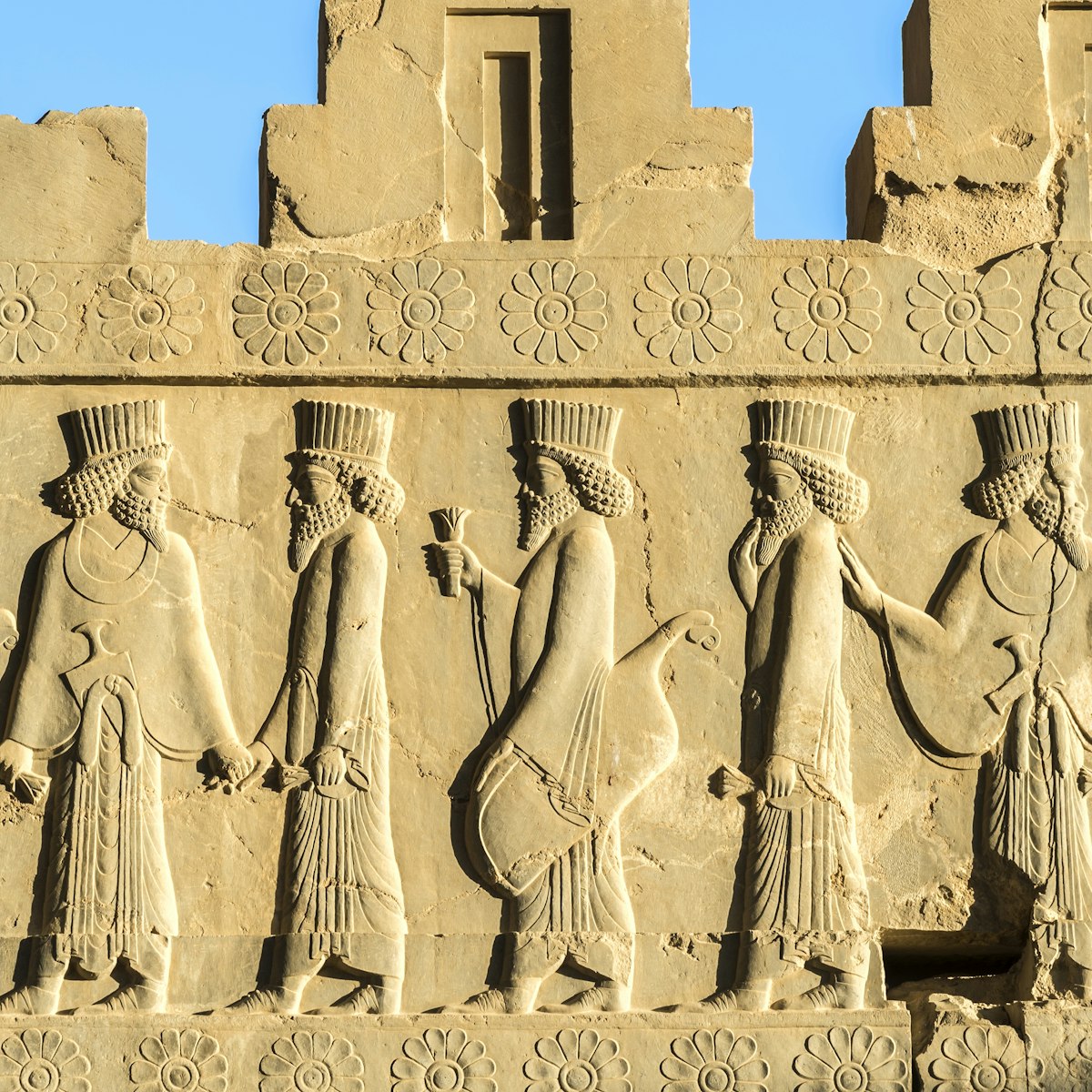
Apadana Staircase
The stairs, which are guarded by stone soldiers, are decorated by an exceptionally finely crafted frieze in three panels. Each panel is divided into…
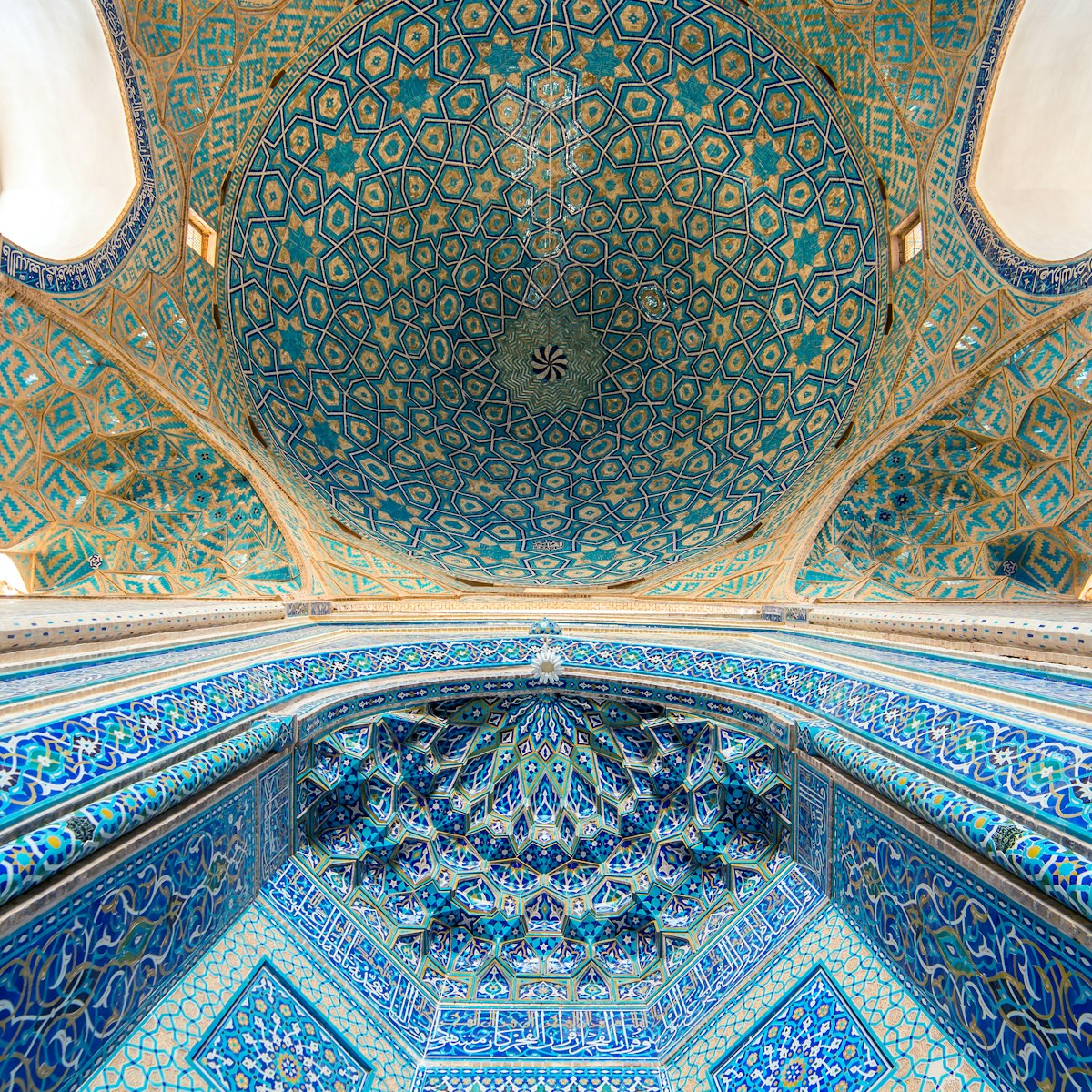
Soaring above the old city, this magnificent building is graced with a tiled entrance portal (one of the tallest in Iran), flanked by two 48m-high…

Tabriz Bazaar
The magnificent, labyrinthine, Unesco-listed Tabriz bazaar covers some 7 sq km, with 24 caravanserais (sets of rooms arrranged around a courtyard) and 22…
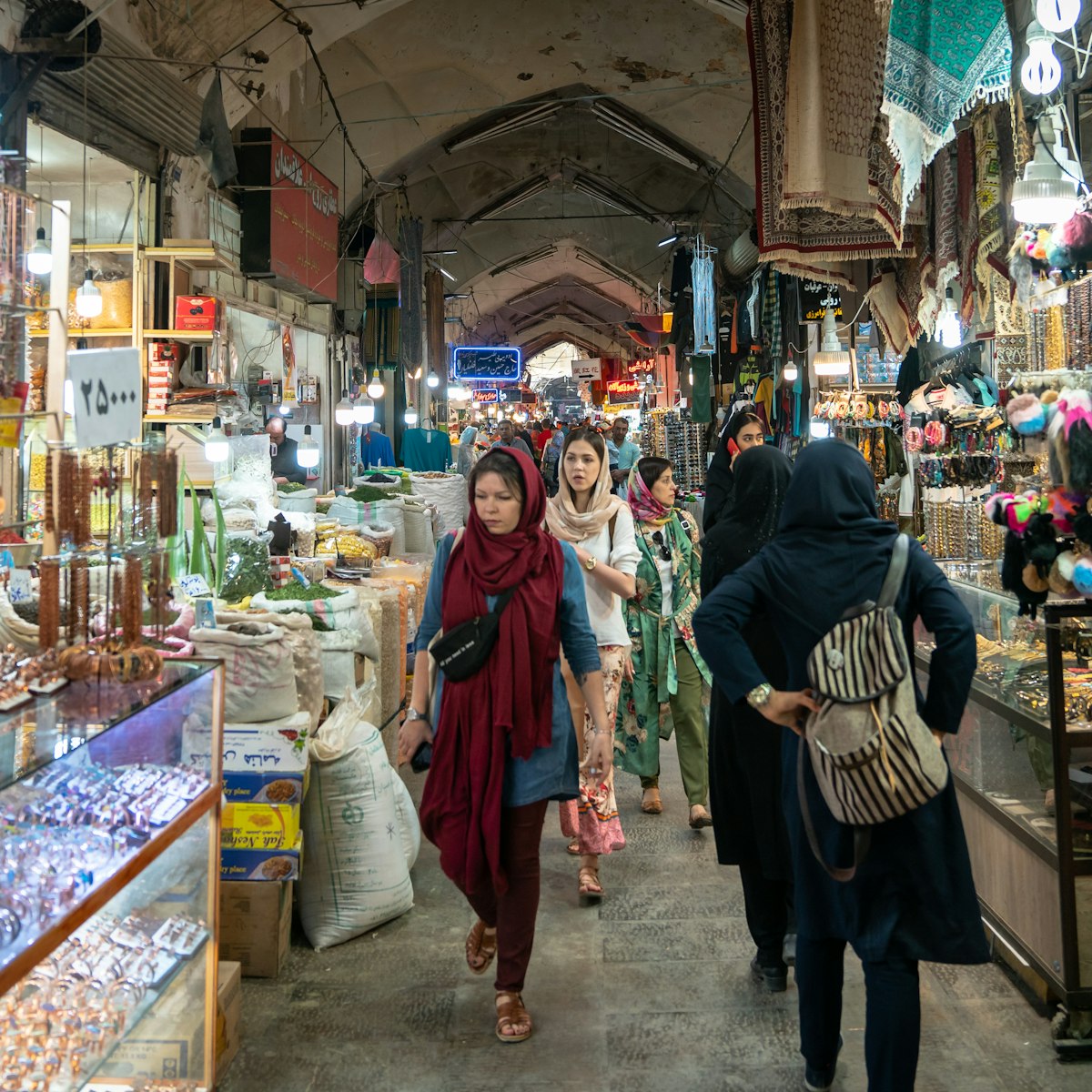
Bazar-e Bozorg
One of Iran’s most historic and fascinating bazaars, this sprawling covered market links Naqsh-e Jahan (Imam) Sq with the Masjed-e Jameh. At its busiest…

Amir Chakhmaq Mosque Complex
The stunning three-storey facade of this Hosseinieh is one of the largest such structures in Iran. The rows of perfectly proportioned sunken alcoves are…
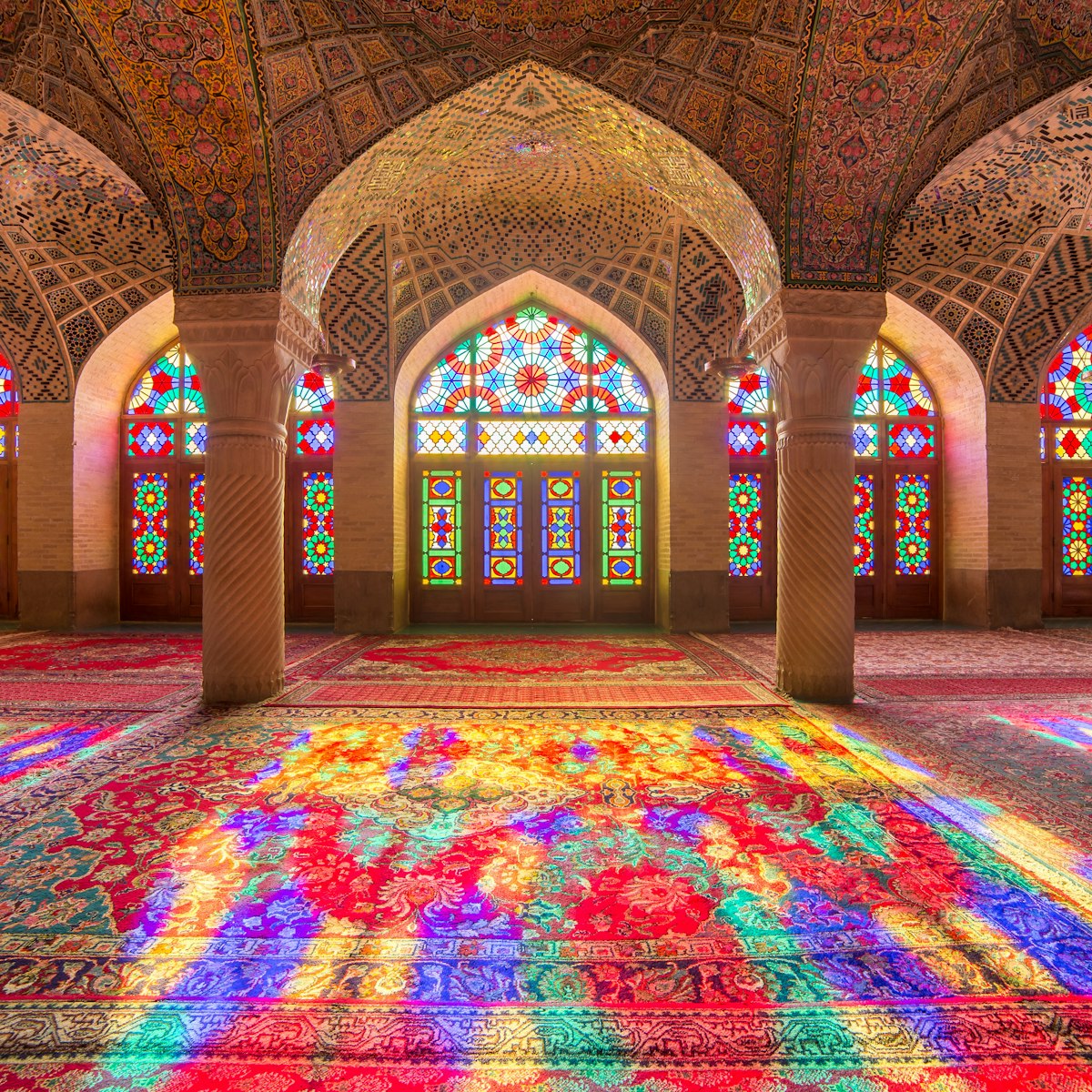
Masjed-e Nasir Al Molk
One of the most elegant and most photographed pieces of architecture in southern Iran, the Pink Mosque was built at the end of the 19th century and its…
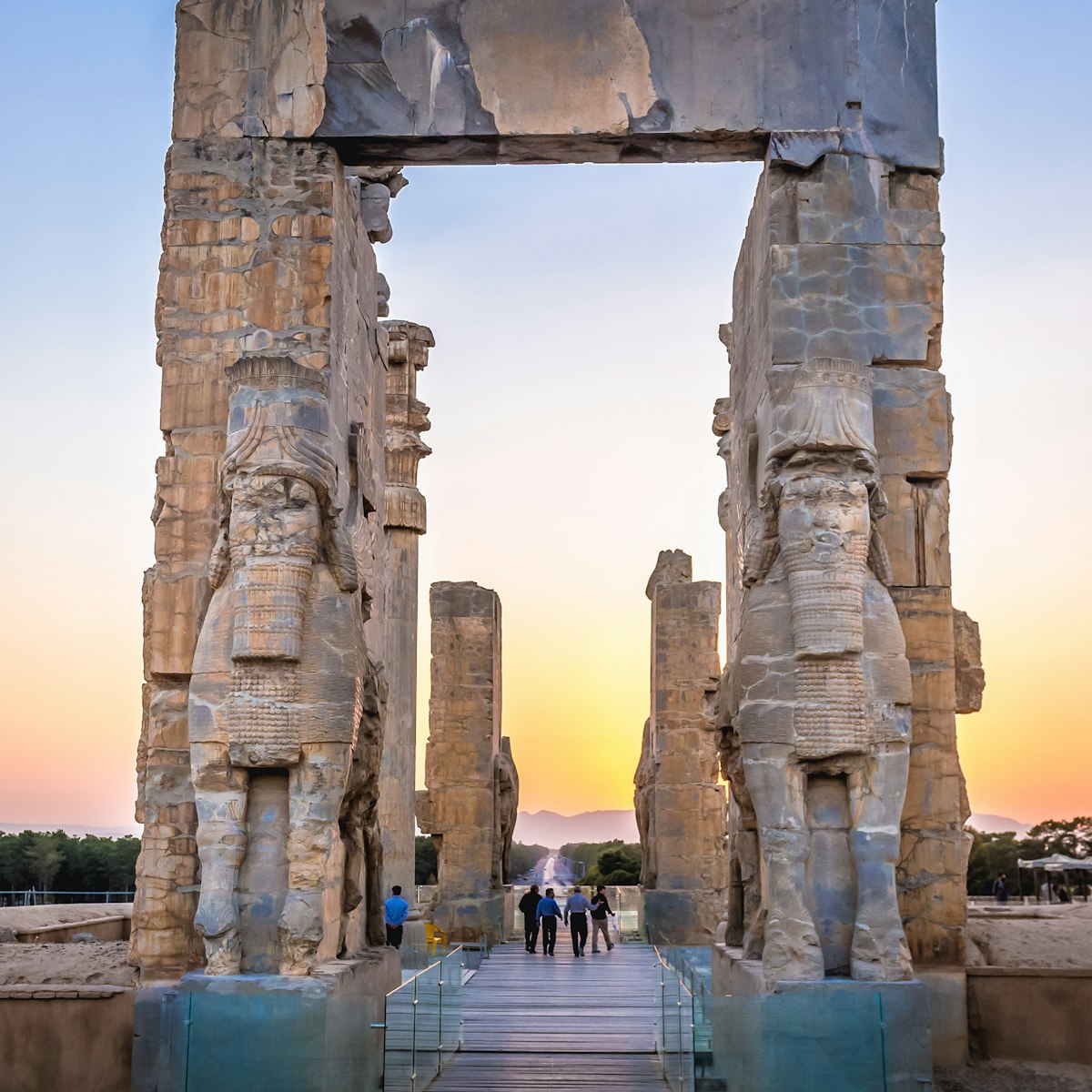
Xerxes’ Gateway
The bronze trumpets that once heralded the arrival of important foreign delegations (a fragment of which is on display in the museum) may now be silent,…
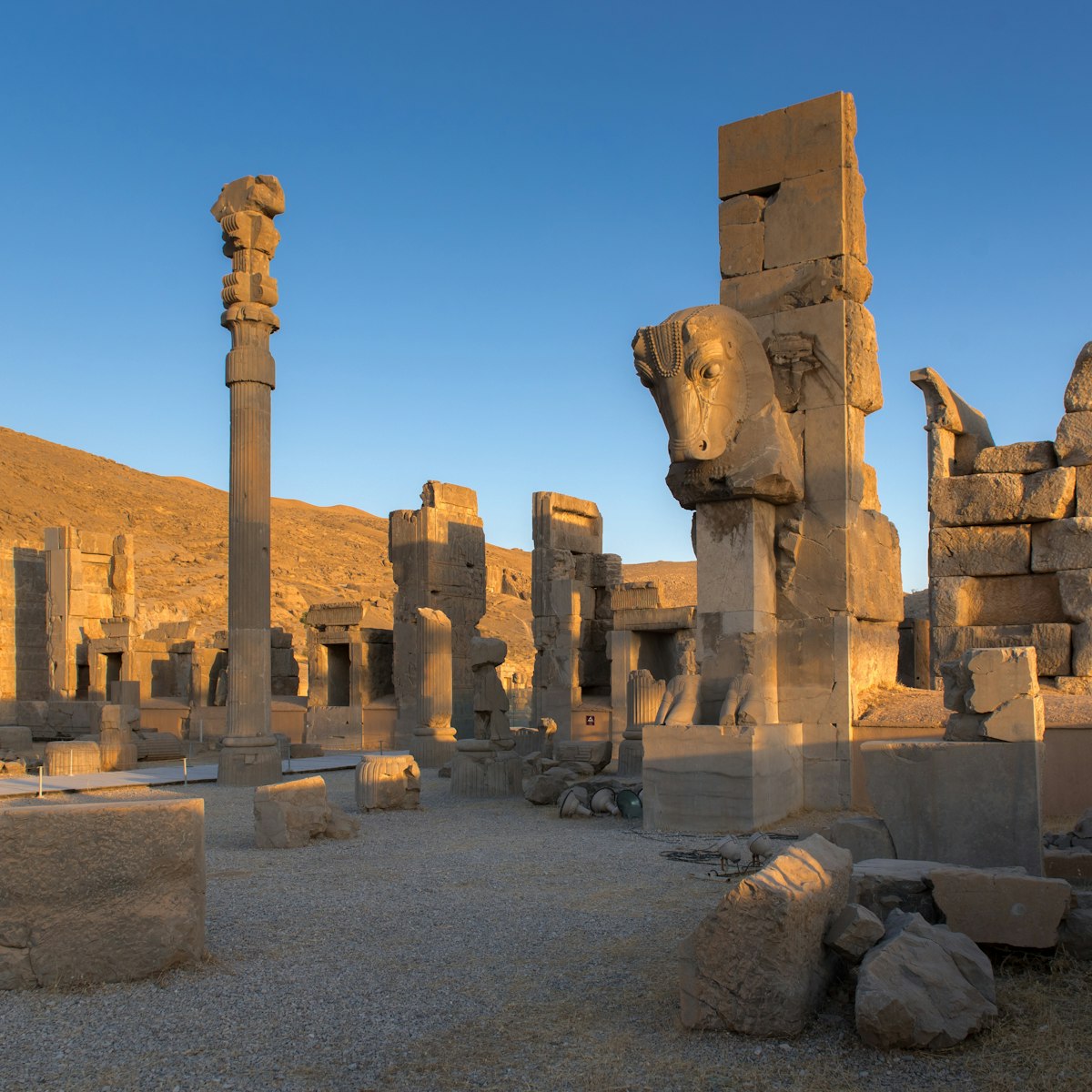
In its heyday Persepolis was one of four key cities at the heart of an empire that spread from the Indus River to Ethiopia. Its original name was Parsa…
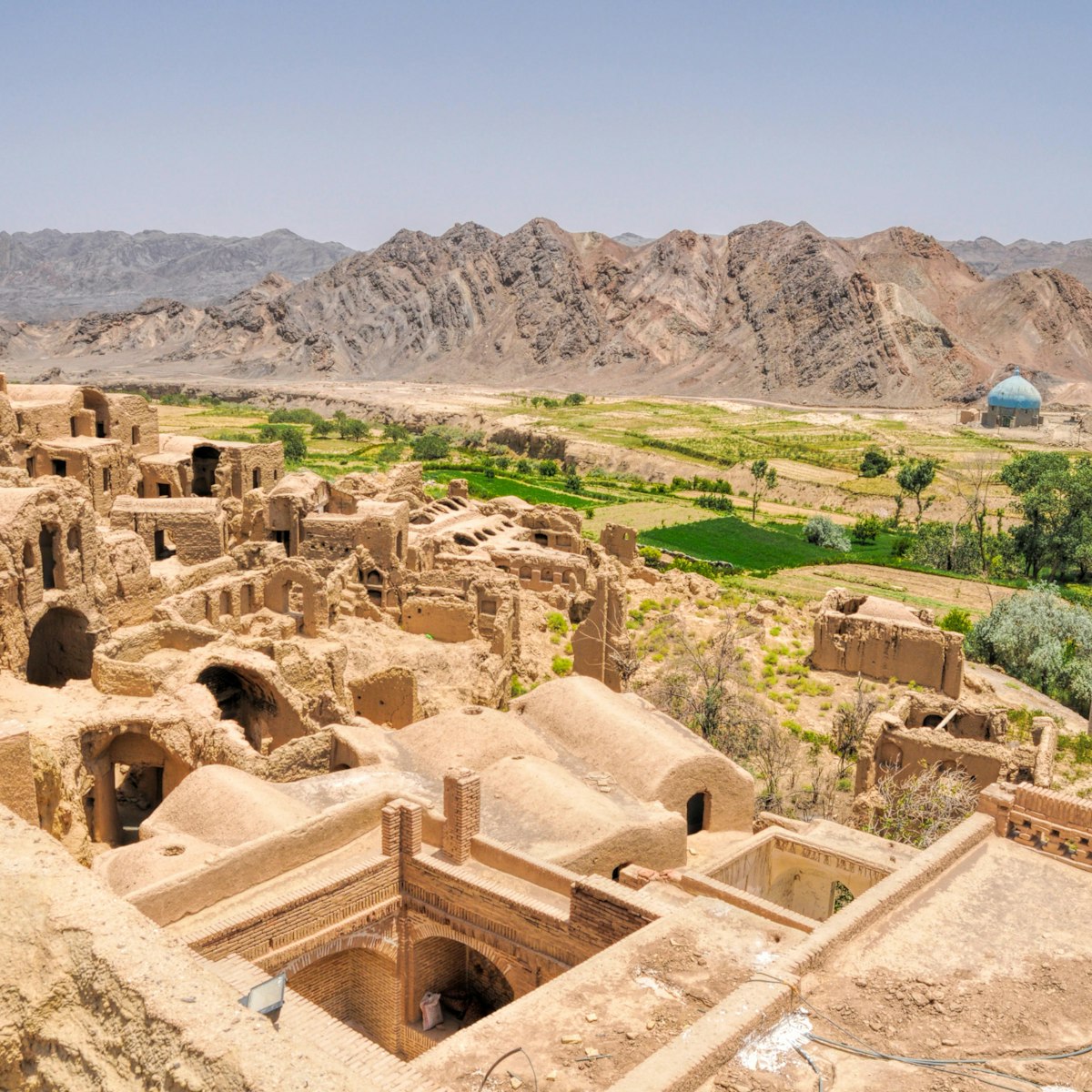
With its numerous badgirs (windtowers) rising above a labyrinth of adobe roofs, the historic old city of Yazd is one of the oldest towns on earth. Listed…
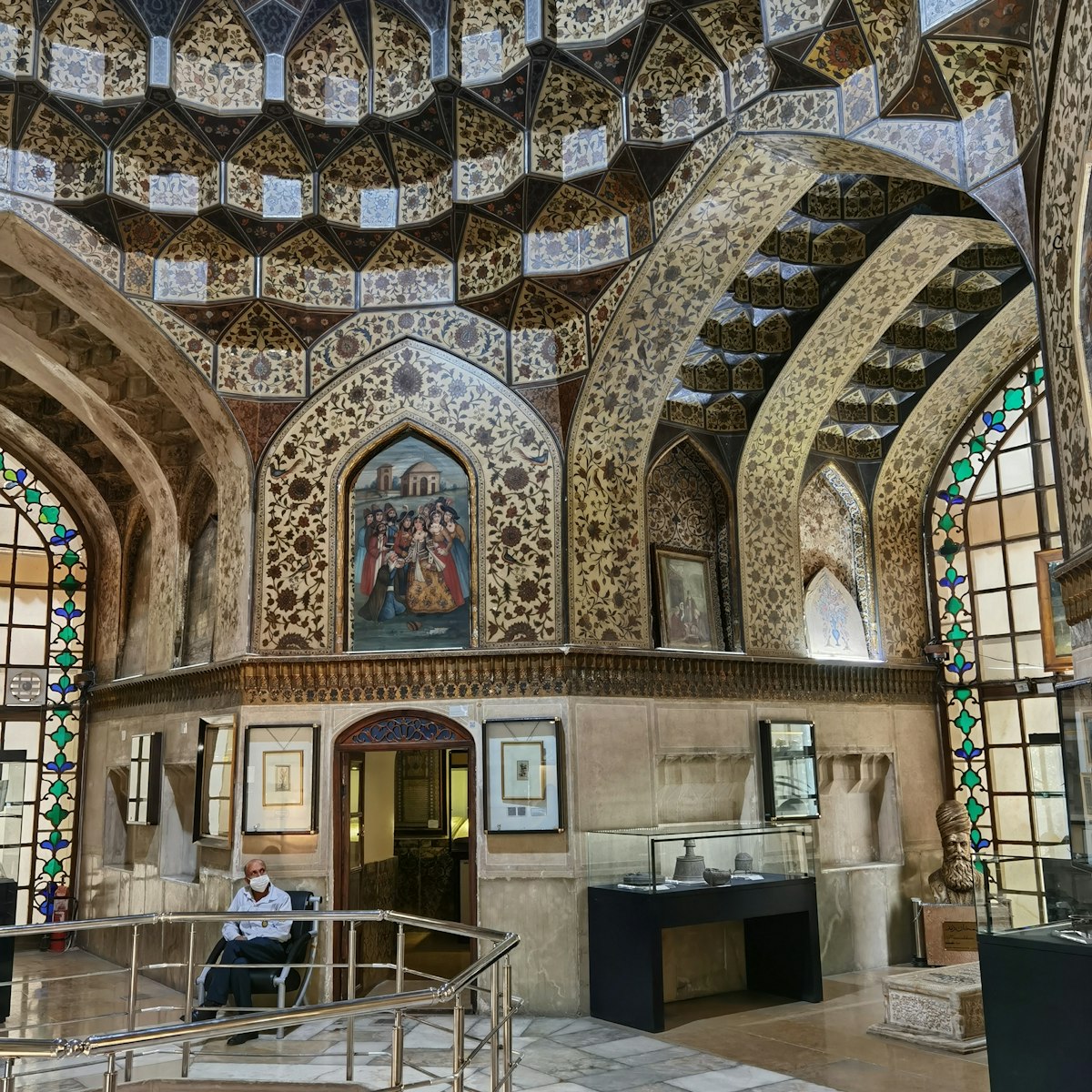
Pars Museum
The tiny but beautiful pavilion housing this museum is as much of an attraction as the fine collection showcased therein.

Naranjestan-e Ghavam Pavilion
Set within an exquisite garden, Bagh-e Naranjestan, this pavilion was built for the wealthy and powerful Mohammad Ali Khan Qavam al-Molk between 1879 and…
Bagh-e Nazar
This formal garden encompasses an octagonal pavilion, which is now home to the Pars Museum. Karim Khan once received foreign dignitaries in the pavilion,…
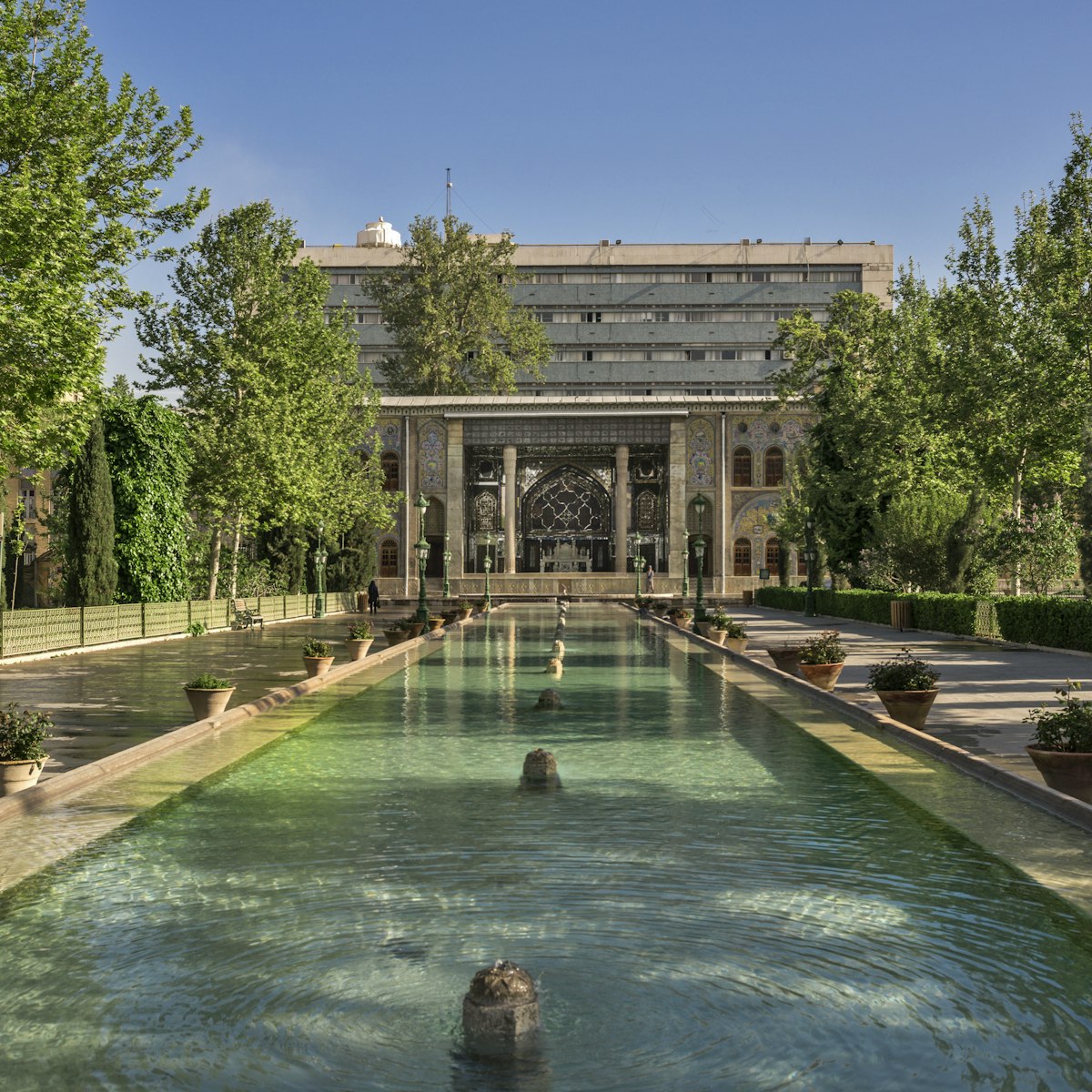
Golestan Palace
The glories and excesses of the Qajar rulers are played out across this complex of grand buildings decorated with beautifully painted tiles and set around…
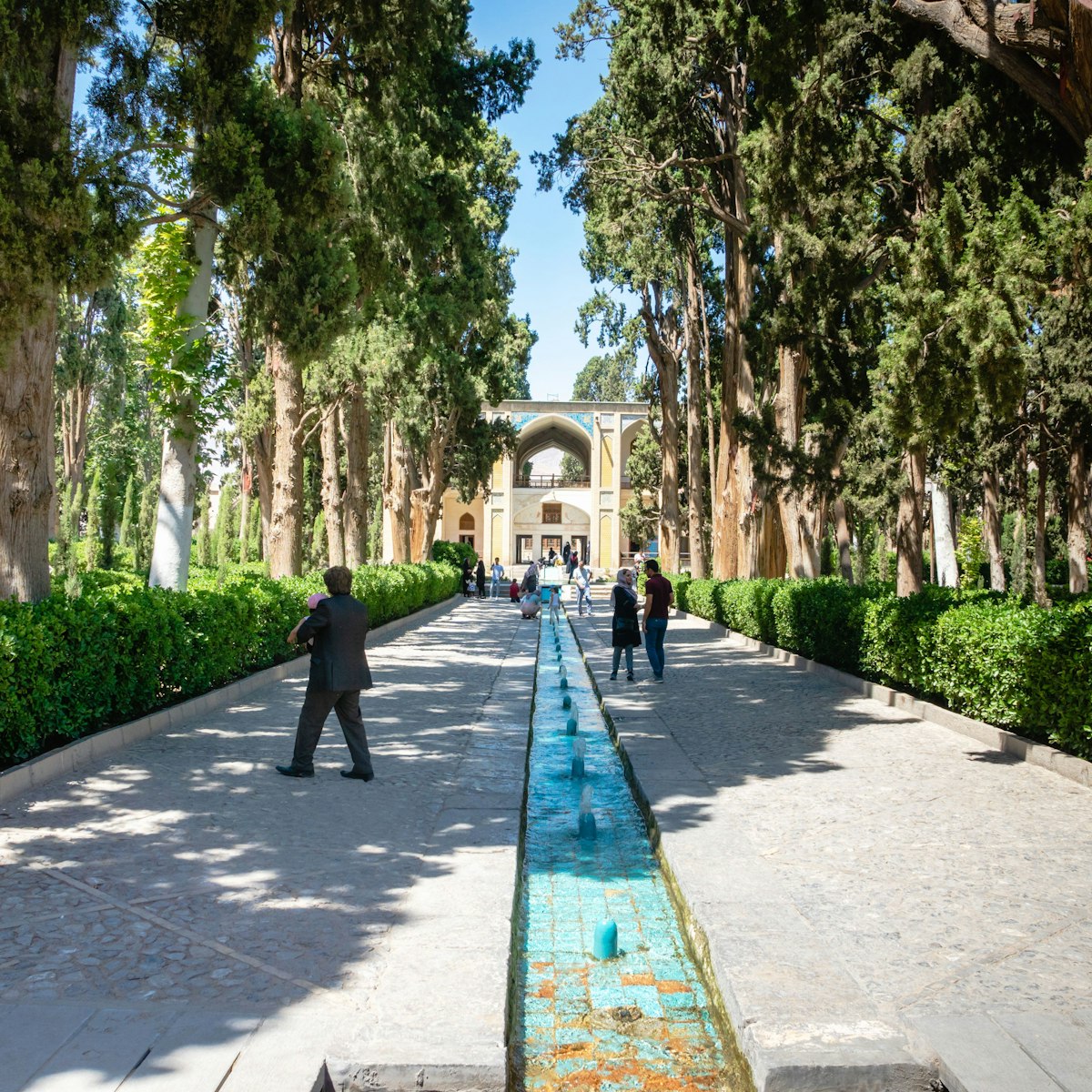
Designed for Shah Abbas I in the 16th century, this delightful garden with its symmetrical proportions, old cedars, spring-fed pools and fountains is…
Choqa Zanbil Ziggurat
Choqa Zanbil’s magnificent, Unesco-listed brick ziggurat is the world's best surviving example of Elamite architecture. Even if you’re not a fan of…
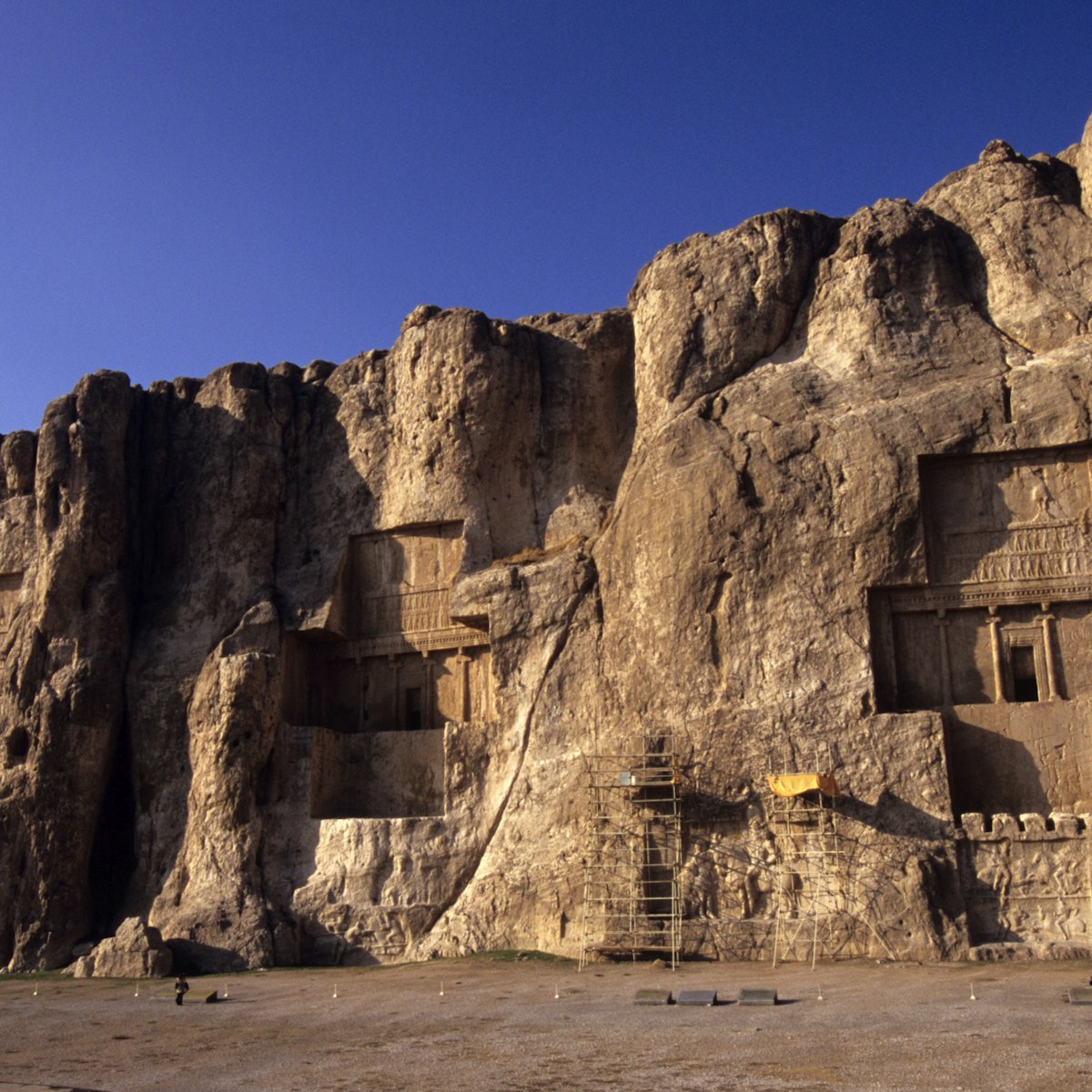
Naqsh-e Rostam
The spectacular rock tombs at Naqsh-e Rostam are a must-see. Hewn out of a cliff high above the ground, the four tombs are believed to be those of Darius…
Sa’d Abad Museum Complex
Sprawling across the foothills of Darband, this estate was a summer home to royals since the Qajar dynasty, although it was the Pahlavis who expanded it…
Grand Bazaar
The maze of bustling alleys and the bazaris (shopkeepers) that fill them make this a fascinating, if somewhat daunting, place to explore. Despite being…

Treasury of National Jewels
Owned by the Central Bank and accessed through its front doors, the cavernous vault that houses what is commonly known as the ‘Jewels Museum’ is not to be…
Qareh Kalisa
Sitting photogenically aloof on a barren knoll, 8km off the lonely Shot–Chaldoran road in the middle of nowhere, behind the low-rise village of the same…
Hazrat-e Masumeh
The physical and spiritual centre of Qom, this magnificent shrine is the burial place of Imam Reza’s sister Fatemeh, who died here in the 9th century…
Qal’eh Babak
Straight from Lord of the Rings, the ruined ramparts of the Babak fortress loom above a desperately sheer chasm as you edge through a narrow cleft to the…
Yazd Water Museum
Yazd is famous for its qanats (underground aqueducts) and this museum, one of the best of its kind, is devoted to the brave men who built them. Located in…
Bazar-e Sartasari
Southeastern Iran
Kerman’s magnificent 'Sartasari' ('end-to-end') Bazaar is one of the oldest and most memorable trading centres in Iran. Its main thoroughfare stretches…
Statue of Shapur I
High above the gorge, around 6km from Bishapur, a series of natural caves riddles the upper strata of the surrounding cliffs. In one of these caves lies…
Haram-e Razavi
Imam Reza’s Holy Shrine is enveloped in a vast series of sacred precincts collectively known as the Haram-e Razavi, or Haram for short. This magical city…
Niyavaran Cultural-Historic Complex
In the Alborz foothills is the palace where Shah Mohammad Reza Pahlavi and his family spent most of the last 10 years of royal rule. It’s set in 5…
Qal'eh Rudkhan
The incredible Seljuk-era walled fortress of Qal'eh Rudkhan defends a steep, wooded spur of the Alborz mountains some 50km south of Rasht and makes a…
Iran Holy Defense Museum
This epic-scale museum, on a landscaped site of 21 hectares, is dedicated to the Iran–Iraq War, a bloody eight-year conflict that claimed a million lives…
Nazhvan Cultural & Recreational Resort
This huge park on the outskirts of Esfahan encompasses a large complex of attractions that makes a pleasant contrast to Esfahan's intense city experience…
With lush date-palm groves, domed mud-brick houses, carpet-saddled camels and a distant backdrop of arid mountain ridges, it's hard to imagine a more…
Shushtar Historical Hydraulic System
Listed by Unesco as a 'masterpiece of creative genius', the Shushtar Historical Hydraulic System has been diverting water for irrigation from the Karun…
Azadi Tower (Borj-e Azadi)
The inverted-Y-shaped Azadi Tower, built in 1971 to commemorate the 2500th anniversary of the first Persian empire, is one of Tehran's visual icons…
Sheikh Safi-od-Din Mausoleum
Western Iran’s most dazzling Safavid monument, and a World Heritage Site, the Sheikh Safi-od-Din Mausoleum is relatively compact. The patriarch is buried…
Saheb A Zaman Zurkhaneh
The cavernous ab anbar (water reservoir), built around 1580, resembles a 29m-high standing egg from the inside. Crowned with five burly badgirs, this…
Qeshm Island
This fishing village on the northern coast of Qeshm Island is the best place in Iran to encounter the fast-disappearing traditional culture of the Persian…
More destinations you need to see

- Middle East
- 20 Must Visit Attractions In...
Must-Visit Attractions in Iran

Steeped in history, culture, and nature, Iran is home to a wealth of attractions and things to do and see . It might be difficult to figure out which places should be your priority, but here’s a list of Culture Trip’s favorite attractions that you can’t miss on your trip to this exciting country. Did you know you can now travel with Culture Trip? Book now and join one of our premium small-group tours to discover the world like never before.
Once the capital of the first Persian Empire and birthplace of Persian civilization, it’s vital that you visit Persepolis . In fact, you haven’t seen Iran unless you’ve walked in the footsteps of the ancient kings.
Valley of the Stars
Qeshm offers pristine nature and a world of mystery , but if there’s one attraction not to miss, it’s the Valley of the Stars. Marl and sandstone make up the other-worldly rock formations, and with a little imagination, you can see animals, faces, and hands among other things.
The first Iranian site registered with UNESCO, Chogha Zanbil is a 13th-century BC ziggurat in the Khuzestan province. Baked bricks with cuneiform inscriptions are layered in the structure, and a centuries-old footprint of a child in the stone is roped off towards the back.
Babak Castle
A bit of athleticism and no fear are required to reach Babak Castle. Once the stronghold of a Khurramite leader who fought the Abbasid Caliphate, this citadel, surrounded by deep gorges, sits at the height of 2,300–2,600 meters (7,546–8,530 feet). Those with a strong case of acrophobia might choose to admire it from afar.
Nasir ol-Molk Mosque

Walking inside Nasir ol-Molk is like walking inside a kaleidoscope. Nicknamed “the Pink Mosque” for its rosy-hued tiles, you’ll love discovering the hidden nooks of arguably Iran’s most beautiful mosque.
Anzali Lagoon

Located in the northern port city of Bandar Anzali, a boat ride on Anzali Lagoon is a must to witness the houses built on stilts, various bird species, and, of course, the water lotuses emerging to blossom through the dark waters.
Chalus Road
Are you traveling to the north? Then definitely take the famous Chalus Road. Steep roads snaking down the mountainside, tunnels carved in solid rock, and natural springs and bodies of water make this one of the most scenic routes in Iran.
Naqsh-e Jahan Square
Once a royal polo field, Naqsh-e Jahan Square in Esfahan holds Ali Qapu Palace, Imam Mosque, Sheikh Lotfollah Mosque, and the Imperial Bazaar. You’ll need the better portion of a day to see it all properly.
Shushtar Historical Hydraulic System

A feat of engineering, the Shushtar Historical Hydraulic System , an ancient irrigation system dating back to the 5th century BCE, is sure to leave you awe-struck. Climb the hill behind it to marvel at the view from above before exploring the details of the mechanism and the many bird species living here.
Bridges of Esfahan
Whether it’s Si-o-seh Pol, the Khaju, or one of the other nine bridges, a romantic stroll along the marvelous architecture of Esfahan’s bridges on the Zayandeh River is a must. The Persian poetry often recited in these locales echo through the arched chambers and will seem like Scheherazade’s 1001 Nights .
Kashan’s historical homes
Exquisite ceilings, magnificent frescoes, and grand courtyards filled with pomegranate trees are what you’ll get in one of the breathtaking historical homes in the desert city of Kashan. This city is best seen in the spring before it’s too hot and while you can catch the rosewater festival .
Sheikh Safi al-din Khanegah and Shrine
Located in Ardabil, this shrine is the tomb of Sufi mystic leader Sheikh Safi al-din. Different areas such as a library, mosque, school, and mausoleum make up this site, and the architecture is in keeping with the principles of Sufi mysticism.
Pigeon Towers
While people usually see pigeons as mere nuisances, especially for city dwellers, they were quite valuable in Iran about five centuries ago, namely for their droppings. These towers were built as pigeon homes, each holding as many as 14,000, where the droppings could be collected and used as fertilizer.
Literally “drip-drip,” Chak Chak is a Zoroastrian temple located just outside of Yazd. The most important Zoroastrian pilgrimage site in Iran, many Zoroastrians visit the temple every year. Once you’ve seen the similar sites in Yazd, a visit here gives further insight into this religion. Find directions here .
Rudkhan Castle
This military complex was initially built on two mounts during the Sassanid era and rebuilt a few centuries later. Known as the “castle of a thousand steps” because that’s how many you have to climb to get to the top, Rudkhan Castle is worth the effort.
Katalekhor Cave
Discovered less than a century ago, the formations in Katalekhor Cave are said to date back to the Jurassic period. This cave sits outside of Zanjan, and though it is less visited than Ali Sadr Cave , the two are thought to be connected.
If you’re going to visit one Persian poet, it must be Hafez. Stroll around the garden and tomb in the evening as tourists and locals come to pay their respects and recite a few lines of his poems. You can even have your fortune read to see what the great poet predicts for you.
Hormoz Island
For such a small island, Hormoz is brimming with dreamy nature and tranquility. Shades of red, yellow, and orange color the land area, which contrasts beautifully with the Persian Gulf’s blue water. A dream for geology and nature enthusiasts, this island is also home to deer and other fauna.
Iran’s first natural UNESCO site and hottest place on earth for seven years, the barren Lut Desert offers an unusual tranquility. The sand ridges, known as yardangs, continuously change their shape, so if you visit the same spot at a later time, it might look completely different!
Bisotun and Taq-e Bostan
Bisotun and Taq-e Bostan are two historical sites located near each other in the Kermanshah Province. Rock reliefs and the statue of Hercules are fascinating remnants of Bisotun, as is the prehistoric “hunter’s cave” said to have been inhabited 40,000 years ago. Rock reliefs are also under the archway of Taq-e Bostan, the most notable image of which depicts the last king of the Sassanid Empire with Ahura Mazda (the creator in Zoroastrianism) and Anahita (a Zoroastrian diety).
If you’re interested in exploring more of the Middle East, why not join our premium nine-day adventure to Jordan ? Or for more travel inspiration, browse our collections of Epic Trips , Mini Trips and Sailing Trips to find your next exciting destination.
Since you are here, we would like to share our vision for the future of travel - and the direction Culture Trip is moving in.
Culture Trip launched in 2011 with a simple yet passionate mission: to inspire people to go beyond their boundaries and experience what makes a place, its people and its culture special and meaningful — and this is still in our DNA today. We are proud that, for more than a decade, millions like you have trusted our award-winning recommendations by people who deeply understand what makes certain places and communities so special.
Increasingly we believe the world needs more meaningful, real-life connections between curious travellers keen to explore the world in a more responsible way. That is why we have intensively curated a collection of premium small-group trips as an invitation to meet and connect with new, like-minded people for once-in-a-lifetime experiences in three categories: Culture Trips, Rail Trips and Private Trips. Our Trips are suitable for both solo travelers, couples and friends who want to explore the world together.
Culture Trips are deeply immersive 5 to 16 days itineraries, that combine authentic local experiences, exciting activities and 4-5* accommodation to look forward to at the end of each day. Our Rail Trips are our most planet-friendly itineraries that invite you to take the scenic route, relax whilst getting under the skin of a destination. Our Private Trips are fully tailored itineraries, curated by our Travel Experts specifically for you, your friends or your family.
We know that many of you worry about the environmental impact of travel and are looking for ways of expanding horizons in ways that do minimal harm - and may even bring benefits. We are committed to go as far as possible in curating our trips with care for the planet. That is why all of our trips are flightless in destination, fully carbon offset - and we have ambitious plans to be net zero in the very near future.

See & Do
Visit masouleh, iran’s most scenic village.

Guides & Tips
How to navigate transport in iran.

Food & Drink
The best iranian dishes to try that aren’t kebab.

How to Experience the Best of Mashhad in 24 Hours

The Best Day Trips From Shiraz

Discover the Underrated Islands of Iran: Hormuz and Qeshm

Film & TV
‘tehran taboo’ brings modern iran to life with unflinching style.

How Iran Is Celebrating Eid-al-Adha

Unique Experiences You Can Only Have in Iran

The Most Beautiful Beaches in Iran

How to Spend 24 Hours in Yazd, Iran

7 Alternative Places in Iran That Tourists Should Visit
Culture trip spring sale, save up to $1,100 on our unique small-group trips limited spots..

- Post ID: 1285846
- Sponsored? No
- View Payload

14 Beautiful and Historic Places to Visit in Iran
Written By: The Planet D
Updated On: January 18, 2021
Iranian travel blogging couple of Travestyle Matin and Parsa share their favorite places to visit in Iran.
There is no dearth of historic places to visit in Iran . Whether you’re traveling along the classic route or going off the beaten track, Iran’s history is bound to make an appearance on your journey.
Table of Contents
Places to Visit in Iran
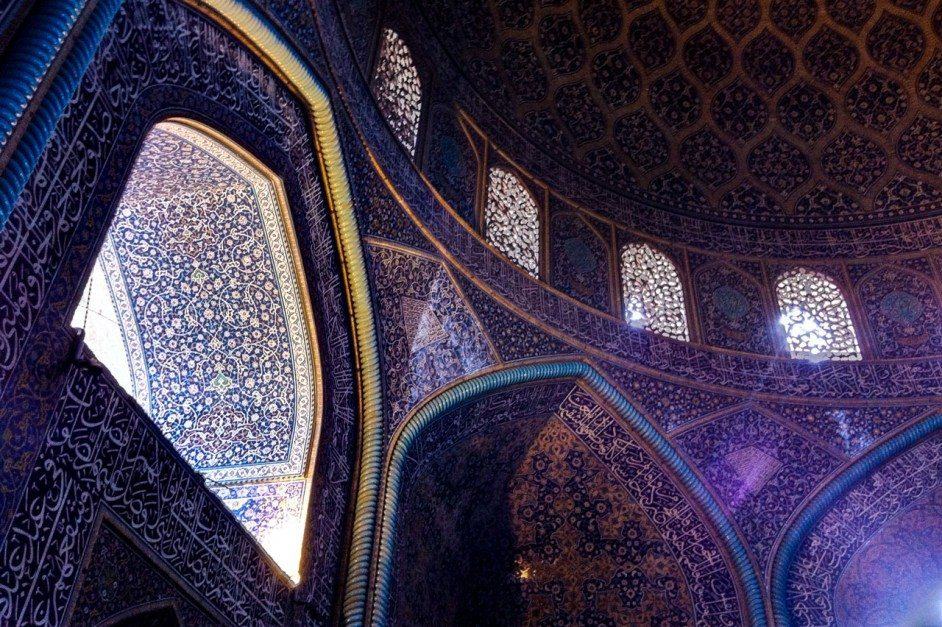
The history of Iran goes as far as 4000 BC and some of the most famous places in Iran are its historic structures.
Most first-time visitors to Iran, plan their trip to Iran along the central route – covering the cities of Tehran, Isfahan, Shiraz, Yazd and sometimes Kerman.
Historic places to visit in Iran in 10 days
It’s safe to say that Iran’s top tourist attractions are mostly located along this trail. But if you have some extra time, Khuzestan province in south-west Iran is where you’ll find some of the oldest settlements of Persia.
To guide you through a historic journey along Iran’s most famous cities, we’ve made of a list of must-visit historical attractions you should visit.
1. Persepolis
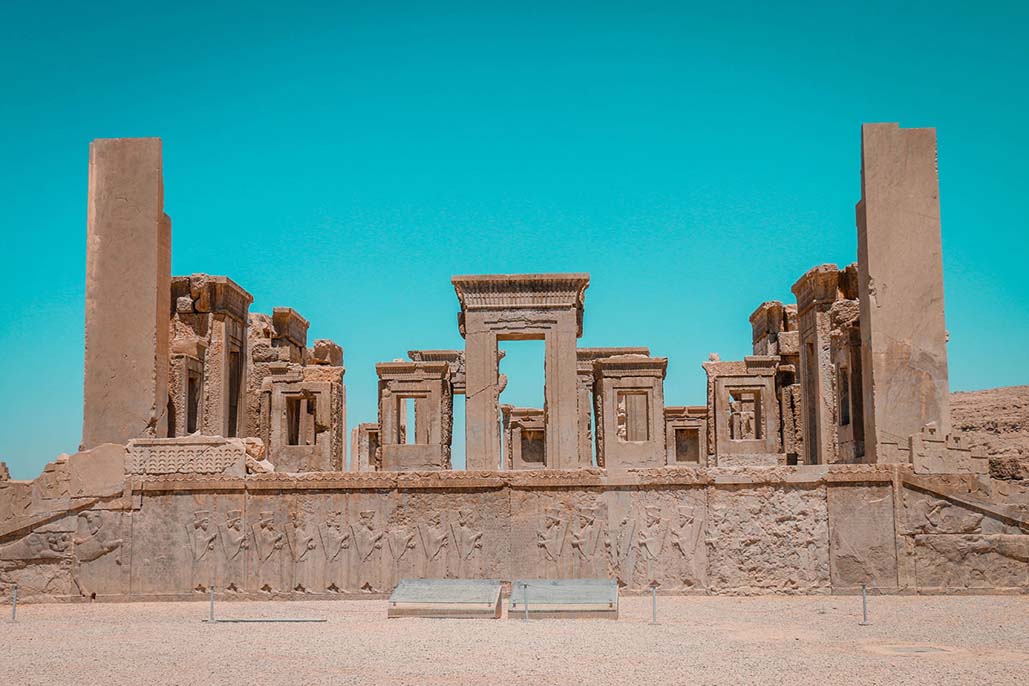
Persepolis is easily on top of the list of places to visit in Iran. It’s probably the most famous attraction in Iran that’s known around the world. And it’s also the reason many come to Iran in the first place.
Located around 60km from Shiraz, and dating back to 520 BC, Persepolis was once the glorious ceremonial capital of the Persian empire.
Persepolis was built and ruled by various Achaemenian kings during 150 years. But it’s most thriving period was at the time of Darius the Great. Although sacked and set on fire by Alexandre, you’d be surprised to see how well Persepolis has been preserved.
Today you need a good 2 hours at least to discover the sight. We’d highly suggest getting there early in the morning or late in the afternoon.
2. Naqsh-e Jahan Square
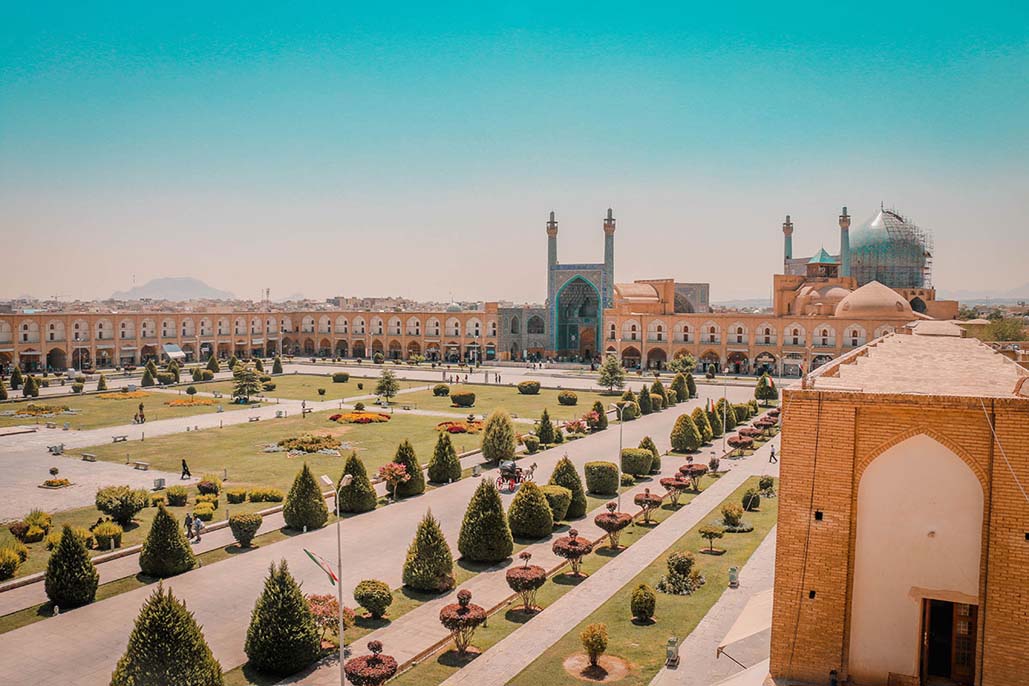
There’s a reason they call this place a pattern of the world. European travelers such as Chardin have praised Esfahan and Naqsh-e Jahan Square in all sorts of ways.
When the Safavid court chose Esfahan as its capital in the 15 th -16 th century, Naqsh-e Jahan was planned to be the centerpiece. Surrounded by two mosques, a palace, and the bazaar, the second largest square in the world is home to the jewels of the Safavid empire.
Go to the square on a summer evening and you’ll witness how it has become a popular picnic spot for local Esfahanis. Grab yourself a saffron ice cream and join the crowds.
3. Yazd old town
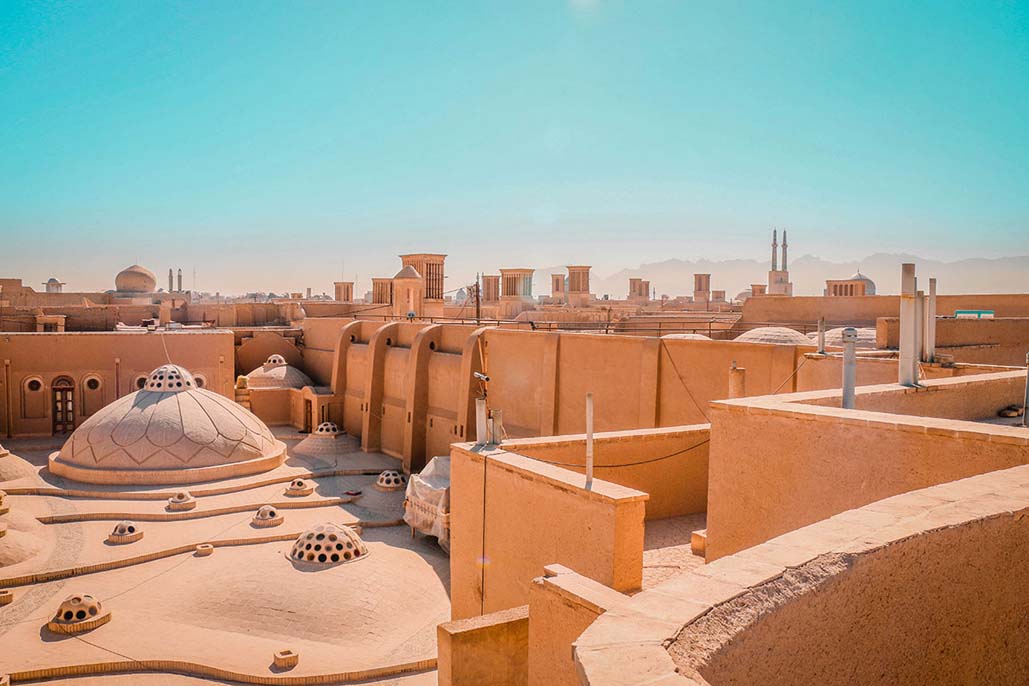
The old town of Yazd is surely the most famous place in Iran to go for a stroll. Give yourself a break from guide books and get lost in the finest adobe town of Iran.
There are mud-brick buildings with stunning courtyards, cozy rooftop cafes, roofed alleyways, and ancient wooden doors to be discovered.
4. Golestan Palace in Tehran
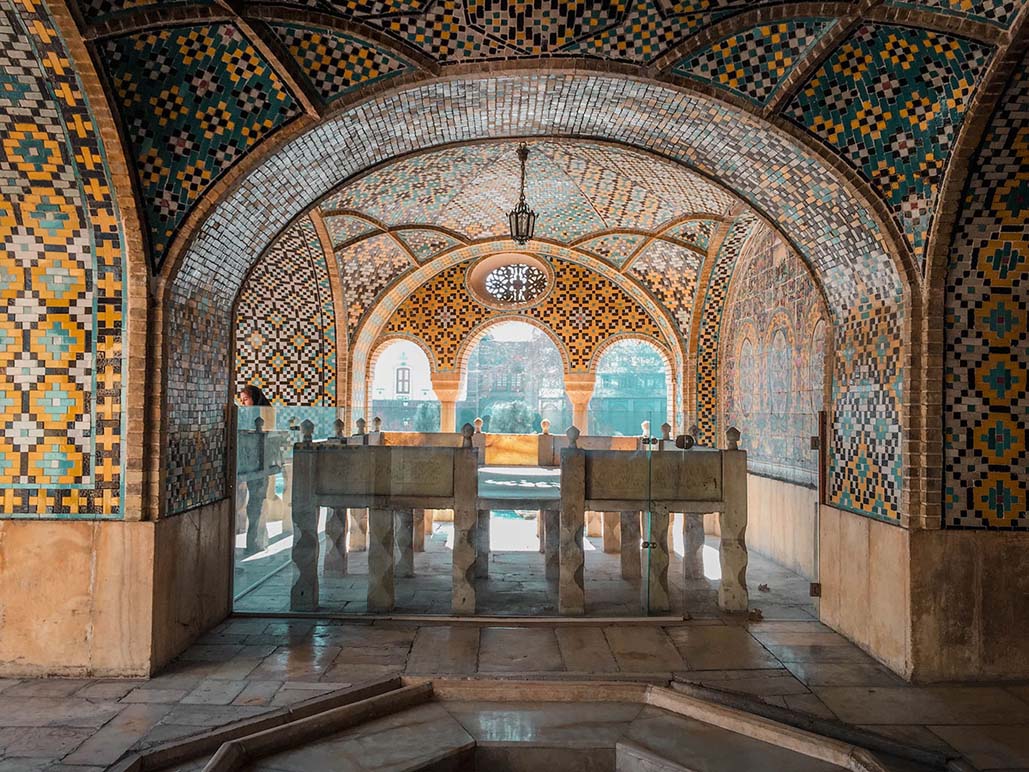
Golestan palace in central Tehran is the best example of Qajar architecture in Iran. When the first Qajar king finally named Tehran as his capital in the 18 th century, the construction of a residential palace took place.
The architecture of Golestan palace was very much inspired by the travels of Qajar kings to Europe, specifically Naser-o-Din Shah. The Shams-Al Emarat palace was considered Iran’s tallest building at the time.
Today the palace is a combination of different monuments and tickets are sold separately for each. The colorful tile work in the garden and the stunning mirror work of the Hall of mirrors are a top highlight.
5. Imam mosque of Esfahan
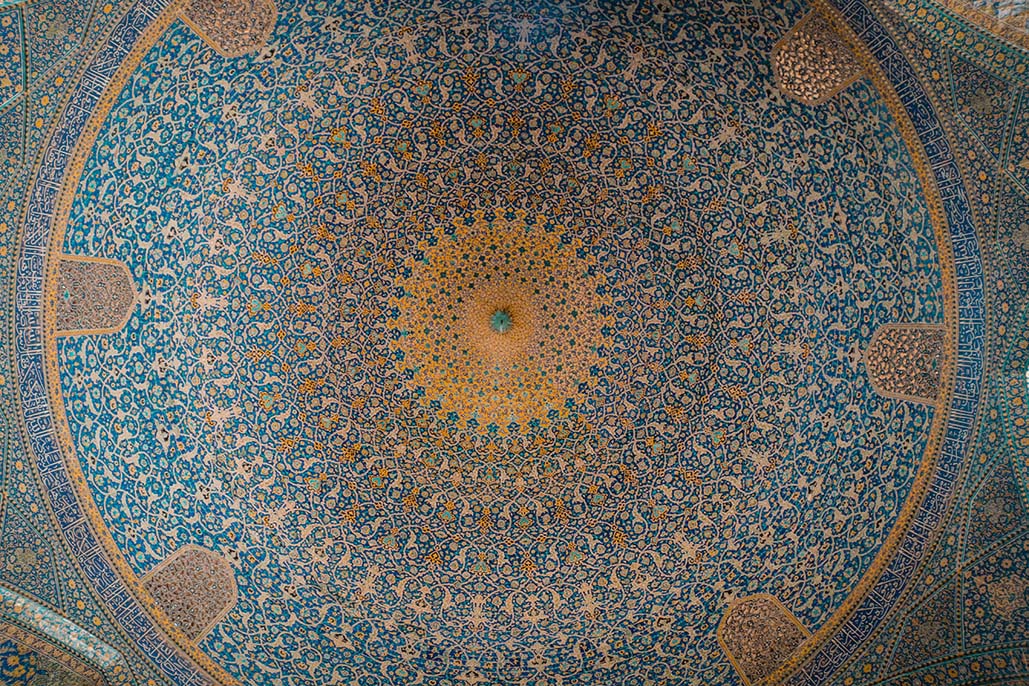
Shah Abbas I, gathered the finest architects and calligraphers to build this stunning royal mosque during his 25 years of reign. However, he never lived long enough to see it complete.
The Imam Mosque of Esfahan is the finest example of Safavid architecture. The exquisite tile work of its entrance draw visitors inside and then I promise it’s hard to leave.
6. Jameh Mosque of Yazd
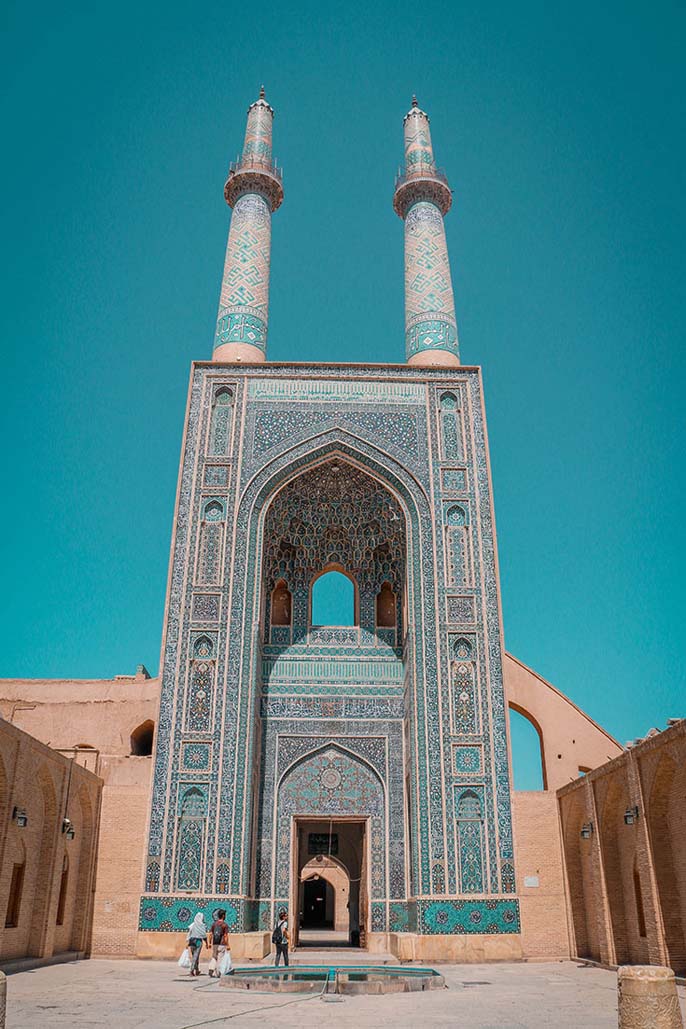
Located right in the heart of the oldtown of Yazd, the tall blue and turquoise minarets of the Jameh Mosque are almost visible from every rooftop.
The Jameh Mosque of Yazd is home to the tallest minarets of all of the country and its tile work is one of the most famous in Iran.
7. Sultan Amir Ahmad Bathhouse
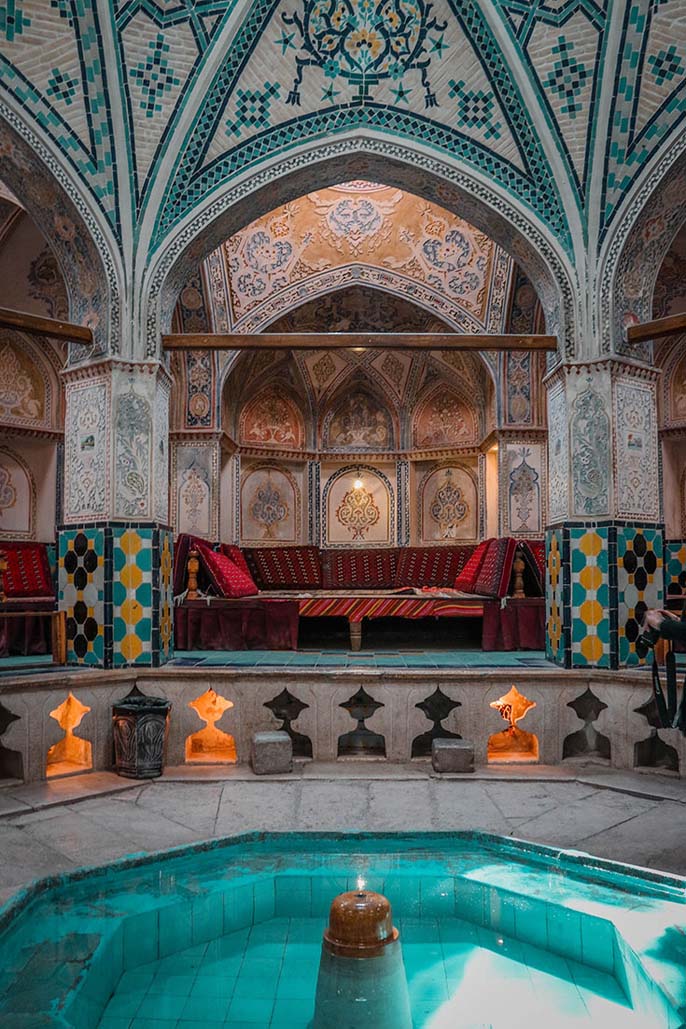
Bathhouses in Iran were not only a place for one to clean his/her body but very much a social gathering. Men and women would spend hours in separate bathhouses interacting with one another.
Today many of these old bathhouses in Iran have been turned into museums or restaurants.
While the Ganj Ali Khan bathhouse of Kerman is the most complete form of an Iranian bathhouse, we find the Sultan Amir Ahmaad bathhouse in Kashan to be the most beautiful. Make sure you head up to the roof for a great view of Kashan after your visit.
8. Necropolis or Naqsh-e Rostam, Shiraz
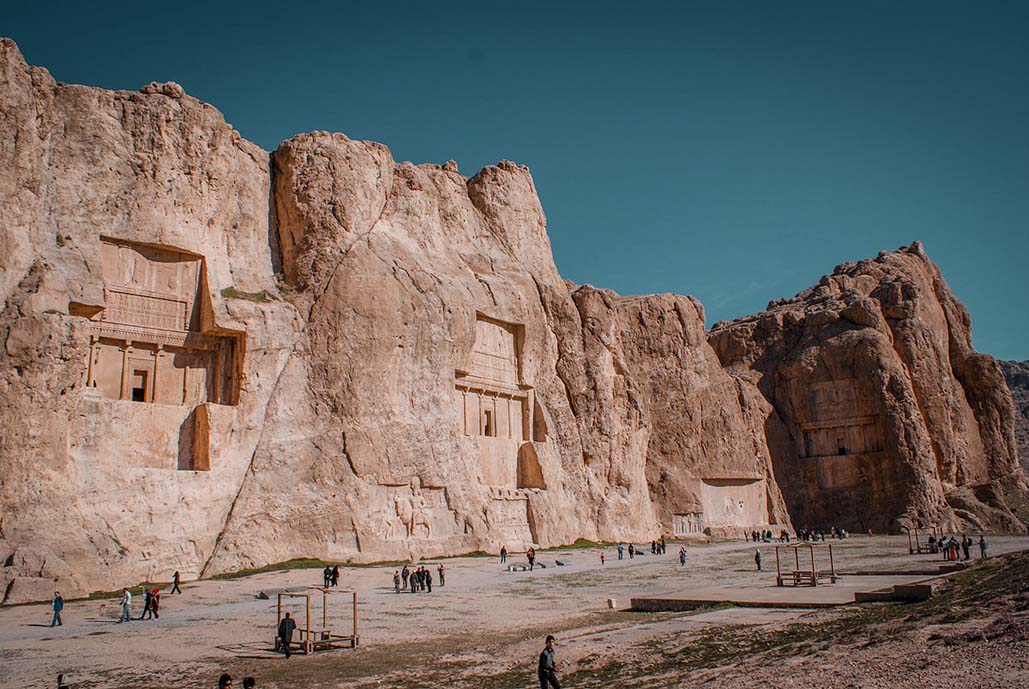
On your way to Persepolis, it’s a must to make a stop at Naqsh-e Rostam to see the Sassanid relief cuts and the huge tombs of 4 Achaemenian kings.
Carved into the rock are 4 chambers that are believed to be the tombs of Darius I, Darius II, Xerxes I and Artaxerxes I.
9. Sheikh Lotfollah mosque, Esfahan
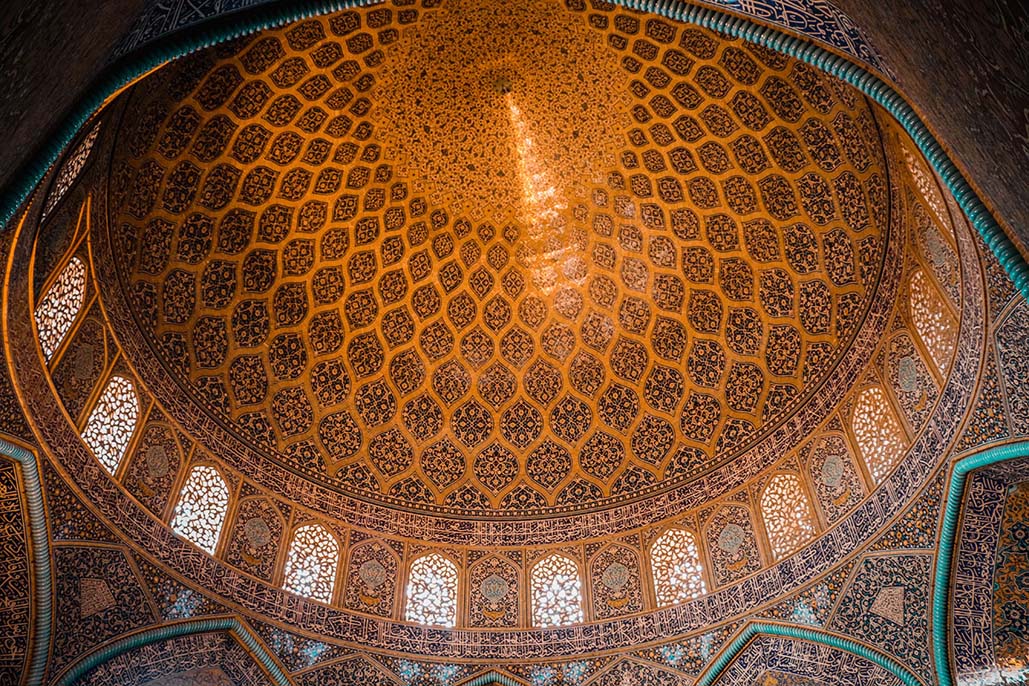
Located in Naqsh-e Jahan square and in front of Ali Qapoo palace is Sheikh Lotfollah mosque. This mosque was designed for the women of Shah Abbas’s Harem and was not accessible to the public.
Today the interior of its double-shelled golden dome is one of the most photographed attractions of Iran. Interestingly, the mosque does not come with any minarets.
10. Nasir-ol Molk Mosque (Pink Mosque), Shiraz
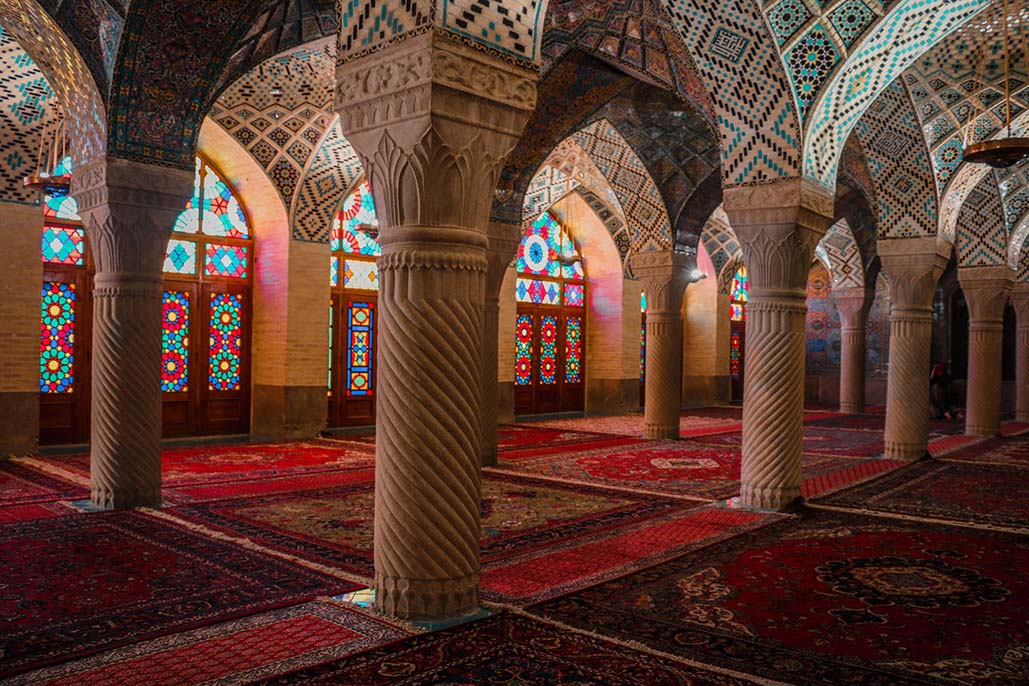
This is the most intagrammable place in Iran without a doubt. Head over to the mosque early in the morning and you’ll witness the colorful morning light dancing on the Persian carpets.
The mosque is well known for its striking pink dominant tile work, hence why it’s also called the Pink Mosque. Make sure you check out the fine example of Muqqarnas in the outer portal.
11. Tower of Silence, Yazd
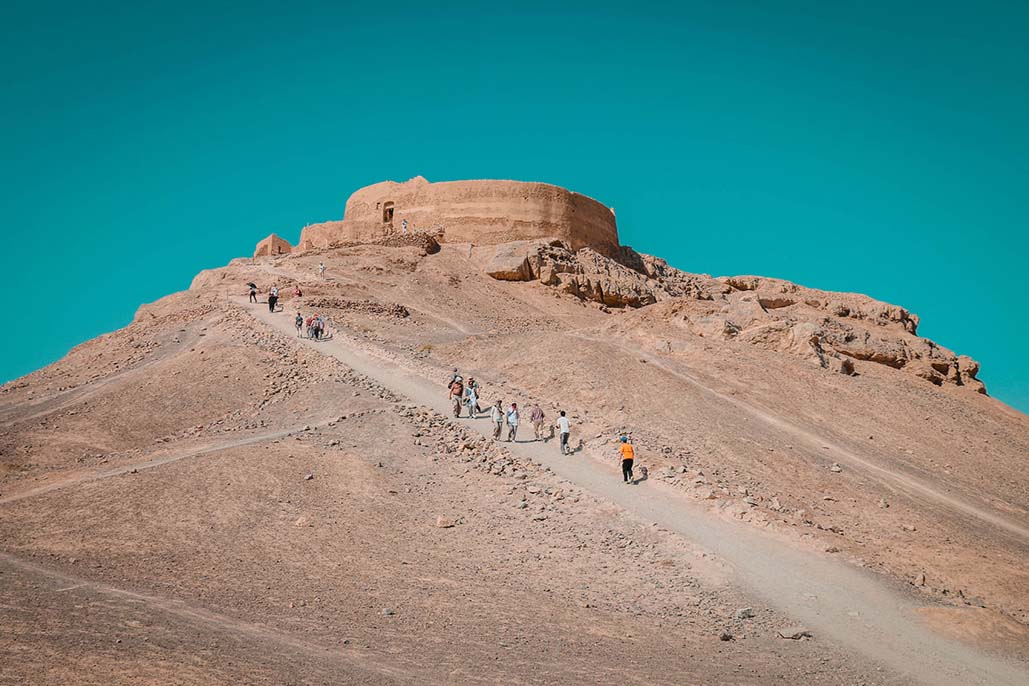
Yazd is home to the biggest population of Zoroastrians in Iran and you’re ought to add at least one Zoroastrian attraction to your list of places to visit in Iran.
Soil is considered sacred according to Zoroastrian beliefs. So it was not to be contaminated with dead bodies. Ancient Zoroastrians took dead bodies to mountain tops where they would be exposed to the sun and scavenging birds.
Today the practice is forgotten but you can witness its location on the Tower of Silence in Yazd. The tower also gives a great view of the city.
12. Shazdeh Garden of Kerman
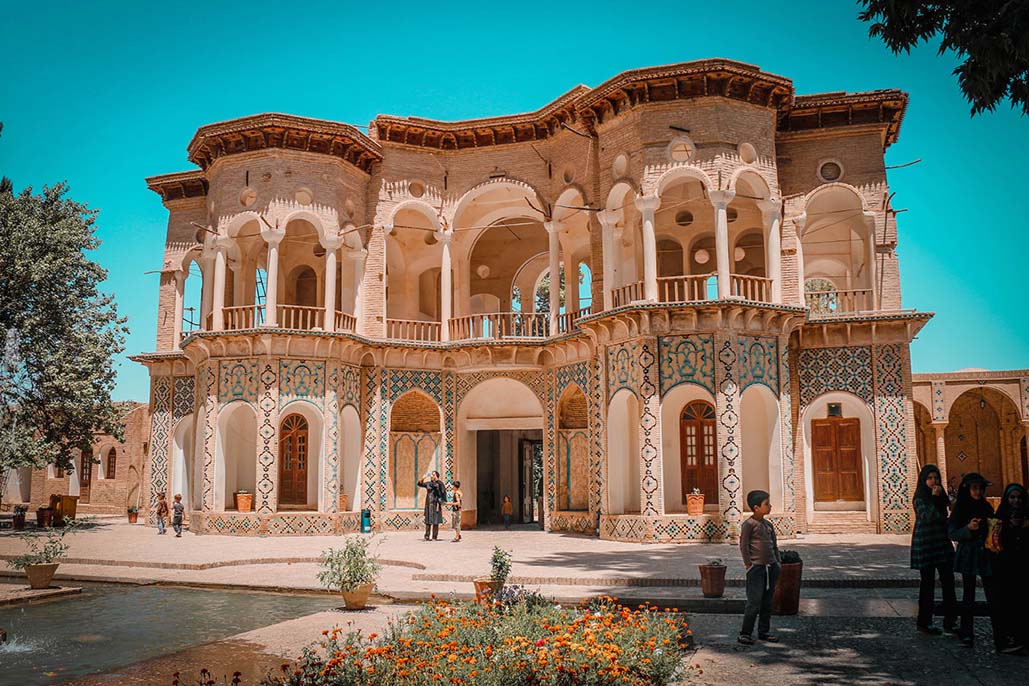
The true meaning of an oasis resembles in the Shazdeh garden of Kerman. Located right in the middle of a barren desert is this beautiful garden with fountains and flowing qanat water.
Many locals come here for a picnic but the garden and its small Qajar palace are well worth a visit.
13. Khajoo Bridge, Esfahan
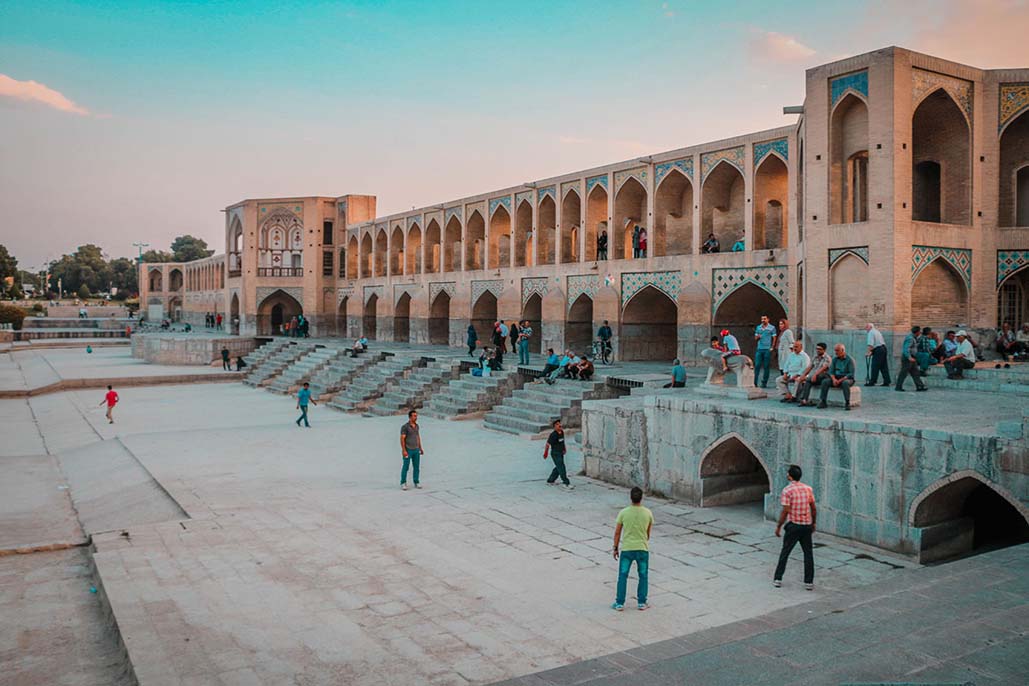
Among Esfahan’s top attractions are a few bridges. The Khajoo bridge built in about 1650 is the finest of them all.
Apart from the gorgeous architecture, the bridge is a gathering point for many of the locals. It’s common to find old men singing underneath the bridge around sunset.
Unfortunately, it’s been years since water has been flowing under the bridge all throughout the year. Due to the drought, a dam was built and the water of the river is collected for drinking. If you get lucky, you might see it flowing around springtime.
14. Tabatabai House, Kashan
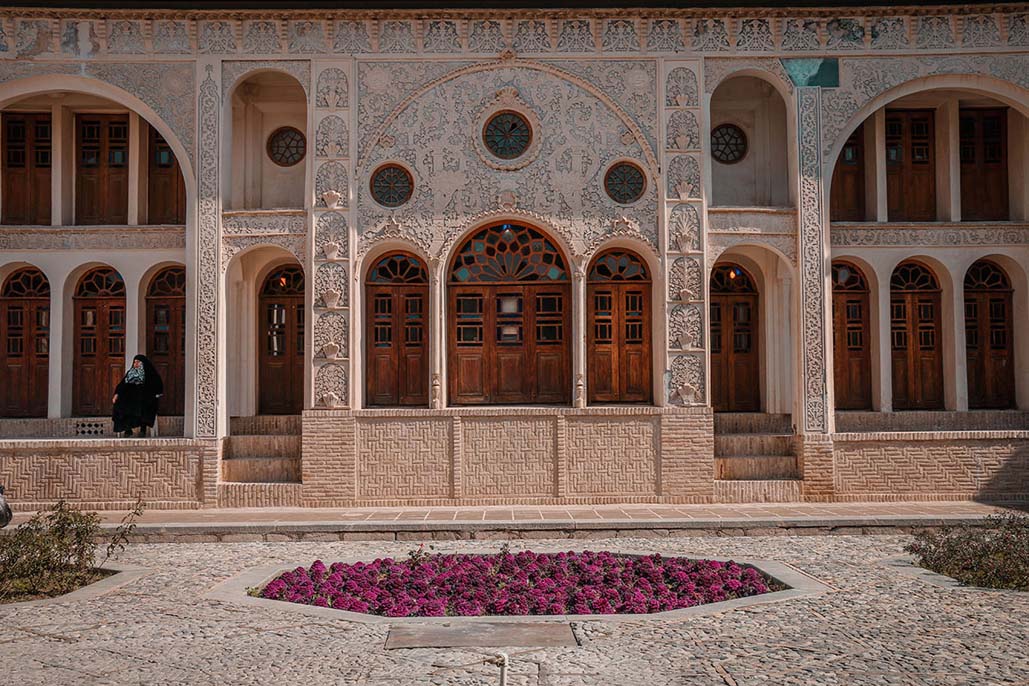
Built around 1860, the historic house of Tabatabai is one of the most beautiful mansions in Kashan.
This 5,000 square meters house well known for its stone reliefs, stucco designs, and stained window glasses.
Author Bio:
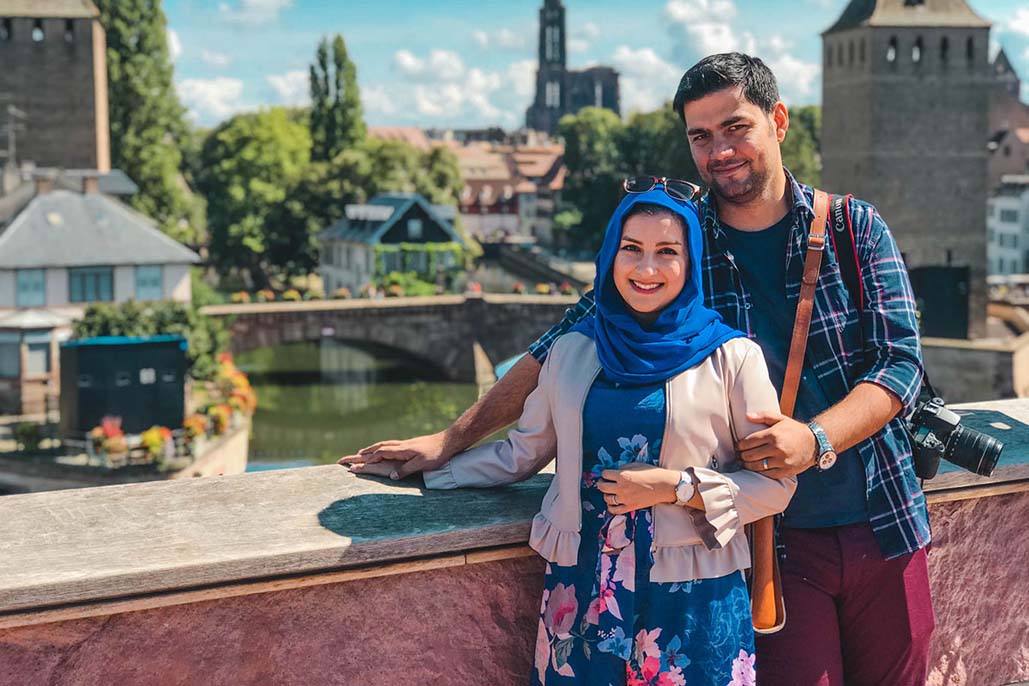
Matin and Parsa, are an Iranian travel blogging couple behind Travestyle . They provide photo-heavy destination guides with a special focus on Iran.
They live in Tehran and offer travel consulting and guiding services for those interested in visiting Iran. You can follow their blog on Facebook , Pinterest , Youtube , and Twitter .
- Middle East Etiquette Tips
- Beirut – The Paris of the Middle East
- 16 Travel Scams Around the World and How to Avoid Them
Travel Planning Resources
Looking to book your next trip? Why not use these resources that are tried and tested by yours truly.
Flights: Start planning your trip by finding the best flight deals on Skyscanner
Book your Hotel: Find the best prices on hotels with these two providers. If you are located in Europe use Booking.com and if you are anywhere else use TripAdvisor
Find Apartment Rentals: You will find the cheapest prices on apartment rentals with VRBO .
Travel Insurance: Don't leave home without it. Here is what we recommend:
- Allianz - Occasional Travelers.
- Medjet - Global air medical transport and travel security.
Need more help planning your trip? Make sure to check out our Resources Page where we highlight all the great companies that we trust when we are traveling.
You May Also Like
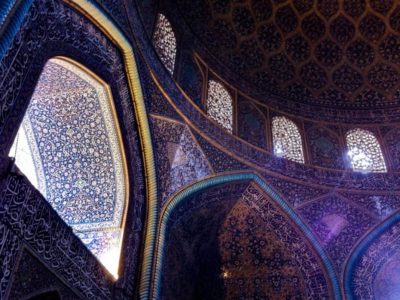
Is it Safe to Visit Iran and More Myths Debunked
About The Planet D
Dave Bouskill and Debra Corbeil are the owners and founders of The Planet D. After traveling to 115 countries, on all 7 continents over the past 13 years they have become one of the foremost experts in travel. Being recognized as top travel bloggers and influencers by the likes of Forbes Magazine , the Society of American Travel Writers and USA Today has allowed them to become leaders in their field.
Join thousands of others who get our monthly updates!
Leave a comment cancel reply.
Save my name, email, and website in this browser for the next time I comment.
6 thoughts on “14 Beautiful and Historic Places to Visit in Iran”
Hi, I’m going to travel to Iran in April, How can I book my hotels and get my Iran visa? what do you recommend?
Fantastic post, thanks for sharing. Iran looks incredible – it’s been on my bucket list a long time and I’m glad I found this article with lots of new places I can add to my Iran itinerary.
Best Wishes,
Iran is a beautiful place to visit with lots of historical attractions. Nice article. Thank you for sharing.
What great info! We plan to visit Iran next time. Loved your blog.
I love your style!!!! So fashinable!!!
Superb reading and all these tips are great,! I did not visit Iran but looks like a great place to visit soon. There are lots of old building and places. Not a bad place to making memories.
Places to Visit in Iran, Top 20: Unforgettable Journey through Persia
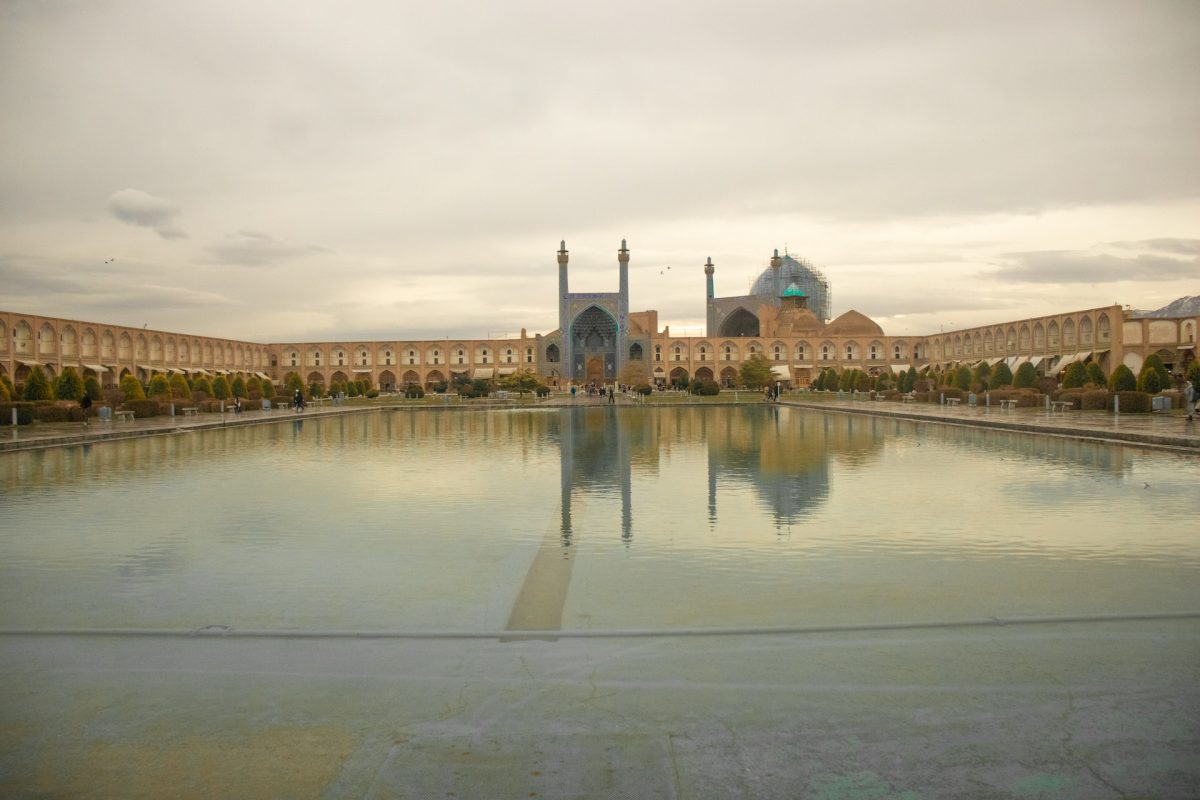
Table of Contents
Iran is a country waiting to be explored, far different from what you might have heard. It’s a place where history, friendly people, and stunning buildings come together to create something truly special. This guide will show you the places to visit in Iran – a land of breathtaking scenery, intricate architecture, welcoming locals, and timeless traditions.
Iran is a mix of history and hospitality. Its ancient mosques and palaces tell stories, while its people greet you with open arms. As you journey through Iran, you’ll discover not just beautiful buildings, but also the kindness of its people. It’s a unique experience that goes beyond what you’ve seen in the news. Let’s have a review of the top 20 places to visit in Iran:
1. Golestan Palace, Tehran
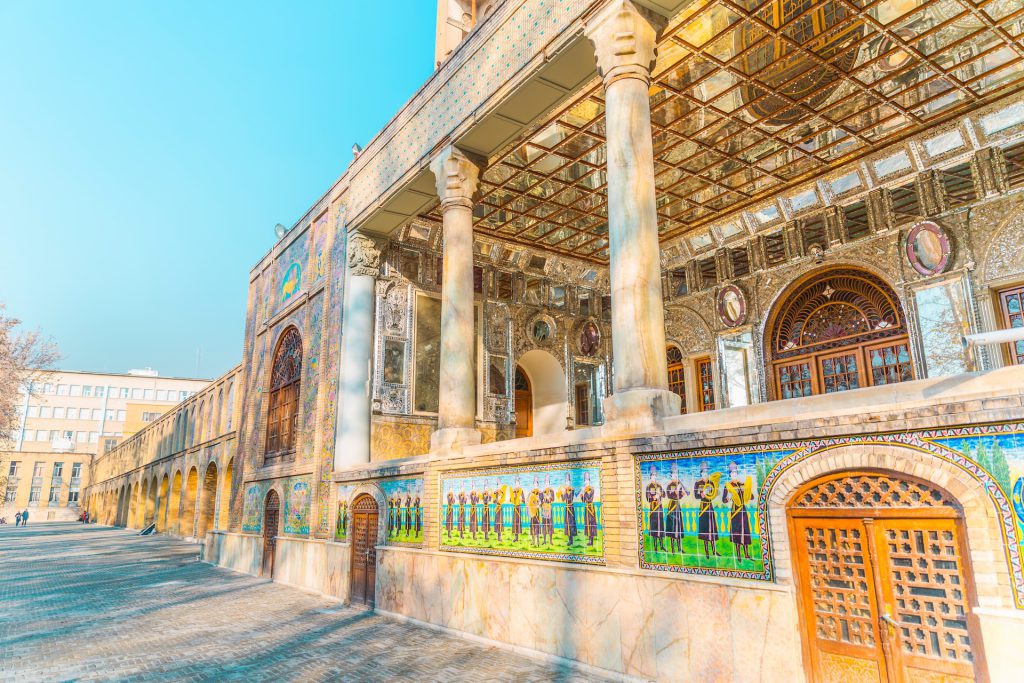
One of the great royal palaces of Tehran is Golestan Palace which is massive, and it’s easy to feel a bit overwhelmed when you arrive. Here are some must-see spots to start with: The Karim Khani Nook, once the home of the Zand dynasty’s founder from 1751 to 1779, and the stunning Mirror Hall, where royal weddings and coronations took place.
Don’t forget to check out the Edifice of the Sun, which used to give Shahs a panoramic view of the city, and the Brilliant Hall, famous for its incredible mirror work by Iranian artists. It’ll take about 2 to 3 hours to explore the whole palace. After all that walking, take a break by the peaceful pond in the main garden. Right next door, you’ll find the other bustling places to visit in Iran like Tehran Grand Bazaar, a great spot to see how locals live their lives.
2. Azadi Tower, Tehran
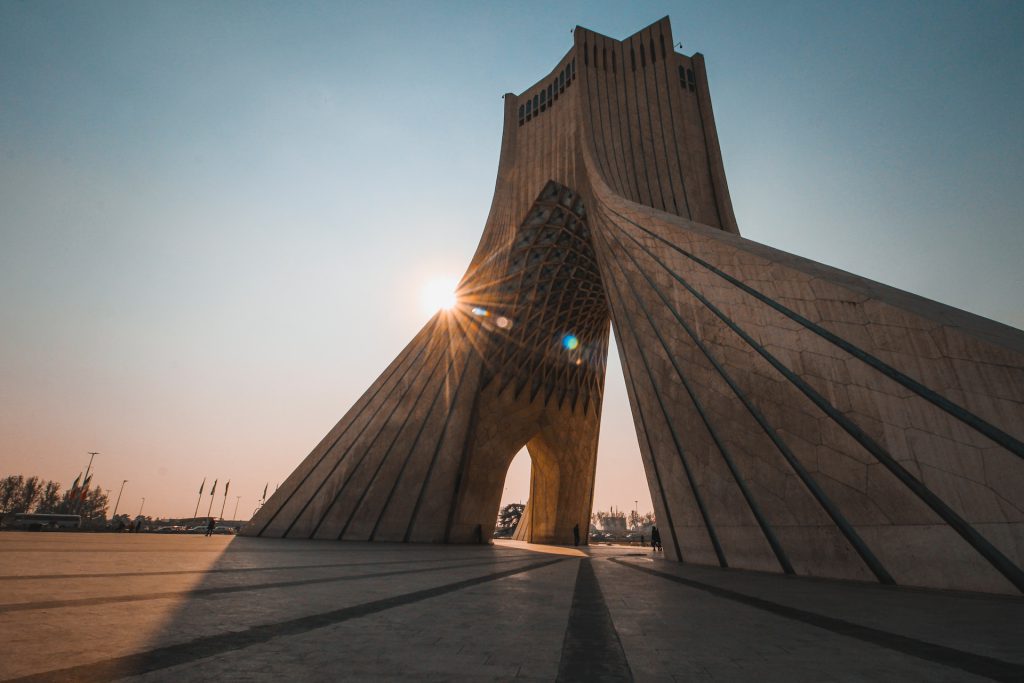
When you’re in the Metropolitan of Tehran , don’t miss the Azadi Tower (meaning Liberty Tower) – it’s one of the most famous places to visit in Iran. Built in 1971 to celebrate 2,500 years of the Persian Empire, this tower is pretty unique.
Azadi Tower blends old Persian style with a modern touch. Look at its big arch covered in 8,000 pieces of white marble – that’s something special. The tower sits in Azadi Square, which has seen its share of history. People protested there during the 1979 Islamic Revolution, and they still gather there for demonstrations today.
Milad Tower | A Beacon of Modernity in Tehran
You can get a great view of the city from the top of Azadi Tower, whether you take the elevator or climb the stairs. And if you want a break and experience other places to visit in Iran, there are galleries and a café at the base of the tower to check out. It’s not just a landmark; it’s a cool place to explore.
3. Imamzadeh Saleh, Tehran
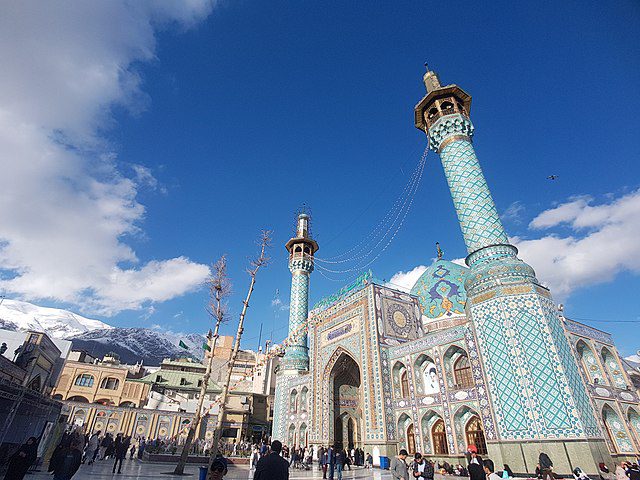
If you find yourself with extra time in Tehran, consider a visit to the beautiful Imamzadeh Saleh, also known as the Tajrish Mosque. It is one of the top religious destinations in Iran where Saleh, the son of Musa al-Kadhim (the seventh Shia Imam), is laid to rest.
Once you step inside, you can’t miss the stunning tile decorations on the mosque’s tall structures and dome. Inside, the walls dazzle with intricate mirror designs, a common sight in Iranian shrines. While you’re in the area, take a walk to Tajrish Bazaar , one of the top traditional Iran bazaars . You’ll find unique souvenirs and get a taste of local life bustling with activity.
4. Shah Cheragh Shrine, Shiraz
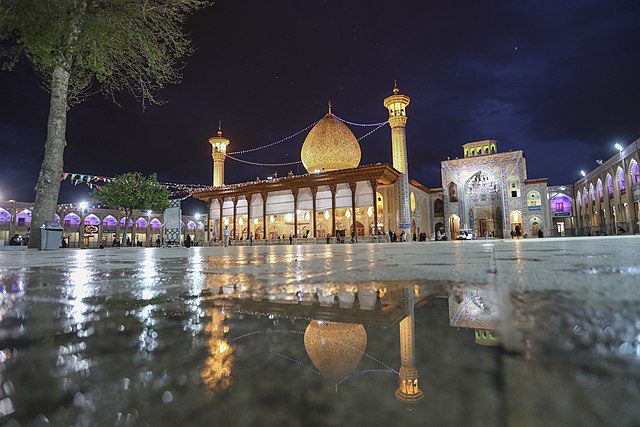
Not far from Nasir Ol Molk Mosque, you’ll come across one of the special places to visit in Iran, Shiraz – the revered Shah Cheragh Shrine , which translates to “King of the Light.”
Here’s an intriguing story: around 900 AD, a traveler noticed a mysterious light in the distance. Following it, he stumbled upon a grave that emitted a remarkable glow. Inside, they found the remains of an important Muslim figure, and as a tribute, they built a tomb.
Arg of Karim Khan: A Rich Historical Attraction in Shiraz
Over time, this site grew and became one of the significant places to visit in Iran for Shia Muslims. Today, after several renovations, the Shah Cheragh Shrine stands as a wonder that draws tourists from around the world. The inside is even more impressive than the outside. When you step in, you’ll be amazed by the intricate mirror art that covers the walls and ceilings, shining and sparkling like priceless jewels. It’s truly a sight to behold.
5. Eram Garden, Shiraz
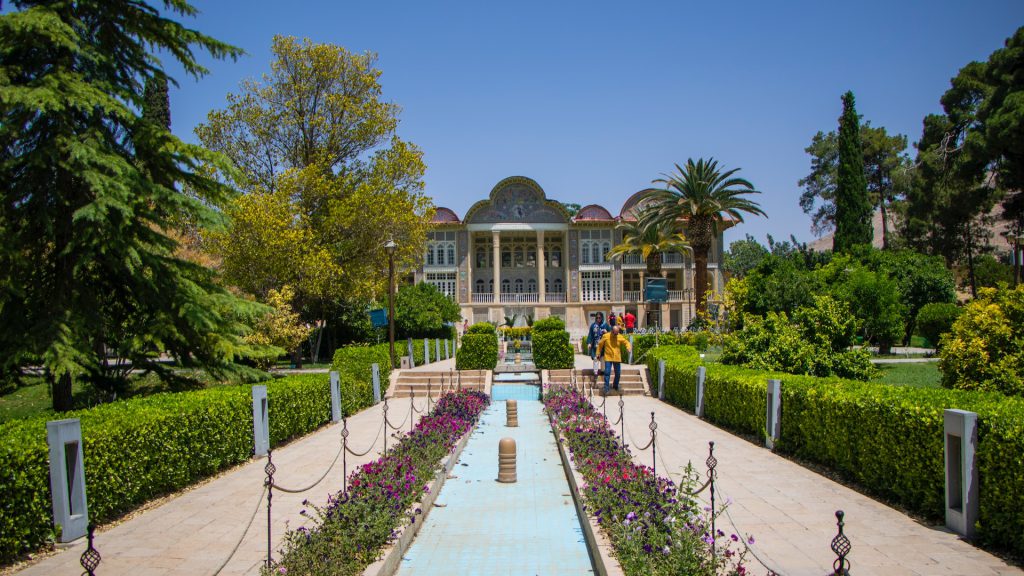
Shiraz has more than just beautiful mosques and shrines. It’s also home to one of Iran’s most wonderful gardens, Eram Garden , a UNESCO World Heritage Site . In the Quran, ‘Eram’ means a heavenly place, and as you walk through this garden, you’ll feel like you’re in paradise.
Eram Garden is filled with over 45 types of plants, 200 kinds of roses, and lots of fruit trees, including a famous 3,000-year-old cypress tree. With birds singing and the scent of flowers all around, it’s a peaceful and enchanting place.
Nobody knows exactly when Eram Garden was built, but they think it started in the 13th century during the Seljuk dynasty. It changed hands and got fixed up many times over the years before the University of Shiraz took over. The big palace by the pool even has poems by the famous Persian poet Hafez written on its tiles, making it one of the more special places to visit in Iran.
6. Vakil Mosque, Shiraz
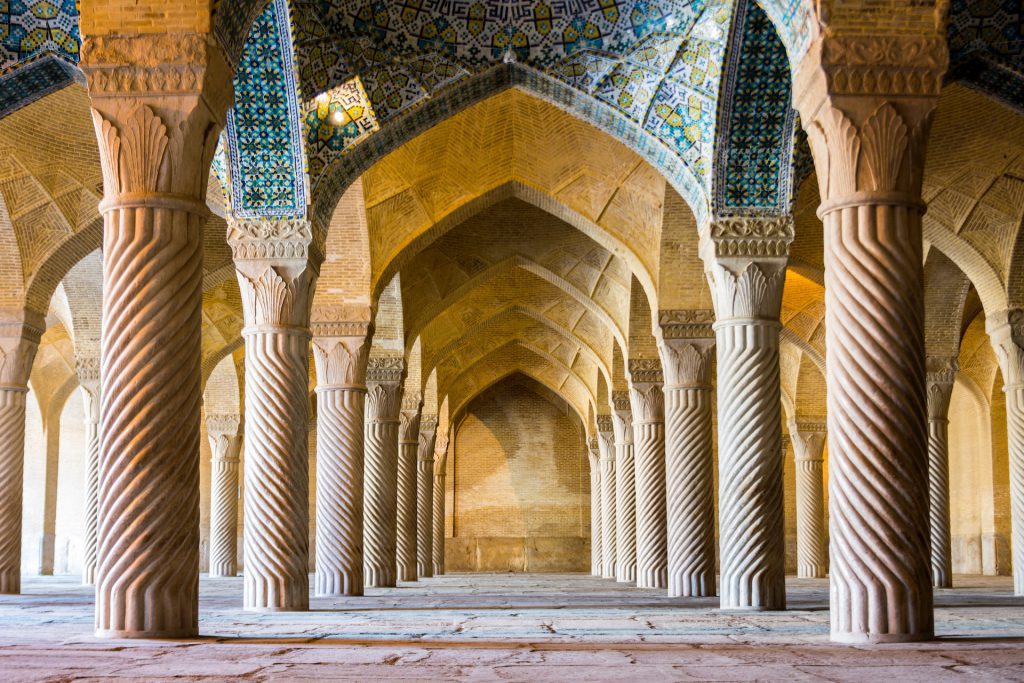
Right by the western entrance of the historic Vakil Bazaar , where you’ll find charming courtyards, old shops, and traditional bathhouses, lies one of the most remarkable places to visit in Iran, the Vakil Mosque.
This mosque, considered one of Iran’s seven wonders, was built back in the 18th century by the Zand dynasty and later fixed up by the Qajar dynasty in the 19th century. What makes it special? Well, take a look at its 48 pillars; they’re carved in spirals and adorned with these fancy acanthus leaves. It’s these unique details that make Vakil Mosque one of the true architectural places to visit in Iran.
7. Tomb of Hafez, Shiraz
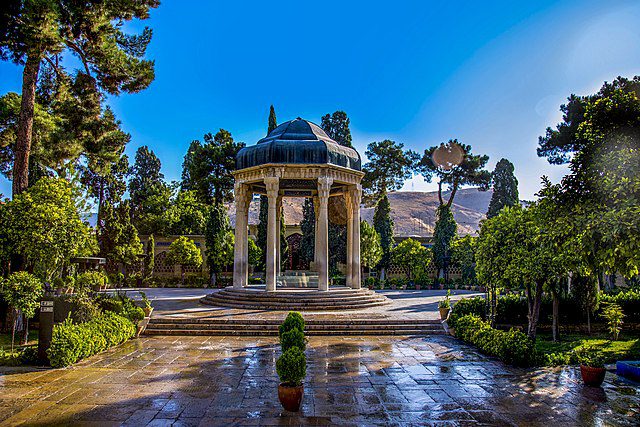
Found within the peaceful Musalla Gardens in northern Shiraz, you’ll discover the serene Tomb of Hafez, one of the best places to visit in Iran, cherished by the locals and brimming with poetic inspiration.
Born in Shiraz in 1315 and passing away in 1390, Hafez is adored as one of Iran’s greatest and most beloved poets. He’s like Iran’s version of Shakespeare—a national hero and a guiding light for Iranians. His verses, collected in the famous Dīvān, resonate widely among people of all ages in Iran, and you’d be hard-pressed to find a home without a copy of his book.
Exploring the Saadi Tomb in Shiraz
Today, Hafez’s Tomb lies beneath an open pavilion adorned with a beautiful dome adorned in intricate mosaic tiles. The garden surrounding it creates the perfect ambiance to reflect on the significance of this place, and if you’re in the mood, to enjoy some of Hafez’s heartfelt poems. You’ll also see locals gathering around the tomb to pay their respects to this literary giant, especially on October 12th, celebrated as the National Day of Hafez. Keep in mind Tomb of Hafez is definitely one of the best places to visit in Iran.
8. Persepolis, Shiraz
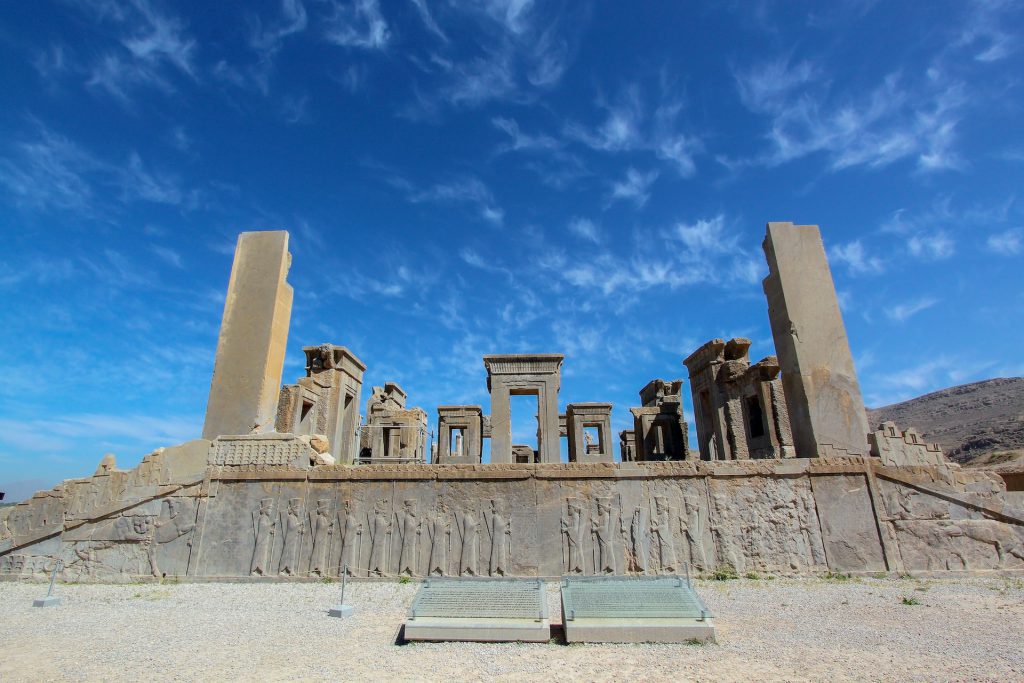
Situated approximately 60 kilometers (37 miles) northeast of Shiraz lies one of the most significant historical places to visit in Iran: Persepolis , a UNESCO World Heritage Site and the magnificent ceremonial capital of the Achaemenid Empire (550 – 330 BC), a source of immense pride for the people of Iran.
Venturing on a day trip to explore the ancient remnants of this city is one of the foremost experiences in Iran. As you stroll amidst the pillars, archways, and vestiges of what were once majestic palaces, you’re bound to feel a profound sense of awe and humility in the face of ancient Persia’s vast history.
Iran Travel: The Complete Guide You’ve Been Waiting For!
Persepolis is believed to have been commissioned by Darius I around 518 BC, with construction spanning approximately 120 years. Darius I was an unusual king of his time, renowned for his kindness towards the workers; he regularly paid and treated them well. Yet, the primary purpose of Persepolis remains shrouded in mystery, though it’s conjectured to have functioned as a grand ceremonial complex, likely occupied only seasonally.
Tragically, in 330 BC, Alexander the Great invaded Achaemenid Persia and, in a fit of drunken revenge, laid waste to Persepolis. The city was set ablaze, and he carried away an astonishing trove of gold and silver using thousands of camels and mules. It wasn’t until the 1930s that a French archaeologist, in a quest to unveil its secrets, embarked on the excavation of Persepolis.
9. Naqsh-e Rostam, Shiraz
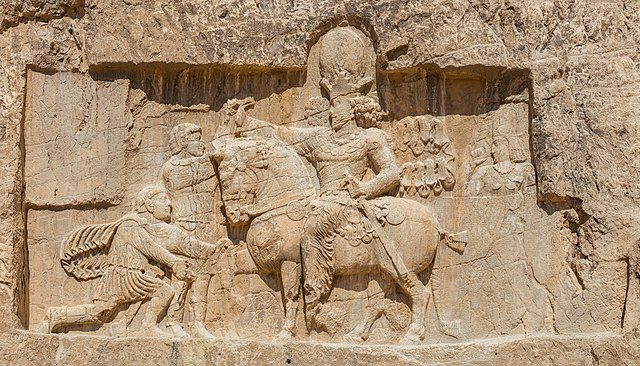
A mere 10-minute drive from Persepolis lies Naqsh-e Rostam, the regal necropolis of the Achaemenid Empire. Given its proximity to Persepolis, your taxi driver or tour guide often includes this site in your day trip itinerary, and it’s unquestionably worth a visit to marvel at the four magnificent rock-cut tombs of ancient Persian kings.
Historians still debate the identities of the kings interred within these tombs. They are certain about one, the builder of Persepolis, Darius I, but the other three are believed to be Darius II, Artaxerxes I, and Xerxes I. Carved into the cliff faces above each tomb are depictions of the kings as god-like figures.
Among these carvings, you’ll also find representations of victorious battles of the Achaemenid Empire. But perhaps the most intriguing of them all is an exceptionally ancient carving that hints at this site’s use even before the emergence of Achaemenid Persia. All in all, don’t miss Naqsh-e Rostam; it is one of the unforgettable places to visit in Iran.
10. Naqsh-e Jahan Square, Isfahan
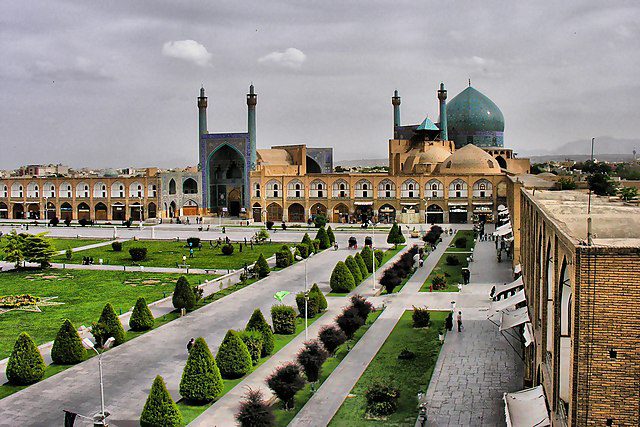
Naqsh-e Jahan Square , one of the distinguished places to visit in Iran, unfolds as a captivating and immense gathering place nestled in the heart of Isfahan. It easily claims its spot among the most stunning destinations in Iran.
This square is not just any ordinary space; it houses the enchanting Grand Bazaar, a colossal labyrinth that has stood since the 11th century. Inside, you’ll get lost in a world of vibrant handicrafts, intricate carpets, rich textiles, fragrant spices, and so much more.
Furthermore, within this mesmerizing square, you’ll encounter other fabulous places to visit in Iran, Isfahan including the Sheikh Lotfollah Mosque, the Ali Qapu Palace, the Shah Mosque, and the Qeysarie Gate. The Qeysarie Gate, in particular, stands as the primary gateway to Isfahan’s bustling bazaar. As you wander through this treasure trove of Persian culture and history, take your time to soak in the sheer beauty that surrounds you.
11. Ali Qapu Palace, Isfahan
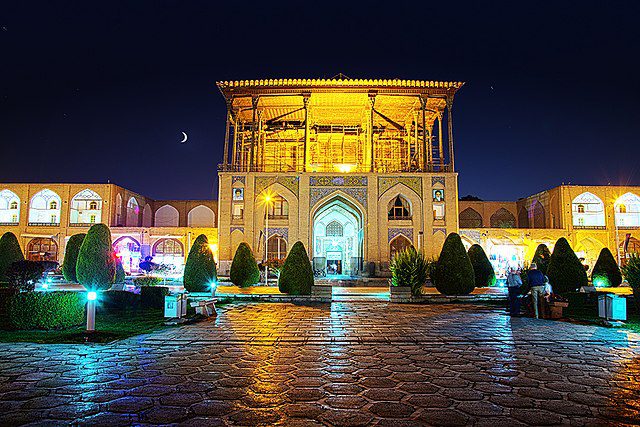
The Ali Qapu Palace , found in Isfahan, is one of the significant places to visit in Iran, built during the time of the Safavid Dynasty.
This beautiful palace is proudly listed as a UNESCO World Heritage Site. Back in the day, it served as the home of Safavid kings and the place where they held important royal meetings.
One of the most amazing parts of this palace is the terrace on the fourth floor, which gives you an incredible view of Naqsh-e Jahan Square and two of Iran’s most stunning mosques: the Sheikh Lotofollah and the Shah Mosque.
What really caught my eye was that each floor had its own special decorations. From the colorful tilework on the stairs to the detailed floral patterns and delicate stucco designs, each level had its unique and beautiful decorations to admire.
12. Sheikh Lotfollah Mosque, Isfahan
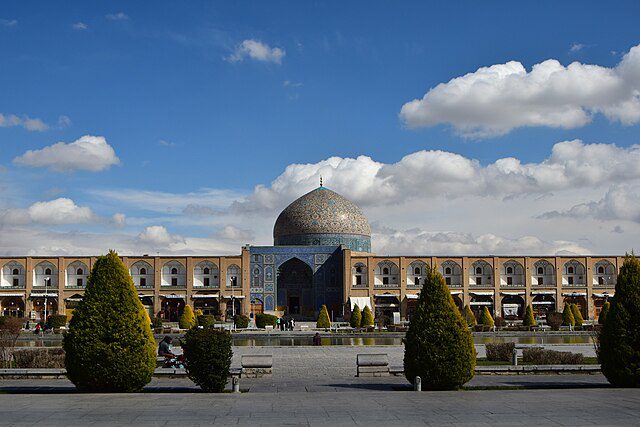
The Sheikh Lotfollah Mosque , found in the famous Naqsh-e Jahan Square, is one of the architectural places to visit in Iran from the 17th century, built during the Safavid dynasty. It’s considered the most beautiful and stunning building in Isfahan.
Originally, this mosque was made for Shah Abbas as his private royal place of worship. Because it was only meant for the king and the ladies in his inner circle, it’s smaller than other mosques and lacks a minaret. However, what truly stands out is the incredibly detailed tilework, which is even more impressive than that of the other mosques in Naqsh-e Jahan Square.
Uljaytu Altar of Isfahan Jame Mosque | A Complete Guide of Scripts
To maintain privacy, Shah Abbas constructed a secret tunnel connecting the Ali Qapu Palace to his private mosque. This allowed him and the ladies in his court to move between the two places without being seen by the public. Don’t miss Jame Mosque of Isfahan as well; it is one of the best places in Iran.
13. Khaju Bridge, Isfahan
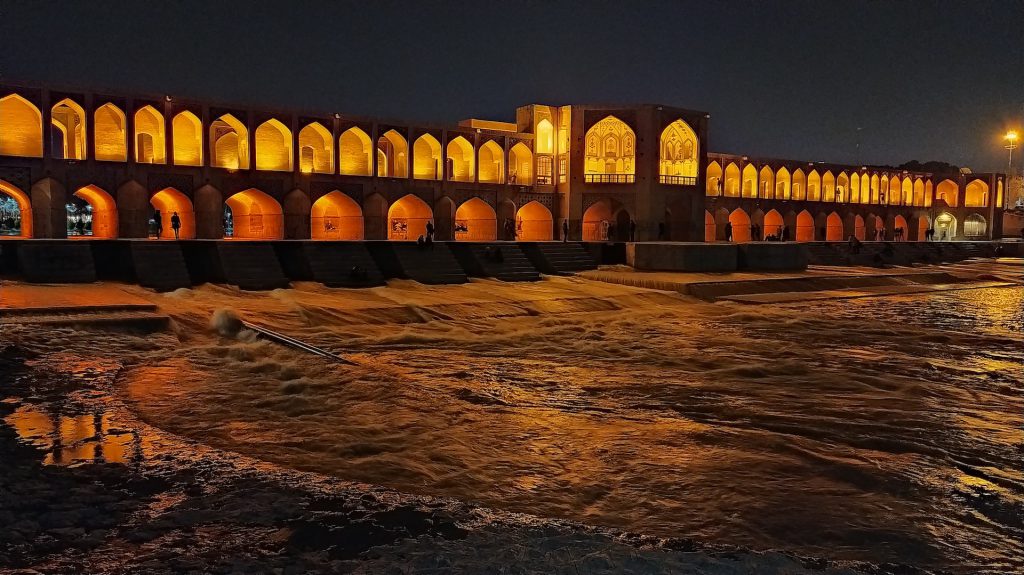
Khaju Bridge, gracing the Zayenderud River in Isfahan, is one of the stunning historical places to visit in Iran. This bridge spans one of Iran’s largest rivers, even though in dry seasons, the river may run nearly dry, with only a trickle of water. It’s during a brief period in the winter that the river comes to life.
This architectural gem, with its unique design, was constructed in the late 17th century during the Safavid era under the reign of Shah Abbas II. Adorned with delightful tilework and paintings, the bridge itself is a work of art. Its centerpiece is a magnificent octagonal pavilion, showcasing some of the bridge’s most exquisite tile designs.
The Magnificent Si-o-Se Pol |A Timeless Symbol of Isfahan’s Beauty
The real magic happens at night when Khaju Bridge is bathed in light, casting a captivating glow in the darkness. During this time, you’ll encounter scores of young people and families gathered around, socializing by the bridge.
In the summertime, locals often gather beneath the bridge to sing traditional songs and dance, creating a vibrant atmosphere. It’s a surefire way to make new friends and create lasting memories during your visit to Iran.
14. Chehel Sotoun, Isfahan
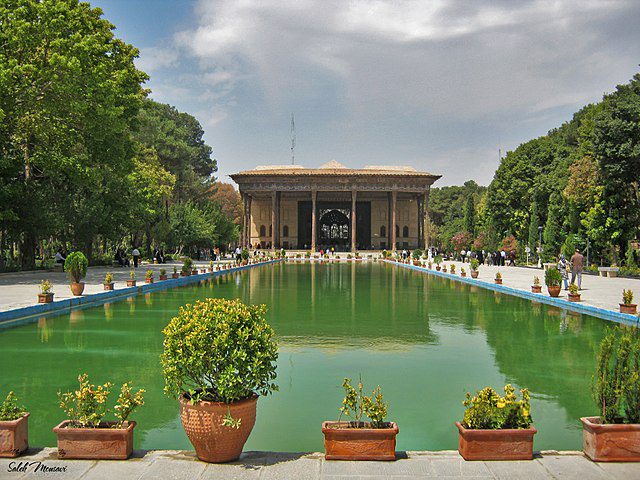
Chehel Sotoun Palace is not just any old building; it’s one of the special places to visit in Iran recognized by UNESCO as a World Heritage Site, and it’s a part of Iran’s historical legacy. This fancy Persian palace was built in a lovely park, right at the end of a long pool, back in the 17th century by a king named Shah Abbas II during the Safavid dynasty. He used it for all sorts of things like parties, ceremonies, and welcoming important visitors from other countries.
Now, what makes this palace so interesting? Well, both the outside and the inside are pretty amazing. People like to call it the “Palace of Forty Columns” because of the cool trick it plays. The front porch has 20 wooden columns, and when you look at them in the reflection of the pool in front, it seems like there are actually 40 columns holding up the palace.
But the real magic happens inside. The walls are covered in beautiful paintings that show important moments from the history of the Safavid Empire, with brave warriors and all. Plus, the ceilings and the spaces between the paintings have intricate designs of flowers and animals, making the inside of the palace a true work of art. Do not miss Chehel Sotun, one of the unforgettable places to visit in Iran!
15. Vank Cathedral, Isfahan
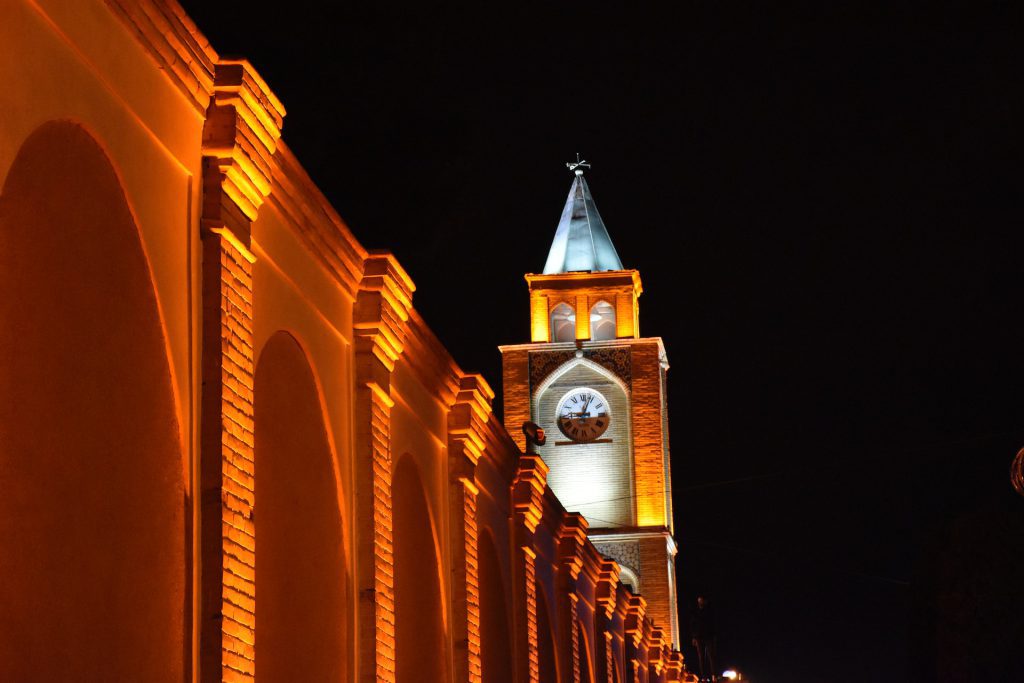
In Isfahan’s Armenian neighborhood known as New Julfa, you’ll discover the Vank Church, also called The Holy Savior Cathedral, a remarkable Armenian church that ranks among Iran’s seven wonders.
This church was built in the early 17th century during the Safavid era, alongside 12 other churches, as part of a unique history. Armenian immigrants, who were forced to relocate to Isfahan by Shah Abbas I during the Ottoman War of 1603-1618, were the builders.
What makes the Vank Cathedral special is its blend of Armenian and Persian architectural styles. Step inside, and you’ll be captivated by colorful frescoes depicting stories from the Bible, ornate gilded carvings, and rich Persian-style tilework.
This place isn’t just a beautiful church; it also houses a museum and library with biblical manuscripts and historical documents. These documents mainly tell the story of the Armenian community in Isfahan and the tragic Armenian Genocide, a dark period when the Ottoman Empire systematically persecuted nearly one million Armenians. As a result, the Vank Cathedral is globally recognized as a significant Armenian center.
16. Abyaneh Village, Isfahan
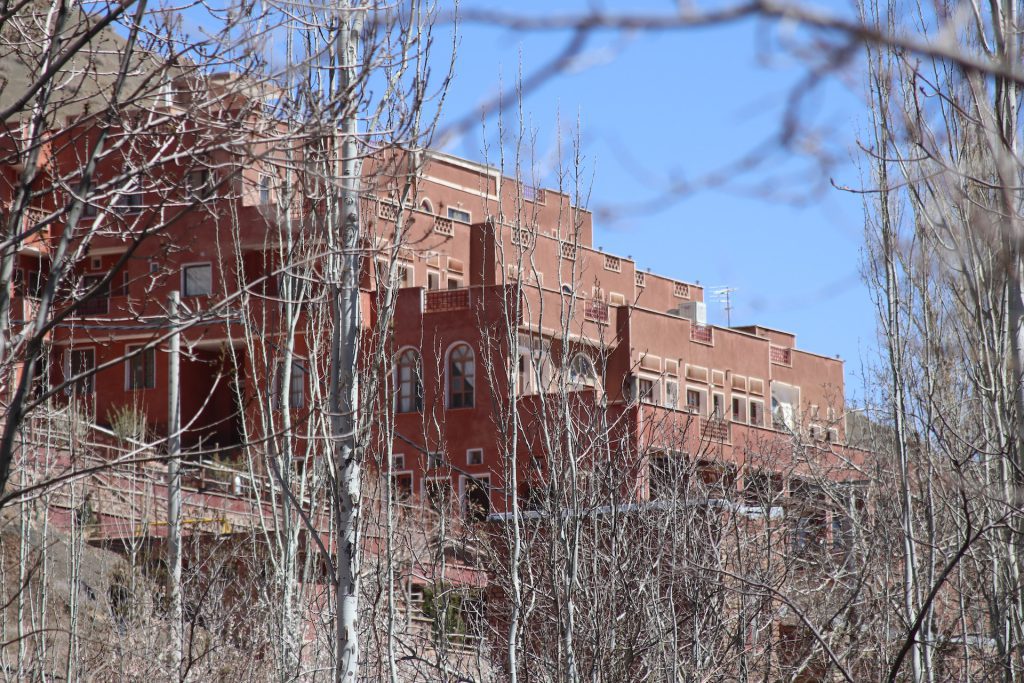
Abyaneh , one of Iran’s most ancient places to visit in Iran, has a history dating back a staggering 2,500 years. It’s famously known as the ‘Red Village’ due to its charming collection of red clay buildings.
This village is a UNESCO treasure, celebrated for its remarkably preserved local culture, language, architecture, and traditional attire, which have endured through centuries and dynasties. In fact, the villagers here speak a distinctive dialect of Farsi, unique to Abyaneh, with some words dating back to the 3rd century BC!
Meymand, Iran: A Prehistoric Iranian Village
One of the top experiences in Abyaneh is simply wandering through its winding alleyways. This is where you’ll uncover hidden gems, and nearly every corner is a photo opportunity. Some of the red houses even have rooftops accessible by stairs, offering breathtaking views of the Karkas Mountains.
Strolling through Abyaneh, you’ll soak in an authentic ambiance. Locals go about their daily lives with few tourists around, and you’ll often spot local women wearing traditional floral headscarves. If you’re eager to immerse yourself in Iranian culture, Abyaneh is an absolute must-visit, offering a unique glimpse into the past and present. Do not miss Abyane Village, one of the most unparalleled ancient places to visit in Iran.
17. Agha Bozorg Mosque, Kashan
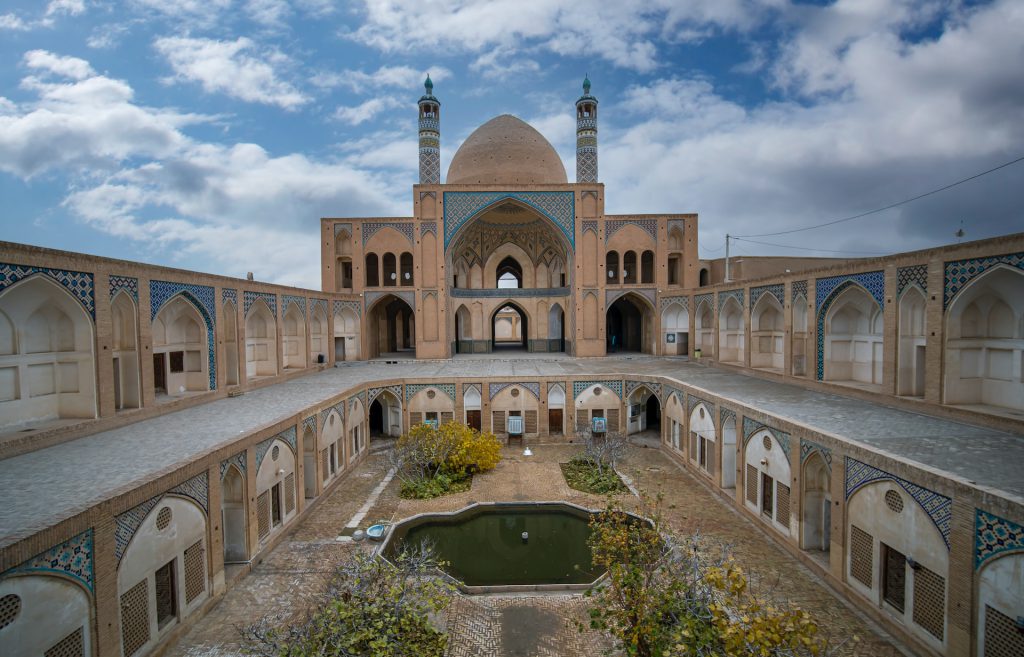
When it comes to one of the famous places to visit in Iran, the Agha Bozorg Mosque from the 18th century is refreshingly different. It may not have the grandeur of the Shah Mosque in Isfahan or the vivid colors of the Pink Mosque in Shiraz, but that’s what makes it stand out.
Personally, this mosque is one of my favorite places to visit in Iran. Its unpretentious exterior, well-balanced design, and peaceful atmosphere create a sense of calm. What made it even more special was the fewer tourists compared to other popular mosques in Iran, allowing for a more intimate experience.
Top Tourist Attractions of Kashan
Inside, you’ll find a school alongside the mosque, with student rooms surrounding a lovely sunken courtyard. It’s a spot where local families often come, adding to the relaxed and lively atmosphere that enhances the mosque’s unique charm.
18. Fin Garden, Kashan
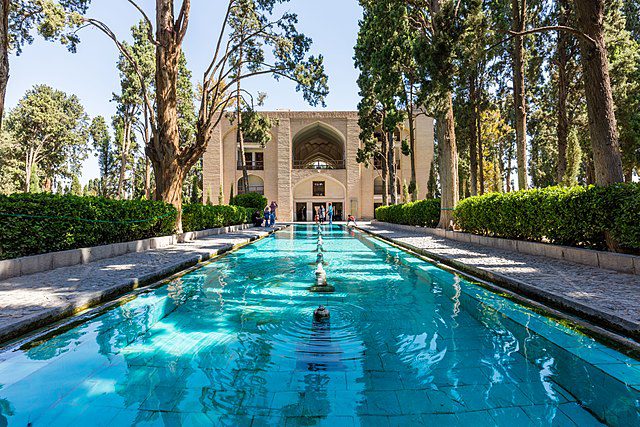
Dating back to the 16th century, Fin Garden, one of the famous places in Iran, proudly holds the title of Iran’s oldest Persian garden . Among the nine Persian gardens designated as UNESCO World Heritage Sites, Fin Garden stands as a cherished gem.
Here, you’ll encounter one of the most beautiful places to visit in Iran which is adorned with architectural wonders, intricate fountains, serene pools, lush trees, and vibrant flowers. These elements serve as a testament to the fusion of architectural styles from renowned Persian dynasties, including the Safavid, Zand, and Qajar dynasties.
19. The Historical Houses of Kashan
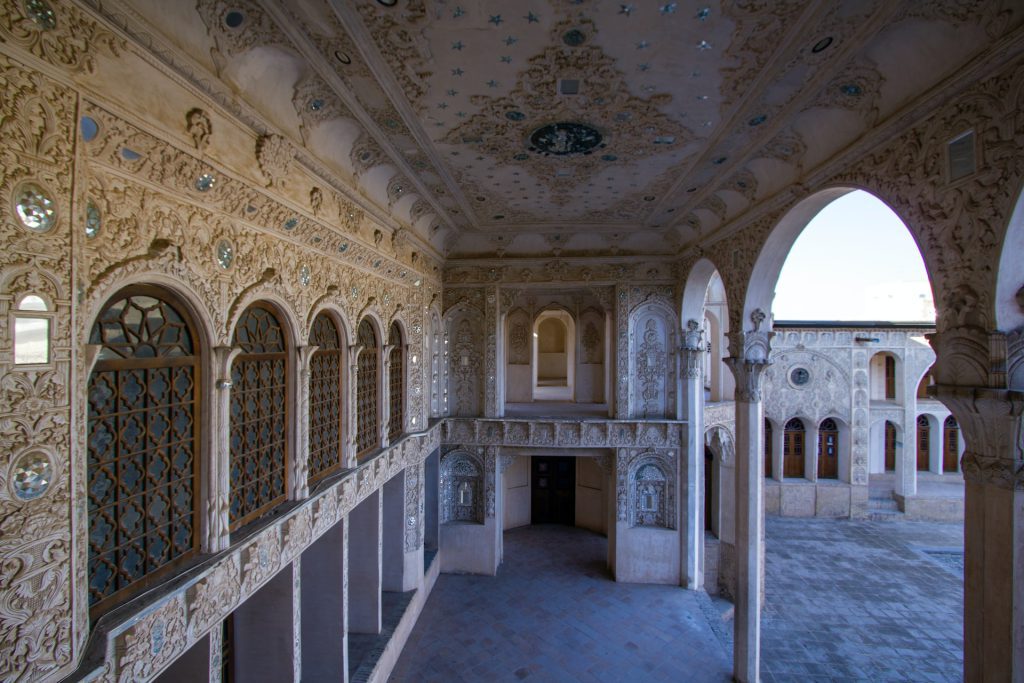
In Kashan , you’ll discover grand traditional houses with magnificent gardens and courtyards, all hailing from the 18th and 19th centuries. These are essentially some of the ancient places to visit in Iran where affluent families once dwelled, now revered as historical landmarks.
Among the most famous places in Iran are renowned historical houses of Kashan including the Tabatabaei House, Borujerdi House, Mahinestan Rahib House, Ameri House, Manuchehri House, and Abbasi House.
Each of these traditional places in Iran stands as a splendid testament to Persian architecture. Both inside and out, these houses are adorned with intricate decorations. Particularly captivating are the vibrant stained-glass windows, remarkable mirrors, and breathtaking frescoes that grace these architectural gems.
20. Lut Desert, Kerman
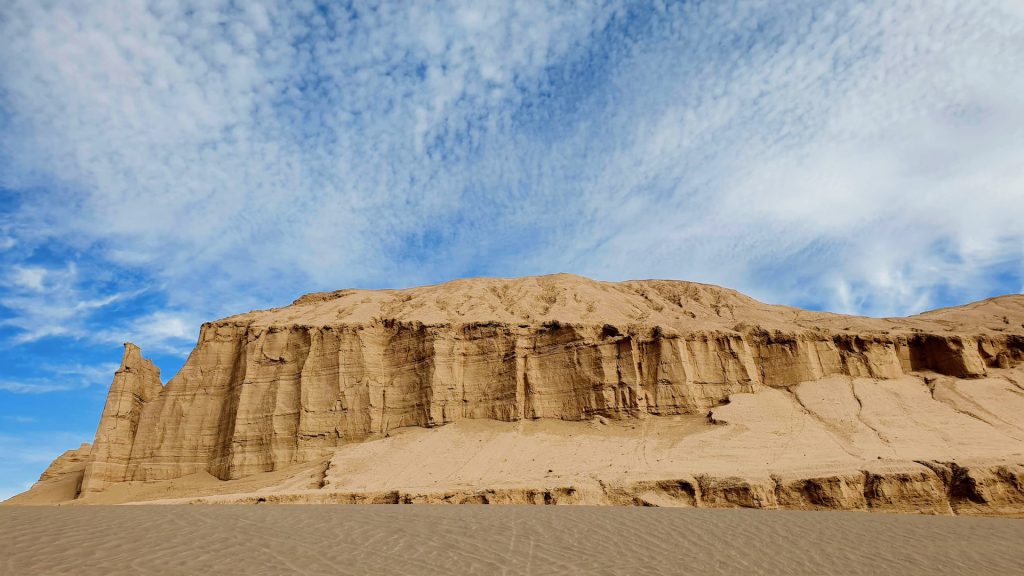
Deep in the Kerman province lies Lut Desert , a UNESCO salt desert home to mesmerizing clay-rock formations called Kaluts. To truly embrace one of the magical places to visit in Iran, I highly recommend camping overnight, especially if you enjoy gazing at the stars.
The best way to do this is by hiring a tour agency, which provides a 4×4 vehicle, a must for desert exploration. Your journey can include a visit to Rayen Castle, about a three-hour drive from the desert. Arriving in time for a night’s stay allows you to witness a breathtaking sunrise among the Kaluts.
Deserts in Iran, Top 10: Breathtaking Beauty of Nature’s Canvas
These unique Kaluts, with their stunning and unusual shapes, were shaped by the forces of nature – strong winds and water erosion. Some of these rocky structures are easy to climb, offering a fantastic view of the desert below. Lut Desert, considering all, is undoubtedly one of the most amazing places to visit in Iran.
FAQs about Places to Visit in Iran, Top 20
Q1: what are the amazing places in iran.
A1: Some remarkable places to visit in Iran are Azadi Tower, Golestan Palace, Azadi Tower, Imamzadeh Saleh, Shah Cheragh Shrine, Persepolis, and Lut Desert.
Q2: Where do people like to travel to in Iran?
A2: Most travelers opt for cultural tours in Iran, visiting renowned destinations like Shiraz, Isfahan, Yazd, and Tehran. The more adventurous ones decide to enhance their cultural experience by combining it with an Iran desert tour, where they can explore the desert areas near Kashan and Isfahan.
Q3: What Iran is famous for?
A3: Iran is renowned for its abundant cultural heritage, encompassing diverse art forms like literature and architecture, among others. The country boasts impressive architectural wonders, including royal palaces, ancient mosques, and historical museums.

Q4: Is Iran a cheap country to visit?
A4: Iran is known for its affordability, making it one of the most budget-friendly destinations. Adequate financial preparation is necessary for the trip, which is why a detailed breakdown of expenses from the visit and guidance on managing currency in Iran will be provided.
Q5: Which city of Iran is beautiful?
A5: Shiraz is often described as a charming city of gardens and poetry. When you inquire with travelers about their experiences in Iran, many will praise Shiraz as the most beautiful city they’ve explored. Situated in the southern part of Iran, in the Fars region, it’s one the most essential places to visit in Iran.
Experience the Best Places to Visit in Iran with Customized Tours
When planning a trip to explore the best places to visit in Iran, and of course other places, it’s a great idea to consider a customized tour. Iran tourist spots are fascinating destinations with a lot to offer, but it can be overwhelming to figure out where to go and what to see on your own. Opting for a customized tour, like the ones offered by To Iran Tour, can make your journey more enjoyable and tailored to your preferences.
At To Iran Tour, our team of experienced professionals is dedicated to organizing unforgettable journeys to experience the most captivating Iran tourist spots. Whether you dream of exploring the ancient city of Persepolis, admiring Isfahan’s beautiful architecture, or savoring the delicious Iranian cuisine, we’ve got you covered. Contact To Iran Tour today, and let us create the perfect itinerary to make your Iran adventure truly special.
Explore the Amazing places of Iran with To Iran Tour
Leave a reply cancel reply.
Your email address will not be published. Required fields are marked *
Save my name, email, and website in this browser for the next time I comment.
- Iran Visa Policy
- Apply for Iran visa
- Active Style
- Inside Style
- Discovery Style
- In-Depth Style
- Knowledge Based Style
- Daily Tours
- Why “To Iran Tour”?
- Partnership with To Iran Tour
Find Your Account

Top Iran Tourist Places: Best Places to Visit in Iran (Attractions in Iran)
Best places to visit in iran, must-see iran attractions & tourist places.
Iran is a country of over seven thousand years of history, an incredibly diverse nature, and a remarkably rich culture. From the northwest to the southeast, genius ancient relics, intricate Islamic architectural masterpieces, the wisdom of Zoroastrianism , deep-rooted festivals , and many other Iran attractions make the country a real charmer. What makes Iran even more attractive is finger-licking dishes, spirituality-laden literature and music, and a people that surprise you with their warmth and hospitality. But if you’re looking for best places to visit in Iran , the cities of Shiraz , Isfahan , Yazd , Kashan and Tehran must be on your visit list.
Visit Iran Tourist Places With IranOnTour
Iran is so diverse and rich that even a month time could be short for exploring Iran tourist attractions. But joining one of carefully crafted tours will take you to the most visited places and most fascinating secrets. Adapting your travel itinerary to your unique taste, interests, style, timing and budget is also our special offer to you. Find some of our popular packages below:
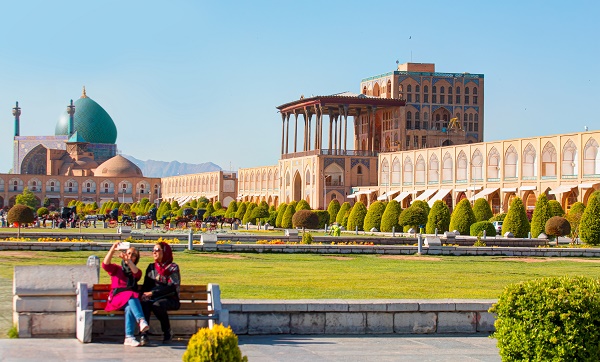
7-Day Iran Tour: The Must-See Attractions
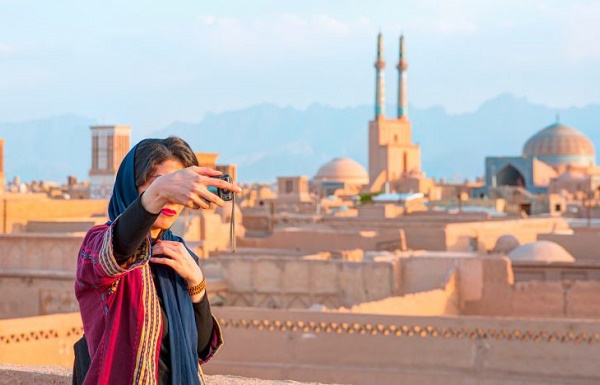
9-Day Iran Tour: From Tabriz to World Heritage Highlights

10-Day Tour of Iran: On the Tourist Radar

12-Day Iran Tour: History, Culture & Sand
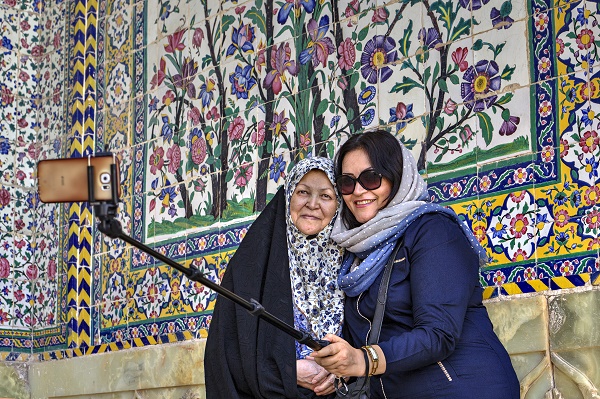
13-Day Iran Tour: On & Off the Beaten Path
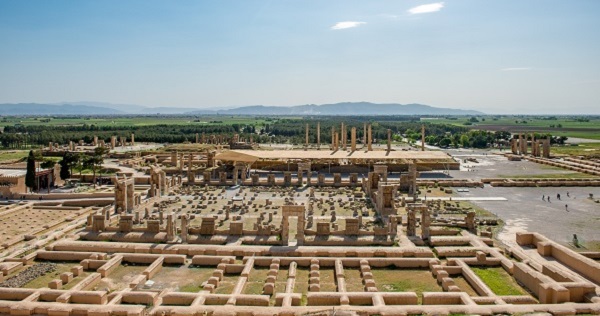
16-Day Tour of Iran: Deep into the Heart of Persia
Iran attractions types.
The depth of Iranian culture and history, the breadth of its geography, and the diversity of its nature have blessed the country with a variety of tourist attractions that can be categorized so:
Ancient Attractions in Iran
Over seven thousand years of history and civilizations makes Iran one of the world’s most ancient places. Isn’t it just mind-blowing that remains of urban settlements and historical artifacts that date back to 7000 BC have been discovered in Iran?! One of the world’s best kept ziggurats, the 3200-year-old Chogha Zanbil ( UNESCO ), and the impressive mementos of Achaemenid empire like Persepolis (UNESCO) and Naqsh-e Rostom Necropolis are of the best ancient places to visit in Iran.
Over seven thousand years of history and civilizations makes Iran one of the world’s most ancient places. Isn’t it just mind-blowing that remains of urban settlements and historical artifacts that date back to 7000 BC have been discovered in Iran?! One of the world’s best kept ziggurats, the 3200-year-old Chogha Zanbil ( UNESCO ), and the impressive mementos of Achaemenid empire like Persepolis (UNESCO) and Naqsh-e Rostom Necropolis are of the best ancient attractions of Iran.
Islamic Attractions in Iran
After the Arab Conquest of Persia and the fall of Sassanid Dynasty, Iran became an Islamic country. This new religion gradually interweaved with the thousands of years of civilization that already existed and gave birth to architectural, artistic, literary and spiritual beauties that have made Iran even more precious. Isfahan ’s acclaimed Naqsh-e Jahan Square is probably one of the best examples of Iran’s Islamic architecture and top tourism places in Iran.
Zoroastrian Attractions in Iran
A man named Zarathustra was born over 4000 years ago, changed Iran, and gave birth to one of the world’s most ancient and inspiring faiths. This spiritual leader who had a deep respect for nature and a belief in a benevolent God became the prophet of greatest Persian empires: Median, Achaemenid, and Sassanid. From the religion he created, Zoroastrianism , deep-rooted ceremonies, unique traditions, and ancient buildings have remained in Iran. Yazd , as the present symbol of Zoroastrianism features Iran attractions that introduce you to this ancient belief.
A man named Zarathustra was born over 4000 years ago and changed Iran and gave birth to one of the world’s most ancient and inspiring faiths. This spiritual leader who had a deep respect for nature and a belief in a benevolent God became the prophet of greatest Persian empires: Median, Achaemenid, and Sassanid. From the religion he created, Zoroastrianism , deep-rooted ceremonies, unique traditions, and ancient buildings have remained in Iran. Yazd , as the present symbol of Zoroastrianism features Iran attractions that introduce you to this ancient belief.
Intangible Cultural Attractions in Iran
Literature, arts , music , traditions and festivals that are tied with love, spirituality, philosophy and wisdom are of the most beautiful mysteries and charms of Iran. Rural, local and nomadic lifestyle are also another rare treats. Discovering these intangible Iranian heritages beside stops by Iran’s tourist attractions will enrich your trip and make it hard to forget. Festivals like Nowruz (UNESCO) and Yalda , instruments like Tanbur that enchant you with their mystical ring, and small traditions you can discover by spending time with people are some of Iran’s cultural attractions.
Modern Attractions in Iran
You can find nice traces of modernity in Iran’s top cities . Though tradition is still prominent, modern life has penetrated lifestyle and architecture. Of the most admirable of Iran’s modern attractions can be discovered in the capital, Tehran . The Museum of Modern Arts , Tabiat Bridge , and the iconic symbols of the city, Azadi Tower and Milad Tower , are the must-see modern places to visit in Iran.
You can find nice traces of modernity in Iran’s top cities . Though tradition is still prominent, modern life has penetrated lifestyle and architecture. Of the most admirable of Iran’s modern attractions can be discovered in the capital, Tehran . The Museum of Modern Arts , Tabiat Bridge , and the iconic symbols of the city, Azadi Tower and Milad Tower , are the must-see modern attractions of Iran.
Natural Attractions in Iran
What makes Iran’s nature special and among the top Iran attractions is its surprising diversity. In Iran, you can go skiing in cold snowy mountains, experience off-roading to the depth of hot sandy deserts , take a walk along sunny islands , go hiking through dense jungles, and find unique spectacles like mangroves, salt domes and other geological wonders.
Top Destinations & Places to Visit in Iran
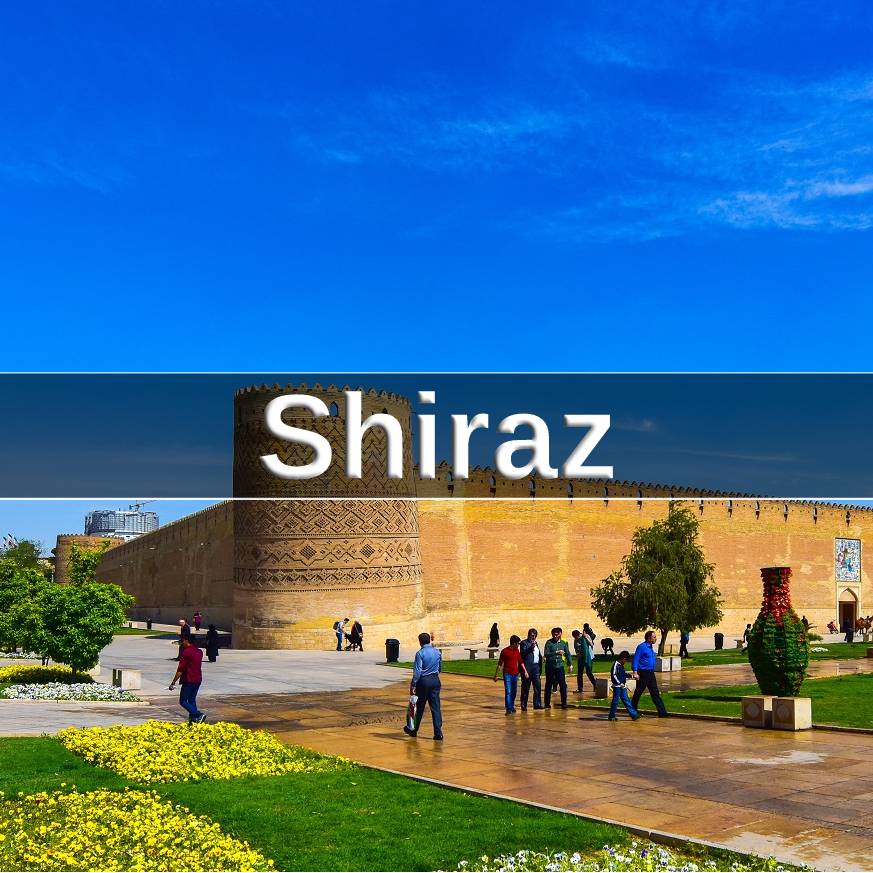
Shiraz Tourist Attractions
Shiraz , the city of poets, lovely garden mansions, historical complexes and world-known ancient sites nearby is one of the most visited places in Iran. The city also enjoys an uplifting aura and hospitable carefree people!
Best Places to Visit in Shiraz

Isfahan Tourist Attractions
The intricacy of Isfahan ’s masterpieces of Islamic architecture has made the city one of the best places to visit in Iran. As home to a gallery of popular Iran attractions, the historical city of Isfahan has been a part of the golden triangle of Iran.
Best Places to Visit in Isfahan
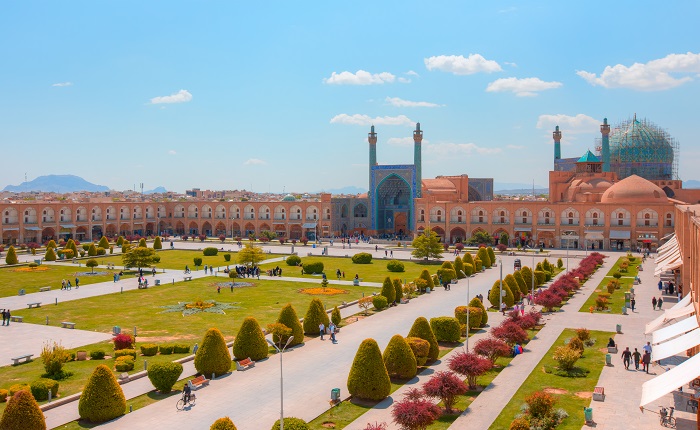
Tehran Tourist Attractions
Tehran is the hub of Iran’s top museums , museum palaces, galleries and cafes. Reflecting both the historical roots of the Iranian nation and modern Iranian life, Tehran is also one of the must-see Iran tourist places.
Best Places to Visit in Tehran
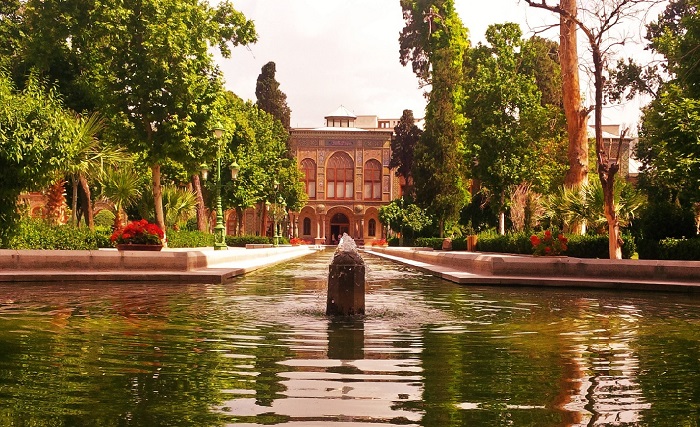
Yazd Tourist Attractions
Amazing desert architecture and the precious relics of the ancient Persian religion, Zoroastrianism , put the historical city of Yazd ( UNESCO ) on the list of top Iran attraction. With adorable winding alleyways, attractive wind catchers, and earthen desert architecture, Yazd is an unmissable Place to visit in Iran.
Best Places to Visit in Yazd
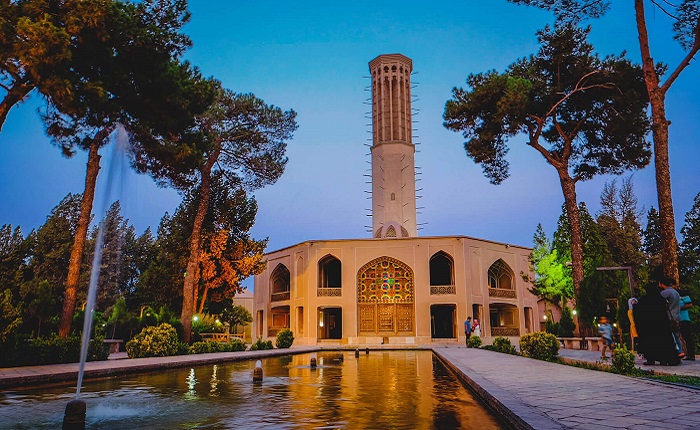
Kashan Tourist Attractions
This fascinating town near Isfahan , also showcases the elegant elements of Persian architecture in Iran’s most impressive historical mansions. Iran’s most picturesque traditional houses and admirable architectural masterpieces make Kashan an unmissable point on Iran’s map!
Best Places to Visit in Kashan
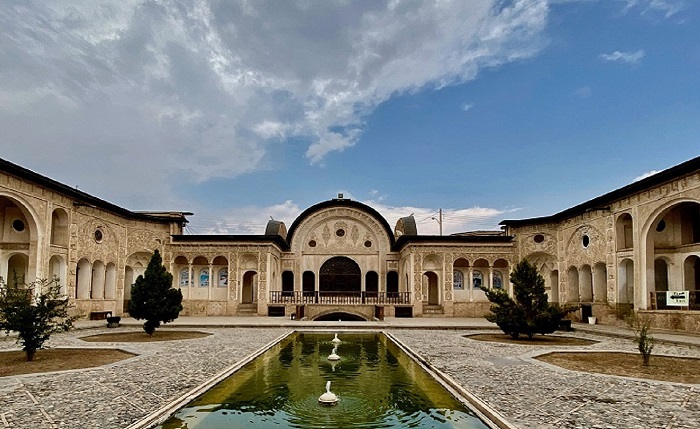
Tailor-Made Iran Attractions Tours
We have done our best to consider both your various tastes and Iran’s immense potentials to craft the best possible Iran Attractions tour packages for you. If you’d like your trip to Iran to be a certain way or in any corner of Iran, we will be more than happy to help you create it.
Join the Newsletter
Receive the best Iran tour offers and blog updates by subscribing to IranOnTour newsletter.

Which Iranian city is best to visit?
Dear Kevin, all Iranian cities are lovely. Shiraz, Tehran, Isfahan, Yazd, Kashan, Tabriz, Kerman, and Qeshm are highly recommended. I personally like Shiraz the most.
Keywords: iran tourism places, iran destination travel, iran tourist places, attractions in iran, iran’s tourist attractions, places to visit in iran, iran places to visit, best places to visit in iran, iran sightseeing, iran tourist spots, places to visit in tehran, iran historical sites, tehran tourist attractions, cinema museum of iran, tehran attractions, iran national museum, things to see in iran, iran best places to visit, sights of iran, iran top tourist attractions, best things to do in iran, iran tourist destinations, isfahan tourist attractions, shiraz tourist attractions, describe a tourist attraction in iran, tehran sightseeing, shiraz attractions, places in iran that tourists should visit, best tourist places in iran, isfahan attractions, iran is a good destination for tourists, shiraz sightseeing, tehran tourist places, best cities to visit in iran, iran best tourist places, yazd tourist attractions, mashhad tourist attractions, tehran sights, top places to visit in iran, sightseeing iran, jewelry museum tehran, hamedan tourist attractions, iran tourist sites, iran sightseeing places, iran natural attractions, isfahan historical sites, top sights in iran, kish island tourist attractions, kashan tourist attractions, must visit attractions in iran, breathtaking places to visit in iran.
WhatsApp us
Top Things to Do in Iran
Places to visit in iran, explore popular experiences, popular cities in iran.
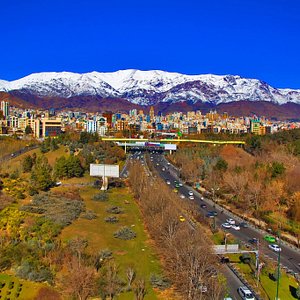
Top Attractions in Iran

What travellers are saying


- Iran Information
- Travel Plans
Most Touristic Places in Iran
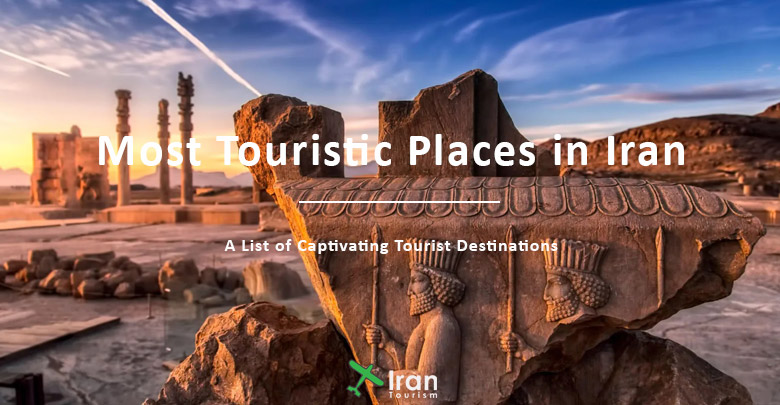
Iran, a land of ancient civilizations and breathtaking landscapes, boasts a wealth of captivating tourist destinations that beckon travelers with their historical significance, cultural richness, and natural beauty. From the majestic ruins of Persepolis to the ornate architecture of Isfahan, the tranquil gardens of Shiraz to the desert oasis of Yazd, and the bustling streets of Tehran to the pristine shores of Qeshm Island, Iran offers a diverse tapestry of experiences that cater to every traveler’s interests.
Steeped in history and tradition, Iran’s most touristic places glimpse its storied past while inviting visitors to explore its vibrant present. Whether drawn by the grandeur of ancient empires, the charm of traditional bazaars, or the allure of untouched natural wonders, Iran’s allure as a destination is boundless, promising an enriching journey that transcends time and culture.
From a tourist’s perspective, Iran offers a plethora of captivating destinations that showcase its rich history, culture, and natural beauty. Here are some of the most sought-after tourist spots in Iran:
Isfahan City: Architectural Masterpieces and Cultural Splendor

Isfahan City
Isfahan, often called “Half of the World,” is a city in Iran renowned for its stunning architecture, historic sites, and cultural significance. Some of Isfahan City ‘s most iconic tourist attractions include:
- the UNESCO-listed Naghsh-e Jahan Square ,
- a UNESCO World Heritage Site, which features the majestic Imam Mosque,
- the Sheikh Lotfollah Mosque,
- the Ali Qapu Palace,
- and the Qeysarie Gate.
These intricate patterns and tilework showcase the city’s rich artistic heritage. Other notable attractions in Isfahan include the Chehel Sotoun Palace with its mirrored hall, the historic Jameh Mosque, the Vank Cathedral in the Armenian Quarter, and the historic Si-o-se-pol and Khaju bridges that span the Zayandeh River. These landmarks, bustling bazaars, and vibrant street life make Isfahan an enchanting destination that captures the essence of Iran’s cultural and architectural legacy and makes Isfahan City one of the most touristic places in Iran.
Persepolis: Ancient Splendor and Royal Ruins

Persepolis, located in the southwestern region of Iran, is a testament to the grandeur of ancient Persian civilization. This archaeological marvel was once the ceremonial capital of the Achaemenid Empire, founded by King Darius I in the 6th century BCE. Persepolis, which translates to “City of Persians,” was meticulously constructed over several decades and symbolized power, culture, and unity for the empire.
The site’s monumental ruins showcase an array of magnificent structures, including imposing staircases, grand gateways, audience halls, and intricately carved reliefs that depict scenes of imperial processions, cultural diversity, and mythological narratives. The Apadana Palace, with its 72 stone columns and the grand Gate of All Nations, are among the most iconic features, illustrating the impressive architectural and artistic achievements of the time.
While the city faced destruction during the conquest of Alexander the Great in 330 BCE, its remains continue to evoke a sense of awe and wonder. Today, Persepolis is a designated UNESCO World Heritage Site. It draws visitors worldwide to explore its ancient history and marvel at the intricate details that tell the story of a once-mighty empire. Visiting Persepolis offers a unique opportunity to step back and gain insights into ancient Persia’s rich cultural heritage and achievements.
Shiraz City: Cultural Gem and Poetry Capital

Shiraz City
Shiraz, often referred to as the heart of Iran, is a city that captivates visitors with its rich history, poetic charm, and vibrant cultural scene. Located in the southwest of Iran, Shiraz is renowned for its lush gardens, intricate architecture, and warm hospitality. As the capital of Fars Province, it boasts a blend of ancient heritage and modern allure, making it a must-visit destination for travelers.
Shiraz City ‘s most famous attractions:
- Nasir al-Mulk Mosque (Pink Mosque)
- Eram Garden
- Tomb of Hafez
- Tomb of Saadi
- Vakil Bazaar
- Shah Cheragh Mausoleum
- Qavam House (Narenjestan Garden)
- Karim Khan Citadel
- Arg-e Karimkhan
- Afif-Abad Garden
- Qalat Village
- Zinat al-Molk House
- Delgosha Garden
- Jahan Nama Garden
- Atigh Jame Mosque
- Vakil Mosque
- Nasirolmolk Bathhouse
- Pars Museum
These attractions offer a glimpse into Shiraz’s rich cultural heritage, architectural wonders, and natural beauty.
Beyond its historical and literary treasures, Shiraz boasts the picturesque Qavam House, showcasing traditional Persian architecture, and the bustling Vakil Bazaar, where visitors can immerse themselves in local culture and craftsmanship. The nearby ruins of Persepolis and Pasargadae, both UNESCO World Heritage Sites, provide glimpses into the grandeur of ancient Persian civilizations.
Shiraz’s reputation as the “City of Roses and Nightingales” comes alive during the annual Golab (Rose Water) Festival, where the intoxicating scent of roses fills the air, and the Hafez International Poetry Festival draws poets from around the globe to celebrate the art of verse. With its cultural treasures, picturesque landscapes, and hospitable locals, Shiraz is a destination that leaves an indelible impression on every traveler who walks its streets.
Yazd City: Desert Oasis and Architectural Marvels
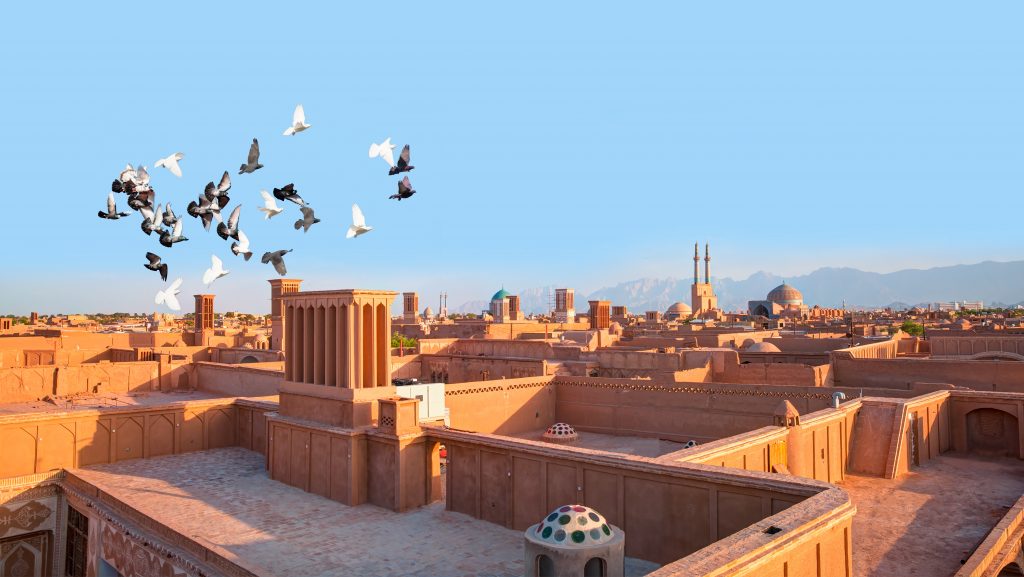
Yazd, often called the “City of Windcatchers” and “City of Zoroastrians,” is a captivating destination in central Iran and one of the most touristic places in Iran that exudes historical charm and architectural beauty.
Nestled amidst the desert landscape, Yazd boasts a rich history that dates back to ancient times. Its labyrinthine alleyways, mud-brick buildings, and traditional windcatchers create a mesmerizing atmosphere that transports visitors to another era. One of the most iconic features of Yazd is its intricate network of windcatchers, traditional architectural structures designed to harness and channel the wind, providing natural ventilation and cooling in the hot desert climate.
These distinctive structures have earned Yazd a UNESCO World Heritage Site designation, making the city a living example of sustainable architectural practices.
Yazd’s allure extends beyond its architectural marvels. The city is renowned for its vibrant Zoroastrian community, one of the oldest monotheistic religions. The Zoroastrian Fire Temple houses a sacred flame that has been burning for centuries, making it a significant spiritual site.
Additionally, the Jameh Mosque of Yazd, with its grand portal and stunning tilework, is a testament to the city’s Islamic heritage. Visitors can explore the narrow alleys of the historic Fahadan neighborhood, lined with traditional houses, colorful bazaars, and charming courtyards.
The juxtaposition of ancient traditions and modern life, along with the warmth of its people, adds to the unique appeal of Yazd. Whether wandering through its old streets or admiring its architectural wonders, Yazd offers an unforgettable journey into the heart of Persian history and culture.
The prominent tourist attractions in Yazd City :
- Jameh Mosque of Yazd
- Amir Chakhmaq Complex
- Yazd Varahan Fire Temple (Zoroastrian Fire Temple)
- Dolat-Abad Garden
- Dowlat Abad Windcatcher
- Yazd Water Museum
- Alexander’s Prison
- Zoroastrian Towers of Silence
- Saheb A Zaman Zurkhaneh
- Khan Bazaar
- Yazd Art House
- Yazd Clock Tower
- Shish Badgiri Ab Anbar (Historic Water Reservoir)
- Ziaiyeh School
- Lariha House
- Yazd Central Prison (Historical Site)
- Haj Khalife Ali Rahbar Confectionery
- Chak Chak (Zoroastrian Pilgrimage Site)
- Dowlat Abad Ice House
- Yazd Jame Mosque Portal
These attractions showcase the unique architecture, historical sites, and cultural heritage of Yazd, making it a captivating destination for travelers.
Tehran City: Cosmopolitan Hub and Modern Marvels
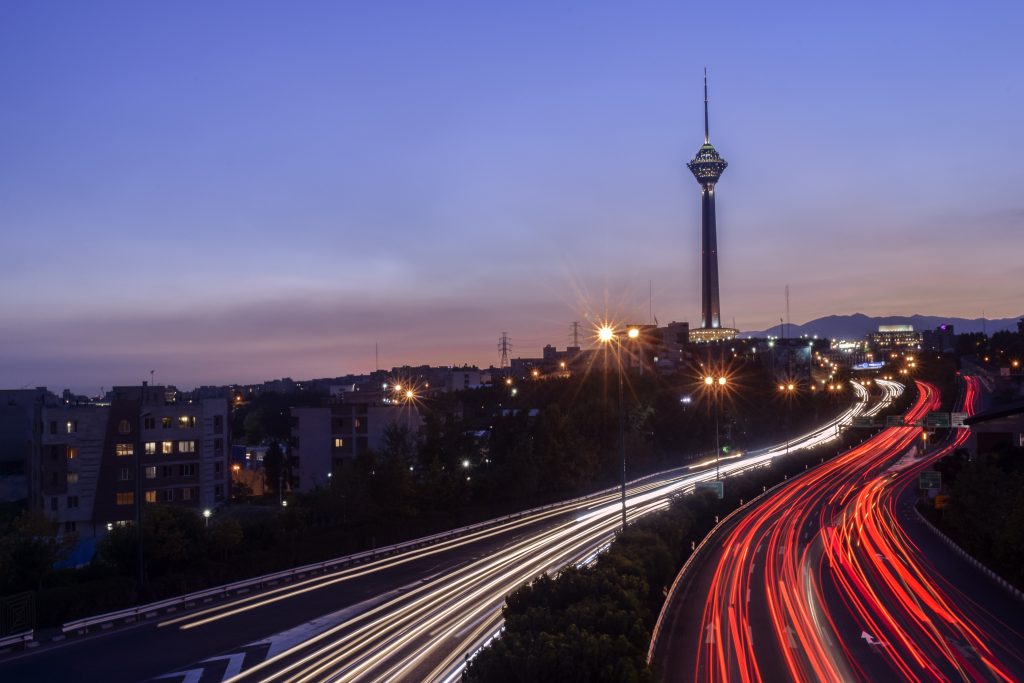
Tehran City
Tehran, the bustling capital of Iran, is a vibrant metropolis that encapsulates the country’s dynamic blend of tradition and modernity. Within the Alborz mountain range, Tehran is a sprawling city that serves as Iran’s political, economic, and cultural hub. With a history of over 200 years, Tehran has evolved from a small village into a cosmopolitan urban center that offers a unique tapestry of experiences.
The city boasts many attractions catering to a diverse range of interests. Golestan Palace, a UNESCO World Heritage Site, showcases intricate Persian architecture and beautifully landscaped gardens.
The National Museum of Iran provides a captivating journey through the nation’s history, displaying artifacts from ancient civilizations that have shaped Iran’s identity. Tehran’s Grand Bazaar, a bustling maze of lanes and stalls, offers a sensory overload of sights, sounds, and aromas, immersing visitors in the vibrant local culture.
The Milad Tower is an iconic modern landmark, offering panoramic views of the city’s sprawling landscape. Tehran is also a cultural hub, featuring a variety of theaters, galleries, and music venues that showcase Iran’s artistic talents. With its lively streets, diverse neighborhoods, and a blend of traditional teahouses and modern cafes, Tehran offers an intriguing mix of past and present that captures the essence of Iran’s multifaceted identity.
The popular tourist attractions in Tehran City :
- Golestan Palace
- National Museum of Iran
- Grand Bazaar
- Milad Tower
- Sa’dabad Complex
- Niavaran Palace Complex
- Azadi Tower
- Tehran Museum of Contemporary Art
- Treasury of National Jewels
- Carpet Museum of Iran
- Tabiat Bridge
- Imam Khomeini Shrine
- Tehran’s Nature Bridge (Pol-e Tabiat)
- Reza Abbasi Museum
- Tochal Complex and Ski Resort
- Tehran’s Grand Mosque
- Tehran’s Museum of Glass and Ceramics
- Tehran’s Birds Garden
- Cinema Museum of Iran ( Ferdows Garden )
These are just a few of the many attractions Tehran offers for travelers and visitors.
Kashan City: Historical Charm and Serene Gardens
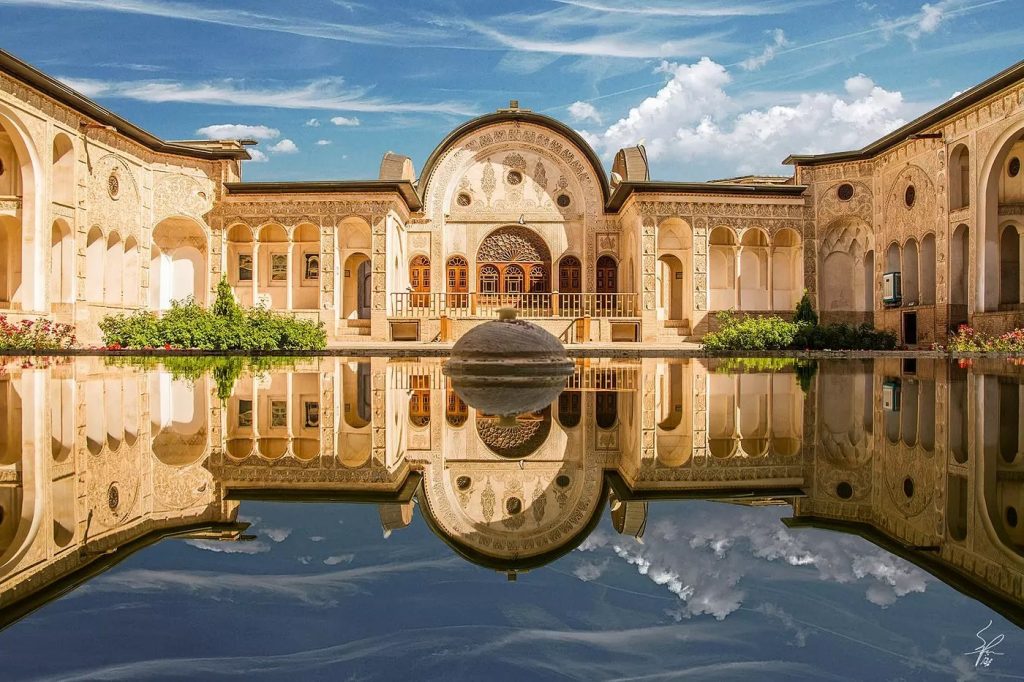
Kashan City
Kashan, one of the most touristic cities in Iran, is located in the Isfahan Province. This city is a captivating blend of rich history, exquisite architecture, and scenic beauty. The city’s allure lies in its well-preserved traditional houses, enchanting gardens, and its pivotal role in the country’s cultural heritage. Walking through the narrow alleys of Kashan’s old neighborhoods, visitors are transported back in time as they explore stunning examples of Iranian architecture like the Tabatabaei and Borujerdi Houses.
These masterpieces boast intricate tilework, delicate stucco, and traditional windcatchers, offering a glimpse into the opulent lifestyle of the past. The city’s centuries-old bazaar is a bustling hub of commerce and culture, where vibrant textiles, spices, and handicrafts create a sensory feast for visitors.
Kashan’s natural beauty is also a draw, with the mesmerizing Fin Garden capturing the essence of Persian garden design. Recognized as a UNESCO World Heritage Site, Fin Garden features flowing water, symmetrical layouts, and fragrant flowers, making it a serene oasis amidst the desert landscape.
Additionally, Kashan’s proximity to historical sites like Abyaneh village and the Maranjab Desert makes it an ideal base for exploring the region’s diverse attractions. From its architectural wonders to its serene gardens and intriguing history, Kashan offers an immersive experience that leaves a lasting impression on travelers seeking a deeper understanding of Iran’s cultural heritage.
The popular tourist attractions in Kashan City :
- Tabatabaei House
- Borujerdi House
- Agha Bozorg Mosque
- Sultan Amir Ahmad Bathhouse (Hamam-e Khan)
- Abyaneh Village (near Kashan)
- Maranjab Desert (near Kashan)
- Bazaar-e Kashan
- Ameri House
- Abbasian Historical House
Golestan Province: Nature’s Haven and Cultural Diversity
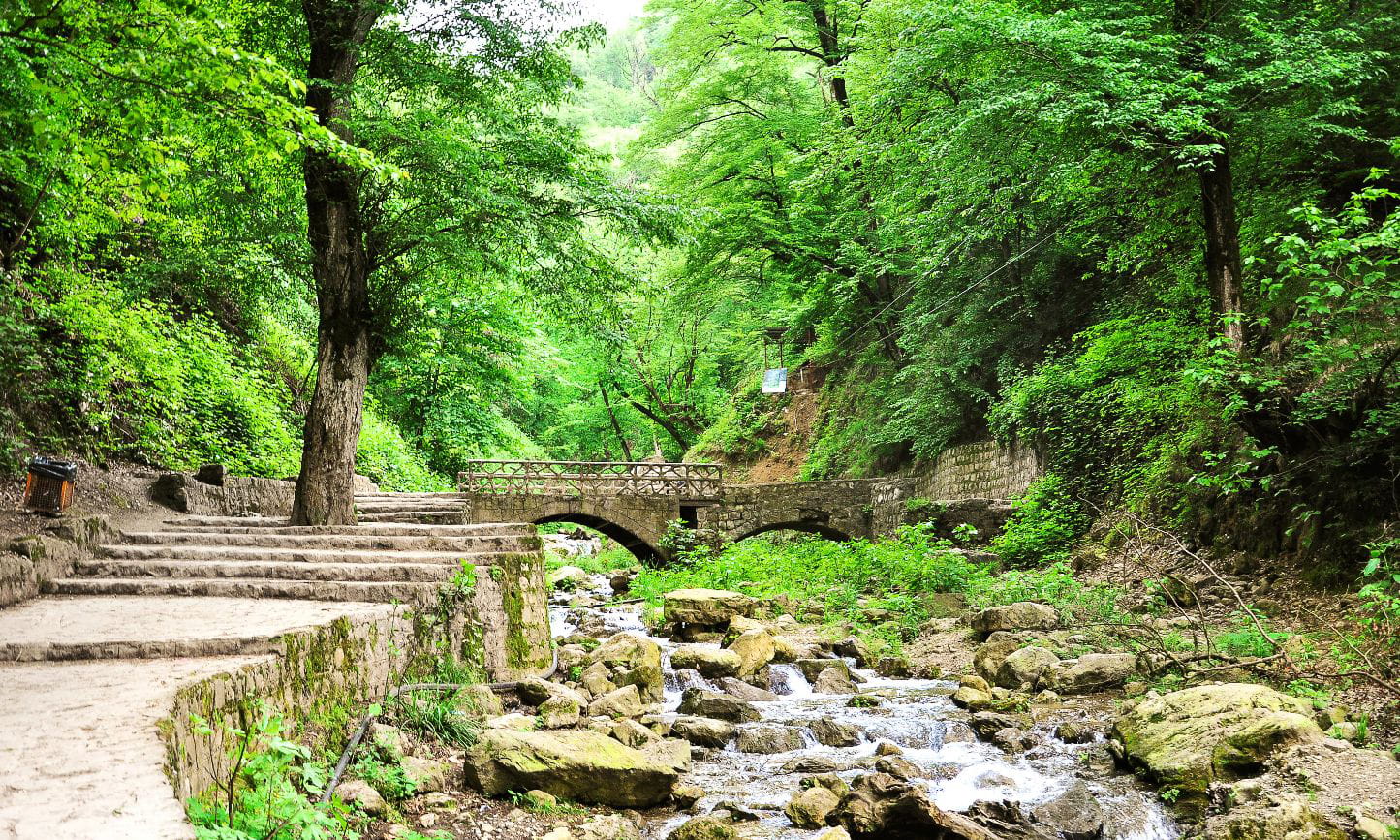
Golestan Nature
Golestan Province, located in northeastern Iran, has diverse landscapes and cultural richness. Its name translates to “Garden of Rosettes,” which reflects this province’s lush greenery and natural beauty. Golestan’s proximity to the Caspian Sea offers a unique blend of coastal attractions, forested mountains, and historical sites.
This province boasts a harmonious blend of various ethnic groups, contributing to a rich tapestry of traditions and customs. Golestan’s capital, Gorgan, serves as the gateway to this captivating region, offering visitors a chance to explore a combination of history, nature, and cultural diversity.
Tourist Attractions of Golestan Province:
- Golestan National Park: A UNESCO Biosphere Reserve known for its diverse flora and fauna.
- Gonbad-e Qabus Tower: A UNESCO World Heritage Site and the world’s tallest brick tower.
- Naharkhoran Forest: A pristine forest known for its biodiversity and natural beauty.
- Turkmen Sahra: A unique Turkmen cultural region with distinct traditions and customs.
- Aliabad Katoul: A charming town famous for its traditional architecture and handicrafts.
- Azadi Park: A beautiful park in Gorgan, ideal for relaxation and leisure activities.
- Incheh Borun Bridge: A historical bridge dating back to the Sassanian period.
- Alangdarreh Wildlife Refuge: A protected area home to various wildlife species.
- Ramsar Wetland: A Ramsar site with diverse ecosystems and birdwatching opportunities.
- Gorgan Grand Bazaar: A bustling market showcasing local products and craftsmanship.
Mashhad City: Spiritual Center and Modern Oasis
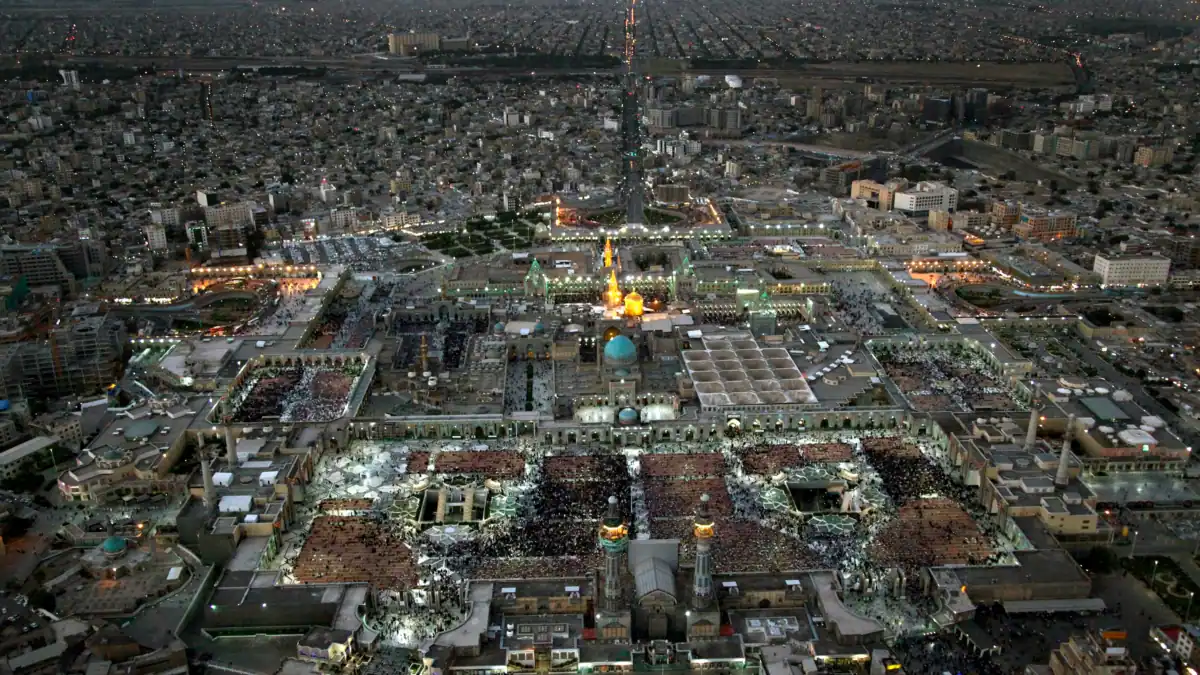
Mashhad city
Mashhad, the capital of Razavi Khorasan Province in northeastern Iran, is significant in religious and cultural contexts. As the holiest city in Iran, it is home to the Imam Reza Shrine, the eighth Shia Imam’s mausoleum, attracting millions of pilgrims annually. Beyond its religious significance, Mashhad offers a blend of history, modernity, and hospitality.
The city’s vibrant bazaars, ornate mosques, and historical sites showcase its rich heritage, while its modern infrastructure caters to diverse visitors. Mashhad’s warm atmosphere and religious importance make it a captivating destination that uniquely marries spirituality and cultural exploration.
- Holy Shrine of Imam Reza
- Goharshad Mosque
- Nader Shah Mausoleum
- Ferdowsi Park and Tomb
- Koohsangi Park
- Mellat Park
- Vakil Abad Park
- Tomb of Khajeh Rabi’
- Tus Ancient Hills
- Torghabeh Recreation Complex
- Darougheh Historical House
- Mashhad Bazaar
- Qasemabad Village
- Mellat Garden
- Mashhad Water Waves Land
- Koohestan Park
- Mashhad Zoo
- Chalidreh Dam
Tabriz City: Cultural Crossroads and Ancient Bazaar

Tabriz City
Tabriz, situated in the northwestern region of Iran, is a city that boasts a rich history and vibrant culture. Known as the “City of Firsts,” Tabriz has a significant role in Iran’s economic, cultural, and historical landscape. It has been a hub of commerce, trade, and craftsmanship for centuries, exemplified by its historical bazaar, a UNESCO World Heritage Site, and one of the oldest and largest covered markets globally.
The city is adorned with various architectural gems, such as the stunning Blue Mosque, which showcases intricate blue tilework and intricate designs, and the impressive Tabriz Historic House, reflecting the grandeur of a bygone era. Beyond its historical significance, Tabriz is a melting pot of ethnic and cultural diversity, celebrated through its festivals, traditional crafts, and renowned cuisine.
The tourist attractions in Tabriz City :
- Tabriz Historic Bazaar Complex (UNESCO World Heritage Site)
- Tabriz Blue Mosque (Jameh Mosque)
- Tabriz Historic House
- El Goli Park and Lake
- Tabriz Constitution House
- Eil Goli Pavilion
- Qajar Museum
- Iron Age Museum
- Azerbaijan Museum
- Tabriz Municipality Palace
- Maqbaratoshoara (Tomb of Poets)
- Tabriz Citadel (Arg-e Tabriz)
- Kaboud Mosque
- Saat Tower (Tabriz Clock Tower)
- Azerbaijan Museum of Tabriz
- Shahriar Park
- Tabriz Amusement Park
- Tabriz Carpet Museum
- Kandovan Village (Near Tabriz)
- Mashrouteh House
These attractions offer visitors a glimpse into Tabriz’s rich history, architecture, and cultural heritage.
Qeshm Island: Geological Wonders and Coastal Beauty
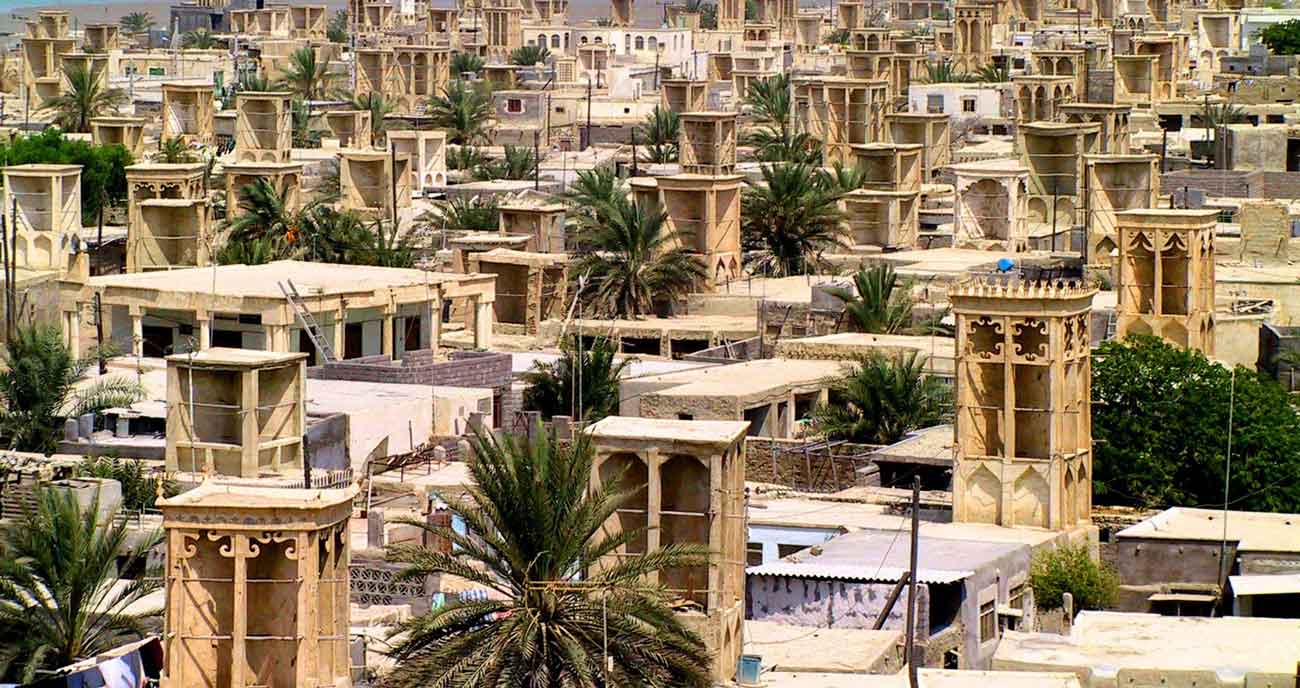
Laft Village Qeshm Iran
Qeshm Island, located in the Persian Gulf near the southern coast of Iran, is the largest island in the country and offers a unique blend of natural beauty, cultural heritage, and vibrant traditions. Known for its stunning landscapes, Qeshm Island boasts diverse attractions that captivate travelers worldwide.
The island’s dramatic geological formations, including the renowned Chahkooh Canyon, showcase layers of colorful rocks sculpted by wind and water over millions of years. Qeshm’s expansive beaches, such as the dazzling Hengam Beach, provide a tranquil retreat for sun-seekers and water sports enthusiasts. The Hara Forest, a UNESCO-designated biosphere reserve, is another remarkable natural site on the island, home to rare plant and animal species.
Qeshm’s cultural heritage is equally compelling, with historical sites like the Portuguese Castle and Tangeh Chahkook showcasing the island’s strategic importance throughout history. The island’s traditional villages, like Laft and Shib Deraz, offer a glimpse into local life and showcase traditional architecture, handicrafts, and the unique lifestyle of its inhabitants.
As a free trade zone, Qeshm also offers modern infrastructure, hotels, and recreational facilities, making it an inviting destination for leisure and business travelers. Whether exploring the wonders of its geology, immersing in its cultural heritage, or enjoying its sandy shores, Qeshm Island promises an unforgettable and diverse experience highlighting Iran’s southern coastline’s natural and cultural richness.
The important tourist attractions on Qeshm Island :
- Chahkooh Canyon: A stunning geological formation with colorful layers of rocks carved by wind and water, creating a mesmerizing landscape.
- Hengam Island: A nearby island known for its beautiful beaches, clear waters, and opportunities for dolphin-watching.
- Hara Forest: A UNESCO biosphere reserve featuring a unique mangrove ecosystem with diverse plant and animal species.
- Portuguese Castle: A historical fortress built during the Portuguese colonial period, offering panoramic views of the surrounding area.
- Tangeh Chahkook: A historic canyon with ancient aqueducts and water channels reflecting the island’s rich history.
- Stars Valley: A unique valley with strange rock formations resembling stars created by natural erosion.
- Naz Island: A small island known for its pristine beaches and coral reefs, perfect for snorkeling and diving.
- Laft Traditional Village: A village showcasing traditional architecture, wind-catchers, and local crafts, providing insight into local culture.
- Shib Deraz Village: Another traditional village famous for its unique architecture and vibrant cultural heritage.
- Khorbas Cave: A captivating cave system with stunning stalactite and stalagmite formations.
- Mangrove Forest of Shib Deraz: A scenic mangrove forest offering boat tours through its intricate waterways.
- Dolphin Park: An opportunity to interact with dolphins naturally, providing an educational and entertaining experience.
These attractions highlight the diverse natural beauty, historical significance, and cultural richness of Qeshm Island, making it a truly memorable destination for travelers.
Abyaneh Village: Living History and Vibrant Traditions
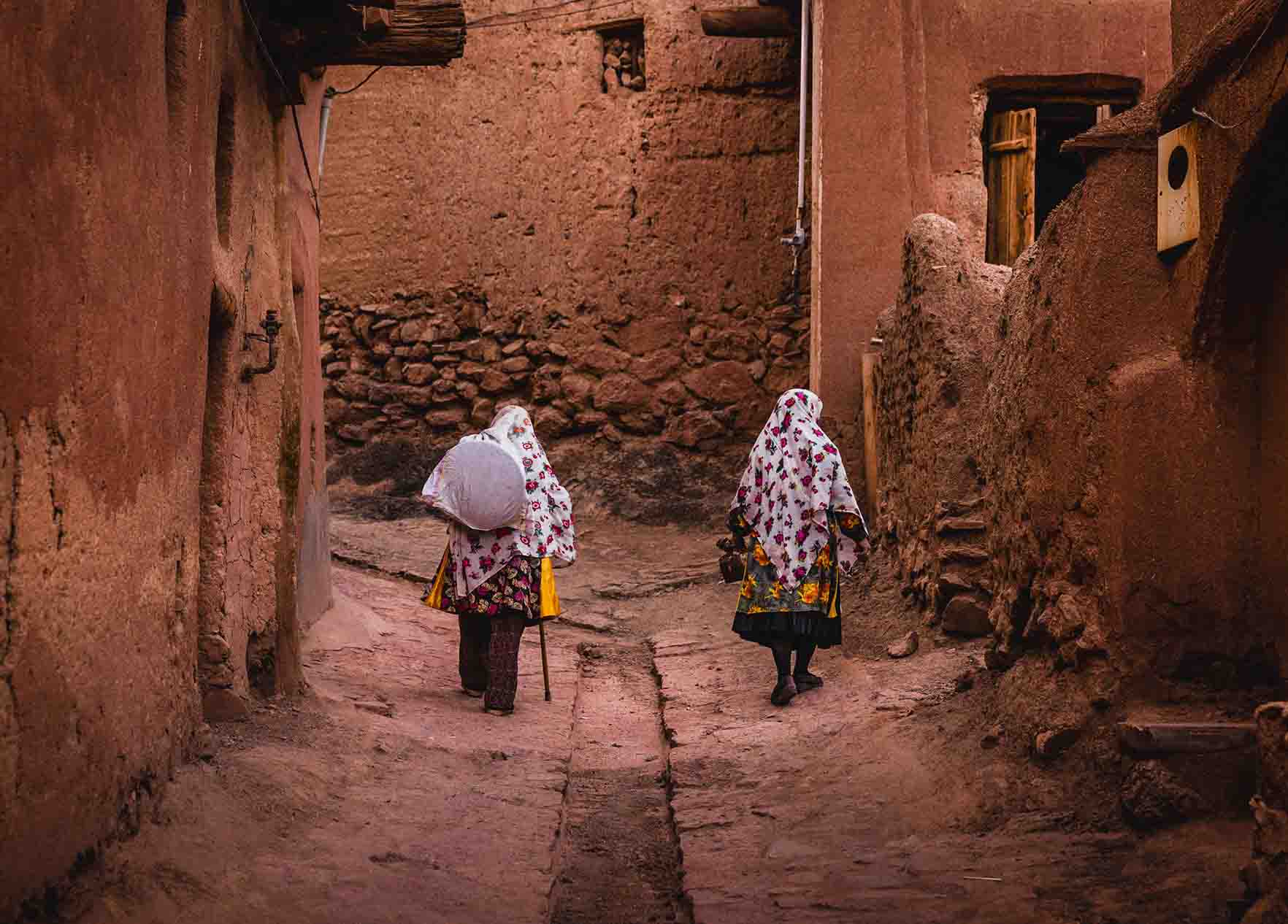
Abyaneh Village
Abyaneh village , nestled within the picturesque mountains of Iran, is a captivating destination that enchants tourists with its timeless charm. Known for its distinct red mud-brick houses, narrow winding alleys, and vibrant traditional clothing, Abyaneh offers visitors a unique journey into Iran’s rich cultural heritage.
The village’s well-preserved architecture reflects centuries of history, providing an authentic glimpse into the past. Travelers can explore its historic mosque, marvel at the intricate patterns adorning its buildings, and interact with friendly locals who proudly uphold their traditional way of life.
Abyaneh’s scenic surroundings offer opportunities for leisurely walks, where travelers can admire the stunning landscape and learn about the region’s customs and traditions. With its warm hospitality and fascinating cultural experience, Abyaneh village continues to captivate tourists seeking an authentic glimpse into Iran’s captivating history and traditions.
Kerman City: Historical Treasures and Desert Charms
Kerman City , a city with a rich historical tapestry woven into the heart of Iran, beckons travelers with its diverse attractions. This vibrant city serves as a gateway to the desert and boasts a blend of ancient and modern elements.
Kerman’s historical sites include the Ganjali Khan Complex, a stunning architectural ensemble with a bazaar, bathhouse, mosque, and caravanserai. The city also houses the Jameh Mosque of Kerman, a testament to Islamic architecture. Beyond the urban landscape, Kerman’s surrounding areas offer natural wonders such as the Lut Desert, a UNESCO World Heritage Site known for its mesmerizing dunes.
The Rayen Citadel and Mahan’s Shazdeh Garden are also among Kerman’s cultural gems. Visitors can explore the city’s rich heritage, savor its renowned pistachios, and immerse themselves in its warm local hospitality. Kerman presents an intriguing blend of history, culture, and natural beauty that captures the essence of Iran’s diverse landscape.
Bandar Abbas: Coastal Gateway and Trade Hub
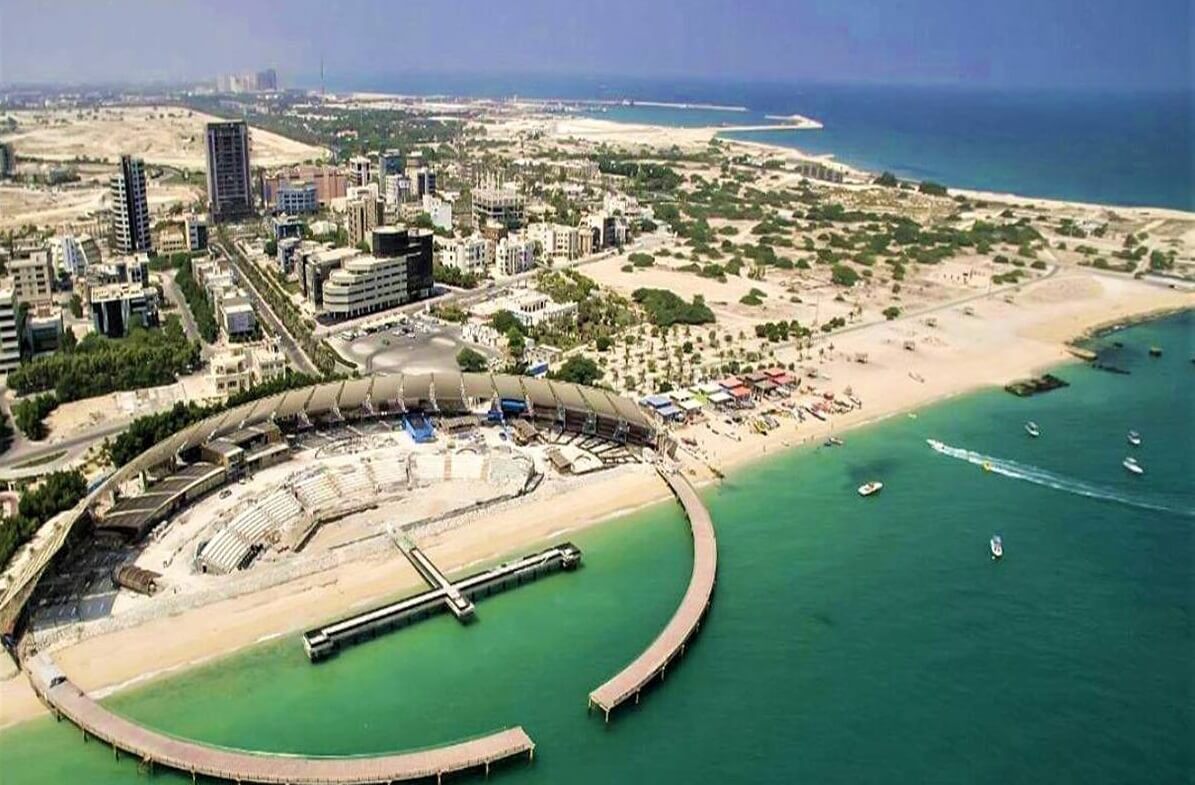
Bandar Abbas
Bandar Abbas, a bustling port city on the southern coast of Iran, offers a unique blend of maritime charm and cultural richness. The city’s vibrant bazaars, such as the Vakil Bazaar, lure visitors with many goods, spices, and handicrafts.
Bandar Abbas City is a gateway to the mesmerizing Hormuz Island, known for its colorful soil and pristine beaches, making it a paradise for nature enthusiasts.
The Qeshm Island, nearby, with its geological wonders and intriguing culture, is also easily accessible from Bandar Abbas. The city’s historic sites provide insights into its maritime past, including the Portuguese-built Fort of Our Lady of the Conception and the 18th-century Hormozgan Museum.
With its bustling markets, access to enchanting islands, and historical landmarks, Bandar Abbas offers a multifaceted experience that captivates travelers exploring the southern regions of Iran.
Hamedan City: Ancient Heritage and Natural Beauty
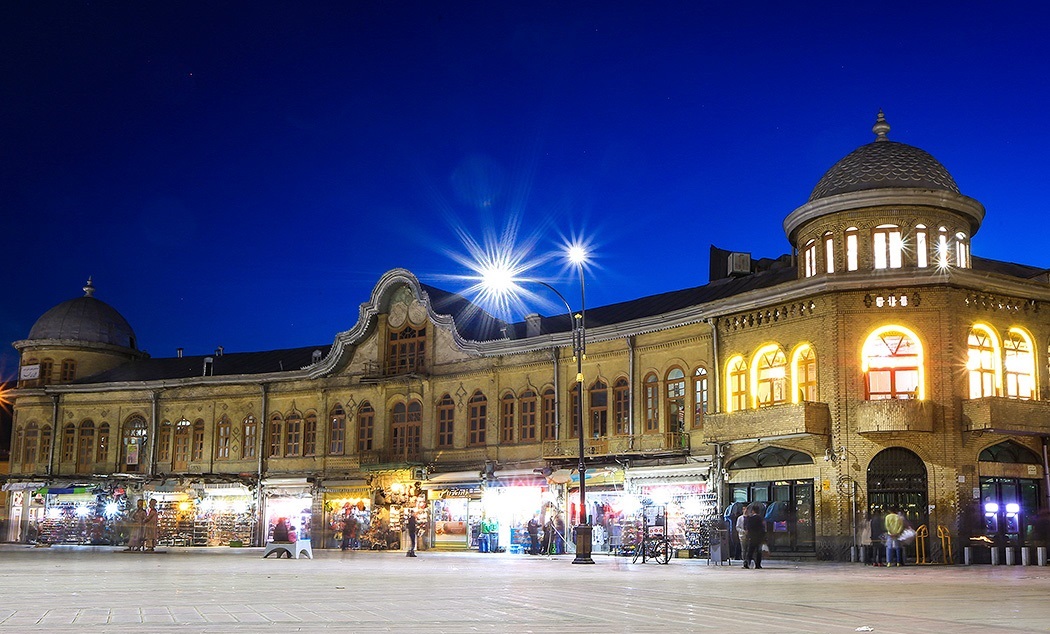
Hamedan City
Hamedan City , often called the ancient city of Ecbatana, is a historical and cultural treasure in western Iran. This city boasts a rich history dating back to ancient times, making it a haven for history enthusiasts.
One of its prominent attractions is the tomb of Avicenna, the renowned Persian polymath and philosopher. The city’s iconic Hegmataneh Archaeological Park reveals the layers of its ancient past through archaeological excavations.
The Ali Sadr Cave near Hamedan is a captivating natural wonder with its underground lakes and stunning formations. Hamedan’s vibrant bazaars and traditional architecture provide a glimpse into the local way of life. The city’s unique blend of historical landmarks, natural beauty, and cultural heritage makes it an enticing destination for those seeking to explore Iran’s multifaceted history and captivating landscapes.
Iranian Cities Iran Travel
Previous The Cultural Traditions of Iran
Next the evolution of the work away platform for companies post-coronavirus, related posts.
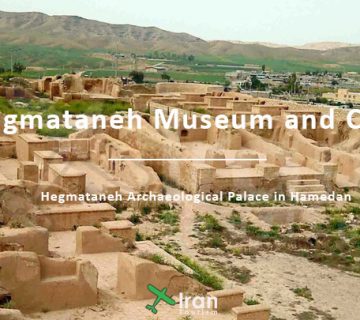
The Hegmataneh Museum and Complex
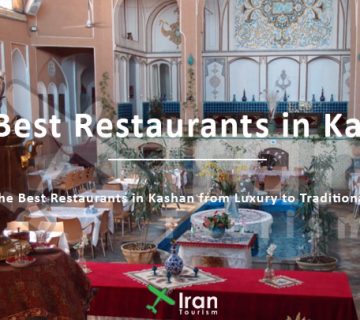
The Best Restaurants in Kashan, from Luxury to Traditional
Leave a reply cancel reply.
Your email address will not be published. Required fields are marked *
Save my name, email, and website in this browser for the next time I comment.

25 Unmissable Things To Do In Tehran: Iran’s Chaotic Capital
Posted on Last updated: December 15, 2023
Categories Iran
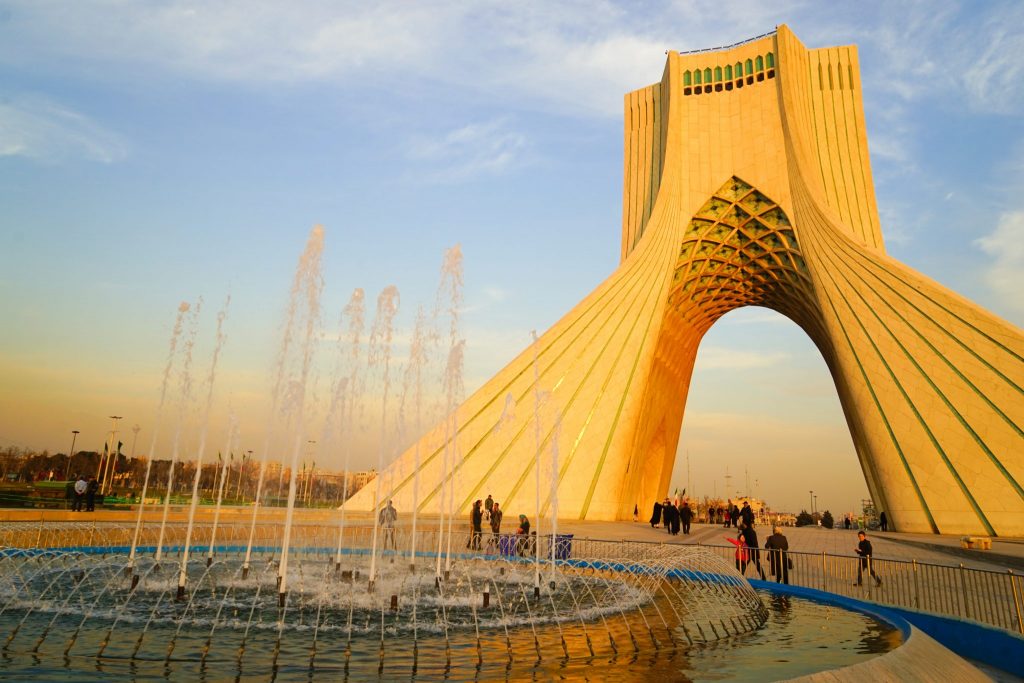
Expert travel storyteller Jordan Adkins, founder of InspiredByMaps.com, brings a decade of adventures across 101 countries and 450+ UNESCO sites into rich, off-the-beaten-path narratives, melding ecological expertise with genuine, seasoned travel insights. His full bio can be found here.
Crazy, chaotic, surprising at every turn – Tehran, the smoggy capital of Iran, is more than just an eternal traffic jam.
The political, cultural, and economic heart of the Islamic Republic, one can not truly experience this dynamic country without spending at least a few days here…And don’t worry, there is no shortage of things to do in Tehran!
While many travelers make the mistake of rushing past Tehran in a race to the more historical cities of Iran, there is so much more here than meets the eye. With 14 million inhabitants, Tehran is one of the most dynamic and interesting cities in the world.
With glorious museums, huge bazaars, captivating people, and yes – even the notorious former US embassy, that was the focal point of the Iranian hostage crisis.

Thankfully today, Tehran is the most liberal and secular place in Iran, a city whose inhabitants are constantly pushing up against authority, whether it’s at one of Tehran’s many universities, in a contemporary coffee-shop or a modern art museum.
Through Tehran, you can get an idea of what the future of Iran might look like if many of the regimes more progressive elements get their way.
Throw in a spectacular mountain range, a few architectural gems, delicious food, and some of the friendliest people in the world, and you begin to see why Tehran is one destination in Iran you absolutely cannot miss!
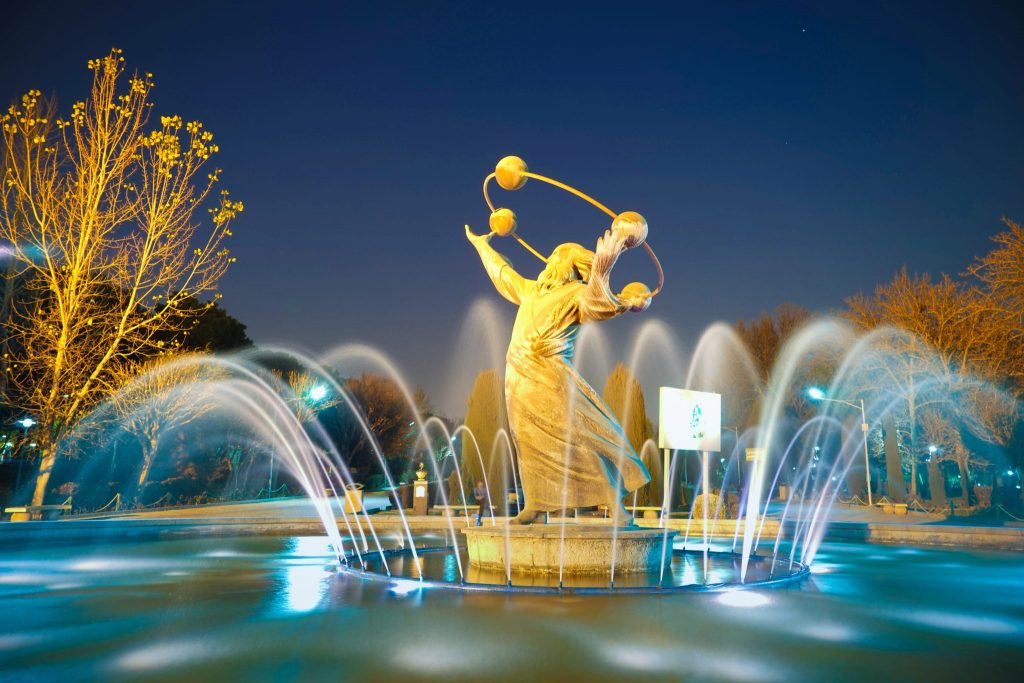
25 Unmissable Things To Do In Tehran: Iran’s Chaotic Capital 🇮🇷
Page Contents
1. Tehran Grand Bazaar
2. tabi’at bridge / nature bridge tehran, 3. azadi tower, 4. golestan palace unesco world heritage site, 5. hi tehran hostel, 6. us den of espionage / embassy of the united states in tehran, 7. museum of the qasr prison, 8. tochal telecabin tehran, 9. skiing in iran, 10. tehran metro art, 11. wander tehran, 12. tehran museum of contemporary art (tmoca), 13. sa’d abad museum complex, 14. park e shahr / tehran city park, 15. museum of ancient iran, 16. museum of the islamic era, 17. islamic revolution & holy defense museum, 18. imamzadeh saleh / tajrish mosque, 19. tehran shopping malls, 20. saint sarkis cathedral, 21. sharaf al-eslami restaurant, 22. cinema museum of iran, 23. snapp / iranian uber, 24. tehran coffeeshops, 25. tehran street food, how to get to tehran iran, where to go after tehran when you visit iran.
Characterized as an old historical bazaar, but the Tehran Grand Bazaar is so much more than that, still to this day acting as a vital economic center of Tehran where everyone comes to buy anything.
You name it; you can find it here if you wander for long enough through its seemingly endless labyrinths of covered alleys. Make sure you have a map on your phone and then get as lost as you can, safe in the knowledge you will somehow find your way back!
Incredibly photogenic, be sure to visit the Tehran Grand Bazaar in the morning before all the stock gets refilled in the afternoon by scary fast-moving haulage equipment, which somewhat distracts from the experience.
Iranian carpet sellers will undoubtedly try to befriend you. They can make an interesting guide if you don’t mind the hard sell at the end (although in our experience they knew Westerners generally couldn’t afford their outrageous prices and were just happy to chat!)
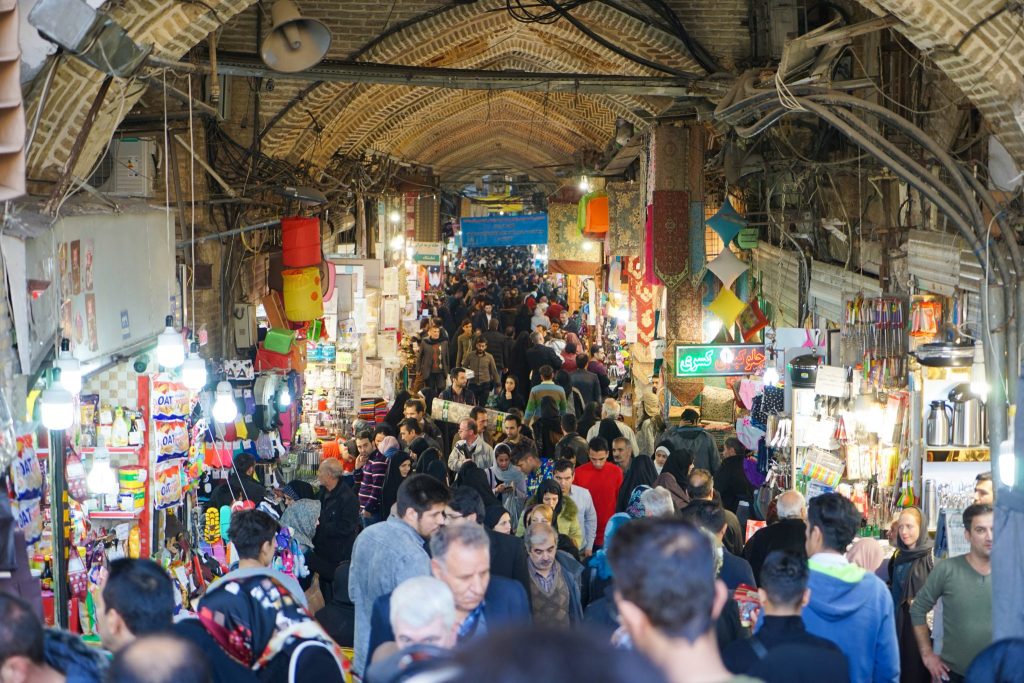
A 270-meter three-level bridge connecting two parks in Tehran, the Tabi’at Bridge is probably the most beautiful piece of urban architecture built since the revolution.
Opened in 2014, the Tabi’at Bridge (also known as the Nature Bridge in Tehran) is a popular hang out for Iranian’s who come to enjoy a variety of dining options, views, and relaxation areas. Even more incredibly- the Tabi’at Bridge was the brainchild of an Iranian architecture student, Leila Araghian, who was only 26 at the time.
Winning design competitions all over the world – the Tabi’at Bridge should not be missed, and we can’t wait to see what Leila Araghian comes up with next!
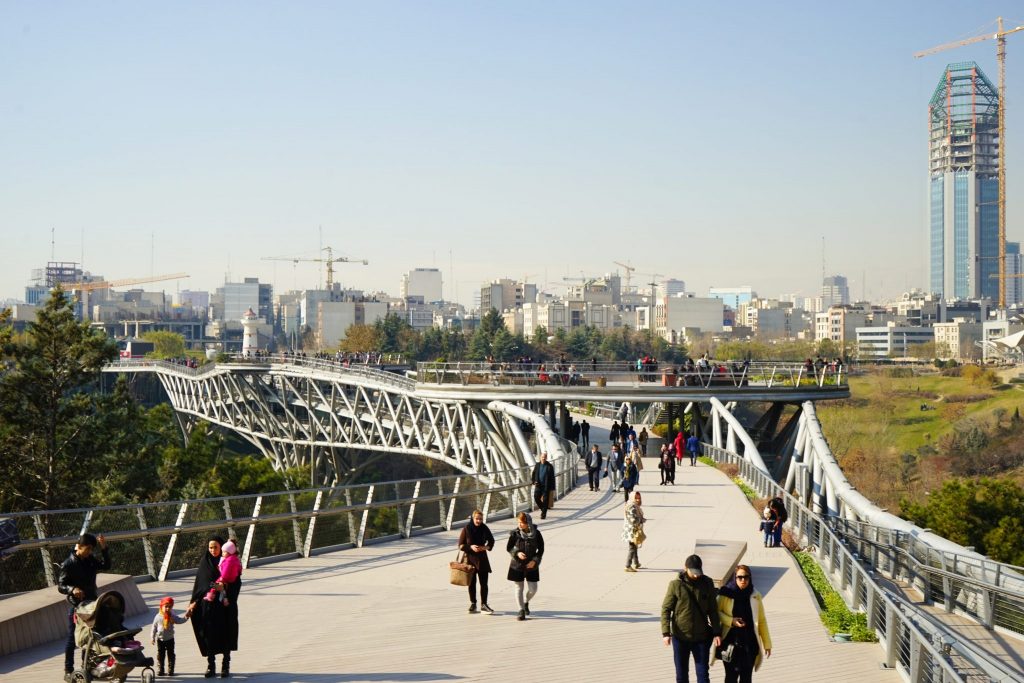
An icon of Iran known around the world, the Azadi Tower – known as the Shah’s Memorial Tower before the revolution – marking the west entrance to Tehran and is part of the Azadi Cultural Complex.
There is a museum underground which is included in your ticket are you can either walk or take two elevators up the 45-meter tall structure. And yes, the entire thing is clad in cut marble so you can imagine how incredible it looks at sunset (though the views at the top are pretty incredible too!).
The Azadi Tower was built to mark the 2,500th anniversary of the foundation of the Imperial State of Iran by architect Hossein Amanat who based the design upon classical Iranian architecture. The entire grand design was financed by the huge wealth generated by Iran as a major oil-producing nation before the revolution; however, as a member of the persecuted Bahá’í Faith, Amanat fled Iran to Israel during the 1979 Iranian Revolution.
He went on to design the equally famous Bahá’í Arc buildings in Haifa, Israel, and weirdly enough – the House of Worship in Samoa.

The incredibly lavish Golestan Palace is widely regarded as a defining work of the Qajar era thanks to the marriage of Persian craft architecture with Western influences.
That is why it was rewarded UNESCO World Heritage Status , and quite rightly, I think!
The Palace is one of the oldest buildings in Tehran, and when the Qajar family came into power here in 1779, they made this remarkable the capital of Iran – where it has stayed ever since. Glorious and outrageously excessive, the Golestan Palace is one thing to do in Tehran you absolutely cannot skip.
However, be aware that with a total-ticket price of 850 000 rials (app. 25USD), it is tied with the far less-worthy Sa’d Abad Museum Complex for the most expensive museum in Iran.
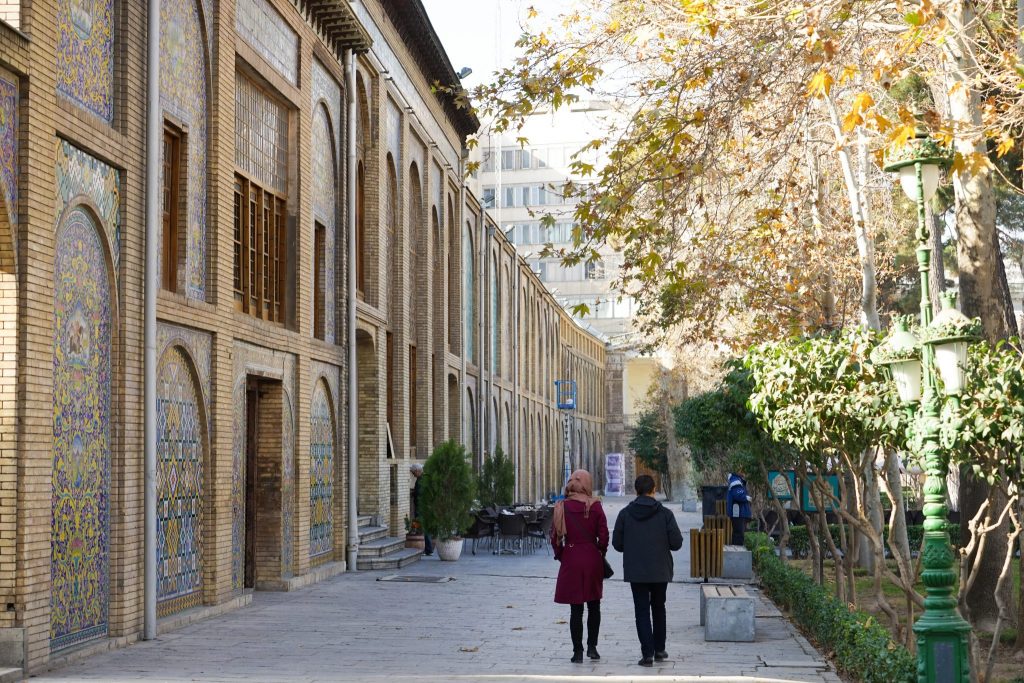
Information about Iran can be hard to come by outside the country, so it pays to have a super-reliable place to connect with travelers with helpful locals on hand when you arrive.
This is why I loved staying at HI Tehran Hostel , a full-renovated hostel in a quiet street just minutes from many of Tehran’s top tourist attractions and a Tehran Metro Station. While the modern facilities, spacious dorms, and private food and free breakfast were excellent, what I loved most was the atmosphere as the staff would always be chatting at the communal breakfast table and answering everyone’s questions.

It’s also a great place to meet other travelers, either beginning or ending their trip to exchange money, find companions, get ideas, or just to swaps stories! I stayed here both at the beginning and end of my journey and would return to HI Tehran Hostel in a heart-beat!
Oh, and another nice bonus: HI Tehran Hostel provide an invitation via email needed to get the Iran visa on arrival at Tehran Airport, and the immigration staff seems to be so familiar with the hostel they didn’t even bother calling to confirm.
This meant I was out of the airport while other travelers were waiting for their hostel to answer the phone in the middle of the night (though I later called the hostel at 3 AM when I was lost, and they responded in a few seconds – they really are 24/7)
The famous former US embassy in Tehran, where 52 diplomats were taken hostage for 444 days by students during the 1979 revolution!
Even today, the massive compound is still controlled by the Student Basij Organisation, who are tasked with defending the revolution and have turned the building into a museum. Be sure to take the free tour to make the most of the colorful propaganda both visually and spoken.
It is also absolutely fascinating to see the once-secret rooms used for spying now embarrassingly on full display – and to get a real sense of the work undertaken in the US embassy before the revolution.
Truly like walking back in time and straight onto a movie set, you can’t miss the opportunity to visit the historic US Den of Espionage.
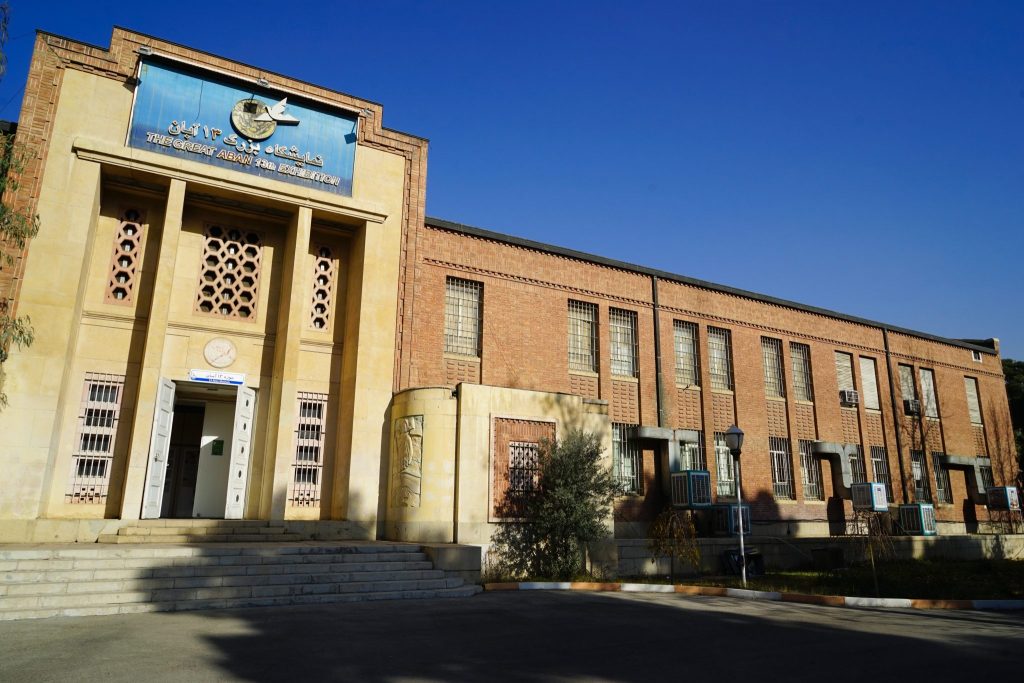
Newly opened, the Museum of the Qasr Prison in Tehran is a dark look into the Pahlavi-era prison complex, renowned for psychological and physical torture.
Former prisoners still guide here somedays and will share memories of their torture, including broken teeth and amputated limbs. The former Qasr Prison gardens have been turned into a beautiful park, and while the main historic prison building may be the focus (with stunning brickwork none the less) don’t miss the much darker and newer concrete building at the back of the complex where recordings still play the screams of torture.
Here you get an intensely real look into what life was like in this prison just before and during the revolution here, but it is not for the faint-of-heart.
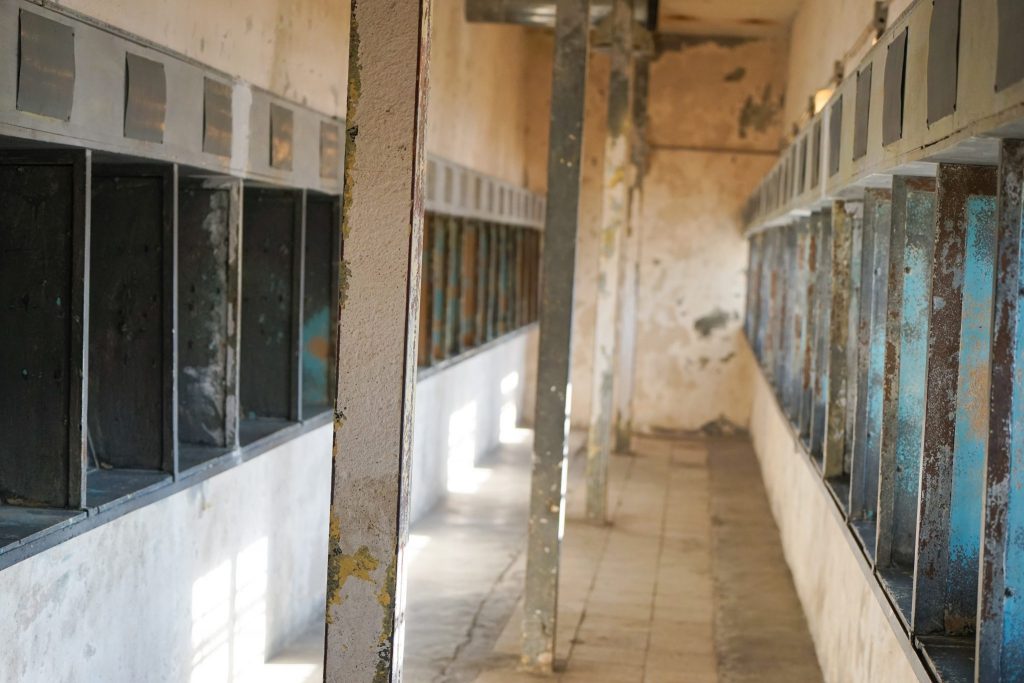
If the inevitable smog of Tehran gets a bit too much for you – why not head to the mountains with the Tochal Telecabin / Sky Lift! Located in the north of Tehran.
You can make a 45 minutes trip straight up and then couples with a short scramble you can easily summit Mt Tochal (3933m). As you would expect, the views are out of this world – both of the mountains and back down over the chaos that is Tehran – and if you’re feeling fit, there is plenty of hiking opportunities at the different stations along the way!
Super popular with local Tehranis during the weekend, but don’t make the same mistake as us and try to visit the Tochal Telecabin during the week – We were told it is closed for the first three days after the weekend, every week?! So that means the Tochal Telecabin opening hours are supposably Wednesday – Saturday, but best to call ahead before making the trip out there (best reached by taxi) and to go early as the last car back down is apparently 3 PM…
Like many things in Iran, it’s better not to question it!
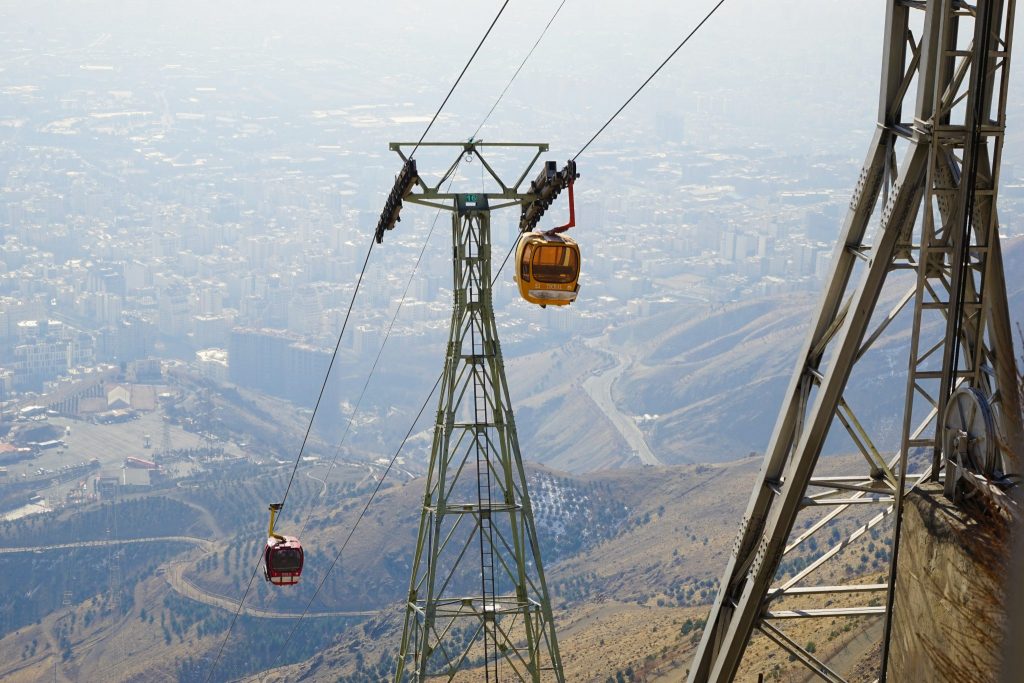
Even though the majority of Iran is pretty much a desert, there is still some great skiing in Iran – and some of the cheapest skiing in the world!
While global warming seems to be shortening the season for skiing in Iran, you can get some pretty good powder for skiing in Tehran from January. The Tochal Ski resort is located at the end of the above cable car and makes a great day-trip, but if you are really serious, you are going to want to head to the nearby Dizin Ski Resort or Shemshak Ski Resort from Tehran. Not what you were expecting to do in Iran, right!
Just make sure you have everything you need for your first time skiing as you won’t be able to buy in Iran.
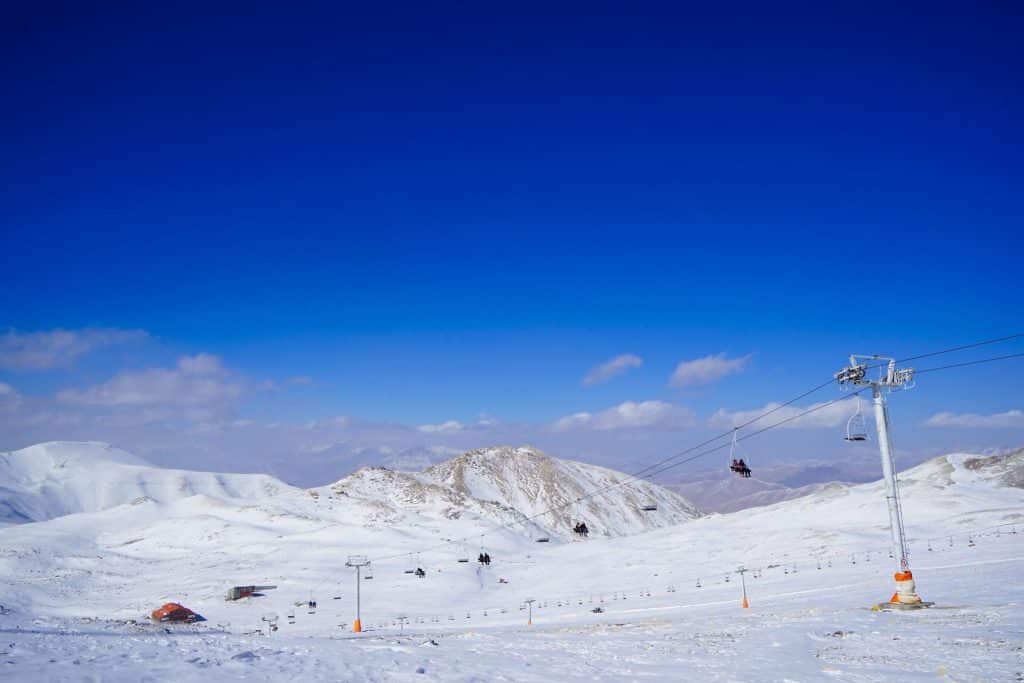
Continually expanding, the Tehran Metro is the lifeline of Tehran and carries over 3 million passengers a day while the streets above are in near-constant grid-lock.
Cheap and easy-to-use, there is also a bonus for tourists – if you pay attention, the Tehran Metro is the best place to see propaganda in Iran!
Constantly changing, pay special attention to the platforms, or the long entrance corridors to see cartoons and artwork depicting everything from the morals taught in the Quran and daily life in Iran to rather harsh and graphic anti-US and anti-Israel pieces. It doesn’t have as much artistic merit as the Stockholm Metro Art or Msheireb station in nearby Doha, Qatar … but it arguably more interesting!
While these Tehran metro cartoons make a great picture to share with friends back home, be discrete when taking photos and remember that the views expressed are directly from a government department and by-and-large not reflective of Iranian society at large (or at least many of the more liberal Tehranis)…
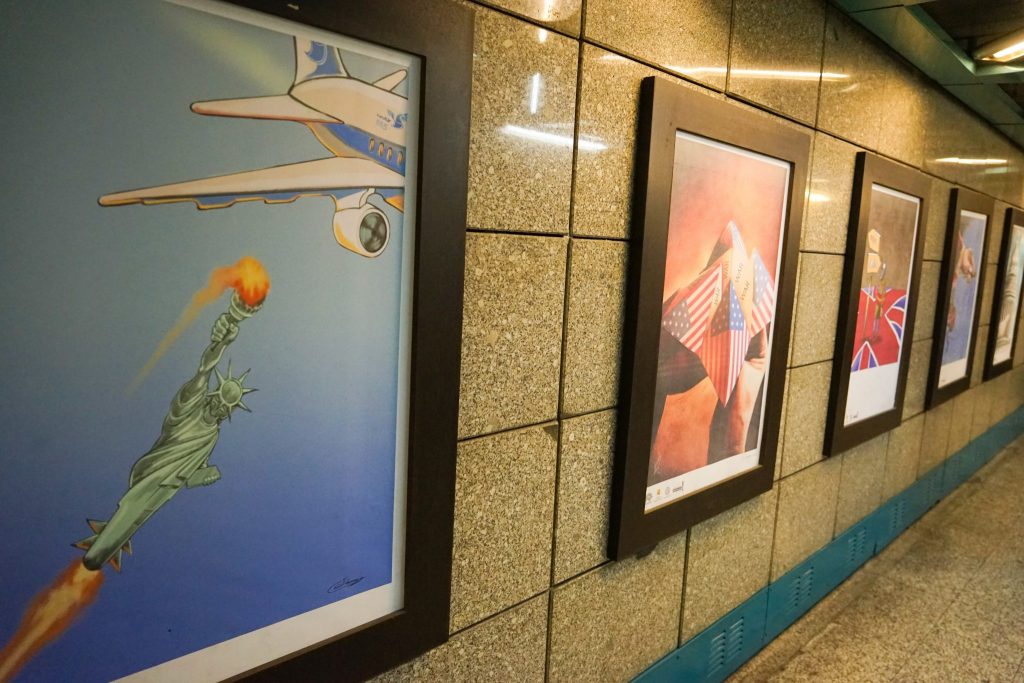
While each time crossing the road might be a near-death experience, there is no better way to get to experience the social fabric and stumble upon hidden gems in Tehran than to simply wander.
Instead of taking a taxi or heading a few stops on the Tehran Metro, why not get your walk on and see what you come across! Small parks, street food, intriguing shops, and hidden bazaars, there really is no telling! Expect a great many people to stop, and thank you for visiting Iran — and question you on your experiences in Iran so far.
Besides, if you ever are lost these people are great to help you find the nearest Metro, coffee-shop, museum or restaurant!
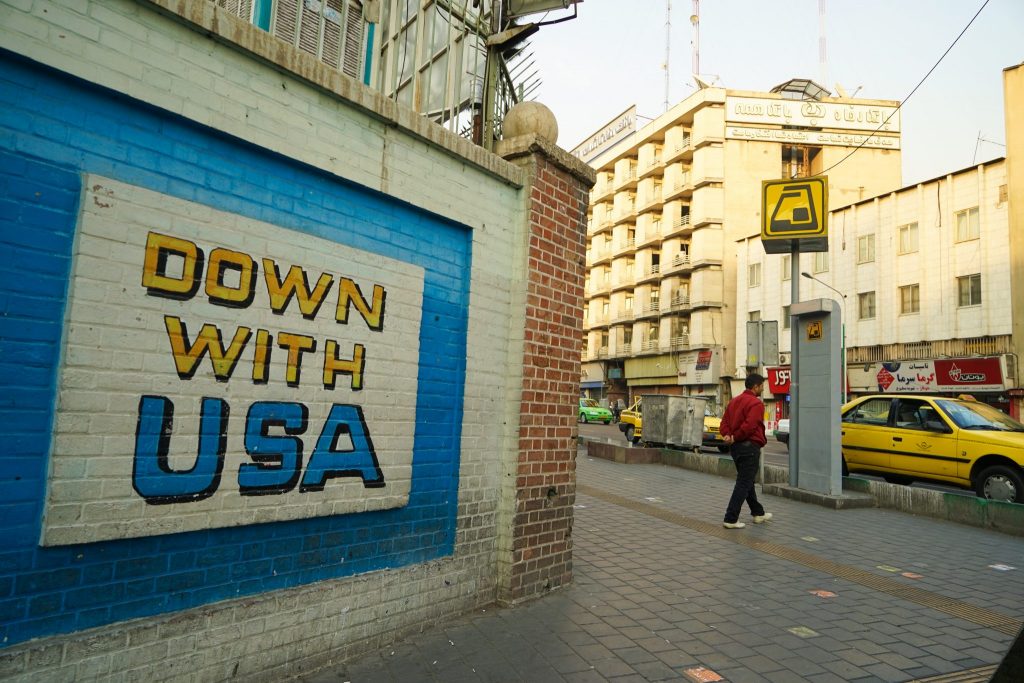
While Iran might not be a world leader in contemporary art today, you should still visit the Tehran Museum of Contemporary Art to see the stunning collection of 19th and 20th century’s world-class European and American pieces.
Opened by Empress Farah Pahlavi in 1977 – just two years before the Revolution – TMoCA is said to hold the most valuable collections of modern Western masterpieces outside Europe and North America . However, most were hidden away until recently when they have again been put on display.
Possibly even more intriguing, however, is the liberal Tehranis that are drawn to the Tehran Museum of Contemporary Art. Inside you’ll find many people rebelliously removing their hijabs, and you could easily imagine yourself in an art gallery in Western Europe or the US!
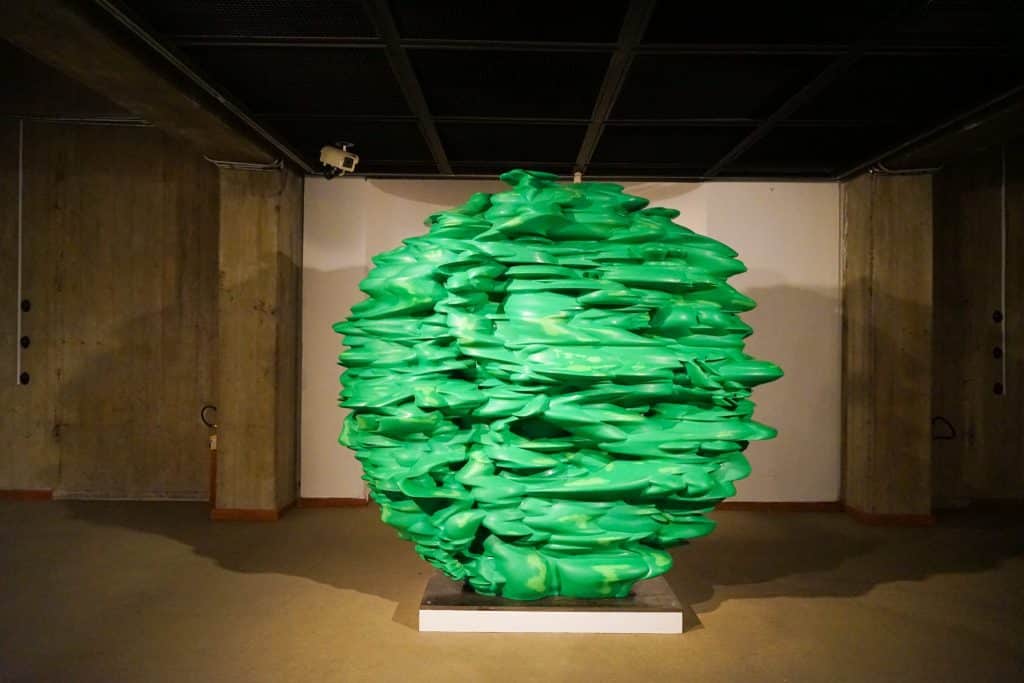
A sprawling 300-hectare complex built by the Qajar and Pahlavi monarchs in a similar pattern to the oil-rich rulers of Saudi and the Gulf States today…
Now open to the public, the Sa’ dabad Complex, while expensive by Iranian standards, is a beautiful place to wander and admire the natural forest, qanats, and buildings. Each museum is individually chargeable and, in our opinion — not at all worth it. Except, perhaps, for the famous Green House (with its outlandish hall of mirrors) — which is currently under renovation.
There is also a collection of royal cars if you have a passion for vintage sports cars, but you can see them in only a few minutes. Look out for the President of Iran who has taken up residence in a private section of the Sa’ dabad Complex.
Don’t worry; there are plenty of armed guards to stop you accidentally wandering in!
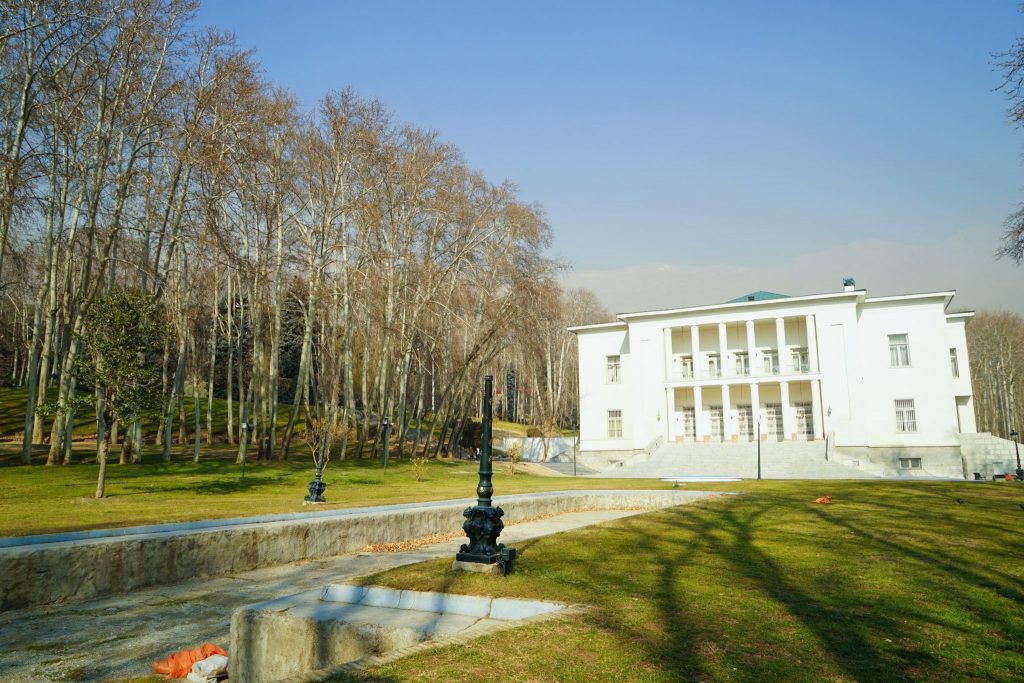
A sprawling park in central Tehran near to all the major museums in the district. Take a wander through and admire the bizarre bird park, aquarium, and library.
The Tehran Peace Museum is also located here with strange opening hours – take a peek in if it is open. You can also find plenty of cats roaming around and can join in a game of ping-pong with the locals who gather here to relax and unwind.
The Park-e Shahr is probably the only place big enough to escape the constant traffic and honking in Central Tehran!
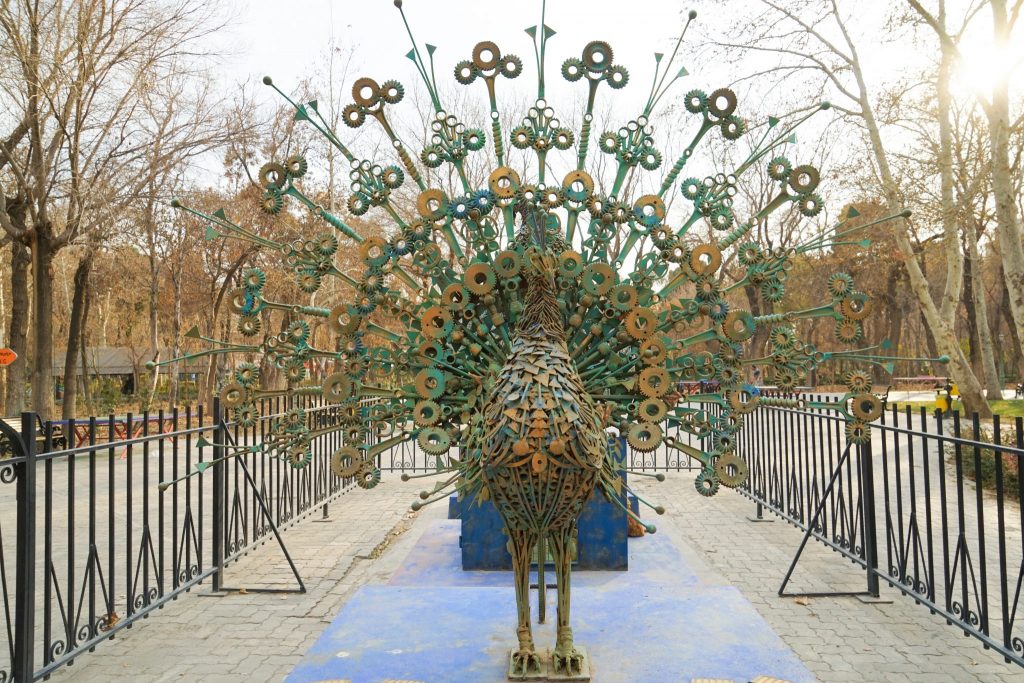
Housing historical objects from Iran’s pre-Islam, you would expect the Museum of Ancient Iran to be one of the most glorious in the country – but sadly, it is entirely underwhelming and a wasted opportunity.
Housing objects from the Shah era, the museum was opened after the revolution, and you get the feeling that the government did not want to venerate any part of Iran’s past before Islam. Still, if you’re interested in ancient history, you should still take a wander through.
Islam’s post-Islamic history is displayed next door and charged separately (and weirdly enough, the Museum of Ancient Iran is almost twice the price but nowhere near as good…)
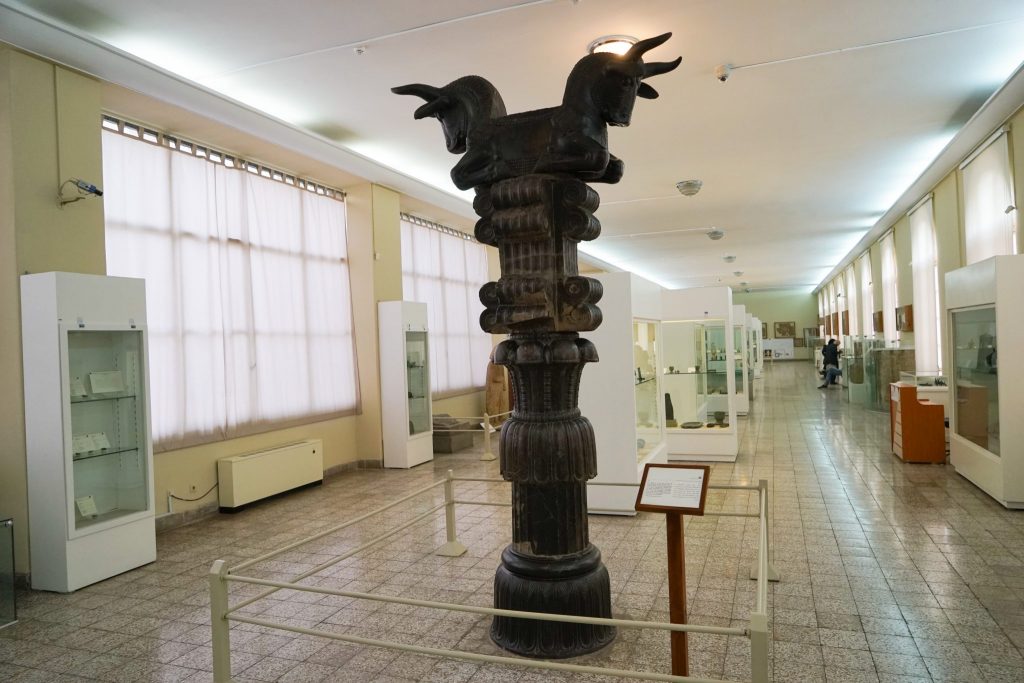
Next door to the above Museum of Ancient Iran and far better, the Museum of the Islamic Era is one of the top museums in Tehran.
Recently reopened after a nine-year renovation, this three-story building displays over 1500 items and relics from the early Islamic period as well as Seljuk, Ilkhanid, Teymurid, Safavid, and Qajar eras. Beautifully done, you won’t want to rush through as you take in all the details of the ancient rugs, painting, plates, pots, and more.
There is also a temporary exhibition space on the ground floor changing every six months.
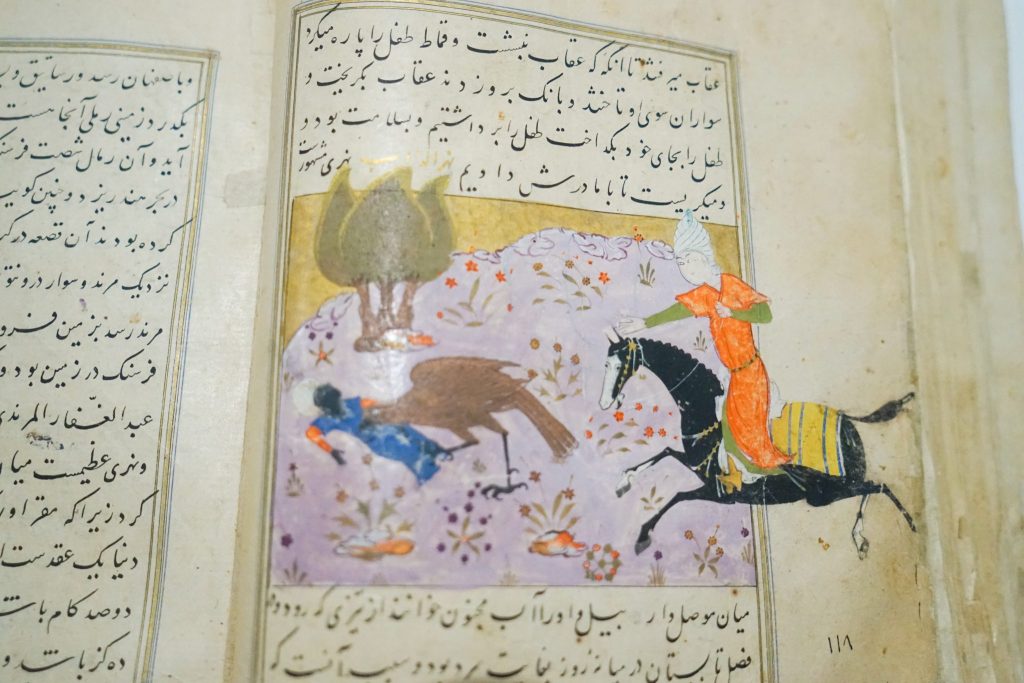
An outsized experiment in glorification with more than a hint of propaganda, the Iran Holy Defense Museum is easily one of the things to do in Tehran.
Focussing on the bloody Iran-Iraq war, which left over a million lives lost, there are over seven halls here going into minute details of every imaginable aspect of the conflict – though mostly through displays, walk-through models, visual effects and more. This is a very high-tech museum – if a little surreal – after which you might have a better idea of this harrowing episode in modern Iranian history.
The bridge of the martyrs here is especially fascinating — and there are huge tanks, rockets, and planes outside.
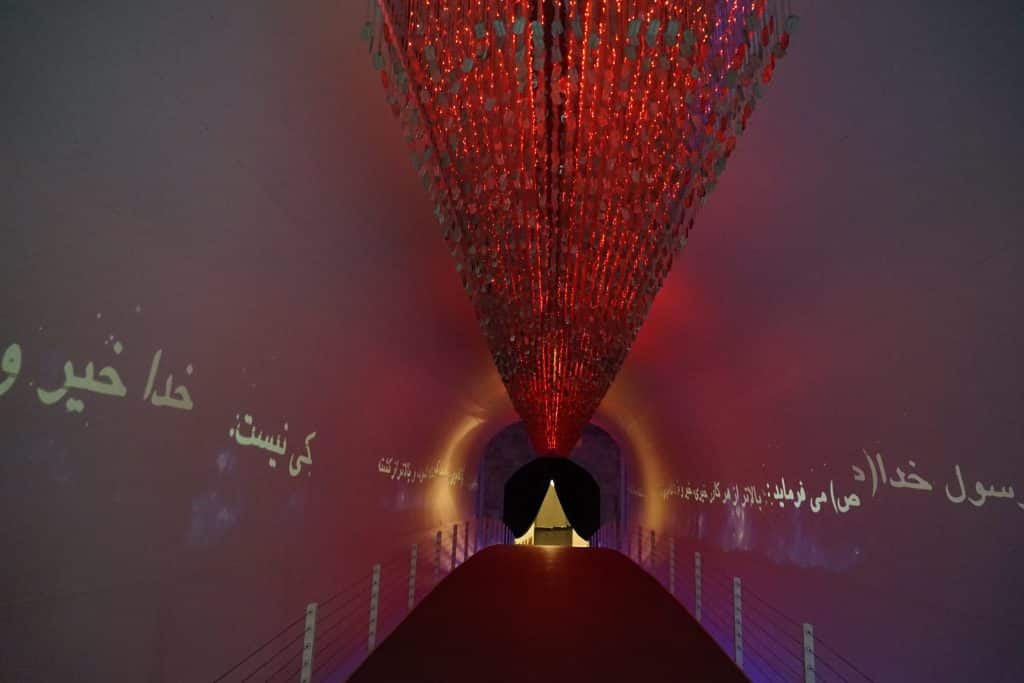
Visit the beautiful Tajrish Mosque officially known as the Imamzadeh Saleh to see the entombed remains of Saleh, a son of the Twelver Shia Imam, Musa al-Kadhim.
One of the most famous shrines in Tehran, the interior is particularly spectacular and was our favorite mosque in Tehran. Make sure not to visit during prayer as it is far too busy, and you are likely not to be let in – but during other times, we found foreigners were welcomed, and someone is likely to take an interest in you and offer you a tour!
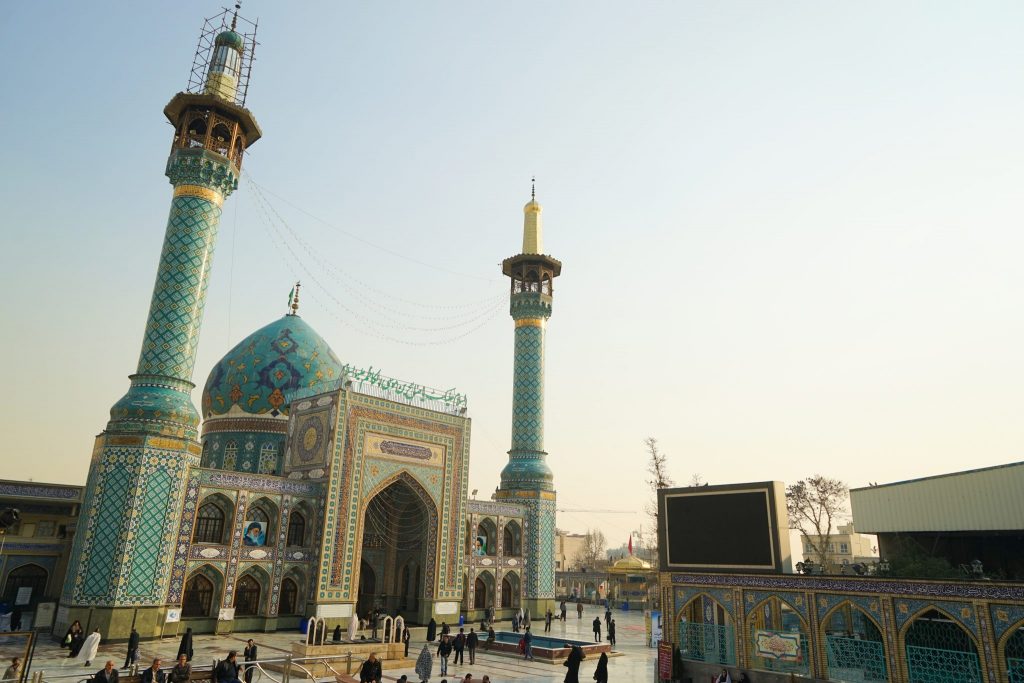
So as a tourist, you’re probably not going to Tehran for the shopping – and especially not given that you need to bring cash for everything you buy!
But a visit to the Tehran Shopping Malls is not just about shopping!
With giant food courts, arcades, and plenty of Iranian / independent stores, they are a socializing space for Tehran rising middle-and-upper class and a great place to meet young, educated Iranians.
While most Tehran Shopping Malls are mega-monstrosities and impressive to wander around for a bit, the best is the Palladium shopping center (with the largest toy store in the Middle East ), the Arg Commercial Complex (with its luxury stores and beautiful outdoor interactive facade)and the Sam Commercial Complex.
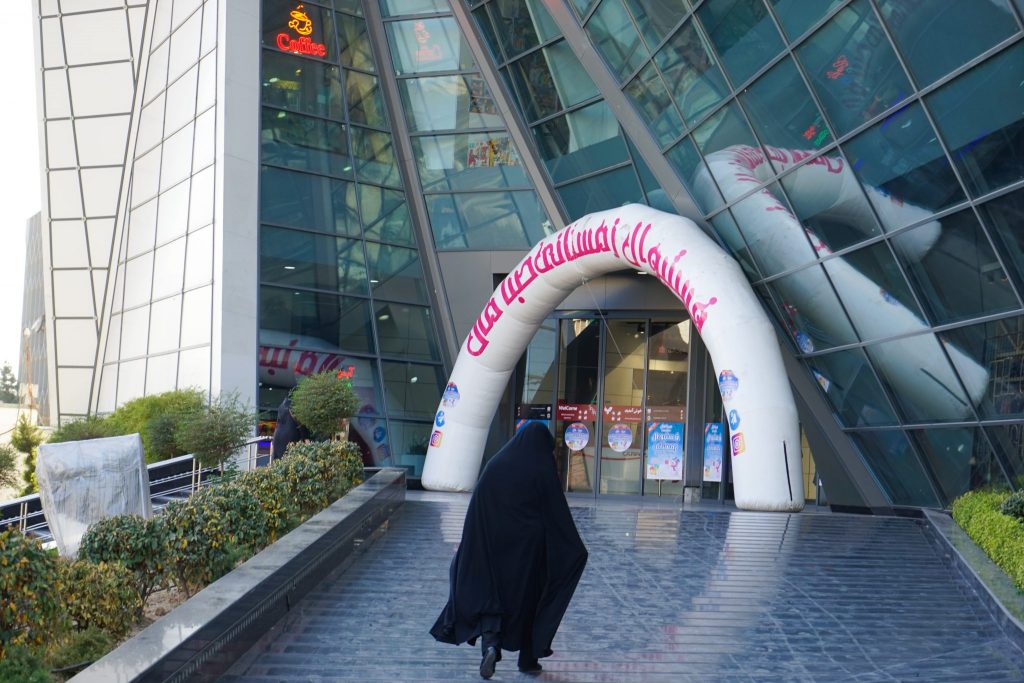
The largest church in Tehran, the Saint Sarkis Cathedral of the Armenian Apostolic, was completed in 1970.
While a Cathedral might not be top of your list of things to do in Tehran, you should not miss the opportunity to see Christian life play out in the Islamic Republic – complete with imposing giant walls, barbed wire, and strict security, though as a foreigner you will be welcomed in.
Forbidden from practicing their faith in public, the spires of the church are barely visible outside the compound. The surrounding area is intensely covered in pro-Islam murals and billboards.
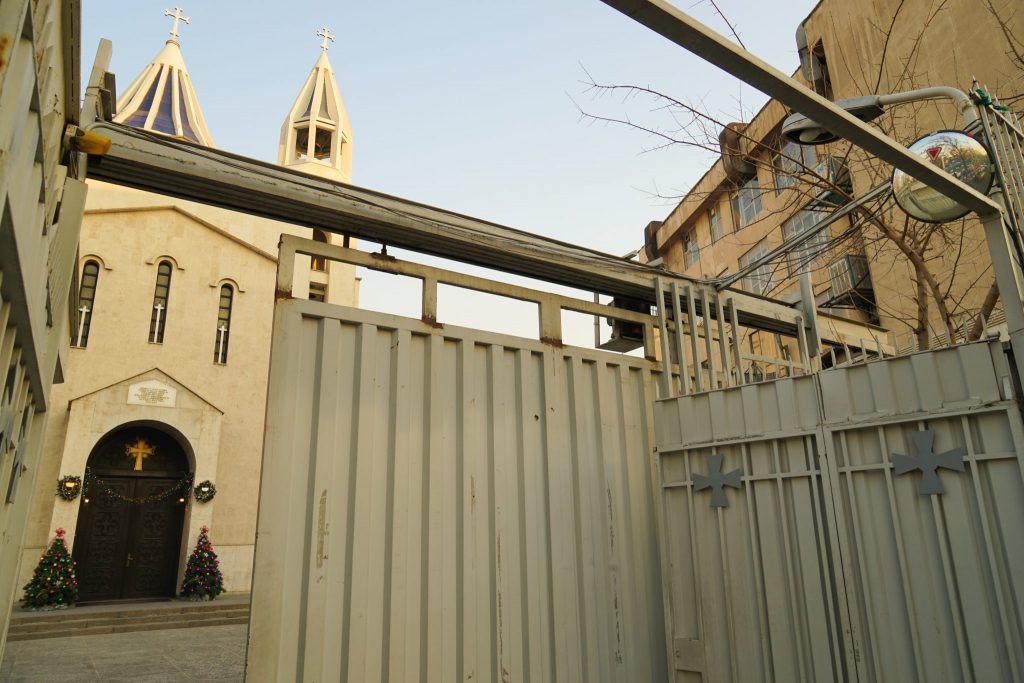
This historic restaurant is hidden away in the Tehran Central Bazaar, but you can find Sharaf El Islam by following the throng of people until you see a line heading into a crowded basement.
Here you can try some of the best traditional food in Tehran in a crowded and frantic setting. The service is rushed, and people will hover to get a table — and it all adds to the atmosphere! If you make it here, you’ll really be in the know, and 99% of the time, you’ll only be joined by locals.
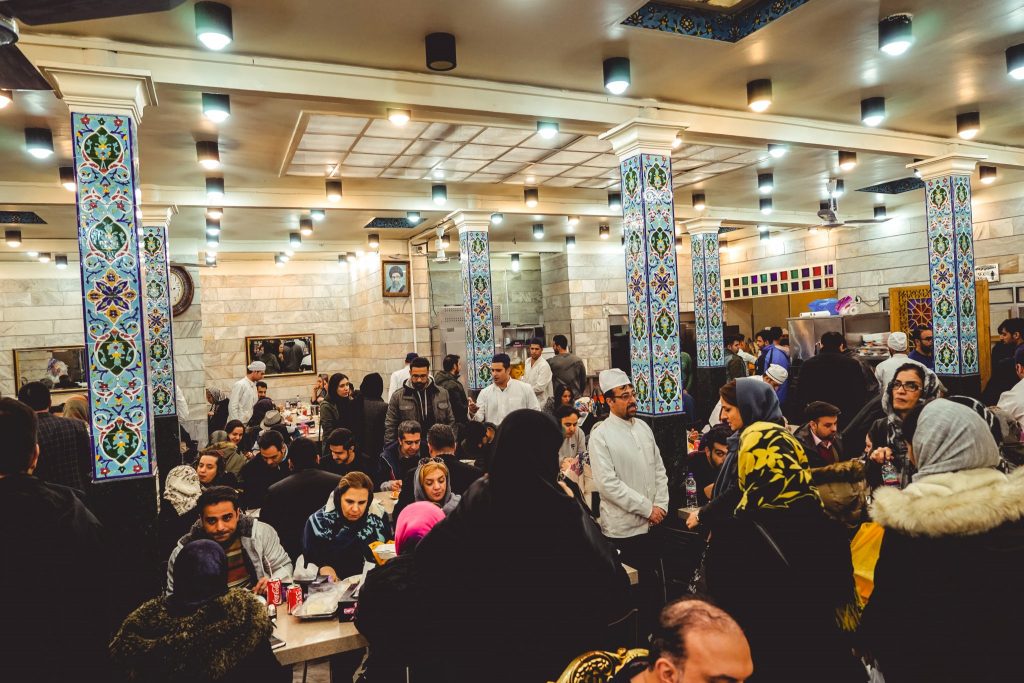
Located in the north of Tehran is a stunning Qajar-era mansion complex with historic garden, the Cinema Museum of Iran is a curious mix of equipment, posters, and photos from the Iranian movie industry dating back over the last century – and all in English!
There is even a beautiful working cinema with ornate molding showing new and classic Iranian films – though without subtitles, but still intriguing.
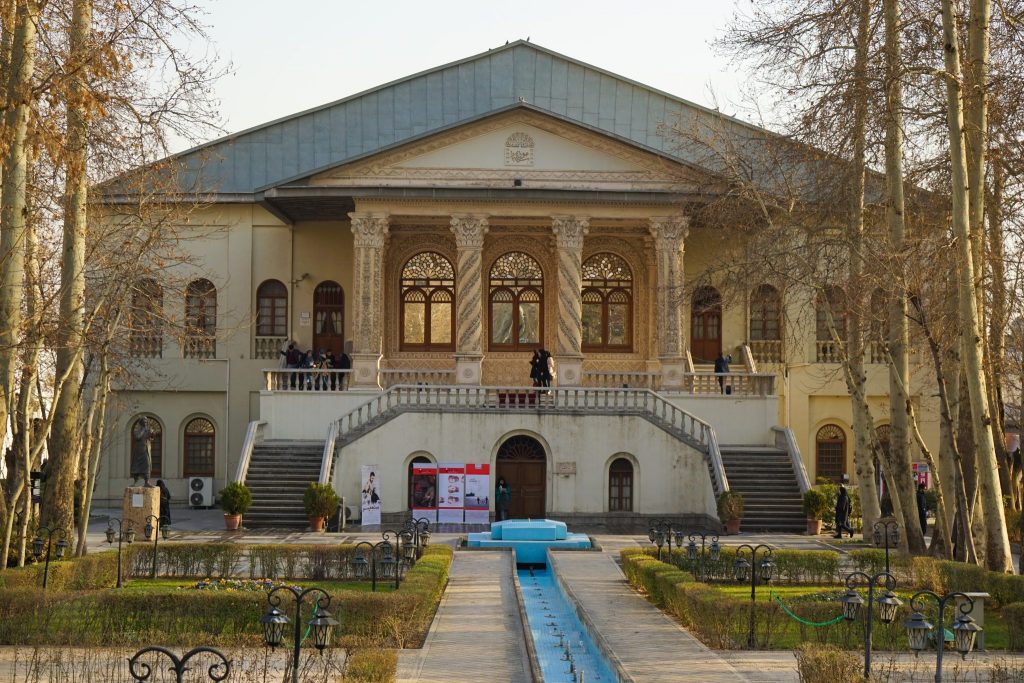
So not really a thing to do, but everyone traveling to Tehran should have Snapp downloaded on their phone as it halves the price of taxi’s – and lets you get where you need to go without language barriers.
While it might be blocked on the Apple App store, you can still download Snapp for iPhone with this handy workaround. Basically, Uber in Iran, Snapp let you explore the more remote attractions of Tehran that are not easily reached via Subway, and is helpful if you’re a larger group – though prices are set and very low!
Though you will get a first-hand experience of the insane driving in Tehran.
I recommend sitting in the back-seat and potentially blindfolding yourself as some things are better not seen!
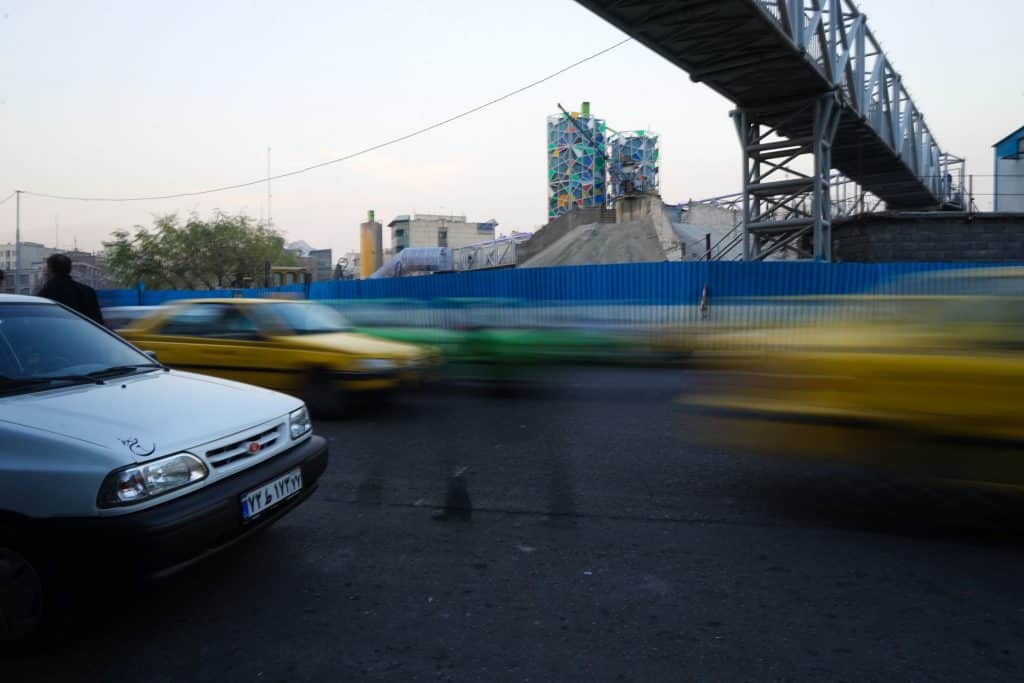
A hotbed of liberalism in Iran since the removal of sanctions — a café culture has exploded across Tehran as many more wealthy Iranians got a taste of Western culture and cosmopolitanism.
With some pretty decent views, coffee shops in Tehran are also a great place to meet young Iranians, engage in open discussion, or just to watch the unique culture that takes place here. A few years ago, many were raided as women were known not to wear hijabs inside.
Still, the authorities seem to be looking the other way again – but the morality police crackdown of 2013 makes for an exciting read. Lamiz Coffee is the Starbucks of Tehran with multiple locations (yet annoyingly no WiFi), but you should also stop by the historic Gol Rezaieh Café or the Tehran Museum of Contemporary Art Café.
To be honest, so many have opened up over the past year it’s hard to keep track of the best – so just ask your hostel in Tehran for their recommendation nearby, or better yet just stop someone young and trendy on the streets!
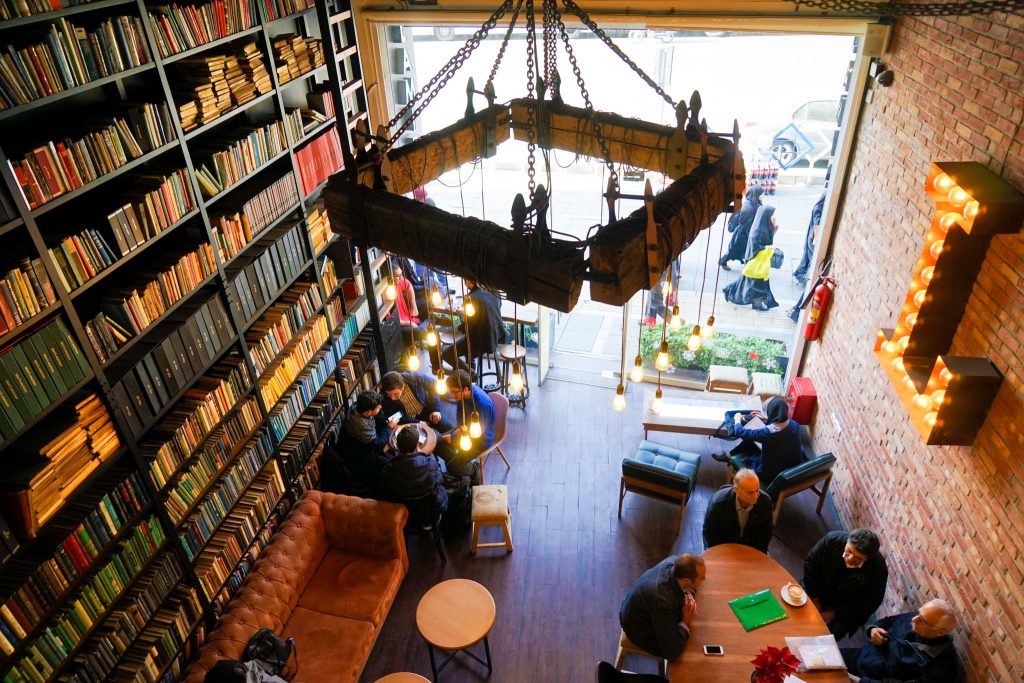
While all over Tehran you will find plenty of traditional street food – and you should try as much as you can (check here for Iranian street food to watch out for) – we are specifically talking about the street food of 30th Tir Steet outside the National Museum of Iran. Trendy and oh-so-cool, swing by here in the afternoon or evening for a lively atmosphere, intriguing food trucks + carts, and some nice outdoor seating.
You will surely be joined quickly by locals who will be quick to recommend their favorite spots, to help you with a translation and let you know all their favorite things to do in Tehran!
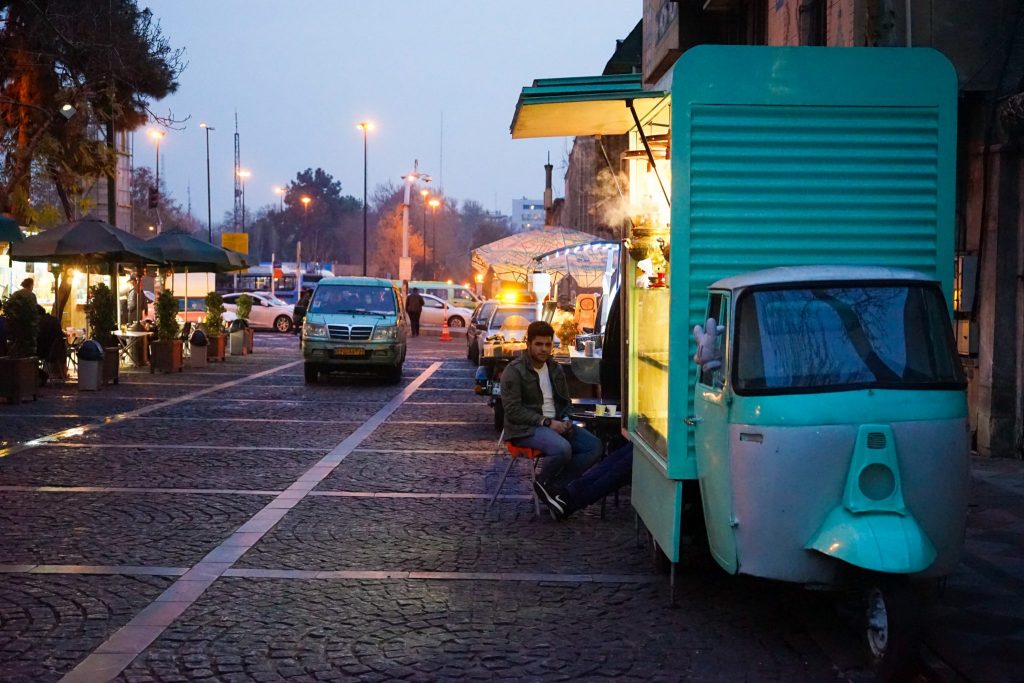
The undeniable hub and main entry point of Iran getting to Tehran is easy via bus, train, and flight.
There are direct flights to Tehran daily from all over the Middle East, Europe, and even with Air Asia to Kuala Lumpur if you’re coming from that direction. You can also find direct flights to most major cities in Iran at least a few times of the week, multiple times daily for major cities.
You can also get overnight sleeper trains to and from almost every major city in Iran. As a major transport hub in Iran and the greater region, you should have no problem getting in and out of Tehran.

Are you planning on exploring more than just one city in Iran? Here are some excellent other guides and cities to continue on your trip around Iran – or you can just check out these top things to do in Iran.
And if you want even more adventure – and to get out into nature while exploring off-the-beaten-track in Iran – why not consider hiring a rental car in Iran ? What could be better, right!
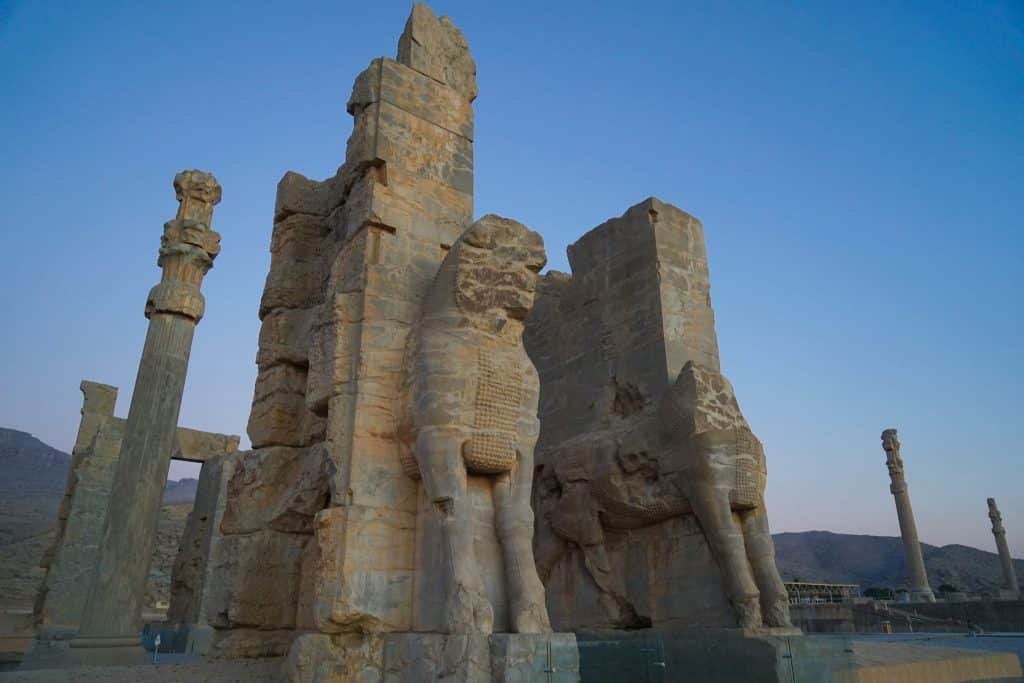
Bam – A UNESCO World Heritage Listed Fortress in South Iran. This famous desert castle was devastated by an earthquake in 2003, but after a 15-year renovation is now back and open for business. Find out more in this Arg-e Bam Travel Guide 2018: Now The Most Quake-Proof City in Iran
Kerman – A rather dull city, surrounded by some of the best desert landscapes in Iran. Get off-the-beaten-track and see Iran without the tourists with these 10 Things To See And Do In Kerman Iran.
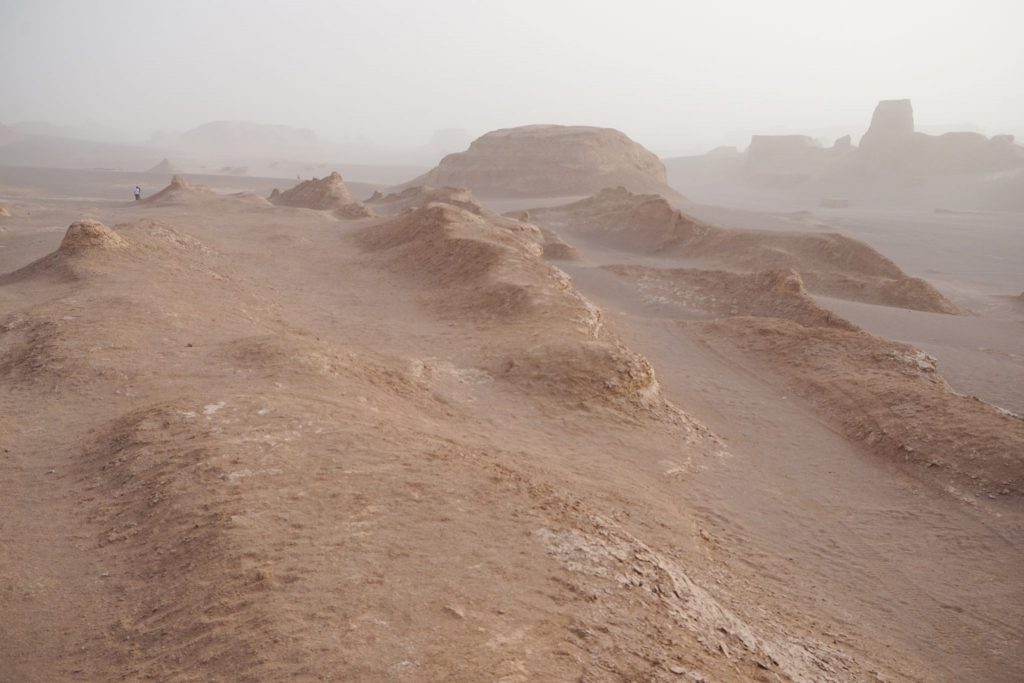
Isfahan – The most beautiful and grand city in Iran, with 3 UNESCO sites and stunning architecture – This is one city you just cannot miss. On Iran’s Golden Triangle, read the ultimate guide to Isfahan.
Shiraz – Often referred to as the cradle of Persian civilization, explore multiple ancient ruins, beautiful mosques, delicious food, and surreal natural landscapes. Intrigued? See these 12 unmissable things to do in Shiraz, Iran.
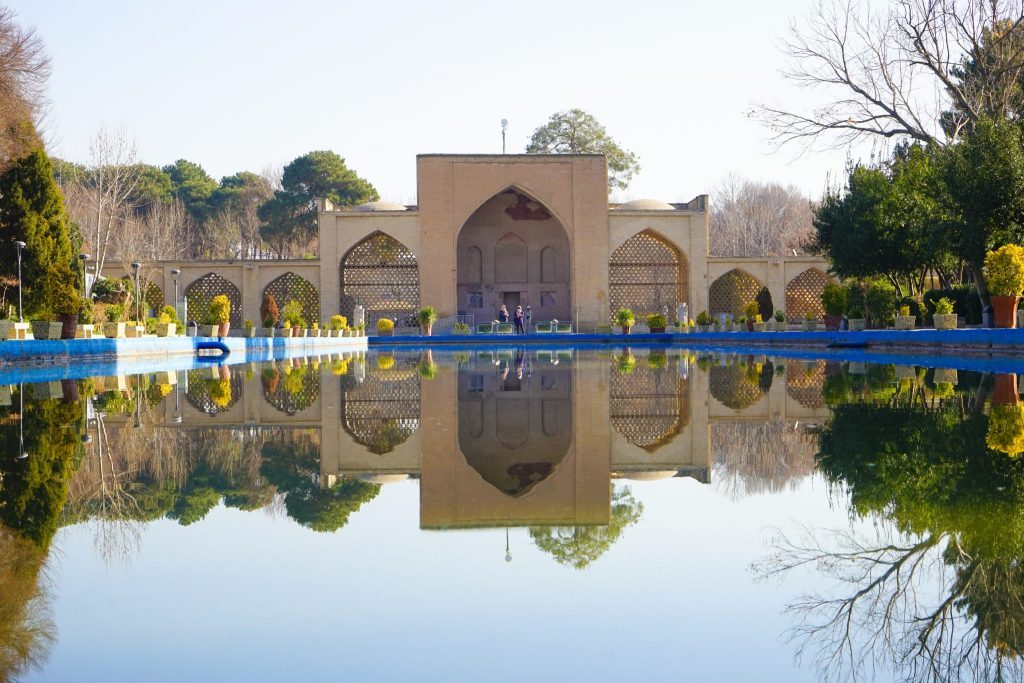
Shushtar – A hidden gem if ever there was one, Shushtar is really in the proverbial backwood. If you make the effort, however, you will be rewarded by some of the friendliest people in Iran, incredible ancient structures, and delicious food! Find out everything you need to visit Shushtar in Iran.
Tabriz – The largest city in Northern Iran with unique Azari culture, the most beautiful bazaar in Iran, and with a spectacular mountain backdrop. Read these 12 Epic Things to do in Tabriz, the 2018 Tourism Capital City of Islamic Countries
Yazd – An ancient city that appears miraculous out of a desert plateau. Yazd is one of Iran’s biggest highlights and one of the most unique cities on Earth. Check out these ten amazing things to do in Yazd, Iran.
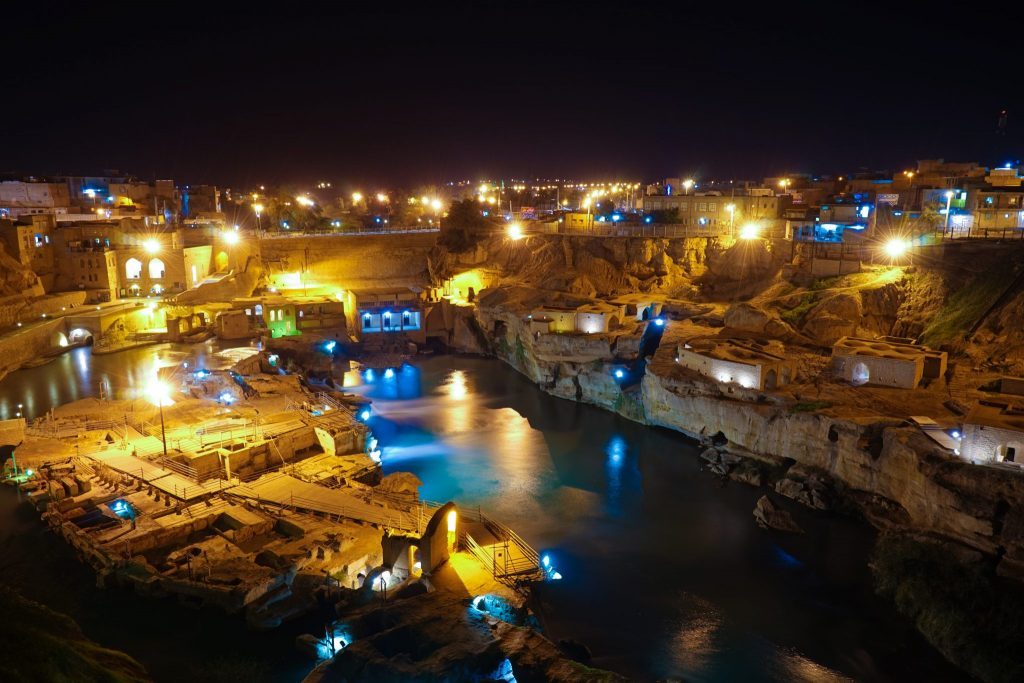
Watch CBS News
U.S. issues travel warning for Israel with Iran attack believed to be imminent and fear Gaza war could spread
By Debora Patta , Tucker Reals
Updated on: April 13, 2024 / 5:25 PM EDT / CBS News
Update: Iran launched drone attacks against Israel on Saturday. Read CBS News' latest coverage here .
Tel Aviv — Israel is bracing for a worst-case scenario that U.S. officials believe could materialize within just hours — the possibility of a direct attack on Israeli soil by Iran in retaliation for a strike almost two weeks ago that killed seven Iranian military officers. Iran has vowed to take revenge for Israel killing its commanders, who were hit by an April 1 strike on the Iranian embassy in Syria's capital.
Two U.S. officials told CBS News that a major Iranian attack against Israel was expected as soon as Friday, possibly to include more than 100 drones and dozens of missiles aimed at military targets inside the country. Sources have told CBS News the retaliation could include attacks carried out both by Iranian forces, and proxy groups around the region that it has been funneling additional arms to for weeks.
The officials said it would be challenging for the Israelis to defend against an attack of that magnitude, and while they held out the possibility that the Iranians could opt for a smaller-scale attack to avoid a dramatic escalation, their retaliation was believed to be imminent.
Asked Friday how imminent he believes an attack is, President Biden responded, "I don't want to get into secure information, but my expectation is sooner than later." The president urged Iran not to move forward, saying his message to Tehran was: "Don't."
Tehran has not indicated publicly how or when it will return fire, so it's unclear how far Iran's leaders will go. If they decide to carry out a direct attack on Israel, there's fear it could blow Israel's ongoing war against Iranian ally Hamas up into a much wider regional conflict.
With the Iranian retaliation expected at any time, the U.S. State Department on Thursday warned Americans in Israel not to travel outside major cities, which are better protected from incoming rocket fire by the country's Iron Dome missile defense system. The latest guidance noted that travel by U.S. government employees in Israel could be further restricted with little notice as things develop in the tinderbox region.
"Whoever harms us, we will harm them," Prime Minister Benjamin Netanyahu vowed Thursday as he visited troops at an Israel Defense Forces airbase. "We are prepared … both defensively and offensively."
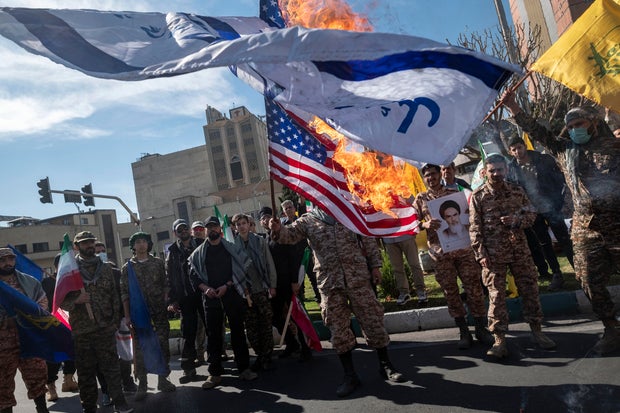
On Saturday, all U.S. embassies in the Middle East were put on high alert and required to hold emergency action committee meetings. Diplomats in Lebanon and Israel were specifically told not to travel to certain areas within those countries.
Sima Shine, a security expert and former official with Israel's national intelligence agency Mossad, told CBS News it was a dangerous moment for the region, and the "most worried" she has been. She said anxiety over an all-out war was likely just as high "on both sides, in Israel and in Iran."
If Iran does choose to strike Israel directly, it could involve a complex missile and drone attack similar to the one Iranian forces launched against a Saudi oil facility in 2019 .
"They will try to do it on the military or some military asset," Shine predicted. "But the question will be the damage. If there would be many injured people, killed or injured … I think it has the potential for a huge escalation."
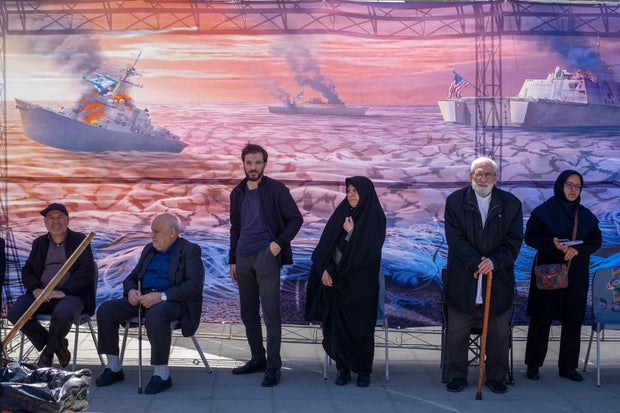
Shine stressed, however, that she still believes neither side actually wants a regional conflict.
U.S. "really trying to avoid war"
The U.S. sent a senior general to Israel this week to coordinate with the close American ally on any response it might make to an Iranian attack. Speaking Friday on "CBS Mornings," America's top military officer said, "we're really trying to avoid war."
"This is part of the dialogue that I have with my counterparts within the region, to include the Israeli chief of defense, who I talked to yesterday," said Joint Chiefs chairman Gen. Charles Q. Brown, Jr., adding that the U.S. military was "doing things not only to prevent a war, but at the same time, one of my primary things is to make sure all the forces in the region are protected."
"My role, as the chairman of the Joint Chiefs, is to plan and prepare," Brown said. "That's one thing we do very well."
Brown's Israeli counterpart, Chief of the General Staff Lt. Gen. Herzi Halevi, "completed a comprehensive situational assessment on the readiness of the IDF for all scenarios," Israel's military said Friday.
"The IDF is very strongly prepared, both offensively and defensively, against any threat," Halevi was quoted as saying in the statement. "The IDF continues to monitor closely what is happening in Iran and different arenas, constantly preparing to deal with existing and potential threats in coordination with the United States Armed Forces."
The IDF said the visiting U.S. general, Central Command chief Gen. Michael Erik Kurilla, was taking part in the IDF's situational assessment.
The dilemma for Iran, said Israeli expert Shine, is to figure out how to deliver its promised response to Israel's attack in Syria, but in a way that does not lead to further escalation. Likewise, Shine said Israel could choose to show restraint when it responds to whatever Iran eventually does.
If either side gets the balance wrong, the consequences for the region, and even the world, could be dire.
Weijia Jiang, David Martin, Margaret Brennan and Olivia Gazis contributed reporting.
- Middle East
- Benjamin Netanyahu
Debora Patta is a CBS News foreign correspondent based in Johannesburg. Since joining CBS News in 2013, she has reported on major stories across Africa, the Middle East and Europe. Edward R. Murrow and Scripps Howard awards are among the many accolades Patta has received for her work.
More from CBS News
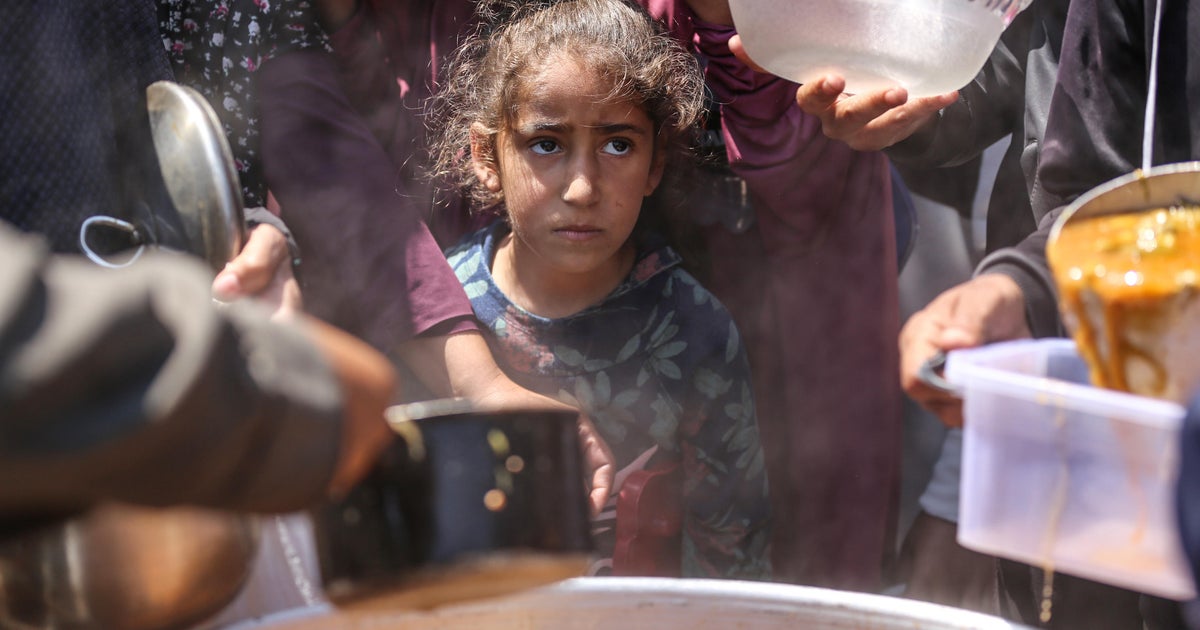
Israel blames starvation in Gaza on U.N. making excuses
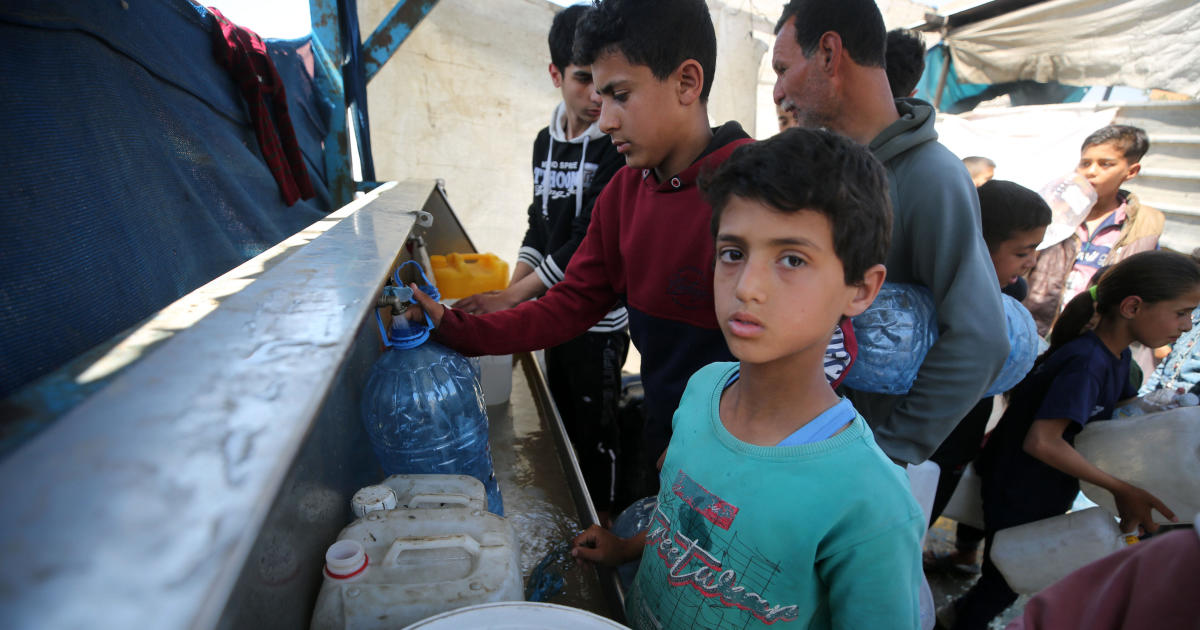
U.N. official says Israel systematically impeding Gaza aid distribution

Kenya defense chief among 10 officers killed in helicopter crash

Trump allies encourage visits with foreign leaders at Mar-a-Lago before election
Israel threatens to strike Iran directly if it launches attack from its territory
Israel’s foreign minister threatened Wednesday that his country’s forces would strike Iran directly if the Islamic Republic launched an attack from its territory against Israel .
His comments came amid heightened tensions between the rival powers following the killings of Iranian generals in a blast at the Iranian Consulate in Damascus, Syria, this month .
“If Iran attacks from its territory, Israel will respond and attack in Iran,” Israel Katz said in a post on X in Farsi and Hebrew.
Earlier Wednesday, Iran’s supreme leader, Ayatollah Ali Khamenei , reiterated a promise to retaliate against Israel over the attack on its consulate in Damascus.

Their comments came after a congressional official and a former senior U.S. official confirmed that Iran has been sending weapons to the occupied West Bank through criminal networks operating in Jordan and elsewhere.
Citing U.S., Israeli and Iranian officials, The New York Times first reported on the arms smuggling Tuesday.
Israeli Defense Minister Yoav Gallant said last month that Iran was smuggling “high-quality” weapons into the occupied West Bank.
Matthew Levitt of the Washington Institute for Near East Policy think tank told NBC News on Wednesday that there has been a "significant uptick" in Iranian efforts to get weapons into the occupied West Bank.
Levitt, who was deputy assistant secretary for intelligence and analysis at the Treasury Department from 2005 to 2007 and a counterterrorism adviser at the State Department in 2008-09, added that in recent years the effort “has increased even more because the Iranians see an opportunity there.”
“They’re trying to light a fire on as many fronts against Israel as possible,” including in the Gaza Strip, in the Red Sea and on Israel’s border with Lebanon, Levitt said. “They just want to flood the West Bank with weapons, right, because that’s a headache for the Palestinian Authority and for Israel.”
The CIA declined to comment, and Iran’s Mission to the United Nations in New York did not immediately respond to a request for comment.
Tensions between the two nations remain high after the attack on the consulate in Damascus.
Tehran holds Israel responsible for the strike that leveled the building, killing 12 people. Israel has not acknowledged its involvement, though it has been bracing for an Iranian response to the attack, a significant escalation in their long-running shadow war.
Khamenei said at a prayer ceremony celebrating the end of the Muslim holy month of Ramadan that the airstrike was “wrongdoing” and akin to an attack on Iranian territory.
“When they attacked our consulate area, it was like they attacked our territory,” Khamenei said in remarks broadcast by Iranian state TV. “The evil regime must be punished, and it will be punished.”
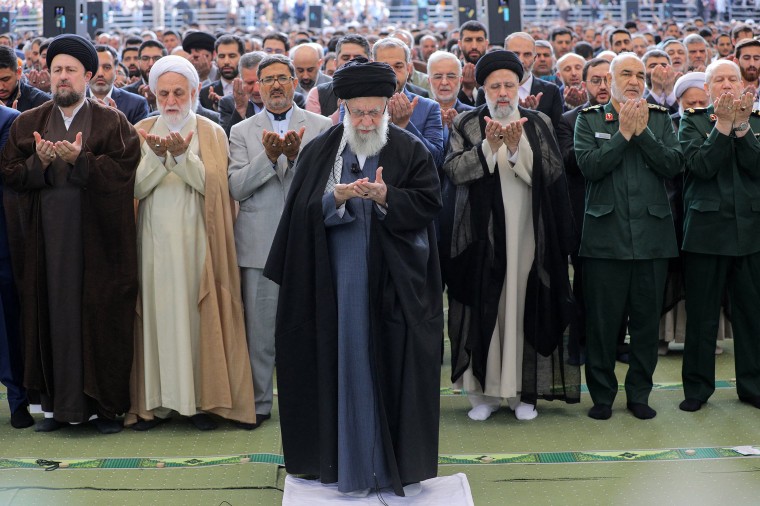
Neither Katz nor the ayatollah elaborated on how they would retaliate.
The 12 people killed in the blast on April 1 were seven Iranian Revolutionary Guard members, four Syrians and a Hezbollah militia member.
Khamenei also criticized the West, particularly the U.S. and Britain, for supporting Israel in its war against Hamas in Gaza.
“It was expected they [would] prevent [Israel] in this disaster. They did not. They did not fulfill their duties, the Western governments,” he said.
Iran supports anti-Israeli militant organizations like the Palestinian group Hamas and Lebanon’s Hezbollah. It does not recognize Israel.
The Associated Press
Dan De Luce is a reporter for the NBC News Investigative Unit.
- International edition
- Australia edition
- Europe edition

Iran missile and drone attack on Israel – what we know so far
Israel’s military has reported minor damage after Iran launched dozens of drones and missiles towards it late on Saturday
- Iran attack on Israel – live updates
- Full report: Iran launches drones and cruise missiles against Israel
Iran launched hundreds of drones as well as cruise missiles towards Israel , in the Islamic Republic’s first ever direct attack on the Jewish state, in response to the 1 April strike on an Iranian diplomatic building in the Syrian capital, Damascus, which killed a senior figure in Iran’s Islamic Revolutionary Guards and eight other officers.
Benny Gantz, a member of the war cabinet, said that Israel will exact a price from Iran in response to its mass missile and drone attack when the time is right. His comments came ahead of a war cabinet meeting alongside Israel’s prime minister, Benjamin Netanyahu, and the country’s defence minister, Yoav Gallant.
Tehran has warned it will strike again with greater force if Israel or the US retaliate for the Iranian strike on Israel by more 300 drones and missiles on Saturday night. The air raids , the Islamic Republic’s first ever direct attack on the Israeli state, brought a years-long shadow war into the open and threatened to draw the region into a broader conflagration as Israel said it was considering its response.
However, the attack, mostly launched from inside Iran, caused only modest damage in Israel as most were shot down with the help of the US, Britain and Jordan. An air force base in southern Israel was hit, but continued to operate as normal and a seven-year-old child was seriously hurt by shrapnel. There were no other reports of serious damage. Israeli military spokesperson Rear Adm Daniel Hagari said that 99% of the launches had been intercepted.
Most of the Iranian drones flying over Syria’s airspace during Tehran’s strikes overnight were downed by Israeli and US jets before reaching their targets in Israel, two western intelligence sources told Reuters .
The UN security council will hold an emergency meeting on Sunday at the request of Israel’s ambassador to the UN, the council’s president said in a statement.
Iran informed Turkey in advance of its planned operation against Israel, a Turkish diplomatic source has told Reuters . The source also said that the US conveyed to Iran via Ankara that its operation must be “within certain limits”. These reports come after Iran’s foreign minister, Hossein Amirabdollahian , said in a meeting with foreign ambassadors in Tehran that Iran had informed the US that its attacks against Israel will be “limited” and for self-defence only.
John Kirby, the White House’s top national security spokesperson, told ABC’s This Week programme on Sunday that the US will continue to help Israel defend itself, but does not want war with Iran. “We don’t seek escalated tensions in the region. We don’t seek a wider conflict,” Kirby said. News outlet Axios reported that Joe Biden , the US president, had told Netanyahu that he would oppose an Israeli counterattack against Iran and that the prime minister should “take the win”.
UK Royal Air Force fighter jets and refuelling aircraft were also involved in Israel’s defence, taking off from bases in Cyprus. Their role, according to the UK Ministry of Defence, was to fill in for the US air force in the sorties against Islamic State normally carried out over Iraq and north-eastern Syria, but also to intercept Iranian drones if they came into the UK area of operations.
World leaders have condemned Iran’s attack, with regional powers including Saudi Arabia and Egypt calling for restraint. The UN secretary general, António Guterres, said: “I am deeply alarmed about the very real danger of a devastating region-wide escalation. I urge all parties to exercise maximum restraint to avoid any action that could lead to major military confrontations on multiple fronts in the Middle East.”
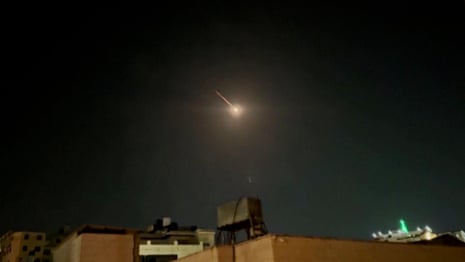
Jordan’s prime minister, Bisher Khasawneh , warned that any escalation in the region would lead to “dangerous paths”, joining a chorus of condemnation from world leaders to the attack. Other countries including the UK, Spain, the US, Egypt, Saudi Arabia and China, have called for restraint amid fears of a regional escalation of conflict across the Middle East. Iran’s foreign ministry has summoned the ambassadors of the UK , France , and Germany to question what it referred to as their “irresponsible stance” regarding Tehran’s retaliatory strikes on Israel, the semi-official Iranian Labour news agency reported .
Major airlines across the Middle East, including Emirates Airlines and Qatar Airways , announced they would resume some of their operations in the region after cancelling or rerouting some flights in response to Iran’s attack on Israel. Israel said it had reopened its airspace as of 7:30am local time on Sunday morning, with Beirut airport also reopening this morning. Several Iranian airports, including Tehran’s Imam Khomeini International, however, have cancelled flights until Monday.
- Middle East and north Africa
- US military
Most viewed
9 Things to See in Moscow's Red Square
Sir Francis Canker/Getty Images
In most cases, you'll be entering Red Square from the north, passing landmarks such as the Bolshoi Theatre and Duma parliament building as you make your way southward. Although you don't necessarily have to pass through the Voskresensky (or Resurrection in English) Gates in order to gain access to the square these days, they definitely provide a sense of arrival, to say nothing of the way their left arch frame's St. Basil's Cathedral if you look from just the right angle.
An interesting fact is that while a gate of some kind has stood here since the mid-16th century, the one you currently see wasn't built until 1994, having been destroyed in 1931 so that tanks could enter and exit Red Square during military parades.
St. Basil's Cathedral
TripSavvy / Christopher Larson
Few sights are as iconic not only of Moscow and Red Square but indeed of Russia than St. Basil's Cathedral, whose colorful, onion-shaped domes are a symbol of the country around the world. Officially known as the Cathedral of Vasily the Blessed, this church has stood since 1561, which is quite miraculous when you consider all the turbulent history that has transpired since then.
Among other things, religion was severely prohibited during the Soviet period , which led some to believe that this emblem of the Russian Orthodox church might not withstand the tenure of the USSR.
An interesting fact is that St. Basil's is the so-called "Kilometer Zero" of Russia; all of Moscow's main roads (which can take you anywhere in Russia) begin at the exits to Red Square. In this way, St. Basil's iconic status also has an extremely tangible element.
The Kremlin
TripSavvy / Christopher Larson
When you think of The Kremlin, it's unlikely that positive images enter your mind. The fact that simply saying the word "Kremlin" is too vague a descriptor (most Russian cities have their own Kremlin complexes; you should say "Moscow Kremlin") notwithstanding, this misunderstood place is incredibly beautiful, even if you don't like the policy that comes out of it.
Senate Square
In spite of its name, which refers to the role the building that rises above the square played during Imperial Russia, Senate Square is actually home to Russia's presidential administration, currently helmed by Vladimir Putin. In order to see where Russia's legislature operates from, walk just outside Red Square to the Duma parliament building.
Dormition Cathedral
Dating back to the year 1479, the gold-domed Dormition Cathedral pays homage to an Orthodox religious feast that commemorates the death of the Virgin Mary . As is the case with St. Basil's, it is curious that such a conspicuously religious structure was able to survive through the Soviet period.
Armoury Chamber
Though it takes its name from the fact that it housed Russia's royal arsenal when it was built in the 16th century, the most notable resident of the Kremlin's Armoury Chamber today is the Russian Diamond Fund.
Notable Kremlin Towers
Robert Schrader
The interior of the Moscow Kremlin is more beautiful and inviting than you'd expect, but the walls and towers that rise around it better live up to the intimidation with which the complex is associated.
Borovitskaya Tower
Named to commemorate the dense forest that once stood atop the mount where it's built, this tower is extremely picturesque. Built in the late 15th century, it's visible from most places in the square, and also as you walk along the Moskva River.
Nikolskaya Tower
Also built in the year 1491, this tower currently suffered destruction at the hands of Napoleon's army in the 19th century. What you see now is the result of an 1816 re-design and renovation, though artillery fire during the Russian Revolution also caused superficial damage to the tower, named to honor St. Nikolas of Mozhaysk , so it's difficult to know which elements of it are original.
Spasskaya Tower
Known in English as the "Savior's Tower," this iconic, star-topped tower is perhaps the best-known of all the Kremlin's towers. Built in 1491 like the other two towers on this list, it's certainly the most photographed. As a result of its proximity to St. Basil's, it often makes its way into tourists' pictures.
Mausoleum of Lenin
Just as it's strange to learn how many religious monuments survived through the Soviet period, it's a bit odd to think that Lenin's preserved body still sits in a mausoleum just beneath the walls of the Kremlin on Red Square, given the lack of consensus about the ultimate impact of his Revolution, even in Russia.
It's not guaranteed that you'll be able to see the body (which, believe it or not, seems to be improving with age ) when you go, and if you do you will likely have to wait in line, but even strolling past the outside of the Lenin Mausoleum, flanked by stone-faced guards that almost look like statues, illuminates the gravity of his body still being here.
GUM Shopping Center
You might cringe, at least initially, when you realize that one of the most iconic stops on a tour of Red Square is a department store—until you see said department store, that is. Built in 1893 and known during Soviet times as the State Department Store, GUM ( Glávnyj Universáľnyj Magazín or Main Universal Store in English) hearkens back to the grandeur of the late 19th century, both seen from the outside (especially, when lit up at night) and the interior, which might have you feeling like you're further west in Europe.
A trip inside GUM is a particularly good idea during winter, when frigid temperatures outside will have you savoring the heat, the quality of souvenirs, confections and other goods sold inside notwithstanding. Also, make sure not to confuse GUM with CDM, which sits near the Bolshoi Theatre, even though both are stunning and iconic in their own right.
State Historical Museum
The Russian State Historical Museum is located near Voskresensky Gates, though you should wait until after you've seen the first few attractions of Red Square and the Kremlin to head back there and go inside. To be sure, as you pass by its facade (whose late-19th century grandeur somewhat obscures that fact that it's currently a museum accessible to the public) you might not even think to try and gain entry.
Once inside the museum, you can plan to spend at least a couple of hours, given that artifacts here date back to the very beginning of the Russian state in the ninth century. As is the case with GUM, this will be a particularly alluring prospect if you visit in winter, when Moscow is arguably at its most beautiful, but certainly at its least tolerable.
Minin-Pozharsky Monument
It's somewhat easy to disregard this monument, which pays homage to the two Russian princes who ended the so-called "Time of Troubles" in the mid-16th century, during which Polish-Lithuanian forces occupied Russia, among other awful things including a famine. That's because the statue currently sits just at the base of St. Basil's Cathedral, which makes it very difficult to photograph or even see without being overwhelmed by that much more famous edifice.
Though the statue originally sat at the very center of Red Square, it came to be an obstacle to the movement of tanks during the Soviet period, much like the Voskresensky Gates. As a result, authorities moved it during that time, and it's stayed where you currently find it ever since.
Kazan Cathedral
Taken by itself, the smokey-pink Kazan Cathedral is an architectural marvel; originally built in the 17th century, the church you find here today, located just north of the GUM department store, dates back only to 1993.
Unfortunately, since it sits not only in the shadow of GUM, but also in the shadow St. Basil's and the Towers of the Kremlin, it's easy to miss entirely if you aren't looking. As a result, you might wait until you've seen just about everything else in Red Square before coming here to take photos, and to appreciate the understated beauty of this oft-overlooked cathedral.
Moskva River
As you head south from St. Basil's Cathedral to exit Red Square, make sure to walk onto Bolshoy Moskvoretskiy Bridge, which crosses the Moskva River. If you look due north, you can get an excellent shot of the church framed, on the left, by the towers of the Kremlin. Directing your gaze a bit to the west allows you to see the skyscrapers of Moscow City as they rise above the Kremlin's walls.
Walking westward along the riverbank is also a worthwhile excursion, for the views it provides of Red Square and the Kremlin, as well as the fact that doing so takes you to other iconic Moscow attractions, including Gorky Park and the Pushkin Museum. The views you enjoy from the river and the bridge are particularly stunning at night, though you should make sure you bring a tripod if you want to get a clear picture, given how strong winds over and near the river can be.
Moscow - Russian Rivers and Waterways Port of Call
Moscow Metro: The Complete Guide
25 Best Things to Do in Moscow
The Impressive Castles of Eastern Europe
St. Basil’s Cathedral in Moscow: Planning Your Visit
St. Petersburg, Russia
10 Must-Visit Palaces and Castles in Russia
Top 12 Things to Do in Kazan, Russia
The Top 12 Things to Do in Nizhny Novgorod, Russia
The Top 12 Things to Do in Novgorod, Russia
Soviet Sights in Moscow – Moscow USSR Sites
The Top 12 Things to Do in Astrakhan
The Top 15 Places to Visit in Russia
A Guide to Moscow: Capital of Russia, City of Domes
The Top 15 Things to Do in Bordeaux, France
A Guide to the 4th Arrondissement in Paris
Advertisement
Supported by
U.S. Targets Unlikely to Be on List in Possible Iranian Attack, Officials Say
In anticipation of the Iranian strikes, several countries, including the United States, issued new guidelines to their citizens about travel in Israel and the surrounding region.
- Share full article

By Eric Schmitt , Farnaz Fassihi , Aaron Boxerman and Thomas Fuller
American intelligence analysts and officials said on Friday that they expected Iran to strike multiple targets inside Israel within the next few days in retaliation for an Israeli bombing in the Syrian capital on April 1 that killed several senior Iranian commanders.
The United States, Israel’s pre-eminent ally, has military forces in several places across the Middle East. But Iran is not expected to target them in order to avoid a direct conflict with the United States, according to U.S. and Iranian officials who spoke anonymously about the expected attacks, which they were not authorized to discuss publicly.
Any Iranian strike inside Israel would be a watershed moment in the decades of hostilities between the two nations that would most likely open a volatile new chapter in the region. Israel and Iran do not maintain any direct channels of communication, making the chances far greater that each side could misread the other’s intentions. And an Iranian attack would heighten the risk of a wider conflict that could drag in multiple countries, including the United States.
In remarks to reporters on Friday, President Biden said that he expected a military attack against Israel “sooner than later,” and that his message to Iran was “don’t.”
“We are devoted to the defense of Israel,” he added. “We will support Israel. We will help defend Israel and Iran will not succeed.”
In anticipation of an Iranian strike, several countries, including the United States, have issued new guidelines to their citizens for travel in Israel and the surrounding region. The Israeli military said its forces were on high alert.
The U.S. State Department barred its employees on Thursday from traveling to large parts of Israel, the first time the U.S. government has restricted its employees’ movement this way since the war in Gaza began more than six months ago.
On Thursday, Britain told its citizens that they “should consider leaving” Israel and the Palestinian territories “if it is safe to do so.” On Friday, India told its citizens “not to travel to Iran or Israel till further notice.” And France advised people not to travel to Israel, Iran or Lebanon, and evacuated the families of French diplomats from Iran.
Details about Iran’s potential attack on Israel are closely guarded, but American and Israeli officials have assessed that it might involve drones and missiles. Iran has the largest arsenal of ballistic missiles and drones in the Middle East, including cruise missiles and anti-ship missiles, experts say, as well as short-range and long-range ballistic missiles with ranges up to 2,000 kilometers (about 1,250 miles).
Iran also has a large inventory of drones that have a range of about 1,200 to 1,550 miles and are capable of flying low to evade radar.
The exact form an attack on Israel might take, what kinds of targets would be involved and the precise timing all remain unclear.
The top American military commander for the Middle East, Gen. Michael E. Kurilla, traveled to Israel this week to coordinate a response should Iran attack, U.S. officials said.
“Our enemies think that they will divide Israel and the United States,” the Israeli defense minister, Yoav Gallant, said in a statement on Friday, after meeting with General Kurilla. “They are connecting us and are strengthening the relationship between us.”
If Iran attacks, he added, “we will know how to respond.”
On Thursday, the Israeli military’s chief spokesman, Rear Adm. Daniel Hagari, said the armed forces were “highly alert and prepared” for any action from Iran.
Iran has publicly and repeatedly vowed revenge for the April 1 airstrike on its embassy complex in the Syrian capital, Damascus, which killed three generals and four officers from its elite Quds Force, an arm of the Islamic Revolutionary Guards Corps.
But analysts say Iranian leaders want to calibrate their response so that it is big enough to send a message at home and abroad that Iran is not impotent in the face of conflict, but not so big that it spirals into a full-fledged war with Israel or draws an American attack.
In the first months of the war between Israel and Hamas in the Gaza Strip, Iran-backed militias regularly attacked U.S. troops in Iraq, Syria and Jordan. But after a drone strike killed three Americans in Jordan in January and the United States launched retaliatory strikes , Iran stopped the attacks by its proxies, fearing a more powerful U.S. response.
Despite the clashes and hostile rhetoric, both Iranian and U.S. leaders have made it clear they want to avoid an all-out war.
John F. Kirby, the White House’s national security spokesman, told reporters on Friday, “We are certainly mindful of a very public and what we consider to be a very credible threat made by Iran in terms of potential attacks on Israel, and that we are in constant communication with our Israeli counterparts about making sure that they can defend themselves against those kinds of attacks.”
How Israel would respond to an Iranian attack on its soil is unclear. The Israeli military “continues to monitor closely what is happening in Iran and different arenas,” Herzi Halevi, chief of the Israeli general staff, said in a statement on Friday. He added, “Our forces are prepared and ready at all times and for any scenario.”
Iran believes it can generate international support for a retaliatory strike by focusing attention on the attack against its embassy complex and arguing that it was merely defending itself, the Iranian officials said.
International law generally treats embassies and consulates as exempt from attacks. But Israeli officials have argued that the building they destroyed was diplomatic in name only, and was being used as a Revolutionary Guards base, as evidenced by the high-level commanders who were meeting there when they were killed.
A strategist for the Revolutionary Guards said Iran wanted to take advantage of the widening rift between Prime Minister Benjamin Netanyahu of Israel and Mr. Biden over Israel’s conduct of the war against Hamas — and not unite them in hostility to Iran.
The Biden administration has not only criticized the level of death and destruction wrought by Israeli forces in Gaza, it has also voiced fears that increased clashes across Israel’s northern borders, primarily with Iranian proxies like Hezbollah, could escalate into a broader regional war.
In an apparent response to international pressure , including from the United States, to do more to alleviate the hunger and deprivation produced by the war in Gaza, the Israeli military said on Friday that it had begun allowing humanitarian aid trucks to enter northern Gaza through a new crossing.
The military did not specify the location of the new crossing, and it remained unclear how many trucks had crossed, what aid agency they belonged to and when the crossing might be open for wider use.
Jamie McGoldrick, a top U.N. relief official in Jerusalem, said that U.N. officials planned to head to the crossing on Saturday to examine it. He said the crossing would be a significant improvement “if it can go to scale and is not temporary.”
After Israeli strikes killed seven aid workers on April 1, Mr. Biden told Mr. Netanyahu by phone that the United States could withhold military support for Israel unless it did more to protect civilians and ensure adequate supplies for Palestinian civilians.
Mr. Gallant, Israel’s defense minister, pledged on Wednesday to “flood Gaza with aid” and said he expected to ultimately see 500 relief trucks entering the enclave on a daily basis. U.N. figures show that an average of about 110 aid trucks have entered Gaza daily since the war began on Oct. 7.
Mr. Gallant also said that Israel would soon open the port of Ashdod, an Israeli city north of Gaza, to accept aid shipments, without providing a time frame.
Liam Stack contributed reporting.
Eric Schmitt is a national security correspondent for The Times, focusing on U.S. military affairs and counterterrorism issues overseas, topics he has reported on for more than three decades. More about Eric Schmitt
Farnaz Fassihi is the United Nations bureau chief for The Times, leading coverage of the organization, and also covers Iran and the shadow war between Iran and Israel. She is based in New York. More about Farnaz Fassihi
Aaron Boxerman is a Times reporting fellow with a focus on international news. More about Aaron Boxerman
Thomas Fuller , a Page One Correspondent for The Times, writes and rewrites stories for the front page. More about Thomas Fuller
Things to Do in Moscow, Russia - Moscow Attractions
Things to do in moscow, explore popular experiences, top attractions in moscow.
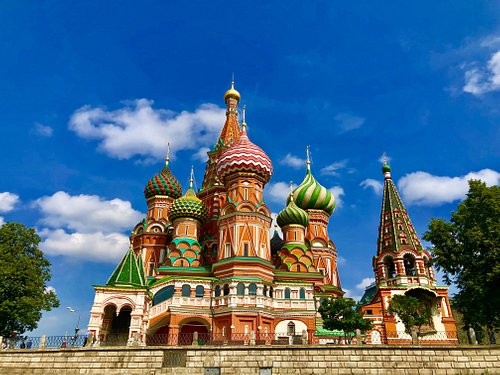
Other Top Attractions around Moscow

What travelers are saying
- Saint Basil's Cathedral
- State Tretyakov Gallery
- Moscow Metro
- Moscow Kremlin
- Neskuchny sad
- Aleksandrovskiy Sad
- Kuskovo Estate
- Sokolniki Park
- Put-in Tours
- Spanish Guide Moscow - Day Tours
- Walks With Folks

Touropia Travel Experts
Discover the World
17 Top Tourist Attractions in Moscow

The capital of Russia is an incredible place to explore. Visitors to Moscow come away spellbound at all the amazing sights, impressed at the sheer size and grandeur of the city. Lying at the heart of Moscow, the Red Square and the Kremlin are just two of the must-see tourist attractions; they are the historical, political and spiritual heart of the city – and indeed Russia itself.
A fascinating city to wander around, stunning cathedrals, churches, and palaces lie side-by-side with bleak grey monuments and remains from the Soviet state. In addition to its plethora of historical and cultural tourist attractions, Moscow is home to world-class museums, theaters and art galleries.
Renowned for its performing arts, fantastic ballets and amazing circus acts, catching a show while in Moscow is a must. The wealth of brilliant restaurants, trendy bars, and lively nightlife means there is something for everyone to enjoy.
See also: Where to Stay in Moscow
17. Tsaritsyno Palace
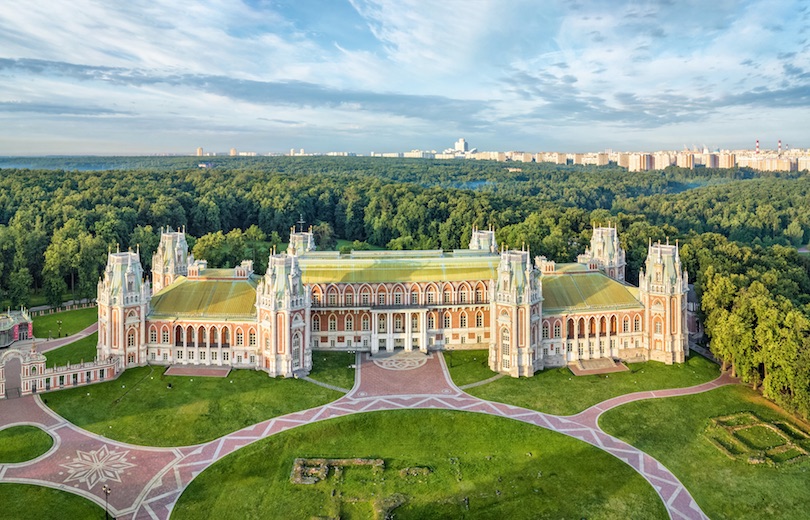
Once the summer residence of Catherine the Great, the stunning Tsaritsyno Palace is now a museum-reserve. The architecture is magnificent and there is a lovely park surrounding it for visitors to explore.
Located in the south of Moscow, the palace was commissioned in 1775 and recent renovations mean its lavish interior looks better than ever before with its elegant halls and beautiful staircases.
The exhibits on display look at the life of the empress as well as the history of Tsaritsyno itself. The huge palace grounds are also home to some other delightful buildings with the elegant opera house and wonderful brickwork of the Small Palace being particularly impressive to gaze upon.
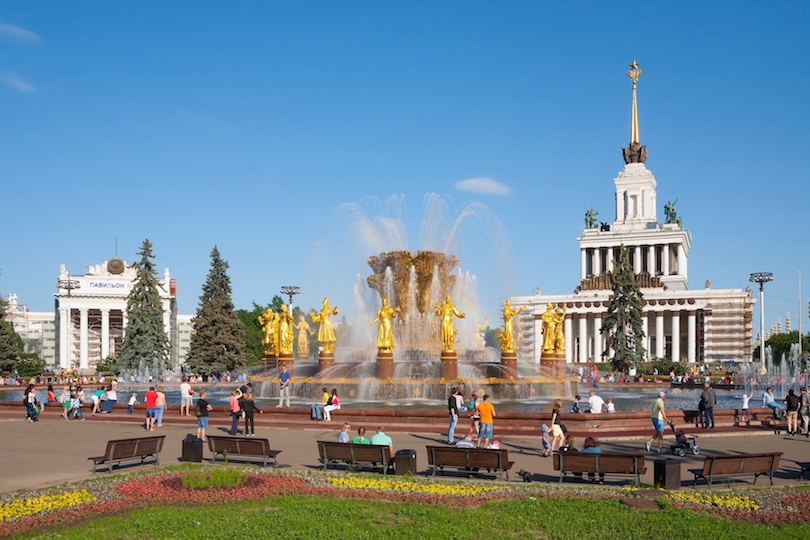
Starting out in 1935 as the ‘All-Union Agricultural Exhibition’, VDNKh has slowly morphed over the years into the fascinating open-air museum of today. Remarkably, over 400 buildings can now be found within its confines.
The huge park complex has numerous pavilions representing former Soviet republics on show, such as those of Armenia and Turkmenistan and the distinctive architecture of each of the buildings is always interesting to gaze upon. In addition to this there is the fascinating Memorial Museum of Cosmonautics which is dedicated to space exploration and the fun Moskvarium aquarium even offers you the chance to swim with dolphins.
With lots of eateries scattered about and numerous entertainment options such as horse-riding and zip-lining, there is something for everyone to enjoy; the Friendship of Nations fountain truly is wonderful.
15. Kremlin Armoury
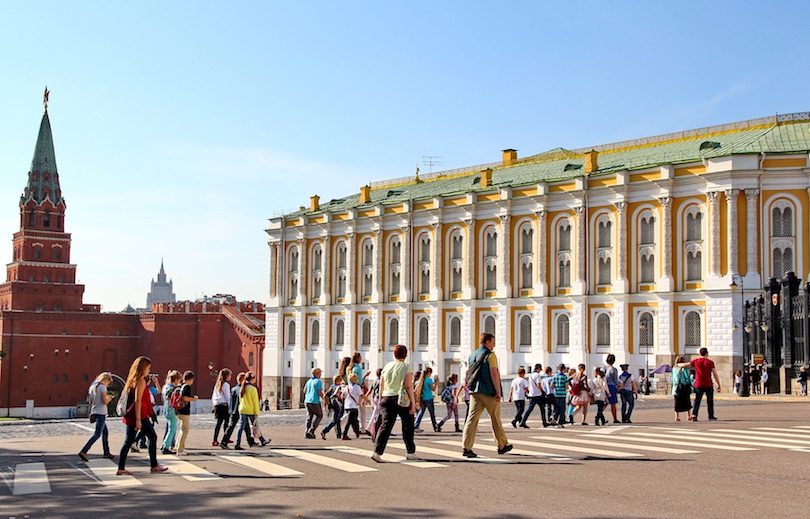
One of the oldest museums in the city, the Kremlin Armoury has a wealth of treasures; highlights include the ornate Grand Siberian Railway egg, the historic Cap of Monomakh and the stunning Imperial Crown of Russia which often has a crowd of tourists around it, jostling to take a photo.
Once the royal armory, there are loads of fascinating objects on display. Perusing the many sabers, jewelry, armor and more is as interesting as it is educational and entertaining and the swords are so finely crafted that you’ll almost wish you could pick up one and wield if yourself.
Established in 1851, the museum is situated in the Moscow Kremlin.
14. GUM Department Store

Standing for ‘Main Universal Store’ in Russian, GUM is stunning. Its wonderful skylights and beautiful facades mean it doesn’t look out of place alongside its illustrious neighbors on Red Square.
With over 200 shops, boutiques and upmarket eateries inside, it is a shopaholic’s heaven and concerned partners will be glad to find more affordable options alongside luxury brands such as Dior and Prada.
The main department store in the city, GUM was opened in 1893. The stunning architecture makes it well worth a visit even if shopping isn’t your thing.
13. Moscow Metro
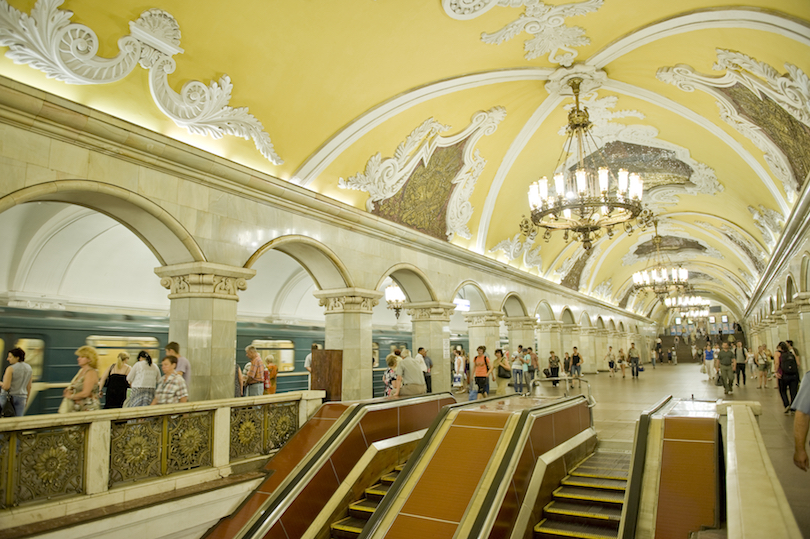
It’s not often that public transport looks like a work of art. So many stops on the Moscow Metro will astound visitors with their beauty and elegance.
Decked in marble and with frescoes covering the walls, the stations are amazing to gaze upon and are part of one of the longest metro systems in the world, with the first stations opened in 1935.
Using the metro is the quickest and easiest way to get around Moscow and braving the crowds of commuters is well worth it for the beauty all around you.
12. Arbat Street
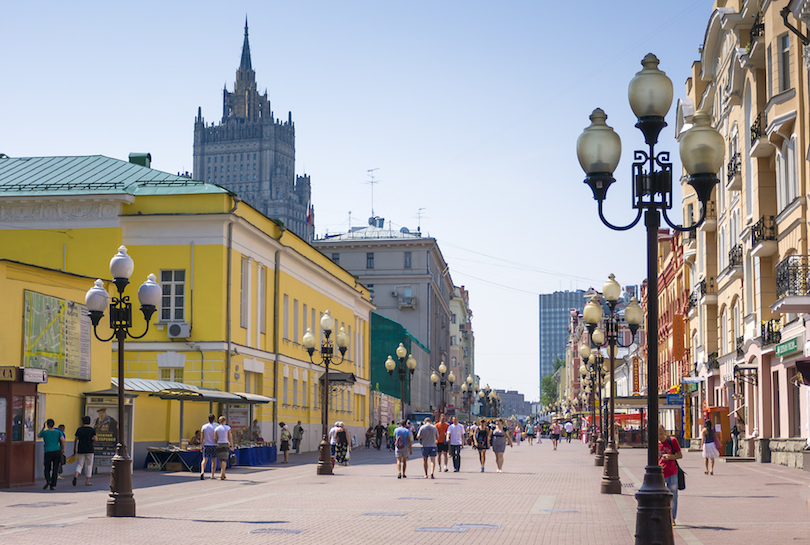
An elegant yet lively street, Arbat is full of impressive architecture and was once a popular place to live for aristocrats, artists, and academics.
A historic place, it is down Arbat Street that Napoleon’s troops are said to have headed on their way to capture the Kremlin.
Nowadays, there are many cafes, restaurants, and shops, as well as various monuments and statues to former residents such as Alexander Pushkin who was reputed to be a lover of the Russian Empress due to his massive influence in court.
11. Novodevichy Convent
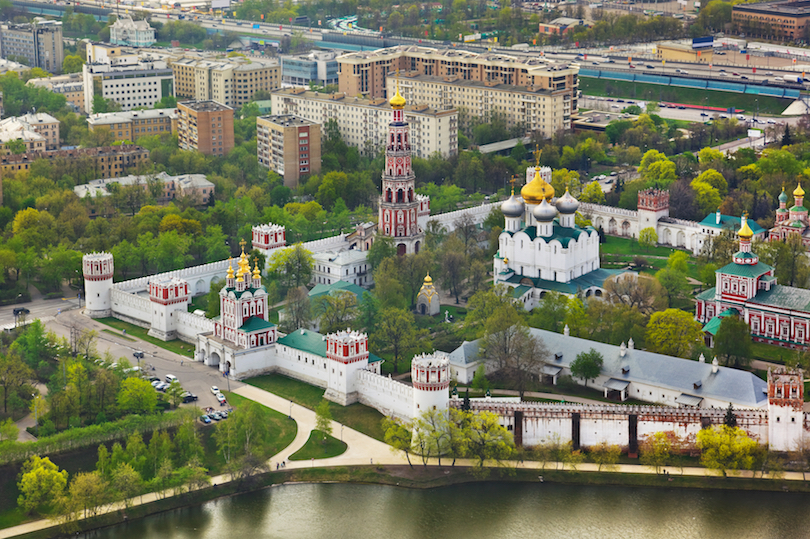
Drenched in history, the Novodevichy Convent is located in a striking building that was once a fortress. This captivating place is well worth visiting when in Moscow.
Founded in 1524, the convent houses four cathedrals; Smolensk Cathedral is the undoubted highlight due to its delightful 16th-century frescoes.
Wandering around the grounds is like stepping back in time. The Novodevichy Cemetery is where many famous leaders of the Soviet Union are buried, such as Yeltsin and Khrushchev.
10. Pushkin Museum
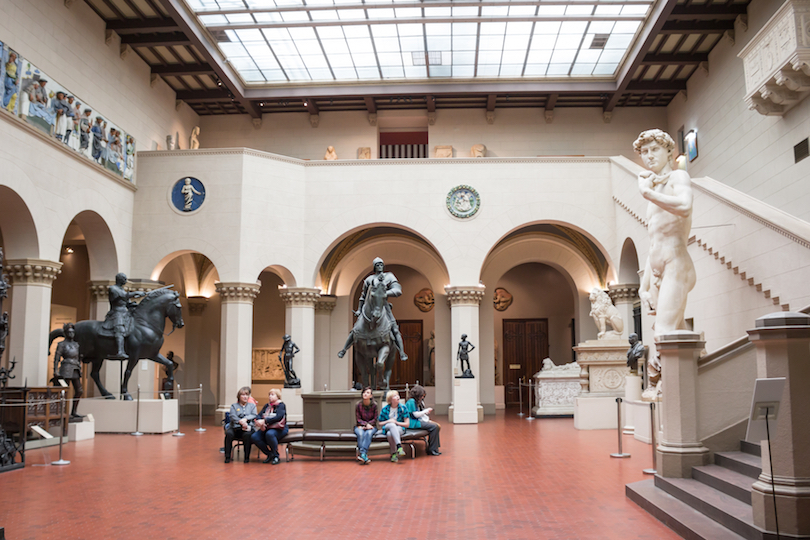
Despite its name, the Pushkin Museum of Fine Arts actually has no connection at all to the famous poet other than that it was named in his honor after his death. A delight to visit, its extensive collection focuses on European art with masterpieces by Botticelli, Rembrandt, and van Gogh all featuring.
Sculptures, graphic art, paintings and more can be found in its beautiful galleries; various sections look at themes and epochs such as the Renaissance, the Dutch Golden Age, and Byzantine art.
Among the many highlights are the clownish characters which can be found in Cezanne’s Fastnacht (Mardi Gras) and the twirling ballerinas who look so elegant in Degas’ Blue Dancers. Picasso’s Young acrobat on a Ball is also well worth checking out for its interesting use of shapes and colors.
9. Christ The Savior Cathedral
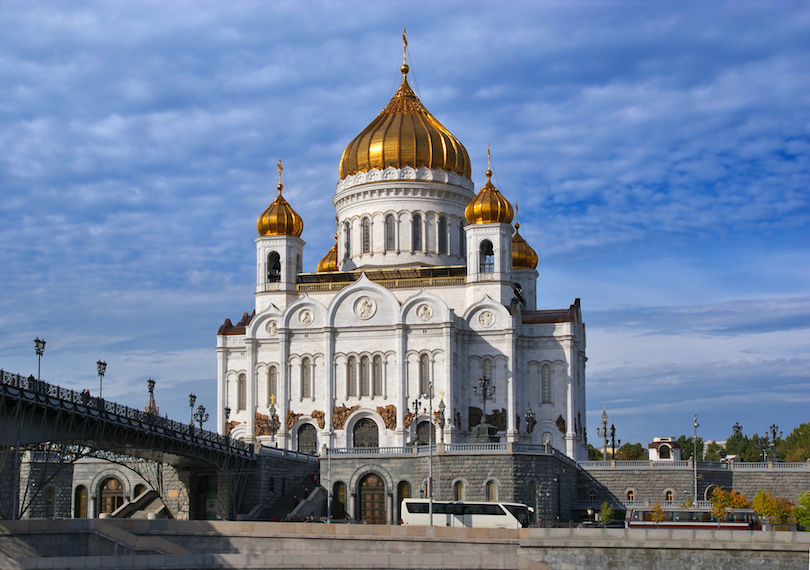
This gorgeous Russian Orthodox cathedral is located on the banks of the Moskva River, just a stone’s throw away from the Kremlin.
The church as it stands today was consecrated in 2000, as the original church that stood here was destroyed on the command of Josef Stalin in 1931 due to the anti-religious campaign.
With its delightful golden dome, spires and dazzling white facades, the Christ the Savior Cathedral is stunning. The interior is just as captivating to wander around, with its beautifully tiled floors and impressive altar.
8. Lenin Mausoleum
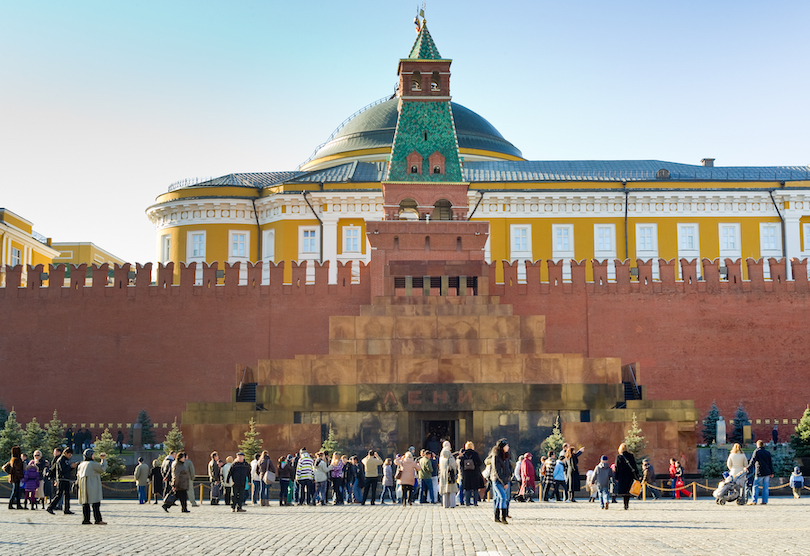
Opened to the public in 1924, Lenin’s Mausoleum is one of the most popular tourist attractions in Moscow. The red granite structure is located at the heart of the city in Red Square.
Lenin’s embalmed body lies in a glass sarcophagus; it is a somewhat eerie experience walking past the former leader of the Soviet Union but is well worth doing as you understandably can’t do it anywhere else in the world.
After visiting the mausoleum, head to the Kremlin wall right next to it for more graves of important communist figures such as Stalin and Brezhnev.
7. Tretyakov Gallery
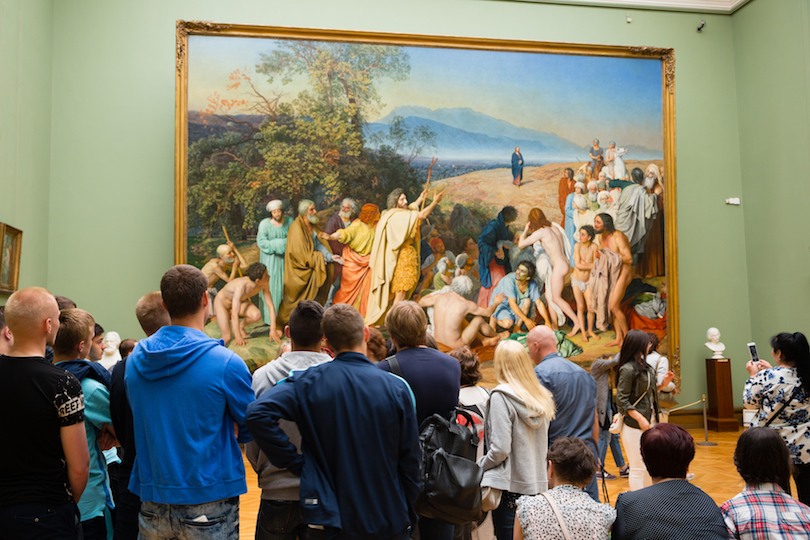
Home to the most extensive and impressive collection of Russian fine art in the world, the State Tretyakov Gallery is definitely worth visiting when in Moscow for the wealth of amazing art pieces that it has on display.
Having started out as the private art collection of the Tretyakov brothers, there are now over 130,000 exhibits. Highlights include the iconic Theotokos of Vladimir which you will almost certainly recognise despite probably not knowing the name and Rublev’s Trinity which is considered to be one of highest achievements in Russian art.
An absolute must for art lovers, the State Tretyakov Gallery will delight visitors with all that is has to offer.
6. Kolomenskoye
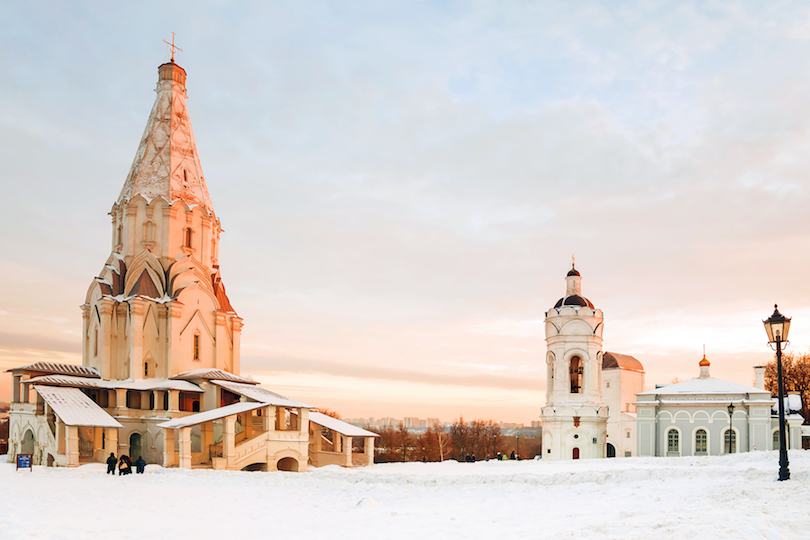
Once a royal estate, Kolomenskoye is now a museum-reserve and lies a few kilometers outside of the city center. A captivating place to visit, there is a plethora of history on show and the site overlooks the Moskva River.
Consisting of four historical sites, there are extensive gardens for visitors to explore, as well as loads of interesting old buildings, the former village of Kolomenskoye itself and the impressive Palace of the Tsar Alexey Mikhailovich – once considered the Eighth Wonder of the World by contemporaries.
Among the many stunning sights, it is the brilliantly white Ascension Church that is the undoubted highlight – dating back to 1532.
5. Gorky Park
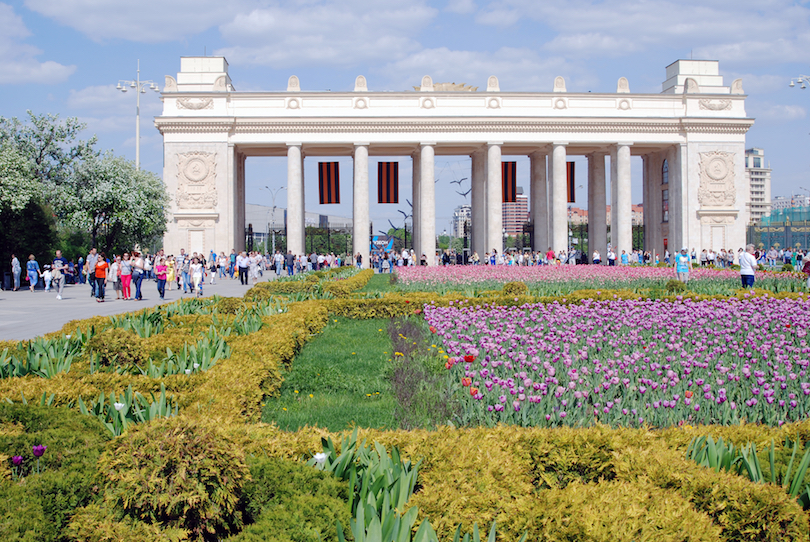
Lying alongside the Moskva River, the huge Gorky Park is a lovely place to visit. Its extensive gardens are home to numerous cultural institutions and visitors should definitely check out the Garage Museum of Contemporary Art and while the eclectic exhibits may not always feature such incredible sights as a balloon-covered rider on a zebra; they certainly always succeed in pushing back the boundaries of art.
Pop-up exhibitions and festivals can be found from time to time in the park itself and there is an open-air theatre and numerous eateries alongside a plethora of leisure activities.
Whether it’s cycling, table tennis or yoga that you are after or beach volleyball and rowing, Gorky Park certainly has it. In winter, there is a huge ice rink for visitors to enjoy.
4. Bolshoi Theatre
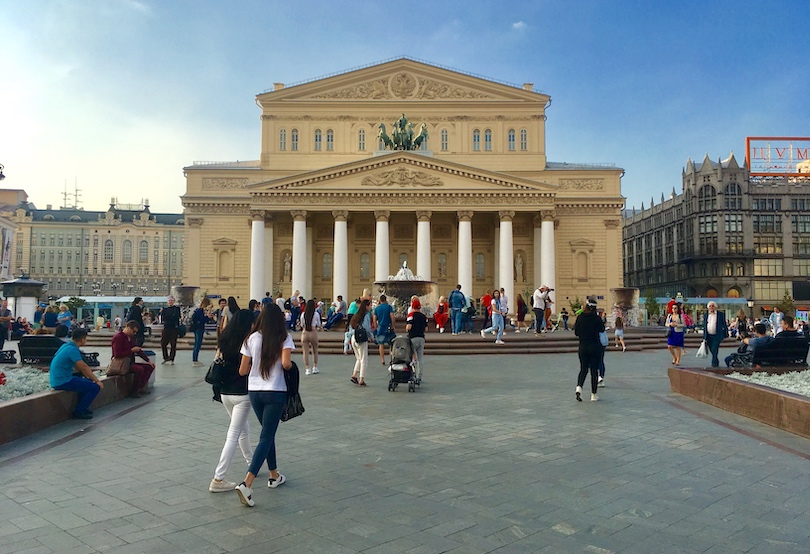
The Bolshoi Theatre is the main theater in the country. The amazing opera and ballet performances it has put on over the centuries go a long way in explaining Russia’s rich history of performing arts.
While the Bolshoi Ballet Company was established in 1776, the theater itself was opened in 1825. The glittering, six-tier auditorium is lavishly and decadently decorated; it is a fitting setting for the world-class performances that take place on its stage.
Spending a night watching a performance of such classics as The Nutcracker or Swan Lake at the Bolshoi Theatre is sure to be a memorable experience and the beauty all around you only adds to the sense of occasion.
3. Moscow Kremlin
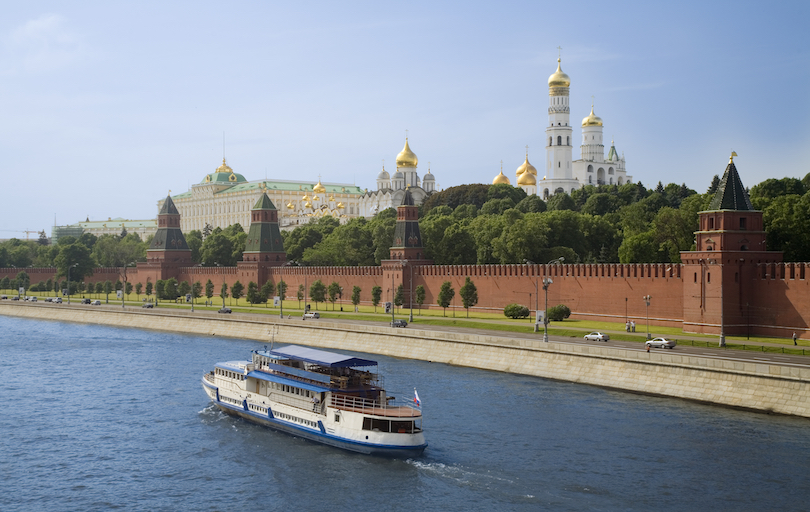
This famously fortified complex is remarkably home to five palaces and four cathedrals and is the historic, political and spiritual center of the city. The Kremlin serves as the residence for the country’s president. It has been used as a fort, and this fact is made clear by its sheer size. The Kremlin’s outer walls were built in the late 1400s.
Under Ivan III, better known as Ivan the Great, the Kremlin became the center of a unified Russian state, and was extensively remodeled. Three of the Kremlin’s cathedrals date to his reign that lasted from 1462-1505. The Deposition Church and the Palace of Facets were also constructed during this time. The Ivan the Great Bell Tower was built in 1508. It is the tallest tower at the Kremlin with a height of 266 feet (81 meters).
Joseph Stalin removed many of the relics from the tsarist regimes. However, the Tsar Bell, the world’s largest bell, and the Tsar Cannon, the largest bombard by caliber in the world, are among the remaining items from that era. The Kremlin Armory is one of Moscow’s oldest museums as it was established more than 200 years ago. Its diamond collection is impressive.
The Kremlin’s gardens – Taynitsky, Grand Kremlin Public and Alexander – are beautiful. The Kremlin has also served as the religious center of the country, and there is a tremendous number of preserved churches and cathedrals here. The collections contained within the museums include more than 60,000 historical, cultural and artistic monuments. Those who enjoy the performing arts will want to consider attending a ballet or concert at the State Kremlin Palace. Completed in 1961, it is the only modern building in the Kremlin.
2. Red Square
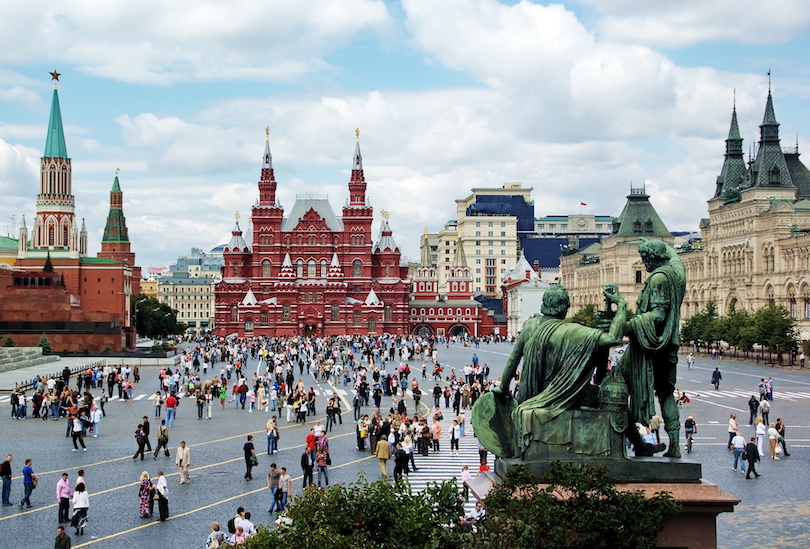
Lying at the heart of Moscow, Red Square is the most important and impressive square in the city. It is one of the most popular tourist attractions due to its wealth of historical sights and cultural landmarks.
Drenched in history, the huge square is home to incredible sights such as the Kremlin, St. Basil’s Cathedral and Lenin’s Mausoleum, among others. Consequently, it is not to be missed when in Moscow as it really is home to the city’s most stunning monuments.
It is here that many important moments in Russian history took place; the former marketplace has hosted everything from Tsar’s coronations and public ceremonies to rock concerts and Soviet military parades. Wandering around the massive square is a humbling experience and undoubtedly one of the highlights the city has to offer.
1. Saint Basil’s Cathedral
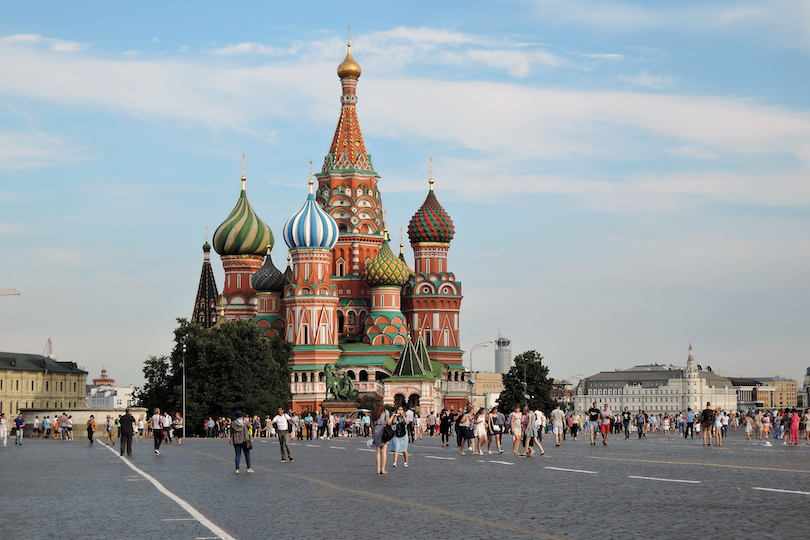
Located in the impressive Red Square, St. Basil’s Cathedral is gorgeous; its delightful spires appear as if out of a fairytale. The most recognizable building in the country, the cathedral is very much a symbol of Russia. No visit to Moscow is complete without having taken in its unique and distinctive features.
Ivan the Terrible ordered the cathedral’s construction in the mid-16th century, and legend holds that Ivan put out the architect’s eyes so that he would be unable to build another cathedral more glorious than St. Basil’s. Designed to resemble the shape of a bonfire in full flame, the architecture is not only unique to the period in which it was built but to any subsequent period. For various reasons, both Napoleon and Stalin wanted to destroy the cathedral but fortunately did not succeed.
Known for its various colors, shapes and geometric patterns, St. Basil’s Cathedral houses nine different chapels that are all connected by a winding labyrinth of corridors and stairways. On the lower floor, St. Basil’s Chapel contains a silver casket bearing the body of St. Basil the Blessed.
Throughout the cathedral are many beautiful murals, frescoes, wooden icons and other art works and artifacts. Outside the cathedral is a lovely garden with the bronze Monument to Minin and Pozharsky, who rallied an all-volunteer Russian army against Polish invaders during a period of the late 16th century known as the Times of Troubles.
Share this post:
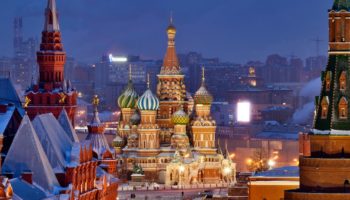
Where to Stay in Moscow
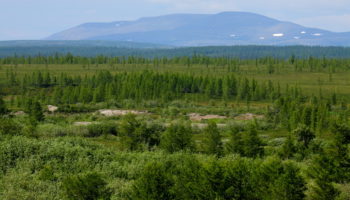
9 Most Beautiful Regions in Russia
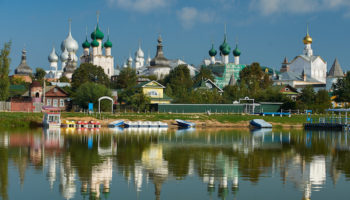
10 Best Places to Visit in Russia
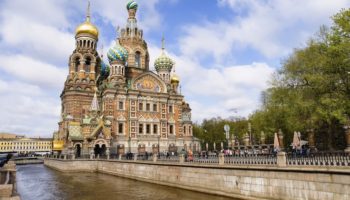
15 Best Attractions & Things to do in Saint Petersburg, Russia
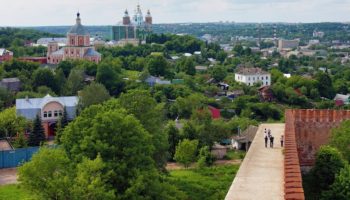
15 Best Cities to Visit in Russia

10 Most Amazing Destinations in Eastern Russia
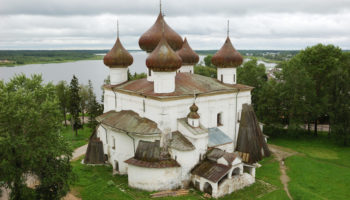
14 Most Scenic Small Towns In Russia
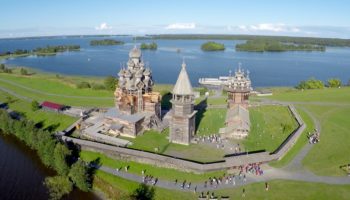
10 Top Tourist Attractions in Russia
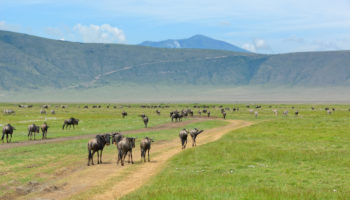
10 Best Countries to Visit in Africa
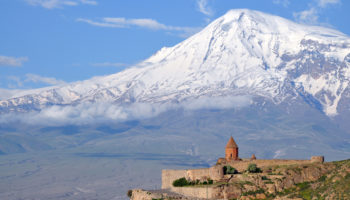
10 Best Places to Visit in Armenia

15 Top-Rated Tourist Attractions & Things to Do in Moscow
Written by Diana Bocco Updated Dec 23, 2023 We may earn a commission from affiliate links ( )
Moscow is one of Europe's most enigmatic destinations, home to a fascinating history and colorful, awe-inspiring architecture you won't find anywhere else in the world. Moscow might be one of the most populous cities in the world with over 11 million inhabitants, but this hasn't changed its strong cultural and social traditions.
Walk the cobblestone streets of the Red Square or the banks of the Moskva River early in the morning, and it's hard to tell what century you're in.
Tsarist architecture, must-see churches, and glamorous shopping opportunities blend together for a visual experience you won't forget. For ideas on what to see and do while visiting Russia, here's our list of top tourist attractions in Moscow.
1. Marvel at the Size of the Kremlin
2. catch a performance at the bolshoi theatre, 3. shop at the luxurious gum, 4. make your way into lenin's mausoleum, 5. spend an hour (or three) at red square, 6. discover history at the museum of cosmonautics, 7. ride the stunning moscow metro, 8. explore the moscow state integrated museum-reserve, 9. spend a rainy day at the tretyakov gallery, 10. walk up and down arbat street, 11. stop by the vdnkh all-russian exhibition centre, 12. wander around gorky park, where to stay in moscow for sightseeing, map of tourist attractions & things to do in moscow.
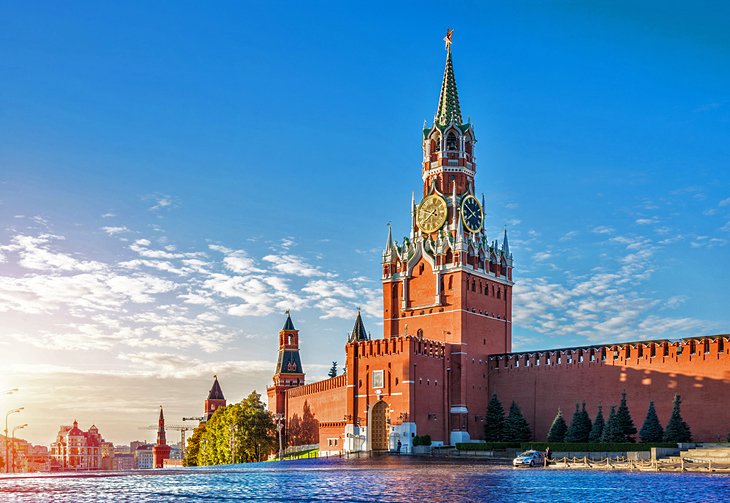
Moscow's most recognizable structure is without a doubt the Kremlin, a 15th-century fortified complex that covers an area of 275,000 square meters surrounded by walls built in the 1400s.
The Grand Kremlin Palace -which has over 700 rooms- was once home to the Tsar family and is now the official residence of the president of the Russian Federation, although most heads of state choose to reside elsewhere.
The massive complex also includes many other buildings, some of which are open to the public and can be visited regularly. Aside from three cathedrals (including one where the Tsars were once crowned) and a number of towers, the Kremlin is also home to the Armory building, a museum holding everything from the royal crown and imperial carriages to the ivory throne of Ivan the Terrible and Fabergé eggs.
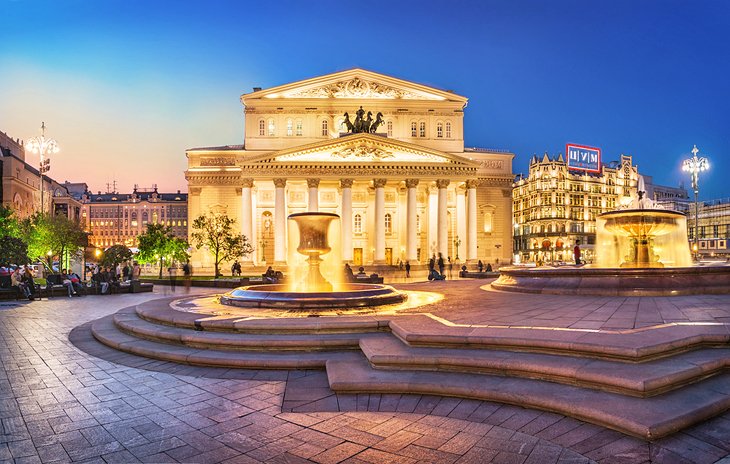
The Bolshoi Theater is home to the largest and one of the oldest ballet and opera companies in the world . While the theater has undergone several major renovations over the past century-including a recent one in 2011 to restore some of the imperial architectural details-it still retains all of its Neoclassical grandeur.
The Bolshoi Theater you see today opened in 1824, after several older versions burned down. Inside, red velvet, a three-tiered crystal chandelier, and gilt moldings give the place a Byzantine-Renassaince grandiose feel like no other.
Catching a show from the resident ballet and opera troupes is a treat, as the theater often presents a number of classic performances, such as Tchaikovsky's Mazeppa and Rachmaninoff's Francesca da Rimini, both of which originally premiered here.
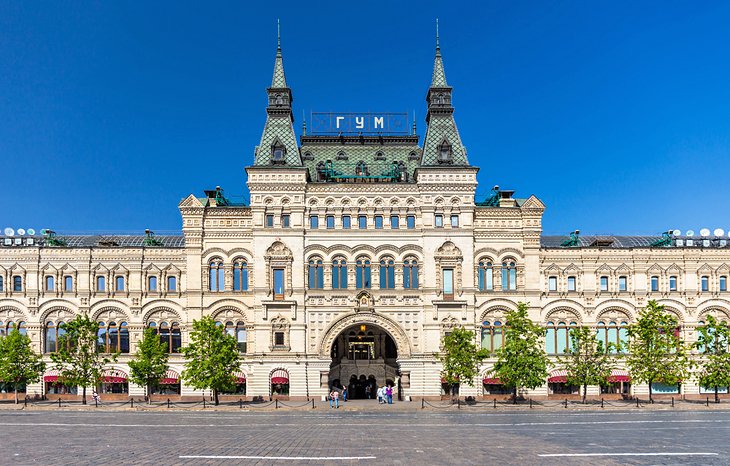
Moscow's oldest and most upscale shopping center is an architectural marvel. GUM (short for Glávnyj Universálnyj Magazín or "Main Universal Store") was built in the late 1800s in neo-Russian style to showcase a beautiful mix of a steel skeleton and 20,000 panels of glass forming an arched roof.
This was a unique construction at the time, since the glass had to be strong enough to support the snow-heavy Russian winters. The building is just as impressive outside, with all three levels covered in marble and granite.
While GUM is no longer the largest shopping center in Moscow, it's still by far the most beautiful. Home to brands like Gucci and Manolo Blahnik, this might not be the ideal destination for most budget-conscious visitors, but the beauty of the building itself is worth a visit.
On the third floor, there are also great dining options, including a Soviet-style canteen that serves traditional Russian food, and a stand selling ice cream made by hand using an original 1954 recipe originally approved by the Soviet government.
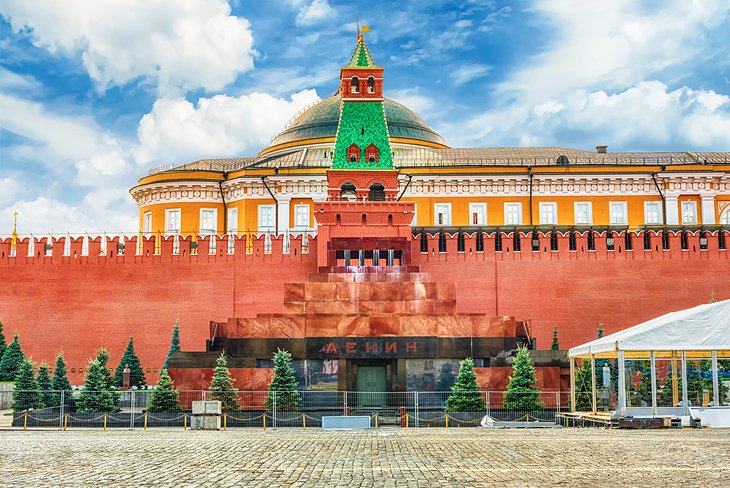
Lenin's Mausoleum, the final resting place of Soviet leader Vladimir Lenin, occupies a central spot in Red Square. His body has been in the mausoleum since his death in 1924-and although the original plan was for him to be buried after a short period of public display for mourning, the plan quickly changed.
After over 100,000 visited the tomb over a period of six weeks, it was decided that a new sarcophagus and a more permanent display space could actually preserve Lenin's body for much longer than expected-and Lenin's Mausoleum was built.
Over the years, the mausoleum and its marble stairs also became the main spot from where Soviet leaders would watch parades and events happening in Red Square.
Lenin's embalmed body can still be seen today, lying down in a bulletproof glass sarcophagus as if he's sleeping. While a visit to the mausoleum is certainly unusual, it has become a must-do for history buffs looking to understand how Lenin's legacy truly changed the nation. Come ready to wait, though -there are usually lines to get in.
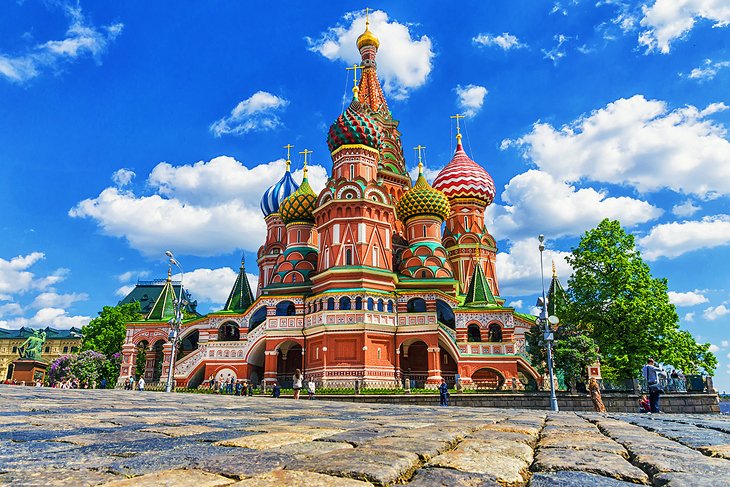
All of Moscow's main streets start at Red Square, so it's easy to see why this is considered the heart of the city. A massive space of 330 meters by 70 meters, the square is flanked by the Kremlin, Lenin's Mausoleum, two cathedrals, and the State Historical Museum.
In 1945, a massive Victory Parade was held here to celebrate the defeat of Nazi Germany by the Soviet Armed Forces.
St. Basil's Cathedral , one of the most recognizable buildings on the square, was built in 1555. The unique cathedral has architectural details inspired by Byzantine and Asian design, as well as details that resemble those found in famous mosques. There are nine individual chapels inside the church, all decorated with colorful mural art.
Both the square itself and the Kremlin are recognized as UNESCO World Heritage Sites . On weekends, there are sometimes stalls selling souvenirs and traditional items here, such as matryoshka (Russian nesting dolls), at the entrance of the square.
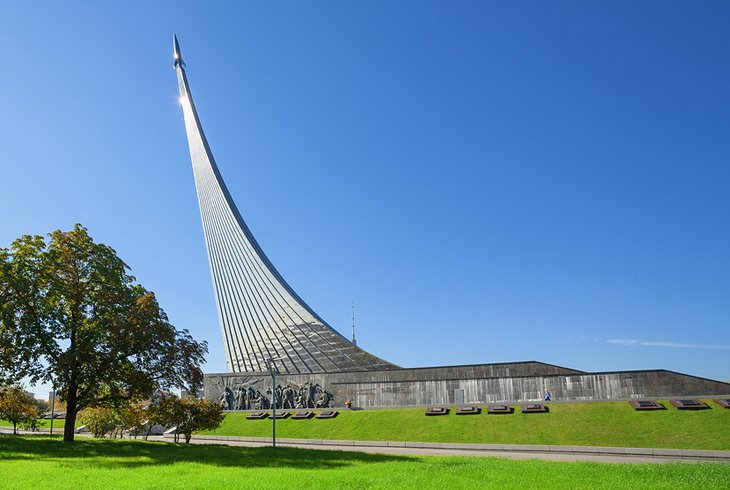
At one point, Russia and the US were toe-to-toe when it came to space exploration. While that might no longer be the case, the museum's amazing collection-which includes over 85,000 items-is still awe-inspiring.
Main exhibits include the space capsule used by Yuri Gagarin , the first human to travel into outer space; a USSR flag with moon fragments; a Soviet spacesuit; and a rocket propulsion unit from the 1960s. A special two-story hall showcases sections of the Mir space station interior, and there are also models of the first sputniks and a replica miniature spaceship.
English-language tours are available, and there's also a Cinema Hall showing subtitled short films about the history of space exploration programs and the first manned space flight.
The museum is located inside the base of the monument to the Conquerors of Space, which was built almost 20 years before the museum opened.
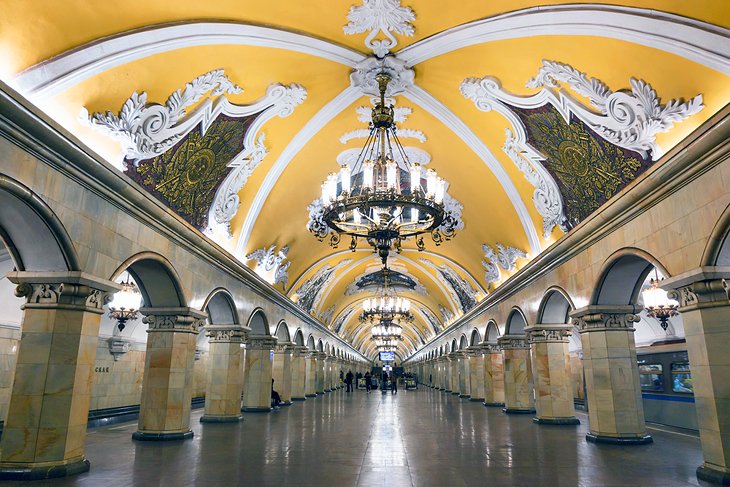
Riding the Moscow metro is an experience all in itself, but even just heading underground to walk through the stations is something no visitor should miss. With 223 stations and 12 metro lines crosscutting through Moscow, however, this can be tricky, so visiting at least a few of the most impressive ones is a good start.
Arbatskaya station was designed by a skyscraper architect, so it's no surprise that it features multicolored granite slabs and impressive bronze chandeliers.
Park Kultury station , located next to Gorky Park, is covered in marble and features reliefs of people involved in sports, while Teatralnaya station is decorated with porcelain figures dancing and wearing traditional Russian costumes.
The metro is open between 5:30am and 1:00am but it's very crowded in the early morning and after 4pm, so it's better to visit in the late morning or early afternoon to really appreciate the architecture without the crowds.
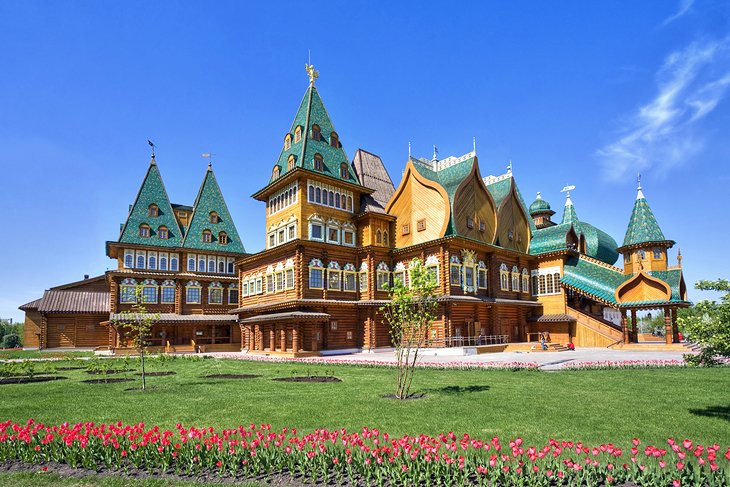
The Moscow State Integrated Art and Historical Architectural and Natural Landscape Museum-Reserve is a cultural open-air museum complex comprised of four different historical sites.
The most important site, the Kolomenskoye Estate, was once the summer residence of Tsars as far back as the 14 th century. The complex, which covers almost 300 hectares, is home to fairy-tale wooden palaces; a tent-roof stone church built in the 1500s; a water tower; fort towers and structures; and the 24-room Museum of Wooden Architecture , which includes the restored dining room of Tsar Alexei I.
Beautiful manicured gardens , riverside picnic areas, and a massive collection of both artifacts and structures make this a great destination to help you see what medieval Russia looked like. English-language tours are available, but you're also free to wander the grounds on your own.
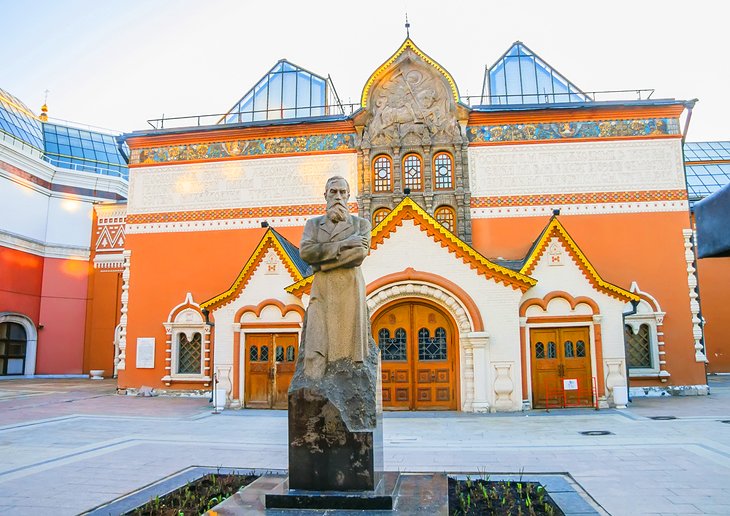
The largest collection of Russian art in the world sits here, with over 180,000 paintings, sculptures, and religious art dating back to over a millennia ago. The gallery, built using beautiful red and white colors from classical Russian architecture, is located near the Kremlin and it was built in the early 20 th century.
Significant art pieces include the Vladimir Mother of God; a Byzantine icon of the Virgin and child dating back to the 1100s; Andrei Rublev's The Trinity icon from the 15 th century; and several works by Ilya Repin, the most famous realist painter in Russia.
On the grounds of the museum, there is also an 86-meter-tall statue of Peter the Great, as well as a number of Socialist Realism sculptures.
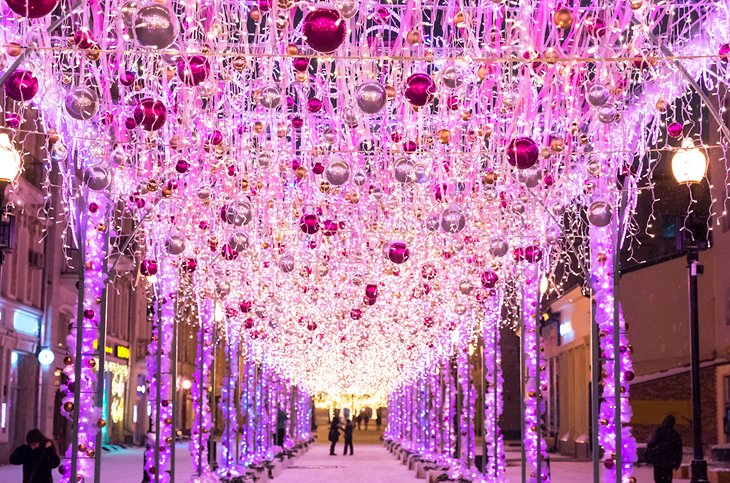
Moscow's one-kilometer-long pedestrian street has been around since the 15 th century. Originally a trade route in the outskirts of the city, Arbat Street is now very centrally located, home to posh buildings and lots of places to eat and shop.
Beautiful street lamps and two significant statues-one of Princess Turandot (from Puccini's last opera) and one of Soviet-era poet Bulat Okudzhava-adorn the street, which fills up with both locals and tourists on evenings and weekends.
A great place to pick up souvenirs or sit down at an outdoor café, Arbat Street also offers a chance to visit the former home of poet Alexander Pushkin and the café both Anton Chekhov and Leo Tolstoy used to visit.
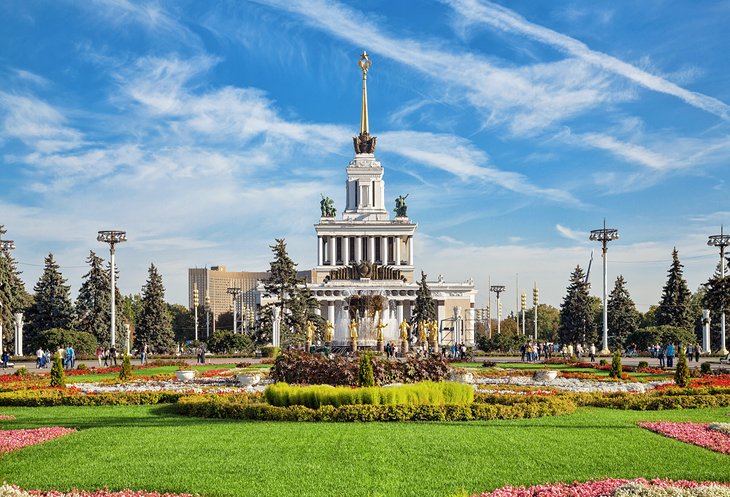
Although it was originally designed as a general-purpose trade show venue, this park complex now houses amusement rides , ice rinks , and a number of galleries and other attractions for all ages.
The park's most famous landmarks are the Moskvarium, a marine biology center home to over 8000 species of marine animals, the Garage Museum of Contemporary Art, and a shopping center selling traditional products from former Soviet countries.
There's even a film museum showing Soviet cartoons or even a full-length film (for an extra fee) and an education center offering masterclasses on everything from becoming a barista to video montage (call or write in advance to find out which ones are English-friendly).
Soviet-era pavilions, sculptures, and fountains abound here as well, including the famous Friendship of the Peoples Fountain, which features statues of women dressed in costumes from different former Soviet countries.
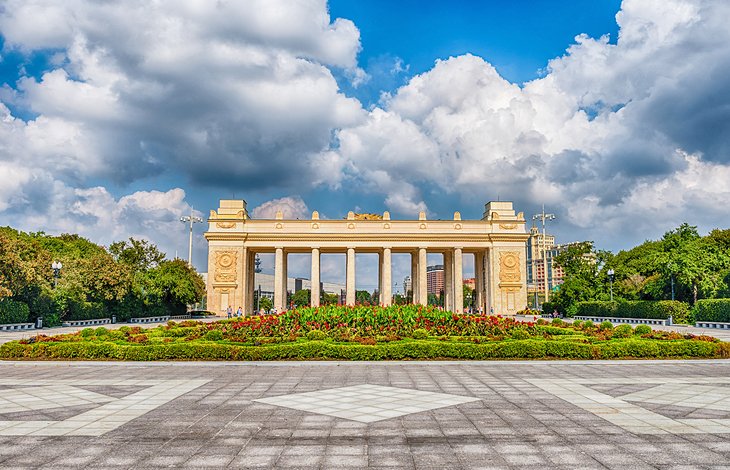
Named after the famous Russian writer Maxim Gorky (who was nominated for the Nobel Prize in Literature five times but never won it) and sitting right across the Moskva River, Gorky Park covers 120 hectares of beautiful ponds and green spaces.
Popular with both locals and tourists, the park offers a variety of things to enjoy-from sunbeds, hammocks, and drinking fountains to free yoga classes and children's playgrounds. There's free Wi-Fi and sockets for charging your phone, as well as many food stands and plenty of wild animals, including deer, rabbits, and pheasants.
Visitors can rent paddle boats and bicycles to explore the park-and from May to October, there is also an open-air movie theater, as well as scheduled presentations by street performers, musicians, and artists. Gorky Park attracts the young and old, so don't be surprised to see a mix of people exercising, playing chess, and sunbathing.
Luxury Hotels :
- Lotte Hotel Moscow is one of the top 5-star properties in Moscow offering the largest Royal Suite in Russia. The trendy rooms and suites here all have contemporary style and great city views. On-site amenities are plentiful. There are two restaurants: one serving contemporary Italian fare, and the other Japanese. There is an impressively lit indoor swimming pool, a well-known spa, and a state-of-the-art gym.
- Another excellent luxury hotel is the Ararat Park Hyatt Moscow . The residential-style property is in the heart of Moscow just next to the Bolshoi Theatre and within walking distance of the Kremlin and Red Square. The rooms and suites have been opulently designed by Tony Chi. The on-site restaurant serves a mix of European and Armenian specialities. There is also a Japanese sushi bar and a rooftop lounge with fabulous city views.
- The St. Regis Moscow Nikolskaya also has a central location just a few minutes from the Kremlin and Red Square. The 5-star property has a mix of elegant rooms and suites, including interconnecting room options for families with kids. There are multiple restaurants on-site including an Italian bistro. Other amenities include the fabulous Iridium Spa, which does a full range of treatments and has an indoor swimming pool, sauna, and steam room.
Mid-Range Hotels :
- Palmira Business Club is a top mid-range choice. The contemporary lifestyle hotel offers well-appointed rooms and suites, including options for families. Suites are quite spacious and have kitchenettes. Amenities here include a complimentary breakfast at the on-site restaurant, a hot tub, sauna, and spa. There is also a fitness center.
- The trendy Mercure Moscow Baumanskaya offers a mix of rooms and suites with contemporary decor. The mid-range hotel can arrange airport transportation and offers baggage storage. Other amenities include a restaurant and room service. The front desk is open 24 hours.
- Boutique Hotel Brighton is about 10 minutes from the city center in a leafy park area. It offers excellent value for money and has charming rooms and suites with sound-proof windows and doors, as well as blackout curtains. A complimentary breakfast is served, and there is also an indoor swimming pool.
Budget Hotels :
- Hotel Ibis Budget Moscow Panfilovskaya is about a 15-minute drive from Moscow's downtown, and it's within walking distance from a metro station that will take you there. The soundproof rooms at this budget property are clean, comfortable, and can sleep up to three people. The hotel is pet friendly, has paid parking available on-site, and also has a salon.
- If you just need a budget hotel near the airport then check out Aviator Hotel Sheremetyevo . Located right at the airport, it has soundproof rooms, including options for families. Amenities include an indoor play area for kids, a sauna and swimming pool, and a free breakfast.
More Related Articles on PlanetWare.com
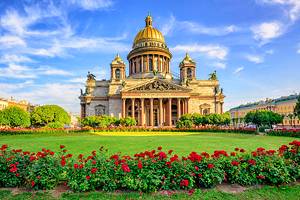
Exploring Russia: Whether you are interested in history, nature, or architecture, there's much to see in Russia. For a good introduction to some of the most fascinating spots in the country, take a look at our article on the Best Places to Visit in Russia . For more on Russia's second-largest city and all it has to offer, check out our piece on the Top-Rated Tourist Attractions in St. Petersburg .


IMAGES
VIDEO
COMMENTS
This place is absolutely a masterpiece A must to visit if you are in Isfahan. 8. Tehran Grand Bazaar. 1,315. Points of Interest & Landmarks. Historic trade hub in a lively atmosphere with a broad selection of goods, including Persian carpets, and local street food amidst old-world charm. 9. Si O Se Pol Bridge. 1,009.
In short: Esfahan is the Iran you really have to see. 2. Shiraz. Source: flickr. Nasir al-Mulk Mosque, Shiraz. Eulogized and eulogized over and over again by romantic poets and travelers, and revered as the birthplace of the great Persian wordsmiths Hafez and Sa'di, Shiraz is a city steeped in heritage and culture.
Day 2 - 3: Shiraz — One of the Best Places in Iran. A very comfortable overnight bus from Tehran will get you into Shiraz in the morning (you can also take a short flight instead). Shiraz is often referred to as the city of poets and gardens. Spend 2 days discovering this artistic historical city. 4.
7. The Caspian Sea Coast. Stretching along the northern edge of Iran, the Caspian Sea Coast is a stark contrast to the arid landscapes often associated with the country. Touted as one of the coolest places in Iran, this region offers a refreshing blend of verdant forests, rolling hills, and pristine beaches.
Iran's attractions are not just about its beautiful landscapes; its World Heritage Sites and striking desert vistas are equally captivating. Contents. Iran Tourist Attractions. 101 Popular Destinations in Iran. 1. Persepolis in Shiraz (World Heritage Site) 2. Naqsh-e Jahan Square in Isfahan (World Heritage Site) 3.
Almost certainly one of our favourite places to visit in Iran (and one of the longest-standing entries on Dan's lifetime bucket list of ancient places), the World Heritage site of Persepolis stands as a timeless testament to the powerful past of the Persian Empire, and the deep foundations of Iran's present. ...
Qeshm Island. This fishing village on the northern coast of Qeshm Island is the best place in Iran to encounter the fast-disappearing traditional culture of the Persian…. Discover the best attractions in Iran including Masjed-e Shah, Masjed-e Jameh, and Naqsh-e Jahan (Imam) Square.
This absolute must-see was once the capital of the first Persian Empire and the birthplace of Persian civilization. Once upon a time, majestic kings like Cyrus the Great, Darius the Great and Xerxes roamed the palaces of Persepolis complex, making it one of the world's main centers from 5 th century to 3 rd century BC, and of course top on the list of top 20 tourist destinations in Iran.
Bridges of Esfahan. Whether it's Si-o-seh Pol, the Khaju, or one of the other nine bridges, a romantic stroll along the marvelous architecture of Esfahan's bridges on the Zayandeh River is a must. The Persian poetry often recited in these locales echo through the arched chambers and will seem like Scheherazade's 1001 Nights.
Iran is the country where you can experience there the kindest people in the world, the most peaceful atmosphere, breathtaking nature, and impeccable architecture among others. I honestly believe Iran is the country where everyone in the world should visit. It can be the most transformational travel experience of your life. It will shock you how
Persepolis is easily on top of the list of places to visit in Iran. It's probably the most famous attraction in Iran that's known around the world. And it's also the reason many come to Iran in the first place. Located around 60km from Shiraz, and dating back to 520 BC, Persepolis was once the glorious ceremonial capital of the Persian ...
3. Imamzadeh Saleh, Tehran. If you find yourself with extra time in Tehran, consider a visit to the beautiful Imamzadeh Saleh, also known as the Tajrish Mosque. It is one of the top religious destinations in Iran where Saleh, the son of Musa al-Kadhim (the seventh Shia Imam), is laid to rest.
Isfahan's acclaimed Naqsh-e Jahan Square is probably one of the best examples of Iran's Islamic architecture and top tourism places in Iran. Zoroastrian Attractions in Iran A man named Zarathustra was born over 4000 years ago, changed Iran, and gave birth to one of the world's most ancient and inspiring faiths.
Iran is one of the world's most beautiful and interesting countries, and an eye-opening travel destination. From mesmerizing desert landscapes to the shores ...
Iran owns an enormous wealth of traditional masterpieces remained from old, middle, and modern arenas. The geographical location of Iran, bridging west to the east, along with the country's long history of trade with other countries such as China and India, has contributed to the huge diversity of arts and crafts displayed in the country's ...
1. Persepolis. 1,733. Ancient Ruins. This monument is an unbelievable place with unique architecture and 2500 years history, which was the first United Nations of the world and was built by Achaemenid Darius,a Persian king. This site is 125000 SQ.m. with 9 palaces and 3000 reliefs.
Tourism in Iran provides a range of activities from hiking and skiing in the Alborz and Zagros mountains, to beach holidays by the Persian Gulf and the Caspian Sea. The Iranian government has made efforts to attract tourists to various destinations in the country. ... Iran had 21 places on the world cultural heritage list as of August 2017 ...
Iran boasts a rich tapestry of tourist attractions, from the historical splendor of Persepolis to the enchanting streets of Isfahan and the natural wonders of Qeshm Island. Iran, a land of ancient civilizations and breathtaking landscapes, boasts a wealth of captivating tourist destinations that beckon travelers with their historical ...
18. Imamzadeh Saleh / Tajrish Mosque. Visit the beautiful Tajrish Mosque officially known as the Imamzadeh Saleh to see the entombed remains of Saleh, a son of the Twelver Shia Imam, Musa al-Kadhim. One of the most famous shrines in Tehran, the interior is particularly spectacular and was our favorite mosque in Tehran.
With the Iranian retaliation expected at any time, the U.S. State Department on Thursday warned Americans in Israel not to travel outside major cities, which are better protected from incoming ...
Iran's supreme leader, Ayatollah Ali Khamenei, also reiterated a promise to retaliate against Israel over the attack on its consulate in Damascus, Syria.
Iran launched hundreds of drones as well as cruise missiles towards Israel, in the Islamic Republic's first ever direct attack on the Jewish state, in response to the 1 April strike on an ...
St. Basil's Cathedral. TripSavvy / Christopher Larson. Few sights are as iconic not only of Moscow and Red Square but indeed of Russia than St. Basil's Cathedral, whose colorful, onion-shaped domes are a symbol of the country around the world. Officially known as the Cathedral of Vasily the Blessed, this church has stood since 1561, which is ...
In anticipation of the Iranian strikes, several countries, including the United States, issued new guidelines to their citizens about travel in Israel and the surrounding region. By Eric Schmitt ...
11. The Museum of Cosmonautics. 2,149. Science Museums. The Monument to the Conquerors of Space was erected at Prospekt Mira in Moscow. This outstanding city landmark has been jointly designed by architects Michail Barsh and Andrey Kolchin, and sculptor Andrey Faydish-Krandiyevskiy. September 28th, 1967 Soviet government initiates founding of ...
The interior is just as captivating to wander around, with its beautifully tiled floors and impressive altar. 8. Lenin Mausoleum. Opened to the public in 1924, Lenin's Mausoleum is one of the most popular tourist attractions in Moscow. The red granite structure is located at the heart of the city in Red Square.
April 13: Iran fires 300 missiles and drones; most intercepted; minor damage at IDF base ... Canada has warned citizens to avoid all travel to Israel, Gaza and the West Bank, upgrading its risk ...
Spend a rainy day at the Tretyakov Gallery. 10. Walk Up and Down Arbat Street. 11. Stop by the VDNKh All-Russian Exhibition Centre. 12. Wander Around Gorky Park. Where to Stay in Moscow for Sightseeing. Map of Tourist Attractions & Things to Do in Moscow.